KIRKUS REVIEWS
No Imposter Syndrome here: The novelist’s YA debut is the real deal

Also in the issue:
Cherie Dimaline, Malcolm Harris, and Chrystal D. Giles

No Imposter Syndrome here: The novelist’s YA debut is the real deal

Also in the issue:
Cherie Dimaline, Malcolm Harris, and Chrystal D. Giles
In December 1848, an enslaved couple in Georgia embarked on a clandestine four-day journey that would take them from Macon to Savannah to Charleston, South Carolina, and across the Mason-Dixon Line to Philadelphia and freedom. Ellen Craft, whose father was a slave owner, disguised herself as an infirm young White gentleman, swaddled in bandages and wearing a silk top hat and tinted glasses. Ellen’s husband, William Craft, posed as the young man’s slave. Together, they would risk separation and horrific reprisals in a bid for self-emancipation.
This remarkable story, little known today, is the subject of Ilyon Woo’s Master Slave Husband Wife: An Epic Journey From Slavery to Freedom (Simon & Schuster, Jan. 7). Woo based the book on the Crafts’ own 1860 account, Running a Thousand Miles for Freedom, but also draws on extensive historical research to fashion a richly detailed portrait of American society before the Civil War. At every step of the couple’s journey, readers learn about the customs, attitudes, economic networks, and legal systems that maintained the institution of slavery. In a starred review, our critic called it a “captivating tale.”
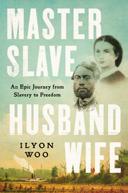
I was reading Master Slave Husband Wife as we headed into Black History Month—a time when the publishing industry typically releases more works than usual addressing African American life past and present. I’ll add the caveat that we should publish and read Black history all 12 months of the year; as James Baldwin put it, “The history of America is the history of the Negro in America. And it’s not a pretty picture.” Here are some other new releases to add to your Black History reading list, alongside Woo.
I Saw Death Coming: A History of Terror and Survival in the War Against Reconstruction by Kidada E. Williams (Bloomsbury, Jan. 17): Scholarship of recent years, including the Kirkus Prize finalist By Hands Now Known by Margaret A. Burnham, has helped us to better understand the failure of Reconstruction in the wake of the Civil War. This book adds to that picture by focusing on anti-Black violence—and Black resistance—during the period.

Driving the Green Book: A Road Trip Through the Living History of Black Resistance by Alvin Hall with Karl Weber (HarperOne, Jan. 31): The Negro Motorist Green Book, which guided at least two generations of Black travelers to safe motels, restaurants, and stores during the Jim Crow era, became more widely known after the Oscarwinning 2018 film Green Book. Here, a broadcaster hit the road to visit some of these sanctuaries and talk with those who lived through the time.
Saying It Loud: 1966—The Year Black Power Challenged the Civil Rights Movement by Mark Whitaker (Simon & Schuster, Feb. 7): The former editor of Newsweek zeroes in on the pivotal year when activist Stokely Carmichael coined the term Black Power—with far-reaching effects for political organizing, art, music, fashion, and other realms of American life. In a starred review, our critic calls the book an “essential volume in the history of Black liberation movements.”
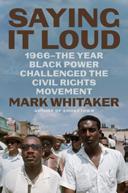
Frequently Asked Questions: www.kirkusreviews.com/about/faq
Fully Booked Podcast: www.kirkusreviews.com/news-and-features/contenttype/video-interviews
Advertising Opportunities: www.kirkusreviews.com/book-marketing
Submission Guidelines: www.kirkusreviews.com/about/publisher-submissionguidelines
Subscriptions: www.kirkusreviews.com/magazine/subscription Newsletters: www.kirkusreviews.com
| kirkus.com
Chairman HERBERT SIMON
President & Publisher MARC WINKELMAN #
Chief Executive Officer MEG LABORDE KUEHN mkuehn@kirkus.com
Editor - in- Chief TOM BEER tbeer@kirkus.com
Chief Marketing Officer SARAH KALINA skalina@kirkus.com
President of Kirkus Indie KAREN SCHECHNER kschechner@kirkus.com
Managing/Nonfiction Editor ERIC LIEBETRAU eliebetrau@kirkus.com

Fiction Editor LAURIE MUCHNICK lmuchnick@kirkus.com
Young Readers’ Editor LAURA SIMEON lsimeon@kirkus.com
Young Readers’ Editor MAHNAZ DAR mdar@kirkus.com
Editor at Large MEGAN LABRISE mlabrise@kirkus.com
Senior Indie Editor DAVID RAPP drapp@kirkus.com
Indie Editor MYRA FORSBERG mforsberg@kirkus.com
Editorial Assistant of Indie PAOLA BENNET pbennet@kirkus.com
Editorial Assistant of Indie LEAH BLOCK lblock@kirkus.com
Editorial Assistant NINA PALATTELLA npalattella@kirkus.com
Mysteries Editor THOMAS LEITCH
Contributing Editor GREGORY McNAMEE
Copy Editor BETSY JUDKINS
Designer ALEX HEAD Kirkus Editorial Senior Production Editor ROBIN O’DELL rodell@kirkus.com
Kirkus Editorial Senior Production Editor MARINNA CASTILLEJA mcastilleja@kirkus.com
Publishing Promotions Manager RACHEL WEASE rwease@kirkus.com
Advertising Associate AMY BAIRD abaird@kirkus.com
Author Consultant JESSICA PACK jpack@kirkus.com
Graphic Designer KYLA NOVAK knovak@kirkus.com
Renowned physicist Michio Kaku explains the mind-blowing potential of quantum computing. Read the review on p. 60.
Don’t wait on the mail for reviews! You can read pre-publication reviews as they are released on kirkus.com even before they are published in the magazine. You can also access the current issue and back issues of Kirkus Reviews on our website by logging in as a subscriber. If you do not have a username or password, please contact customer care to set up your account by calling 1.800.316.9361 or emailing customers@kirkusreviews.com.

The Kirkus Star is awarded to books of remarkable merit, as determined by the impartial editors of Kirkus.
Adjei-Brenyah, Nana Kwame Pantheon (384 pp.)
$27.00 | April 4, 2023
978-0-593-31733-4
An acerbic, poignant, and, at times, alarmingly pertinent dystopian novel ravages two malign institutions: one involving privately owned prisons, the other feeding America’s addiction to violent sports.

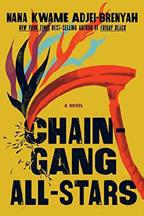
In his debut short story collection, Friday Black (2018), AdjeiBrenyah displayed a prodigious flair for deadpan satiric narratives set in alternate realities that often seem uncomfortably close to our own, especially regarding race and class divisions. With his first novel, he proves he can sustain his outrage, imagination, wit, and compassion for a deeper dive into the darker reaches of the American soul. As with the earlier stories, the novel is set not in the future but in a warped vision of the present in which a private consortium called Criminal Action Penal Entertainment produces duels to the death between convicted murderers before packed arenas and TV cameras. CAPE’s two most charismatic and successful gladiators are women: Loretta Thurwar and Hamara Stacker, aka Hurricane Staxxx, who are also lovers. Staxxx, who tends to weep copiously after each bloody victory, is dreading the ever nearer day when Loretta will earn her freedom, having survived and triumphed with CAPE for three years under the terms established for “clemency, commutation of sentence, or a full pardon” under the Rightful Choice Act. Protestors show up outside every CAPE death match to protest that law and the whole penal system in an all-out movement to repeal it. Meanwhile, CAPE’s corporate masters tighten their hold on the status quo (and keep their TV ratings up) as Loretta struggles against mounting odds to help Staxxx and other gladiators of varied races and genders achieve relative dignity within their imprisonment. Adjei-Brenyah displays his impressive range of tone and voice as he deftly manipulates several points of view through shifting time periods; all the while, he maintains control over the elements of his dreaded alternate America, using footnotes and asides to elaborate on the laws and customs of this world but also making direct and similarly detailed connections to the real-life, present-day state of the nation’s mass incarceration system with its brutalities and injustices. It is an up-to-the-minute j’accuse that speaks to the eternal question of what it truly means to be free. And human.
Imagine The Hunger Games refashioned into a rowdy, profane, and indignant
Argy, Julia
Putnam (304 pp.)
$27.00 | April 18, 2023
9780593542781
Who has what it takes to be a media sensation wife?
Twenty-four-year-old Emily Boylan has never seen The One, a ringer for The Bachelor, but she has just been fired from her dead-end job when a recruiter spots her on the street. In no time, she’s entering the bizarro world of reality TV, stepping out of a limousine—one of a long line of limos filled with women—and meeting Dylan Walter, the show’s potential love interest. Emily’s star quickly rises thanks to her producer, Miranda, who believes she will clinch the end-of-show proposal and works hard to make it so. And Emily befriends a group of contestants who keep her (relatively) sane and up to speed, developing a particular fondness for savvy Sam with the secret, tragic backstory. The women have no say in how their days go, so they have a dreamlike quality: There’s extreme boredom, a helicopter ride, rule changes, and having to repeat themselves for the camera (they get unnervingly good at rephrasing their feelings in reality TV patois). Emily is a pliant good girl who goes along with everything yet cannot justify to herself why, try as she might. Does she want to marry Dylan, or is she just supposed to? A moment when the bubble breaks and the show learns of an unrelated mass shooting by an incel doesn’t do quite enough for the themes or plot to justify its inclusion. However, debut novelist Argy is fantastic at showcasing the subtle power dynamics among Dylan, the women, and the producers in all iterations. Alternating chapters from Miranda’s shrewd perspective illuminate the extent of her control, which is extreme but not complete. She cannot, for instance, prevent the growing bond between Emily and Sam that threatens her narrative. A reality TV novel stripped of fluff and fantasy.
Atwood, Margaret
Doubleday (272 pp.)
$30.00 | March 7, 2023
9780385549073
The celebrated author’s first collection of short fiction since Stone Mattress (2014).


Atwood is, of course, one of the most celebrated Anglophone writers working today. She has been nominated for the Booker Prize six times and has won it twice—for The Blind Assassin (2000) and The Testaments (2019). The Handmaid’s Tale (1985) is a groundbreaking work of science fiction that should be on anybody’s list of the best—or, at least, most important—books of the 20th century. Her new collection of short stories is a mixed bag. The first section is a series of interconnected narratives centered
around married couple Tig and Nell. “First Aid” begins with Nell coming home to find a trail of blood leading from an open front door into the kitchen. It ends up being a sweetly melancholy meditation on living in a world designed to kill us. “Two Scorched Men”—Nell’s account of getting to know two World War II veterans who are friends while she’s in France—is a fine story but an odd fit with the preceding work. In “Morte de Smudgie,” Nell rewrites Tennyson’s elegy for King Arthur for her dead cat, and the less said about this, the better. The middle section of this book is a hodgepodge of pieces that feel like experiments, exercises, and false starts. It’s hard to escape the feeling that they are gathered here simply to fill enough pages to make a book of reasonable length while the Hulu series based on Atwood’s greatest work is still in production—or while the author is still semi–internet famous for creating a Twitter flap about gender. This is too bad because, when Atwood returns to Nell and Tig, she offers a powerfully affecting quartet of stories in which Nell navigates widowhood—the best of these is the eponymous story that first appeared in the New Yorker Honest and artful depictions of aging and loss—plus some other stuff.

I don’t think of myself as a big reader of historical fiction, but one of my favorite experiences is trying the first few pages of a book set in a time and a place I don’t think I’m interested in and getting swept away.
Prime example: Wolf Hall. Other examples: Rose Tremain’s The Colour, about the 1860s New Zealand gold rush, and Danielle Dutton’s Margaret the First, about an English noblewoman who sided with the monarchy during the 17thcentury civil war.
Jac Jemc’s new novel sounds alluring in a similarly surprising way. Empty Theatre (MCD/Farrar, Straus, and Giroux, Feb. 21) imagines the lives of two (real) royal cousins—Ludwig II of Bavaria and the Empress Elisabeth of Austria—as they “chafe against the constraints of power even as the world around them seeks to strip that power away,” according to our starred review. Born into a life of extravagant privilege, Elisabeth never expected to become a broodmare for her husband, Emperor Franz Joseph, having to behave with rigid propriety at all times. Ludwig, meanwhile, would rather indulge his passions for art and beauty than manage the political needs of his country. “Sensual, intricate, and filled with the verve of its own opulent language, Jemc’s retelling of these apocryphal lives delivers all the urgency of their time into our own without losing any of the fidelity it owes to their real legacies,” our review says. “This novel is a triumph.”
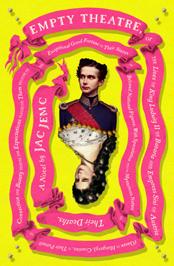
Kai Thomas’ debut novel, In the Upper Country (Viking, Jan. 10), is full of stories exchanged by two women under difficult circumstances. It’s 1859 in the Canadian town of Dunmore, and a woman named Cash has shot a man who was hunting her under the U.S. Fugitive Slave Act. Lensinda Martin is a young Black newspaper reporter who interviews her in jail, hoping to help her legal case. But Cash wants to trade: “Will you barter with me? A tale for a tale?” According to our starred review, “So

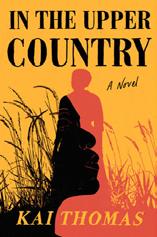
begins a beguiling exchange of personal stories that will draw surprising links between Sinda and Cash while dipping into slave narratives that highlight historical relations between Blacks and Native Americans.…An exceptional work that mines a rich historical vein.”
Paul Harding has based his third novel, This Other Eden (Liveright, Jan. 24), on real events that took place on a tiny island off the coast of Maine in 1912. Harding’s Apple Island was settled in 1793 by a formerly enslaved Black man and his White, Galway-born wife. Over the next century, their descendants were joined by people from Angola, Cape Verde, and Scotland as well as a Penobscot family and, in the summers, a retired White teacher who rowed his boat out every morning to school the island’s children and preach—and whose presence began a series of events that led the Maine authorities to evacuate the island and institutionalize some of its residents, spurred by the “science” of eugenics. Our starred review called the book “a moving account of community and displacement.”

The End of Drum-Time by Hanna Pylväinen (Holt, Jan. 24) opens in 1851 in a church in the north of Sweden as a Lutheran preacher known as Mad Lasse tries to turn the Sámi reindeer herders toward his religion. Meanwhile, as our starred review said, “one of his daughters falls in love, the local shopkeeper laments his choices, a local woman breaks her engagement, and the Sámi herders prepare to drive their reindeer to the sea on their traditional route. Pylväinen seamlessly moves among different points of view, giving rich and satisfying breadth to a story of cultural upheaval.” The Russians get involved, too, and this book seems certain to appeal to fans of Julia Phillips’ Disappearing Earth.

Beanland, Rachel
Simon & Schuster (384 pp.)
$27.99 | April 4, 2023

9781982186142
Beanland imagines how the devastating Richmond Theater fire, which killed 72 people on December 26, 1811, impacted several survivors, some more fictionalized than others.
The novel, which faithfully follows the recorded facts, begins backstage at the theater, where a teenage stagehand raises a chandelier lit with candles that sets the scenery on fire. Soon theatergoers are rushing to escape. Patrick Henry’s daughter Sally Henry Campbell, at the time a 31-year-old widow, selflessly saves those around her before jumping from a window. While nursing wounded survivors over the next few days, she learns that men she knew deliberately trampled over women to get to the stairs, and she concludes that White men of her privileged class are morally bankrupt in their behavior toward both White women and enslaved Black people. While Sally is trapped inside the theater, Gilbert Hunt, an enslaved blacksmith who has secretly learned to read and write, stands outside catching women who jump. While Gilbert is touted as a hero and one of the women he saved raises money to pay for his manumission, the theater company, afraid to take the blame itself, spreads rumors pinning responsibility for the fire on a “slave rebellion.” (The actual Gilbert, though also lauded, actually purchased his freedom years later.) Soon the slave patrol, headed by Gilbert’s owner, is rounding up Black people. Meanwhile, Gilbert’s niece Cecily Patterson decides that the fire, specifically all the bodies burned beyond recognition, might spell freedom if her owners believe she died. Beanland adeptly jumps among the characters’ stories and delights in conveying details of everyday life in 1811 Virginia. But she’s heavy-handed in using the story to emphasize the evils of slavery, racism, and sexism. Locked within the author’s political message, characters like the progressive Sally, saintly Gilbert, and a variety of evil White men lack dimension. Only the young stagehand Jack Gibson is allowed to express the human complexity of moral decision-making as his sense of right conflicts with loyalty to his theatrical family.
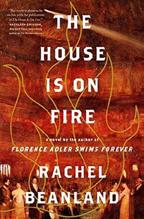
An overly schematic approach to what could have been a fascinating retelling of history.
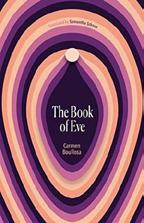
Boullosa, Carmen
Trans. by Samantha Schnee
Deep Vellum (252 pp.)
$17.95 paper | March 21, 2023
9781646052240
Eve explains what happened in Eden—and afterward.
Boullosa’s latest novel is a retelling of the story of Eve—yes, that Eve. The
novel begins with the Garden of Eden and ends with the Tower of Babel; in between, Eve explains what really happened and how that truth got all twisted and tangled. To start: She wasn’t made from Adam’s rib, and there wasn’t any serpent. Those are just lies that Adam spread: “Adam insisted upon his version of history, continuing to repeat his stupid lie,” Boullosa writes.
“Adam stole the true story of our origins.” Boullosa’s goal here— a feminist reclamation of one of the world’s oldest stories— might be admirable, but the result frequently feels didactic and, at times, even trite. Boullosa clearly wanted to replace Eve’s shame with pleasure in sensual things, but her prose in these parts becomes flat and repetitive; she simply repeats the word pleasure. So, for example, Eve feels “unparalleled pleasure, pleasure greater than you’d think the senses could perceive.” As a whole, the book feels less like a novel than a thinly veiled manifesto. Then, too, because there is no plot, the book has a shapeless on-and-on quality that quickly becomes tedious. Eve simply goes on describing things. As a frame for the work, Boullosa has chosen to present Eve’s narration as if it were a lost manuscript. Sections are followed by miscellaneous “papers,” which
hold additions to and alternative versions of Eve’s story—some “written” by Eve herself, some by other characters (like Adam and Cain, for example). This gimmick strains credulity to the breaking point.
This retelling is too indebted to its own ideological arguments to come alive as a work of art.

Byl, Christine
A Strange Object (300 pp.)
$25.95 | March 14, 2023
9781646052295
A debut novel chronicles the lives of a father and daughter in Montana.
Early on in Byl’s novel, artisan Josiah Kinzler explains the dangers of playing with matches to his daughter Cody, then 9. “Cody. Every fire starts small,” he says,
in a phrase that reads like a statement of purpose for the rest of the book. The novel begins in 1985 and follows the Kinzler family—primarily Josiah and Cody but also Cody’s sister, Louisa, and their mother, Margaret—over the decades that follow. While the bulk of the book is told from an omniscient point of view, some chapters offer first-person accounts from different members of the cast, major and minor characters alike. This can be revealing—there’s a contrast between Cody as seen from a distance and the more informal, irreverent tone of her narration, for instance. Josiah remains an intriguing and enigmatic figure, haunted by his mother’s suicide and his own feelings of depression. Late in the book, when characters read a letter from him, his reference to “what’s broken in me” puts some of his previous actions in another context. But he also has moments of bliss throughout—as when he takes on as an apprentice a man named Freddy, who soon becomes something more. It’s here that the first-person sections truly click. “Many times I’ve stayed with my back to him longer than needed, to savor his footsteps closing the distance between us,” Freddy thinks—an elegant image that gives a sense of the intimacy they share. At

the last tale of the flower bride
times, though, the novel’s pacing doesn’t entirely click—but the sense of community, family, and buried secrets at its heart is almost tactile in its presence.
A deeply felt, unconventionally told family story.

Callanan, Liam
Dutton (336 pp.)
$28.00 | March 14, 2023
9780593184073
An encounter with an endangered convent in Rome prompts a middle-aged American woman to consider whether she is called to be a nun.
After the nuns at a Milwaukee convent provided emotional care for her following her mother’s death when she was 12, Claire Murphy dreamed of becoming one herself. Instead, she went to Yale, became a single mother, and sold real estate with her friend Monica, focusing particularly on decommissioned religious buildings. When a group of American nuns in Rome reaches out looking for help in finding a buyer who will take over their beautiful convent building but let them stay there, Claire, now 52, flies to Rome, where she begins to wonder if she is meant to take vows after all. But she also wonders about Marcus Sardeson, the man she fell in love with at Yale and just saw at their 30th reunion. Unbeknownst to Marcus, Claire never let herself get involved with him romantically after he had a health scare and she made a deal with God to save him. In Rome, Claire struggles to sort out her next steps, torn between life in America and ties with Marcus, Monica, and her adult daughter, Dorothy, and the Sisters with whom she’s found emotional refuge in Rome, and wondering whether she’s truly called by God or looking for community. Her choice becomes even harder when Marcus pursues her to Rome, accompanied by Dorothy and Monica. Callanan writes a richly drawn story about a woman feeling lost in her own life and finding unexpected connections, with a lively cast of supporting characters. Though the pace slows noticeably at times, Claire’s confusion and indecision only make her more relatable, especially since she never becomes maudlin.
A quiet and ultimately joyous depiction of self-discovery against a vibrant Roman setting.
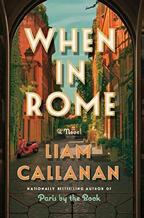

Chokshi, Roshani
Morrow/HarperCollins (304 pp.)
$27.99 | Feb. 14, 2023
9780063206502
In Chokshi’s gothic fairy tale, a poor academic marries a glamorous heiress who makes him vow not to search for her secrets.
A fairy-tale scholar known only as “the bridegroom” meets the mysterious,
fabulously wealthy Indigo Maxwell-Casteñada when he asks to see a rare book from her family’s private collection. Almost immediately, he and Indigo embark on a whirlwind romance fueled by their mutual love of stories. But despite her passion for him, Indigo keeps the bridegroom at a distance, making him promise never to dig into her past. Then, when Indigo gets word that the aunt who raised her is dying, she and the bridegroom return to her childhood home, the House of Dreams. The mysterious mansion is bursting with Indigo’s secrets, making it harder and harder for the bridegroom to keep his promise, especially when it comes to the question of Indigo’s childhood friend Azure. Azure, a working-class girl from the neighborhood, was like a sister to Indigo until they had a fight and she completely disappeared. As the bridegroom dives further into Indigo’s past, he realizes he may be at risk of disappearing, too. Chokshi’s novel is a true fairy tale, both in its poetic, fantastical imagery and its thematic interest in the price people pay for freedom and love. The parallels between the bridegroom and Azure as mere mortals faced with Indigo’s impossible privilege, and the connection between Indigo and Azure as young girls
“A
enamored with creating their own magic, make the tension bubble higher and higher until it boils over. And as in the best folktales, the issues at the crux of the otherworldly struggles here are simply, and painfully, human.
A singular, unforgettable tale of love and magic.
Clark, Mary Higgins & Alafair

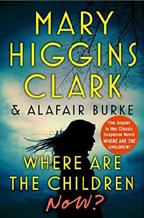
Burke
Simon & Schuster (288 pp.)
$26.99 | April 18, 2023
9781982189419
How do you extend the oeuvre of a deceased author who mostly avoided continuing characters? Burke, who collaborated with Clark on several novels before her passing, comes up with a most ingenious way.
In Where Are the Children? (1975), Clark’s very first novel, Melissa and Mike Eldredge were kidnapped by their mother’s ex-husband. A generation later, Melissa is a seasoned prosecutor whose high-profile success in getting the murder conviction of an abused woman vacated launched her on a second career as a true-crime podcaster. She’s just married geologist Charlie Miller, who’s been raising his 3-year-old daughter, Riley, by himself since the accidental death of his first wife, Linda, soon after the girl’s birth. History repeats itself in the most traumatic way imaginable three months later when Riley vanishes shortly after Melissa is confronted by an unfamiliar woman at the playground: “I know all about you,” the stranger had said. “You’re a fraud. And a hypocrite.” Since Charlie, who’s off on a job in the Caribbean, has a solid alibi, Suffolk County Detectives Heather Hall and Guy Marino perversely fasten on Melissa as their most likely suspect. Worse yet, Grant Macintosh, the friend and former colleague Melissa asks to step in as Charlie’s lawyer on his return to Long Island, informs her that his responsibility to Charlie limits the help he can provide her and even the contact he can allow between the spouses. And Charlie himself seems ever more distant from Melissa, who feels painfully ripped away not only from her stepdaughter, but from her family, her friends, and her bridegroom. Whom can she possibly trust at this moment of supreme stress—and will her trust be repaid or betrayed?
An expertly twisted sequel fully worthy of its celebrated original.
Cline, Emma Random House (304 pp.)
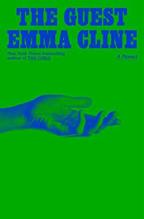
$23.99 | May 16, 2023
9780812998627
A week in the life of a 22-year-old grifter in the Hamptons.
Cline does pretty-but-creepy like no one else and now takes her brand of alluring ickiness to the wealthy enclaves of Long Island (the location is unnamed but clearly recognizable) in the last week of summer. We meet Alex swimming in the ocean, high on painkillers she’s stolen from her man of the moment, a “civilian” named Simon who doesn’t know Alex is a working girl and who has invited her to spend the month of August at his place “out east.” She floats along thinking about the pile of shoes left at the entrance to the beach, “how easy it would be to take things, out here. All sorts of things. The bikes leaning against the fence. The bags unattended on towels. The cars left unlocked, no one wanting to carry their keys on the beach. A system that existed only because everyone believed they were among people like themselves.” Unfortunately, Alex makes a judgment error at a party that evening and ends up getting delivered by Simon’s personal assistant to the train station. But she can’t go back to the city—her roommates have kicked her out, she’s no longer welcome in certain restaurants, and there’s a dangerous man who is very, very angry with
her. Instead of boarding a train, she attaches herself to a group arriving for a shared rental, successfully pretending to be one of the invitees. When that stops working, she finds another mark. Alex is very good at fooling others, but the trouble is that she’s also fooling herself, thinking if she can just make it until Simon’s Labor Day party at the end of the week, he’ll welcome her return. The riveted reader watches helplessly as her mistakes pile up and the sense of imminent disaster steadily soars, humming in every sentence. “Alex passed the white skeleton of a lifeguard tower.” “So many people with open, gnashing mouths and glasses in their hands, their private moons of alcohol.” Cline’s writing is an addictive treat, and if her cliffhanger ending cuts us off like a mean drug dealer, maybe cold turkey is the only way.
A propulsive read starring an irresistible antihero.

Conklin, Tara
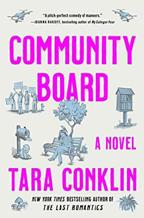
Mariner Books (272 pp.)
$27.99 | March 28, 2023
9780062959379
The story of a woman trying to isolate herself from the world and the town where she’s holed up.
It’s 2019, and 29-year-old Darcy Clipper returns to her hometown of Murbridge, Massachusetts, after her husband, Skip, leaves her for a sky diving instructor. As an only child, she hopes to escape into the comfort of her parents’ care, but when she arrives at her childhood home, she discovers her folks have moved to a retirement community in Arizona and didn’t tell her because they didn’t want to upset her. Fortunately, they’re not planning to sell their house for a while. Darcy spirals into a circle of depression, grief, and self-isolation. Her only contact is with an online community message board and a police officer who’s called to the house regularly by
“Conklin has created a heartening look at a community whose people realize they’re better together than alone.”
community board
spying neighbors accusing her of trespassing. She pages through her parents’ National Geographic collection and doesn’t leave the house all winter until she eats her way through the canned food her mother stored in the basement ahead of Y2K. Then, with only a few cans of chickpeas left, her point of view starts to shift. After a shower and a good primal scream, she decides to get more involved in the community, albeit in tiny chunks punctuated by extreme social anxiety. Searching for missing pets posted on the community board, she finds the reward money easy and the outdoor air and blooming tulips good for her mood. Her confidence lifts through her interactions with other people, including chance encounters with bird-watchers and a job working for Marcus, one of the town’s newest residents, who wants to build a public playground on an empty lot next to his house. As spring turns into summer, the community board becomes a place of threats and protests against the playground, spurred on by a corporate developer who wants to turn the land into a casino. Darcy must decide whether to take a stand or return to the walls of her childhood bedroom. Readers feel Darcy’s isolation through the first quarter of the novel and, like the main character, relax into the enjoyment of getting to know the quirky lives of those who populate the neighborhood.
Conklin has created a heartening look at a community whose people realize they’re better together than alone.
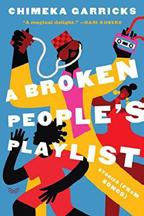
Garricks, Chimeka
HarperVia (224 pp.)
$24.99 | March 21, 2023
9780063268180
Snapshots of failed romances and busted families in Nigeria.
Each of the dozen stories in Garricks’ first collection, he explains in an author’s note, takes its title from and was inspired by a particular song, mostly by rock and R&B artists like Johnny Cash, Nina Simone, U2, and more. None of those songs are directly referenced in their accompanying stories, but the rubric serves to capture a mood and emphasize a kind of pop sensibility in the writing—Garricks aspires to craft straightforward, tightly composed studies in heartbreak. In “Music,” a 17-year-old aspiring DJ uses the dance floor to undermine his father, who left the family when he was young. The narrator of “Hurt” recalls a dying friend’s efforts to arrange and attend his own funeral before he passes. In “I’d Die Without You,” a man contemplates the aftermath of his wife’s miscarriage, while the protagonists of “Beautiful War” and “Desperado” are each facing the consequences of their infidelities. Most of the (lightly linked) stories are set in or around Port Harcourt, a Nigerian city that’s a center for the country’s petroleum industry, which offers metaphorical opportunities to explore wealth and its abuse; a number of stories also turn on the “confras,” or violent fraternities at the state university. The stories demonstrate the shortcomings of that pop sensibility—a repetitiveness creeps in, as does some sentimental prose. (“I felt the bird’s wings beating furiously where my heart used to be.”) But there are welcome moments when Garricks tweaks the formula: “In the City” is a more ambitious and tragic story involving corrupt police officers and a case of mistaken identity, and in the comic “I Put a Spell on You,” a man is consumed with paranoia over his wife’s possibly undermining his sexual performance with everyone but her. Well-turned tales of love and loss, though often playing familiar refrains.

Gopegui, Belén
Trans. by Mark Schafer City Lights (188 pp.)
$16.95 paper | March 21, 2023
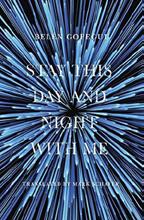
9780872868939
Two unlikely futurists co-write an unusual application to Google.
Spanish screenwriter and novelist Gopegui’s latest fiction employs a strange conceit: It’s ostensibly a job application letter to Google written
by the book’s protagonists, 60-something Olga and 22-year-old Mateo. The letter forgoes any accounting of its authors’ qualifications and instead recounts how the two came to write the strange application after meeting at a library. What passes for plot in the novel transpires almost exclusively through Olga and Mateo’s winding conversations about robots, machines, algorithms, free will, and the future. While these philosophical exchanges walk the line between tedious rambling and mesmerizing contemplation, the book’s more interesting moments occur when the narrators apostrophize Google to varying effect, at one point nearly beseeching the tech giant like a deity: “In Mateo’s house the barrages of water rush in without you even noticing.” Other times, the two assert the limitations of their finite digital overseer: “The world, Google, is still filled with conversations you can’t see.” The understated action takes a more urgent turn when it’s revealed that Mateo has hidden a homemade bomb in his storage room, but this drastic revelation is undercut by Olga’s facing a life-threatening condition. As Mateo notes, even such a dangerous device is minuscule compared to “the inevitable disappearance of loved ones.”
Timely, contemplative metafiction that overrelies on the amusing, if quickly exhausted, charm of its conceit.

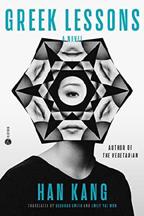
Han Kang
Trans. by Deborah Smith & Emily
Yae Won
Hogarth (192 pp.)
$26.00 | April 18, 2023
9780593595275
A woman finds herself without language at the same time that her instructor slowly loses his eyesight.
One day, in the midst of teaching a literature class, a woman finds herself unable to speak. She quite literally has no words. This has happened to her before: At 16, she’d lost language, and though she was taken to a psychiatrist and prescribed medication, she saw no change until a lesson in French—a foreign language—prompted her to regain speech. Now, things have become more complicated. “Unlike before,” Han writes, “the silence that has now returned after a period of twenty years is neither warm, nor dense, nor bright. If that original silence had been similar to that which exists before birth,
“A stunning exploration of language, memory, and beauty.”
greek lessons
book for a series. But Dimaline has some serious things to say about magic and colonization.
The author has a book for young adults coming out this year, Funeral Songs for Dying Girls (Tundra, April 4), and she’s also begun writing for the screen. Most recently, she was in the writers room for Welcome to Derry, an HBO Max series that serves as a prequel to Stephen King’s It. We spoke with the author via Zoom from her home on Georgian Bay in Ontario, Canada; our conversation has been edited for length and clarity.
As you know, contemporary witchcraft has a bit of an appropriation problem. One of the things I loved about your book is that it included so many different styles of folk magic and witchcraft from all over Turtle Island [North America] and that the characters who practice these different types of magic are actually attached to the places and the cultures where the practices originate.
All of this magic is grounded. It’s all real, right? I spent so much time traveling and talking to people from different traditions, reading old texts. Every type of magic I include in the book is rooted in a real place, in a real culture. I was insistent about it with AMC. None of my characters is going to put on a cloak and become invisible.
Cherie Dimaline’s The Marrow Thieves (2017) won multiple honors for young adult fiction, including the Kirkus Prize. That novel is informed by the author’s Métis heritage, and so is her new novel for adults. VenCo (Morrow/HarperCollins, Feb. 7) is the story of Lucky St. James, who finds a souvenir spoon from Salem, Massachusetts, that sends her—and her grandmother Stella—on a journey from the East End of Toronto to various points across North America. Along the way, Lucky discovers her powers as a witch and learns that her ultimate task is nothing less than to save the world. Part coming-of-age tale, part road story, and part thriller, VenCo is a fun read—which probably explains why AMC has optioned the

You use the words grounded and rooted, and I didn’t miss the scene in the novel where LAND BACK is spray-painted on a mailbox. The more I learn about efforts to reestablish Indigenous sovereignty throughout the United States and Canada, the more I understand how much people lose when their connection to the land is severed. Settler colonialism isn’t just about real estate.
Absolutely! Lucky is an Indigenous witch. This doesn’t give her a pass when she’s moving through landscapes far from her home. For instance, when she’s in New Orleans, she can’t just automatically use Vodou, because she hasn’t studied it,
With VenCo , the Indigenous novelist has written a truly diverse—and wildly enjoyable—novel about witchcraftWenzdae Brewster
she has no connection to it. If place didn’t matter, it would smooth out the narrative, but I’m not going to sell out real traditions. There would be no point, for me, in writing this book if I did that.
And this is, I think, the book I’ve been wanting to write my whole life. I grew up with really strong, very knowledgeable women. I was mentored by incredible women. There’s just so much I wanted to say about how we learn about ourselves through the land and through our connections and also having respect for other people’s knowledge and stories. When the pandemic hit—when we were totally isolated from each other—I started thinking about community.
You know, it’s been almost two years since I moved back to my own community on the Georgian Bay. The entire shoreline where I grew up is just million-dollar cottages now, which is both heartbreaking and incredibly empowering. I kind of feel sorry for the cottagers. They’ve paid a lot of money to live here, but they clearly haven’t connected with the land, because if they had, they would treat their property in our territory very differently.
For me, though, just doing something like climbing a tree in my backyard feels like ceremony. I’m always interested in the extraordinary inside the ordinary—the ceremony of every day. That’s exciting to me. And that’s how I decided on the spoons. I needed a magic object that wasn’t, you know, some jeweled artifact. I needed something mundane, so I tried to think about really boring things. I thought about souvenirs right away—you know, throwaway culture, something that only has value because of the intent we pour into it. My mere collected souvenir spoons—which is funny because she didn’t travel, people would just bring them to her. You know what I’m talking about?
Of course. They’re spoons that you don’t actually use as spoons, which is ridiculous. Right! Anyway, I realized that I didn’t know how far back I could take the narrative until I knew about the history of souvenir spoons in North America. So, I literally did a Google search for “history souvenir spoons north america.” And the first search result was the Daniel Low & Co. Salem witch spoon—
Wait. The spoons in VenCo are real? Yes! I have one right here!
That’s fantastic.
It gets better! So, Daniel Low runs a jewelry shop in Salem. In 1892, his son Seth gets invited to Germany and ends up in the region around the Brocken—the mountain where the witches gather for their Sabbath once a year. As soon as Seth
gets back, the Lows start producing these spoons commemorating the Salem witch trials. This is the first mass-produced souvenir spoon in North America. And here’s the thing about the Low company’s shop: It started out in the basement of a church in Salem that was a meetinghouse where the witch trials were held.
So, yeah. When that pops up, I was, like, All right, universe. I get it. I guess I’m gonna write this witch story.
I wonder if we can talk about Stella. When I realized that she would be tagging along as Lucky went on her quest, I was annoyed. I did not want to go on an adventure saddled with a high-maintenance old lady. But as the story progressed, I realized that I needed to have a little more respect for my elders, and I realized that—of course—she had to be there.
I have a lot of writer friends who make everything out. They have charts and grids, and their offices are tidy. That is not me. I get an idea, I get obsessed, and I fall down a rabbit hole— and I mean a real rabbit hole with a lot of branching tunnels, and, from there, I have to write my way out. So, when I got to the point where Lucky starts her journey, I really didn’t want Stella to go. I didn’t want Lucky to have to take care of her. But, as I kept writing forward, Stella just kept being there. It was superannoying at first, but I finally realized that I needed to pay attention to her. As I started to figure out who she was, I understood why she just wouldn’t go away.
I can tell you that when I was first talking about the story, no one thought for even a second that Stella was in any way important. They had the same initial reaction that you and I did: They rolled their eyes and asked, “Does she have to be here?” And I asked them to please just finish the book.
Jessica Jernigan is a writer and editor who lives and works on Anishinaabe land in Central Michigan. VenCo was reviewed in the Jan. 15, 2023, issue
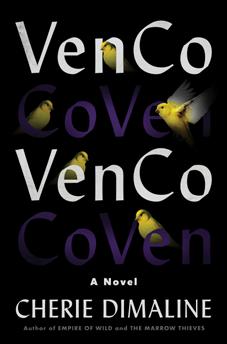

blue hour
this new silence is more like that which follows death.” Now the woman has been married and divorced; her mother has recently died; and she has lost custody of her son. She begins taking a class in Ancient Greek; perhaps she’ll be able to find language again, as she did as a teenager. Han is the author of The Vegetarian (2016), and her latest novel is another stunning gem: quiet, sharply faceted, and devastating. The woman’s story alternates with that of her Greek teacher, who has been slowly and steadily losing his sight for almost two decades. Now he is nearly blind. Born in Korea, he’d moved to Germany with his family as a child and only returned to his native country—and his native language—as an adult. Both characters are achingly alone, disconnected, in their own ways, from the world. Eventually, gradually, they do find a kind of connection with each other. But it’s Han’s exploration of their limitations—both linguistic and visual—that makes the novel so deeply moving. On page after page, she describes ever so meticulously the ways we are cut off from the world even as we yearn for it.
A stunning exploration of language, memory, and beauty from an internationally renowned writer.
Harrison, Tiffany Clarke
Soft Skull Press (160 pp.)
$15.95 paper | April 4, 2023
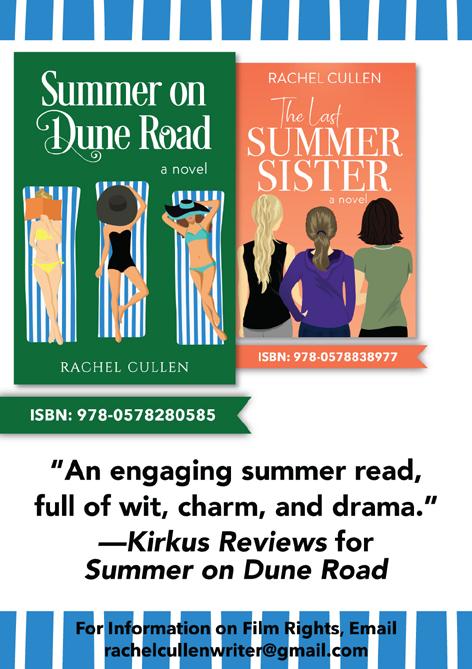
9781593767495
A biracial woman contemplates motherhood, grief, and being Black in America.
The unnamed narrator of Harrison’s debut novel is a 34-year-old Black Japanese photographer and teacher who is struggling with infertility and an increasingly complicated relationship to motherhood. Slipping back and forth in time, the slim novel follows the narrator’s stream-ofconsciousness thoughts and meandering memories. The narrator blames herself for a life-altering family tragedy and struggles to believe she deserves good things, including, and perhaps most especially, a child. Between attending therapy sessions and police brutality protests, the narrator remembers falling in love with her husband, Asher Fromm, her recent miscarriage, the agony of her young adulthood, and teaching her photography students, including a talented Black student named Noah. When Noah is shot by police while reaching for a candy bar in his back pocket, the narrator begins to question whether she wants to bring a baby into this world—into a country that murders Black children—despite it being all her husband (who is White and Jewish) wants. Her once-staunch stance against motherhood and marriage changed when she met him, but in the face of her allconsuming grief she asks: “Could my malfunctioning body and the reality of this American nightmare change it back?” As the couple figures out how to move forward after loss, the narrator finds herself secretly visiting Noah in the hospital, working on a new documentary project, and, against all odds, pregnant again. Harrison’s writing is unflinching throughout, but the depictions of miscarriage and infertility—and their effect on a marriage— are particularly haunting: “The light is perfect, and you are far away in some honest, uncharted place. I don’t know where, only that I can’t get there. Not even with directions, a compass, or you holding my hand.” In the vein of Jenny Offill and Raven Leilani, Harrison’s debut offers an intimate slice-of-life portrait with no easy questions or answers.
A poetic novel that dances on the edge of hope and despair.
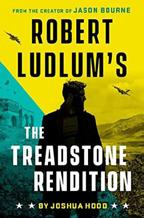
Hood, Joshua Putnam (352 pp.)
$29.00 | April 4, 2023
9780593419823
The rocket-propelled fourth installment in Robert Ludlum’s Treadstone series starring Adam Hayes.
The American presence in Afghanistan is crumbling fast. The Taliban is rapidly taking control, with
“A
help from some corrupt Americans. Ex–Navy SEAL Dominic Porter has made a tidy sum by stealing American military equipment and selling it to the enemy. Now it’s time for him to go home and put this all behind him, and he wants to cover his tracks by killing everyone he has ever done business with. “All that remained was covering up the evidence,” he muses, “burying the haji bastards who knew what he’d done.” But he notices a witness taking a video of one of his crimes, and if it becomes public, he will be imprisoned or worse. Then ex-Treadstone operative Adam Hayes receives a desperate plea for help from Abdul Nassim, who’d taken the video and knows he’s being hunted. Nassim had saved Hayes’ life 10 years ago, and now it’s time to return the favor. Luckily, Hayes is a man of honor, skill, and bravery, and he will stop at nothing to save his friend and his family. Desperate for assistance, Hayes begs a favor from an unfriendly Treadstone contact: “He’s being hunted, Levi. By Americans. One of us.” You can bet that Treadstone favor will come at a cost. Oh, and there’s a thumb drive with a terabyte of data that Porter will kill to get. Guess who has it? Meanwhile, Porter has been dealing with the bloodthirsty Taliban commander Mohammed Ghul, who seems
like he’s willing to kill just about anybody. He’s a ghoul, all right. In the best tradition of military thrillers, the story is one damn thing after another—plenty of intense action interspersed with fear and anticipation. The novel captures a sense of the deep chaos wrenching Afghanistan as American forces departed and the troops they tried so hard to train disappeared into the desert. First-class excitement for thriller fans.
Huang, Ling Ling
Dutton (272 pp.)
$27.00 | April 4, 2023
9780593472927
In this debut novel, a former pianist takes a job at a groundbreaking holistic wellness company, where she learns the extent to which her new employers will go to make their privileged clients happy.

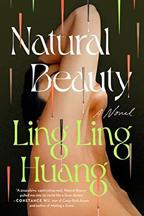
The unnamed narrator of the book—who eventually takes the name Anna when her employers claim her given Chinese name is too complicated—is the daughter of immigrants who fled China following the Cultural Revolution. Her parents worked as piano teachers, and when the narrator shows skill at the instrument, they devote their limited time and energy to helping her develop it. That skill eventually lands her a place at the prestigious Conservatory in New York City, where she is shunned by her peers due to her talent and bullied for her lack of wealth. When returning to New Jersey following one of her recitals, her parents are in a devastating car accident that requires they be placed in a care facility, and the narrator stops playing piano to take on minimum wage jobs to pay for their care. But when Saje, the face of the wellness company Holistik, comes into the restaurant where the narrator is working and offers her a job, her life begins to change. Given the most cutting-edge supplements and treatments, the narrator begins to see her own body morph into a Westernized ideal of beauty. But as she becomes more enmeshed in Holistik—becoming friends with the owner’s niece, taking on additional tasks that show her parts of the company others don’t see—she begins to question the moral core of what they do. This dystopian horror story poses questions
about race, wellness culture, privilege, and beauty, but it struggles to do so in a way that provides deep consideration. A lack of setup makes the story hard to follow; the author rushes key aspects, from details such as what gift the narrator is given by a friend to larger considerations such as why a stranger offered the narrator a job on the spot that she accepted without question. Although it will keep the reader guessing, this novel ultimately moves too quickly to provide a satisfactory payoff on the many mysteries it lays out.

The sinister side of the wellness industry is rich ground for a horror novel, but this debut falls short.

Jance, J.A.
Gallery Books/Simon & Schuster
(352 pp.)
$27.99 | March 14, 2023
978-1-982189-15-0
Cybersecurity expert Ali Reynolds has to stand aside for an army of other sleuths across several states to thwart the murderous plans of a recently paroled criminal out for revenge.
Even if you don’t count his abusive treatment of Danielle Lomax-Reardon, his lover, former Pasadena cop Frank Muñoz began his crime spree even before being released from the Lompoc Federal Correctional Complex, where he’d been confined since he confessed to tipping off the powers behind a moneylaundering club that they were about to be raided. Funded by the shadowy figures who’d promised him $500,000 if he did his time without naming names, and working with well-connected Lompoc lifer Salvatore Moroni, he’d arranged hits on Danielle and Jack Littleton, one of two fellow Pasadena cops who’d agreed to testify against him. Once he’s out, he relocates to Las Vegas with plans to hire lowlifes to kill Hal Holden, the other cop, who’s now retired and running a shuttle service, and Sylvia Rogers, the wife who’d divorced Frank, remarried, and moved outside Portland to be with her more loving second husband. When the men hired to kill Holden crash into his car, he’s carrying B. Simpson, Ali’s husband and partner in High Noon Enterprises, leaving both men critically injured but not dead and drawing Ali into a case that eventually attracts official scrutiny from Arizona, California, Nevada, Oregon, Washington, and Minnesota, leading to “a jurisdictional free-for-all.” As Jance multiplies subplots and characters, introducing new backstories as late as Chapter 65, her reliance on High Noon’s all-but-sensate AI helper, Frigg, seems to edge her ever closer to the futuristic world of J.D. Robb.
Teems with as many details as the phone book and not much more engaging. Less breadth, more depth, please.

Johnson, Sadeqa
Simon & Schuster (384 pp.)
$23.99 | Feb. 7, 2023
978-1-9821-9736-0
Two ambitious young Black women struggle with the consequences of unplanned pregnancies in post–World War II America.
Ruby Pearsall, one of the two main characters of this historical novel, wants to become a doctor. She’s only 14, but she’s already set herself on the path to her dream as a student in a demanding special program that she hopes will earn her a college scholarship. Her mother is indifferent, her father absent, but Ruby has her own determination and the warm support of her Aunt Marie, a nightclub performer who takes the girl in when her mother kicks her out. Distraction strikes, though, in the person of Shimmy, the son of Aunt Marie’s Jewish landlord, who falls madly in love with Ruby despite her efforts to remind him of the perils

of interracial romance in Philadelphia in 1949. Eleanor Quarles, the book’s other main character, is a few years older than Ruby. She’s already in college, at Howard University in Washington, and happily starting to pursue a career as an archivist in the school’s library. It’s there that she meets William Pride Jr., a handsome, charming medical student whose attention to her seems almost like a dream—until she meets his family. They’re part of the city’s wealthy, accomplished Black elite, and Eleanor, who’s from a blue-collar family in small-town Ohio, feels out of her element. What’s more, unlike Eleanor, almost everyone in William’s social orbit is light-skinned enough to pass for White. William’s ferociously snobbish mother, Rose, does not see Eleanor as a potential bride for her son, but William is in love. Both young women get pregnant. For Eleanor, that leads to marriage but not happiness; for Ruby, it leads to a stint in a nightmarish maternity home for unwed mothers. The events that will create a bond between the two are telegraphed a little too early, and the plot sometimes bogs down. But the engaging main characters and wealth of historical detail carry the novel forward.
An empathetic and sobering look at the price women of the 1950s sometimes paid for desire.
white cat, black dog
ROMBO
Kinsky, Esther
Trans. by Caroline
SchmidtNew York Review Books (232 pp.)
$16.95 paper | March 14, 2023
9781681377247
Rooted in historical events, destruction, loss, and renewal endure on both the human and geological scales.

In May 1976, in the mountainous region of northeastern Italy home to descendants of Slavic peoples who had crossed the Julian Alps centuries before, an earthquake destroyed homes, killed almost 1,000 people, and leveled entire towns. As she did with the countryside outside Rome in her previous novel, Grove (2020), Kinsky painstakingly depicts the landscape in precise, understated prose, elegantly re-created in English by Schmidt. Technical and scientific description mingles with history, folklore, phenomena, ephemera, and the area’s particular culture to sculpt the region in miniature, and the author’s choices of where to alight, apposing the bucolic and the—sometimes violently— geological, conjure an uneasiness reminiscent of the restless mountain fault that split the earth. Folding in the human element of the story are the rotating accounts of seven now-adult survivors whose memories and theories weave through the narration and survey of the land. The “deep, unfamiliar, tremendous rumble [that] seems to go on for minutes before the actual quake begins” and which seems to come from inside the mountains themselves is known as the rombo and was etched deeply within the young residents. There are many similarities in their experiences, though they are distinguished by differences in their familial structures and circumstances, and the random chance of how the quake manifested in their homes and lives and how it has since settled in their memories, resulting in a prismatic examination of the event filtered through multiple perspectives. The collective efforts to survive and rebuild after the disaster deepen the sense of the area’s untamable remoteness, which in turn underscores its ties and conflicts and the precarity of its people, its very land, and everything that subsists on the thin mountain soil.
A lyrical, meticulous inquiry into the alchemy of memory.
AMERICAN MERMAID
Langbein, Julia
Doubleday (336 pp.)
$28.00 | March 21, 2023
9780385549677
A writer sells her book to Hollywood and discovers—surprise!—that she is no longer in charge.
Penny Schleeman loves her job teaching English at a public high school in New Haven, but at 33 she’s living in a studio apartment and has to get help from her parents if
she needs dental work. “It’s not my fault that it’s not feasible to have a middle-class job anymore,” she tells us. “All I want is to be a teacher.” When her novel about Sylvia, a young woman who transforms into a mermaid, becomes a surprise bestseller, it seems Penny’s money troubles are over. Her new, barracudalike film agent gets her a deal adapting her own book (“the way I make the most cash”), and she quits her job. The catch—and of course there is one—is that Penny has been teamed with two veteran screenwriters who immediately begin to advocate changes that turn Penny’s powerful asexual protagonist, who defeats an evil environmental despoiler, into a love-starved teenager who dies in the end. Penny’s account of her increasingly unhappy stint in Hollywood alternates with chapters from American Mermaid that make palpable how her novel is being travestied (and how some of Sylvia’s conflicts mirror those of her creator). Langbein, a longtime sketch and stand-up comedian, wrings some predictable laughs from the co-writers’ cringingly awful suggestions, but this is familiar stuff; Penny’s wistful recollections of how much she loved teaching are fresher and ring truer. It takes too long for the pace, and readers’ interest, to pick up as some mysterious edits to the master script convince Penny that Sylvia has swum out of her novel to wreak revenge on her enemies. The ambiguous two-part ending teasingly hints that this is possible, and Langbein gives the appealing Penny a shot at happiness on her own terms to wrap up this sharply wellwritten, but only fitfully engaging tale.
An interesting debut that has more on its mind than this first-time novelist can successfully embody in fiction.
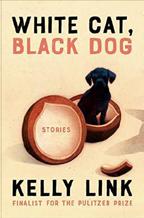

Link, Kelly
Illus. by Shaun Tan
Random House (272 pp.)
$27.00 | March 28, 2023
9780593449950
Seven modern fairy tales by a master of the short form.
Link, who won a MacArthur Fellowship in 2018, has been publishing groundbreaking fiction since her first collection, Stranger Things Happen, came out in 2001. Troubling old, stale boundaries between literary and genre fiction, writing stories that sometimes lean into horror, sometimes into fantasy, and that never shy away from featuring zombies, Link has produced a body of work that is formally original and emotionally rich. Her new collection of fairy tales is no exception. Part of the pleasure here is watching Link reimagine stories we think we know. That’s the case in “The Game of Smash and Recovery,” a futuristic SF tale based on “Hansel and Gretel,” about a sister and brother living on an alien planet alongside vampires and Handmaids (creatures who are both vicious and ingenious) and waiting for their parents to return for them. Similarly, Link reworks “Snow-White and Rose-Red” into “Skinder’s Veil,” a story about a grad student hiding out in a borrowed cabin trying to finish his dissertation
“Enchanting,
and being visited by two women named Rose White and Rose Red, who both sate and beguile him. Another pleasure is seeing Link update certain tropes. In her hands, the Grimms’ enchanted animals are still enchanted animals, but straight princes and princesses are fabulous gay men and lesbian professionals, the ominous woods are airports with endless delays or post-apocalyptic landscapes where people must travel with corpses to keep monsters at bay, characters enter enchanted states by eating gummies, and true horror is a clogged toilet. Most beguiling are the ways these stories complicate the older tales’ tidy conclusions: Is saving your lover from the Queen of Hell really noble if it means he will someday die from a disease? Is being feared by no one just as debilitating as fearing nothing? Is being brave worth the price? This is fiction that pulls you swiftly into its world and then holds you completely, lingering like an especially intense dream.
Enchanting, mesmerizing, brilliant work.
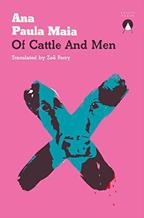
Maia, Ana Paula
Trans. by Zoë Perry

Charco Press (99 pp.)
$16.95 paper | April 11, 2023
9781913867492
In Brazilian author Maia’s second book to be translated into English, strange events upset work at a slaughterhouse.
At Touro do Milo Slaughterhouse, trucks deliver cows “tapdancing in their own faeces and urine,” and the nearby Rio das Moscas (River of Flies) is salty with animal blood. Outside the slaughterhouse people beg for rotten meat; inside, men live beside cattle. “Only the voices on one side and the mooing on the other distinguish the men from the ruminants.” Maia’s cast of characters includes no women. She focuses on Edgar Wilson, the stun operator who marks cows with the sign of the cross before hitting them with a mallet. “He believes these animals have a soul” and admits he’s
a murderer: “He knows his own violence will never allow him to see the face of his Creator.” The foreman is Bronco Gil, a “self-proclaimed hunter” who lost an eye to a vulture. There’s Helmuth, the splitter, who chain-saws cows in half. The nicest guy, Santiago, sips mushroom tea and likes electric eels. Perry adroitly translates the world of dust and blood Maia has assembled. There are no rants against the meat industry—Maia lets the facts condemn it. The pacing is quick, with threads of grim poetry: “The hue of the twilight sky resembles that of a pomegranate cut in half.” Tensions rise when cows start to miscarry, graze for food west instead of north, slam themselves into walls, and drown. The men hunt for a possible predator or cattle rustlers to no avail. The cows suddenly choose death en masse rather than be slaughtered. When asked how this could happen, Edgar surmises it’s “one abyss calling out to another abyss.”
Brutal yet gripping, as if Cormac McCarthy penned an anti-meat noir.
Milan Jr., Joe Norton (304 pp.)
$28.95 | April 4, 2023
9781324035657
A teenager in rural Washington gets tangled up in his South Korean roots.
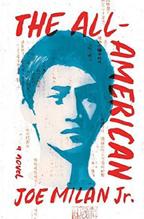
Bucky, the narrator, runs more than his fair share of high school hurdles. He’s a perpetual outsider, one of three Asians at his school, including a Korean American classmate named Chantal who keeps flipping him the bird. His birth mother died in South Korea. He’s living in a trailer home with his White American stepmom, Sheryl. She had married Bucky’s Korean birth father, but he later abandoned them. The boy has just had his hopes of a college football scholarship dashed when his Uncle Rick’s failed suicide attempt soon leads to a shooting incident that lands Bucky in jail facing policemen who suspect him of terrorism. They discover that he’s undocumented thanks to his father’s misfiled immigration documents and a bounced check. After some time in a detention center, where he must refer to himself as Bed Forty-Two, he’s flown to South Korea. He doesn’t speak the language, so he’s still a fish out of water. He learns that he’s officially a Korean citizen and faces another fresh hell: mandatory military service in his new homeland. Bucky is clever but impetuous and tends to handle challenges as if it’s third and goal, charging forward with head down, legs churning. Milan throws a lot at him, putting him through the seven stages of grief as his old life fades away and he’s pulled deeper into an ugly tale of by-the-book repatriation. Bucky could end up in the DMZ. It’s dark stuff, but Milan sustains in his narrator an amusingly bewildered, blundering, bumptious voice along with a leavening sense of absurdity. There are echoes here of Heller’s Yossarian and even of the 1966 film The Russians Are Coming, the Russians Are Coming An unusual take on undocumented immigration that makes for a strong debut.
Murray, Sabina
Black Cat/Grove (256 pp.)
$17.00 paper | March 21, 2023
978-0-8021-5749-2
Moors, mists, and mirrors: all expected in classic ghost stories. Careening cars, TV sets with minds of their own, and cellphones: Welcome to a new iteration of spectral spookiness.
Murray provides 10 updated takes on gothic ghost tales in this short story collection. Set in contemporary times, each tale riffs on tropes from the past. Along the way, children are lost to sinister (or sadly mundane) forces, and shadowy figures haunt hallways, mirrors, and run-down apartment complexes. In “Remote Control,” the young wife of a previously married older man struggles to piece together the circumstances of her predecessor’s demise in an homage to Daphne du Maurier’s Rebecca (complete with an errant TV set which might be a stand-in for Mrs. Danvers). A haunting (literally) tale of a strange mother and daughter duo encountered by a narrator years prior takes its cue from Henry James’ The Turn of the Screw as the narrative grows bleaker and more surreal with its retelling around a fireplace on Christmas Eve. Two stories, “The Dead Children” and “The Flowers, the Birds, the Trees,” rely on each other to flesh out the details surrounding the years-ago death of a young student (or students!) at a convent boarding school. Some of Murray’s characters approach their situations from a more analytic—or meta—perspective than those populating more classic ghost stories: One opines that the function of time is to make things disappear and, “without time, everything is still there.” Another muses that the dead and the living each belong in their own “place”; yet another that the dead may not even need a justification “to come back.” The cumulative effect of the parade of ghosts may blunt the surprise factor in later stories, but each tale presents a uniquely crafted poltergeist.

These are not your father’s ghost stories.

Nkrumah, Nyani
Amistad/HarperCollins (320 pp.)
$27.99 | Jan. 17, 2023
978-0-06-322661-6
In 1982, a White stranger comes to a Black rural town to research the aftermath of the civil rights movement— while concealing her own connection to it.
Twelve-year-old Ella is by far the darkest-skinned person in her family, and everyone in Ricksville, Mississippi, knows it’s because she is not the daughter of her mother’s footloose husband, Leroy. Leroy abuses her emotionally, physically, and sexually whenever he’s in town and even
“These are not your father’s ghost stories.”
muckross abbey
forbids her siblings from treating her as family. With her only ally an old, blind man named Mr. Macabe, she falls easily into an unusual friendship with newcomer Katherine St. James, a Princeton graduate student. St. James used to be Kate Summerville, daughter of a notorious Mississippi Ku Klux Klan leader who fled North with his family in the 1960s to escape justice. He went on to commit another horrific act in Boston, driving his daughter over the brink of sanity. After a stint in a mental institution, Kate emerged with a new name and a vow to devote herself to the academic study of the civil rights movement. When a Black Princeton professor warns her that she’s “shut the door on a cupboard full of hate” and that unless she does some real cleaning, “some of that hate’s going to come crawling out,” she decides to return to Mississippi and base her research there, though she goes by her changed name and does not acknowledge her roots. Either way, nobody wants a thing to do with her except poor ostracized Ella, and the story proceeds, sometimes slowly, sometimes wildly and melodramatically, from there. What looks like it could be a narrative of atonement and redemption is turned completely on its head in the

final chapters, as more details on Katherine’s involvement with her father are presented—some to the community, some only to the reader. Nkrumah seems to agree with Faulkner, who said, “The past is never dead. It’s not even past.” She leaves us without resolution on the fate of the would-be White savior but gives Ella some of the experience of fatherly love she craves, both emotionally and spiritually.
A furious look at the long tail of Jim Crow, with lively writing and a well-drawn setting. A promising debut.

Oakley, Colleen
Berkley (352 pp.)
$27.00 | March 28, 2023
9780593200803
An octogenarian and a 21-year-old college dropout form an unlikely bond as they travel across the country.
Louise Wilt has lived three lives. Currently 84, with an on-the-mend hip, she has been forced to hire young college dropout Tanner Quimby to help drive her to her various doctors’ offices and other appointments. Tanner is also healing from an injury. Falling off a two-story balcony broke her leg, ended her college soccer career and scholarship eligibility, and destroyed her dreams of playing professionally. They are an unlikely pair. And then they disappear. Jules, Louise’s oldest child, calls the police to report them missing, and much to everyone’s surprise, this leads to an FBI hunt because her mother is a suspect in a major jewel heist from 1975 who has been living under an alias since then. The story swaps among Louise’s, Tanner’s, and the FBI agent’s points of view, and shifts in time from Louise and Tanner’s middle-ofthe-night decision to leave Atlanta to the FBI’s hunt for the pair that begins after they have been missing for three days, to create an engrossing tale that is not quite what it appears to be in the beginning. The story addresses themes of aging, friendship, abusive relationships, the many forms of love, morality, the line between criminality and doing the “right” thing, and what it meant to be a woman in the 1960s and ’70s and how so much— and so little—has changed since then. Oakley manages that last part delicately, without veering into misandry: Bad men are very much bad people, but it’s not just because of their gender. Fans of the Netflix series Dead to Me will likely enjoy this take on the bonds of female friendship.
An engaging tale, told well, that looks at unlikely friendships and how doing the right thing can involve very hard choices.
Orhan, Kenan Random House (240 pp.)

$27.00 | April 25, 2023
9780593449462
Turkish American writer Orhan delivers somber, sometimes surrealistic portraits of life in Turkey in this debut story collection.
A slender sanitation worker is sent into an alley that her heftier male counterparts can’t negotiate. There she finds evidence of one draconian government decree after another: discarded books, sheet music, a violin and cello, because “the city’s orchestras and philharmonics had
been ordered to compose and perform with uniquely Turkish instruments.” Soon it’s living musicians who are being scrapped, and rescuing them comes at the price of a harsh sentence in a prison where no one—guards, inmates, bureaucrats—is free. Freedom is always a desideratum, especially under the most strangely oppressive conditions, as when a Turkish army unit is dispatched to the Kurdish borderlands with orders to kill all the mules. “We’re not in Syria, at least,” says their sergeant, but they most certainly are in a place where a soldier from one ethnic group is always ready to kill a soldier from another, even if they fight under the same flag. Mules, villagers, soldiers alike suffer; says the narrator, “The mules are looking at us, saying: Don’t kill us, don’t shoot us. And we are saying back: Don’t move so much, just die easy, OK?” When people aren’t dying of bullets and fire, they’re dying of spiritual suffocation, and sometimes literal suffocation as well, as when Orhan has the real-world dictator Erdoğan descend on a village suffering a mining disaster to dispense pabulum: “He tells us that mining accidents are typical, they are to be expected.” Orhan’s incisive and often improbable stories are more than parables, though there’s plenty of allusion and allegory tucked into the prose; they’d surely earn him jail time at home. But, one elegiac story tells us, being in relative freedom in exile (in, of all places, Kansas) takes a toll as well, with one’s native language “having become functionless through the course of evolution.”
Deliberately paced, provocative stories that play on the many faces of fear and trembling.
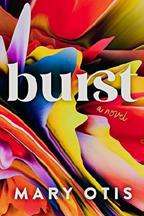
Otis, Mary Zibby Books (248 pp.)
$26.99 | April 4, 2023
9798985282825
A new spin on the theme of entwined mothers and daughters.
Debut novelist Otis follows the unstable Charlotte and her driven daughter, Viva, an aspiring dancer, from an eventful stint on Cape Cod in 1979 when Viva is 11 through the next couple of decades, with flashbacks to Charlotte’s fraught encounters with the man who will become, though he doesn’t know it, Viva’s father. Charlotte and Viva are, like many a fictional mother-daughter pair, “a society of two.” After the summer in Cape Cod, they move to California, where they stay with Charlotte’s sister. Charlotte picks up a series of odd jobs, and Viva attends a performing arts high school and then college before moving to New York to start a career. When an accident brings that career to a halt, Viva returns to California and starts falling into the same self-destructive patterns that have stymied her mother even as her mother begins to experience ever more serious symptoms of mental and physical illness. While Viva is more sympathetic as a girl and a teenager than as an alcoholic 20-something with bad taste in men and no idea what to do with her life, and the subplot involving her father seems tacked on, Otis pays rapt attention not just
“Deliberately paced, provocative stories that play on the many faces of fear and trembling.”
i am my country
to the two complicated women, but to the other characters with whom they interact, from the hippie couple with whom Charlotte shares a mutual dislike at their campground on Cape Cod to the longtime frenemy with whom Viva competes and the mean-spirited high school students she teaches in California. She steers ably away from cliché in what could easily have been a conventionally tense relationship between mother and daughter, documenting the ways in which both are distorted by the “umbilical cord” that stretches between them for decades but allowing them to be individuals with their own quirks and longings as well.

A mostly satisfying variation on a familiar motif.
Otoo, Sharon Dodua
Trans. by Jon Cho-Polizzi
Riverhead (352 pp.)
$28.00 | March 28, 2023
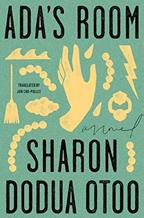
9780593539798
A woman is reborn again and again, from 15th-century West Africa to modern Europe.
Ada is a mother grieving the loss of her infant son in the year 1459 in West Africa, attended to by older women who have become family since she was ripped away from her birth family by Portuguese colonizers as a girl. Ada also lives in 1848 in London, the daughter of a famous poet and destined to become a brilliant mathematician, creating an “Analytical Engine” and thus cementing her legacy as a pioneer in computing. (Sound familiar?) But not only that: Ada is also captive in a concentration-camp brothel in 1945, entertaining “stripes” 15 minutes at a time. She is also
a pregnant woman in Brexit-era Europe, having grown up in Ghana and now about to start university in Berlin. To say this is a novel in which a single soul inhabits different bodies through time (the narrator calls these lives “orbits”) is to mightily reduce the book’s complexity and inventiveness. For example, the shape-shifting narrator sometimes takes the form of objects, including a broom, a door knocker, a room, and a British passport. Even within this already nontraditional structure, Ada’s narrative is told in a fragmented, nonlinear fashion. Several times throughout the novel, characters glimpse their reflections in surfaces overlaid with what is outside: a corpse, bare branches. This is an apt metaphor for the novel itself as layers of history accumulate, a palimpsest of upheavals that are always both personal and part of larger political forces that show the power-seeking (“the luckiest”) attempting to crush the powerless. This is a novel that demands a great deal emotionally and intellectually of the reader, but its boldness and ambition leave an indelible imprint.
A rule-shattering novel about the presentness of the past.
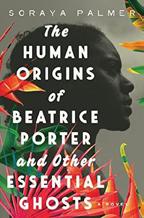
Palmer, Soraya
Catapult (288 pp.)
$27.00 | March 28, 2023
9781646220953
Two Brooklyn sisters are raised on the Anansi stories and then realize their parents lived them.
Sasha and Zora Porter are growing up in Brooklyn at the turn of the millennium. They exchange HitClip cartridges and watch Buffy the Vampire Slayer. But their main cultural touchstones are the Afro-Caribbean folkstories their parents have raised them on. Their Jamaican father, a failed writer and abusive husband named Nigel, claims he once slayed a spirit called the Rolling Calf with just a penknife. Their Trinidadian mother, the titular Beatrice, recites the Anansi stories with her own interpretations: Anansi, in Beatrice’s telling, is a woman. The family is pulled apart as each member must walk their own path. Sasha explores her attraction to girls and starts to bind her chest; Zora struggles to make good on the literary promise suggested by her first name; Nigel starts a new family with a White woman; and, finally and heartbreakingly, Beatrice develops brain cancer and goes back to Trinidad to be with her Shango healer grandmother. Their story is told from different points of view: Some chapters are matter-of-fact diary entries, while others take on the dramatic tone of fables. Then, thrillingly, Palmer collapses that distance. Nigel really did face down the Rolling Calf, but the truth isn’t as heroic as he would like it to be. Palmer is playful as a stylist without undermining her themes of family, identity, and belonging. However, not all of the book’s sections are equally strong, and Palmer sometimes struggles with dialogue. Nigel’s attempts to speak “White,” for example, are often played for comedy (“Their coconut lattes are
out of this world”) but can sometimes make him sound like an AI chatbot. Yet when the family breaks bread at the novel’s end, it’s clear that Palmer has threaded her narrative web successfully, using a cast of unique characters as her spider’s silk.
This uneven but promising debut tells a family fable that rides on its well-developed protagonists.

Patel, Sajni
Berkley (336 pp.)
$17.00 paper | Feb. 14, 2023 978-0-593-54783-0
When a 28-year-old aspiring screenwriter gets dropped by her agent, she tries to pitch her script to her former University of Texas professor Matthew McConaughey.
In the eyes of her strict Indian parents, Isha Patel is little more than a disappointment. She’s 28, living at home, and a two-time college dropout who was majoring in, gasp, theater and film. Isha manages to make ends meet on a meager salary from her freelance communications job, but her dream is to become a famous screenwriter. She tells herself that her latest script, The Avenged, is her “ ‘lucky eight,’ because it turned out that ‘lucky seven’ wasn’t a thing after all and we were way past ‘third time’s a charm.’ ” Isha knows that she’ll succeed soon enough—how can she not when she was mentored by UT royalty Matthew McConaughey in a screenwriting class, even if that was years ago already? While waiting for her agent to book meetings with producers, she spends most of her time hanging out with her younger cousin Rohan. He introduces Isha to a new pub run by two brothers who just happen to have a connection to McConaughey. Isha swoons over Tarik, one of the brothers whom she immediately nicknames Thirst-Trap. Wildly hungover from a night of sampling Tarik’s fruity drinks, she bombs a last-minute pitch meeting her agent set up for her. Her agent promptly drops her, and a second, more self-pitying trip to the pub with Rohan leads to bar fighting, dumpster diving, and breaking into the grounds of McConaughey’s Texas estate…just in case he’d like to read a few pages of her script. Patel’s latest rom-com is full of slapstick humor, but Isha’s missteps often feel cringeworthy. Her clumsiness is more exasperating than endearing, and it’s a wonder that Rohan and Tarik put up with her drunken charades.
Good for a few laughs but ultimately unsatisfying.
the society of shame
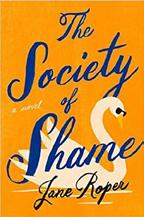
Roper, Jane Anchor (368 pp.)
$28.00 | April 4, 2023
9780593468760
A novel that takes back shame while packing a funny and poignant punch. Political wife Kathleen Held returns early from a trip to discover her garage is on fire, and her husband and his mistress are the source of the heat. Both her reaction and, incidentally, the deep red stain from some leaked menstrual blood are captured on video and instantly shared around the globe. Kathleen, a production editor in book publishing by trade, is used to being invisible, but her face has become that of the #YesWeBleed movement, photo edited onto Rosie the Riveter posters and memes and submemes and gifs and hashtags in a brilliant satire of an internet culture that falls somewhere between the honesty of #MeToo
and the outrage of “Grab ’em by the pussy.” Kathleen is horrified and tries to hide until two things happen: She intercepts an invitation meant for her husband to the Society of Shame, a salon for the scandalous run by disgraced bestselling author Danica Bellevue; and her 12-year-old daughter, Aggie, is pelted with maxi pads. Aggie fights back by embracing the period movement even though her involvement could wreak havoc on her father’s Senate campaign and her own social life. Seeing her daughter’s bravery, Kathleen realizes she’s chosen to disappear rather than face possible disappointment, that she’s pushed aside her own wants and needs since having been rejected for her literary novel decades before. Urged by her cohort in the society, Kathleen decides to lean into the embarrassing-but-essential period-based spotlight, generating media and keynotes, hashtags, hate mail, and a highsix-figure book deal. But she starts to realize the attention and social media storm are making her lose sight of what’s important to her and must decide if the risk is worth the cost of her values. The humor gets its teeth from author Roper’s eye for just the right details, like the moment when Kathleen is on a solo road trip and plays her favorite college songs from Alanis Morissette

“A novel that takes back shame while packing a funny and poignant punch.”
and the Indigo Girls. Resist skipping ahead, but the last page cements the work’s heart.
Astutely written, with the perfect balance among humor, heartbreak, and understanding.
Sandford, John
Putnam (384 pp.)
$20.96 | April 11, 2023
9780593422410
Letty Davenport seeks to infiltrate a group of freelance hackers in order to thwart their next project—or maybe to help it along.
Ordinary People, an anti-MAGA cabal of lefties, has already pulled off a string of small-scale disruptions, and the word from the CIA is that they plan to take down the power in the Twin Cities, where Letty grew up. Sen. Christopher Colles, the unofficial boss who’s been impressed by Letty’s unflappable skills with weaponry, wants her to pose as the girlfriend of National Security Agency computer specialist Rod Baxter as he seeks to hook up with Ordinary People across the country in California. After their first attempt goes spectacularly wrong, their forces are beefed up by CIA operative Barbara Cartwright and Department of Homeland Security investigator John Kaiser, who worked with Letty in The Investigator (2022), and they succeed in getting close to Craig Sovern, a prominent Ordinary Person who’s already been wreaking havoc on a number of railroad trains and plans to go bigger and bolder. And these aren’t just any trains. Realizing that Ordinary People’s attacks on the hate-fueled social media platform SlapBack may be a sign that their larger operations are providing an important service to the cause of world peace, Letty and her peeps switch from trying to bring down the organization to trying to protect it from the likes of Russian agent Arseny Stepashin and his trusted contractor Tom Boyadjian—all while keeping everything hush-hush. Yeah, right. Sandford alternates brisk action sequences with a steady stream of revelations that make equivocal players and their ambiguous relations even more complicated.
A female-forward thriller that makes a strong case that smart, unflinching women should run the world.


Simpson, Roger Blackstone (350 pp.)
$26.99 | April 25, 2023
9798212377133
Australian TV writer Simpson’s first novel sets his franchise heroine, Melbourne forensic psychiatrist Dr. Jane Halifax, against an exceptionally sadistic serial killer.
Billionaire Nigel Woods is found impaled on the spear of a famous sculpture in his mansion. Franco Bernero, who ran the Ferraro Foundation after leaving Victoria’s Upper House in disgrace, is found stretched to the point of breaking on a custommade vertical rack in his own home. What do the two murders have in common besides stomach-churning cruelty? Inspector Eric Ringer, the Victoria Police’s Head of Homicide, wants answers from his ex-lover, Jane Halifax, and she obliges with a quick read: The ritualistic killings were methodical, organized, and premeditated, though it’s hard to tell whether the motive is resentment of the wealthy, revenge for tax evasion, or hatred of the Catholic Church, since both victims were prominent Catholics subjected to medieval torture. By the time this last theory is boosted by the murder of Michael McGill, a former priest defrocked 20 years ago for sexual offenses, Ringer has focused his attention on Tomas Kurtza, who served 15 years for kidnapping and rape before leaving a DNA sample at one of the crime scenes and vanishing. Halifax, who thinks the third killing less carefully planned and executed than the first two, tries to get a clearer sense of the victims and the leading suspect by spending time with Woods’ widow, Melissa; with Cayden Voss, a performance coach who praised Kurtza’s acting chops while he was still in prison; and with Ela Bey, a librarian who insists that she’s Kurtza’s common-law wife. Both Ringer and Halifax will be surprised at where this trail of tears ultimately leads them.
A brutal, fast-moving tale targeting readers who can take it and ask for more.
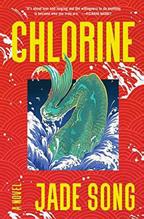
Song, Jade
Morrow/HarperCollins (256 pp.)
$30.00 | March 28, 2023
9780063257603
Part body horror, part science fiction, part queer teenage romance, Song’s debut novel dives into the deep end of bodily and psychological metamorphosis—but it’s not for the faint of heart.
When Ren Yu was 4 years old, her mother gave her a book of mermaid folklore, and she was immediately obsessed. Years later, when she tries out for the high school swim team, she knows instantly that the water is where she belongs, and she begins a quest to seek the “same sense of isolated grandeur” she first experienced plunging into the pool. Driven by the pressure of her demanding and sometimes creepy coach, Jim, as well as her own compulsion to win whatever the cost, Ren finds herself pushing further and further toward her physical and psychological limits. Meanwhile, she must also navigate the complications of teenage sex and romance and the complexities of her Chinese American identity. After a disappointing result at a swim meet, Ren is determined to take control of her destiny, making a shocking choice that will alter her life irrevocably. Alternating between a third-person narrative and letters written to Ren from her best friend (and perhaps more than friend) Cathy, a “blue-eyed white girl,” Song’s
form- and genre-blending book opens a brilliant portal into the sometimes-agonizing processes of coming-of-age and training as an elite athlete. Song is at her best when writing about the elaborate and sometimes agonizing experience of coming into one’s own power; one scene is so chillingly and effectively rendered it is difficult not to judge the rest of the novel by that standard. In comparison, the rest of the book, especially those parts that deal with teen drama, sometimes feel lackluster in comparison.
A striking portrayal of teenage transformation with a David Lynchian twist (plus mermaids!)
Thoman, Lauren
Mindy’s Book Studio (446 pp.)
$18.48 | April 1, 2023
9781662509971
“The future’s open wide” according to “I Melt With You,” the song by Modern English that lends other lyrics to the title of this time-looping fiction debut. Maybe they meant the past, too?
Justin Warren, a disaffected student waiting for high school to end, finds himself enmeshed in hardto-explain (and understand) circumstances in this mystery saga of time travel, adolescent heartache, and coming-of-age angst. Finding himself transported after an accident from 2023 to the year 1985, Justin is confronted with perplexing details about his complicated family history. Among the pre-millennial teens Justin meets is Rose Yin, a do-gooder and diligent student who becomes one of his few allies in unraveling the mysteries of not only his time travel, but also a 1985 crime that affected the course of his family’s life. (Rounding out the cast of characters for both settings are enough teens, teachers, and family members of varying backgrounds, sexual orientations, and personality types to populate whatever screen adaptation of the work results from the book’s selection by Mindy Kaling for her Mindy’s Book Studio publishing and production project.) Realizing he may have a last-minute opportunity to alter his family’s tragic history, Justin puzzles through the facts as he recalls them and the truths he uncovers in his new (old) hometown. While dealing with her own teenage miseries and insecurities, Rose lends a sympathetic ear and transportation to the out-of-sync Justin—who bemoans the lack of crime-solving technology available to him in 1985 and struggles to use a rotary phone in one hilarious episode. Thoman’s ambitious timeline of events is both expansive and compressed, with the storyline unfolding over the course of both one week and 38 years, and her portrayal of teenagers in varying degrees of crisis is sympathetic. A novel look at strange (and stranger) things.
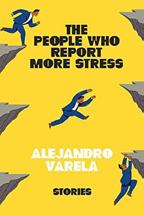
Varela, Alejandro
Astra House (256 pp.)
$26.00 | April 4, 2023
9781662601071
Anxiety from daily encounters with racism and homophobia plague the transracial gay couple at the heart of this debut story collection.
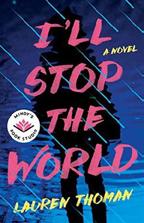
Varela’s second book, after The Town of Babylon (2022), experiments with form and point of view— employing first-, second-, and third-person in various stories—but returns again and again to the New York City lives of Eduardo, a public health expert of Salvadorian and Colombian heritage, and his White husband, a coder named Gus. The Eduardos and Guses encountered throughout the collection are not from a singular timeline or moment in their histories, however. “Grand Openings” offers a litany of different life paths for the pair, including polyamory, separation, untimely deaths, and differing relationships with their children. Individual stories offer more subtle variations—naming a child Julio versus Jules, a marriage ended by opening the relationship versus a marriage ended by Eduardo’s frustrated retreat from a discriminatory world, a basil plant thriving or dying. The imagery may appear pedestrian (except in the standout “All the Bullets Were Made in My Country,” which includes the story of the mythic L’Ampara), but the prose shines throughout, with razor-sharp specificity about human nature and an entrancing rhythm. The stories are not constructed with equal precision, though, so the endings of some feel haphazard, and there are occasional instances of overly obvious moralizing. Nevertheless, the collection shows a writer of impressive imagination continuing to deepen his craft. An unbalanced but still rewarding collection that paints a vivid picture of navigating a hostile world together and alone.

Verghese, Abraham Grove (736 pp.)
$30.00 | May 2, 2023
9780802162175
Three generations of a South Indian family are marked by passions and peccadillos, conditions and ambitions, interventions both medical and divine.
“Where the sea meets white beach, it thrusts fingers inland to intertwine with the rivers snaking down the green canopied slopes of the Ghats. It is a child’s fantasy world of rivulets and canals, a latticework of lakes and lagoons, a maze of backwaters and bottle-green lotus ponds; a vast circulatory system because, as her father used to say, all water is connected.” Verghese’s narrative mirrors the landscape it is set in, a maze of connecting storylines and biographies so
“A novel look at strange (and stranger) things.”
i’ll stop the world
complex and vast that it’s almost a little crazy. But as one of the characters points out, “You can’t set out to achieve your goals without a little madness.” The madness begins in 1900, when a 12-year-old girl is married off to a widower with a young son. She will be known as Ammachi, “little mother,” before she’s even a teenager. Her life is the central stream that flows through the epic landscape of this story, in which drowning is only the most common of the disastrous fates Verghese visits on his beloved characters—burning, impaling, leprosy, opium addiction, hearing loss, smallpox, birth defects, political fanaticism, and so much more, though many will also receive outsized gifts in artistic ability, intellect, strength, and prophecy. As in the bestselling and equally weighty Cutting for Stone (2009), the fiction debut by Verghese (who’s also a physician), the medical procedures and advances play a central role—scenes of hand surgery and brain surgery are narrated with the same enthusiastic detail as scenes of lovemaking. A few times along this very long journey one may briefly wonder, Is all this really necessary? What a joy to say it is, to experience the exquisite, uniquely literary delight of all the pieces falling into place in a way one really did not see coming. As Ammachi is well aware by the time she is a grandmother in the 1970s, “A good story goes beyond what a forgiving God cares to do: it reconciles families and unburdens them of secrets whose bond is stronger than blood.”
By God, he’s done it again.

Welsh-Huggins, Andrew Mysterious Press (312 pp.)
$26.95 | April 11, 2023
9781613163825
Hell hath no fury like a woman, or a crime boss, scorned.
A literal bang opens this peripatetic saga. Somebody named Myles returns fire after having been shot by somebody named Pryor, while three miles away, Myles’ girlfriend, Penny, who picked him up after his release from prison the day before, argues with a customer at the costume shop where she works. It takes several short, dialogueheavy chapters to introduce the numerous players and bring the backstory into focus. Myles testified against Pryor, his criminal boss, but went to prison anyway, while Pryor avoided incarceration. Vengeance is Pryor’s oxygen. Others in the mix are Pryor’s sidekick, Archie, thugs Michigan and Robby, and sometime girlfriend, Mae; Penny’s variously supportive family, which includes Mack, her son with Myles; and cops J.P., Marks, Vick, et al. Several more characters pass through the story as the action proceeds and the plot not so much thickens as spreads like wildfire in Darbytown, a crime-ridden burg not far from Columbus, Ohio. Penny, who emerges as the hero, tangles with her sister, Brandi, over her decision to stand by Myles and teams up with the woebegone Mae. Much of the story’s appeal comes from its panoramic scope, with brief detours into each character’s journey adding texture and humanity. The structure, tone,
quick twists, and shifts of focus will remind grieving fans of Elmore Leonard.

A crackerjack crime yarn chockablock with miscreants and a supersonic pace.
Yan Lianke
Trans. by Carlos Rojas Grove (416 pp.)
$27.00 | March 14, 2023
9780802162199
Subversive satire of the collision of Chinese state bureaucracy, academia, and religion.
Yan turns from the village settings of many of his earlier novels to a campus in the heart of Beijing. In the heavens above the National Politics University, his allusive yarn opens with a pointed exchange between deities: Buddha asks Jesus whether he’d like help coming down from the cross, the Dao asks whether he’d like to go higher, and Jesus responds, “I am at this location that is neither high nor low, and when people see me, they see the suffering people must endure.” That life involves suffering is a point on which all can agree, and so, too, do the proponents of China’s five major (read “approved,” or perhaps better, “tolerated”) religions, engaged in a perpetual round of tug of war. The only real winner there, Yan notes, is the political machine behind the religious training center, just as the house always wins at gambling. They should be battling along with their peers, but Gu Mingzheng, a young Daoist, and Yahui, an 18-year-old Buddhist nun, are smitten with each other. Alas, star- and doctrinecrossed, things don’t go easily for the two, especially when a shadowy god—perhaps Old Scratch himself—called Nameless starts tinkering with mortal affairs, driving one principal character to suicide and Yahui to the point of madness, about which she says, “My shifu always said that religion is the domain of the mentally ill, and whoever is perceived as being mentally ill on account of their religious belief is a true disciple.” It’s no hallucination when the assembled gods come calling with an offer to transcend earthly travails, but instead Yahui settles down with Gu in a nondescript Beijing neighborhood. Notes Yan in an afterword, “I hoped to write a small self-aware novel about how, when holiness and secularity meet, they have no choice but to kiss.” And so they do.
Picaresque, but with serious matters of faith, love, and political wrangling at its fast-beating heart.
 Trans. by Stuart Schoffman
HarperVia (208 pp.)
Trans. by Stuart Schoffman
HarperVia (208 pp.)
$26.99 | April 11, 2023
9780358670445
With both Christmas and her bat mitzvah approaching, a 12-year-old Italian girl is awakened to the contradictions and complications of her mixed identity.
An only child born into a family of Jewish lawyers (her Catholic-raised mother switched to Judaism), Rachele Luzzatto attends a church school in northern Italy while regularly taking Hebrew lessons from a rabbi imported from Israel for that purpose by her parents. Trouble brews when this bright and inquisitive girl is happily assigned the part of the Mother of God in a seasonal school play. While her Catholic grandfather encourages her to embrace her Roman Catholic origins, her father (who is being treated for a brain tumor) rants at the school’s insensitivity: “You already destroyed enough of us Jews, so don’t try to steal one of the few left over.” The theme of double identities runs through this short novel. During the war, Rachele’s Jewish grandfather disguised himself as a priest. At a masquerade party in Venice during Carnival, Rachele wears a yeshiva boy mask, but she’s concerned that with the mask’s blond sidelocks, wearing one of her own dresses would show “frivolous contempt for religion and identity.” As it is, her Catholic grandfather is fuming about the inclusion of the Aleinu prayer (controversial for its dismissal of non-Jewish gods) in Rachele’s bat mitzvah ceremony. Inspired by a children’s story, she decides to replace it “with something gentler and more human.” A departure in not being set in Israel, the late Yehoshua’s penultimate work (another novella awaits its English translation) is one of his more understated books. Even in depicting antisemitism, he finds humor in the strained relations between Jews and gentiles. You’ll read it here first: “Skiing by Jews on Christmas is a tribute to the birth of a divine child in the Holy Land.”
A wise, masterfully understated work by one of Israel’s towering literary figures.
Bowen, Rhys & Clare Broyles
Minotaur (320 pp.)
$26.99 | March 14, 2023
9781250808097
A talented sleuth’s peaceful life is turned upside down in 1907 by a stroke of apparent good fortune.

When Molly Sullivan’s husband, police Capt. Daniel Sullivan, tells her he’s leaving the force to run for sheriff of New York County, backed by Tammany Hall despite his long opposition to the Tammany record of corruption, Molly is shocked and furious. They’re loaned a mansion on Fifth Avenue, complete with staff and bodyguards, and all the bills are paid by Tammany honcho William “Big Bill” McCormick. Despite her many reservations, Molly goes along with Daniel’s pleas to reserve judgment. Their ward, Bridie, has been attending a private school paid for by Molly’s wealthy, eccentric friends Sid and Gus, where she’s picked on by her posh schoolmates for her simple clothes and mundane background. That all changes when Bridie rescues her nemesis, Blanche McCormick, from a fire aboard the McCormick family boat during a class field trip to the Statue of Liberty and the two become fast friends. They’re all soon enmeshed in the lives of Big Bill’s family, which also includes Junior, a disabled son from his first marriage, and Cornelius, a rebellious son from his present marriage. When Big Bill is found murdered in his locked home office during Blanche’s birthday party, the police detective assigned to the case is useless, forcing Molly and Daniel to do some sleuthing of their own. Bill had plenty of enemies, including William Randolph Hearst, but the answer may lie closer to home.
Bowen and Broyles, who never disappoint, take a deep dive into the world of early-1900s New York.
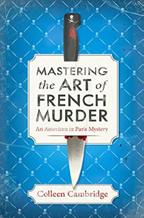
Cambridge, Colleen
Kensington (304 pp.)
$27.00 | April 25, 2023
9781496739599
Murder complicates the lives of future cookbook writer Julia Child’s friends in 1949 Paris.
Julia has a mayonnaise problem. Although her cuisine runs rings around that of her half-French friend Tabitha Knight, who’s left her work at an American bomber plant to give French lessons to relocated fellow citizens, her mayonnaise remains stubbornly on-again, off-again. She and Tabitha are distracted from this
“A wise, masterfully understated work by one of Israel’s towering literary figures.”
the only daughter
existential dilemma by the discovery of a corpse stabbed to death in their building’s cellar. To her considerable discomfort, Tabitha recognizes the body as that of Thérèse Lognon, an attendee at a party given the night before by Julia’s younger sister, Dorothy, for her colleagues in the American Club Theater, whose current production of And Then There Were None at the Théâtre Monceau featured Thérèse checking garments in the cloakroom. The leading suspects all have more prominent roles in the production: Thad Whiting as sound and lighting designer, Johnny Cantrell as stage manager and set designer, and Neil Kingsley as ill-fated character Philip Lombard. Tabitha’s informal but highly irregular investigations, which motivate a nearfatal collision between her bicycle and a car that speeds away, bring her up so often against Inspecteur Étienne Merveille that it’s a wonder she’s still walking around free when the killer claims a second victim. Though she’s no great shakes as a detective, Tabitha is miles ahead of Merveille in tying the two deaths to a timely but unconvincing Russian spy ring. Throughout it all, Child remains as serenely marginal and undeveloped a character as Agatha Christie was in Cambridge’s A Trace of Poison (2022), though she does eventually solve that mayonnaise problem. A subdued period piece that never lives up to its promising title.
Collins, Max Allan Hard Case Crime (416 pp.)

$14.99 paper | April 18, 2023
9781789091465
Hard Case Crime completes its cycle of Collins’ novels about not-quitereformed thief Nolan with his first appearance and one of his last.
In Spree, the later, longer, and more polished of the pair, Nolan’s live-in lover, Sherry, is kidnapped to pressure him into masterminding a grandly scaled robbery of the most tempting targets among the 50 stores in Missouri’s Brady Eighty mall. Coleman Comfort, the paterfamilias behind the scheme, already has a grudge against Nolan for killing his brother Sam and Sam’s two sons in an earlier plot that went violently off the rails, and it seems obvious that as soon as the heist is history, he plans to kill Sherry and Nolan anyway. In fact, his homicidal plans are even more extensive than that, though not if Nolan and his frequent accomplice Jon Ross have anything to say about it. Mourn the Living, the first story Collins wrote about Nolan, though not the first he published, is an informal homage to Richard Stark’s adventures of one-named criminal Parker. Owing a big favor to mobbed-up pencil pusher Sid Tisor, Nolan reluctantly agrees to look into the death of Tisor’s daughter, Irene, a Chelsey University student who fell 10 stories to her death, even though it’s going to bring him uncomfortably close to Chicago’s Franco crime family, who’ve already put a $250,000 bounty on his head for his past misdeeds against them. Was Irene high on LSD? Was she actually pushed? What details have been covered up
by Chelsey cop Phil Saunders, who’s the cousin of incompetent gang boss George Franco’s financial secretary Irwin Elliot, the real power behind Chelsey’s thriving drug industry?
Hard-case crimes with the bonus of a few surprising zingers.
George, Emily
Kensington (320 pp.)
$15.95 paper | Feb. 21, 2023
9781496740489
A Paris-trained pastry chef gives a modern twist to baked goods, California-style.
Like so many disappointed young women, Chloe Barnes returns to the place where she grew up with a keen sense of failure and a wealth of family support. But Chloe has a little something extra in her toolbox: Thanks to California’s newly relaxed recreational-use marijuana laws, she finds an innovative way to reinvent herself. Food critics in France may have panned her raspberry and chocolate mousse cake, but folks in Azalea Bay love her special brownies, the ones she first made to help her Grandma Rose cope with the debilitating effects of chemotherapy. Chloe now has extensive experience with cannabis cookery. She knows how to temper the herb’s funky notes and balance its pungency with salty, sweet, and acidic flavors. In partnership with her ever supportive Aunt Dawn, she secures a space with both dine-in and retail potential. Now all they need is a license from the state. But their plans are jeopardized when town bully Brendan Chalmers is found dead in the park. Surveillance footage shows Dawn entering the park the evening before Chalmers died, and she’s soon the chief suspect in the police investigation. Chloe’s pretty sure the state won’t grant a dispensing license to someone convicted of murder, which is still a crime even in California. Her only hope is to unmask the real killer.
Far from half-baked—George’s series debut is cooking with gas.


Hambly, Barbara
Severn House (256 pp.)
$30.99 | March 7, 2023
9780727850799
Sex, drugs, scandal, and murder in Hollywood’s early days.
After losing most of her family during World War I, proper English widow and scholar Emma Blackstone ends up living with her flighty sister-in-law, Kitty Flint, better known as movie star Camille de la Rose. Emma acts as Kitty’s secretary, dresser, confidante, and Pekinese wrangler and has also started writing scripts for historically inaccurate costume dramas. Currently pretending to be leading man Harry
Garfield’s amatory interest, Emma’s actually in love with cameraman Zal Rokatansky—but that’s not written in stone, since Kitty and everyone else Emma knows switch lovers constantly. A phone call from director Ernst Zapolya urgently asking to see Kitty plunges the women into danger. When they visit him in his bungalow on the Enterprise Studios lot, they’re interrupted by studio boss Lou Jesperson, and Ernst never gets to tell Emma what he wants. In an era when workers have little protection from sharpshooters using real bullets because they look better on camera, it’s no wonder that animals and people sometimes die on movie sets. Searching for Ernst to continue their meeting, Emma finds his body along with very young actress Nomie Carlyle in a dead faint. Since Ernst has been shot at point-blank range, his death was clearly no accident, but the show must go on. Nomie, who claims to have seen a woman in black nearby, fears that she’s in the frame for the murder. Her appeal for help entangles Emma and Kitty with gangsters, the FBI, communists, and a plethora of narcissistic movie stars.
A wild lineup of possible killers mingles with historically accurate info in a fast-paced mystery.
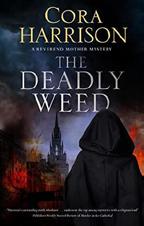
Harrison, Cora Severn House (240 pp.)
$30.99 | March 7, 2023
9781448309825
A suspicious death at a cigarette factory provides a thorny case for three very different crime solvers.
Ten years after Ireland’s war for independence, native-born Irish are on the ladder to success. Inspector Patrick Cashman grew up poor but is on track to be appointed Superintendent of the Cork Garda when a call comes in from Mrs. Maloney, a well-known snoop who reports a murder at a cigarette factory. Although Timothy Dooley, the factory’s manager, died from smoke inhalation, Mrs. Maloney thinks one of the girls who works there may be a killer. The Reverend Mother, the daughter of a wealthy and socially prominent family whose cousin owns the factory, has obtained jobs there for 10 of her former students, all so poor that even the meager salary is a godsend to their families. But now one of them is in trouble. Patrick—a former student of the Reverend Mother’s, who’s helped him solve many a crime—is appalled when his boss orders him to arrest defiant 14-year-old Maureen McCarthy. The late Mr. Dooley had worked for factory owner Robert Murphy for a long time, mostly at his estate in Youghal, where the tobacco is grown, and before he’d moved to Cork he’d been accused of impregnating the gardener’s daughter. The Reverend Mother’s star pupil, ambitious law student and part-time reporter Eileen McSweeney, abhors injustice and teams up with Patrick and the Reverend Mother to solve the perplexing case.
A complex mystery and an indictment of the treatment of the poor add up to a sobering yet enjoyable read.
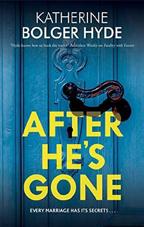
Hyde, Katherine Bolger
Severn House (224 pp.)
$31.99 | April 4, 2023
9781448310333
A woman’s horror at the murder of her husband is tempered by abject relief that he’s dead and compounded by fear that she may have been his killer.
It doesn’t take long for Abigail Taylor to sour on Charles Crenshaw Jr. Yes, he’s the handsome and attentive son of wealthy parents. But, as she realizes soon after their storybook courtship and wedding, he’s also selfish, narcissistic, sadistically domineering, unsupportive of the legal career she’d planned to complement his own, and indifferent to the welfare of both Abby and their baby daughter, Emma, whom he and his father, an attorney who lives in the exclusive enclave of Los Altos Hills, reject because she’s not a boy they can count on to carry on the family name. Abby’s misery is deepened by her discovery that Emma is deaf. Since Charles won’t think of trading in his Porsche or asking his father for $40,000 for the cochlear implants that might give Emma the ability to hear, Abby joins forces with her older sister, Ellen Stepanovich, to start a GoFundMe page in hopes of raising the money. Meantime, she’s suffered so many bouts of forgetfulness and so many blackouts that she fears she’s losing her mind. The stormy marriage ends with Abby’s discovery of her husband’s blood-drenched corpse. Is it possible that she could have killed him herself during one of those blackouts? Santa Cruz Det. Peter Rocher, who fights his superior in defense of his belief that Abby isn’t a self-made widow, cracks the case by the simple expedient of reading the journal Charles kept.
A familiar tale of gaslighting with a payoff as emotionally satisfying as it is unbelievable.
Keyse-Walker, John Severn House (224 pp.)
$30.99 | March 7, 2023
9781448310159
Murder aboard a cruise liner in 1939. Fans of Keyse-Walker’s Teddy Creque series, set in the British Virgin Islands, may be startled to find that farmers Bert and Mamie Mason aren’t headed on a jaunt around the sunny Caribbean. Beguiled by travel brochures describing the wonders of Africa, Bert uses profits from selling his Ohio hothouse tomatoes to Depression-era consumers in New York to fund a 63-day voyage aboard the luxurious SS Columbus of the North German Lloyd line, circumnavigating the continent, where he hopes to encounter his share of lions, gorillas, and African people. Mamie eventually becomes enchanted too, not so much by the idea of seeing Africa as by

“A suspicious death at a cigarette factory provides a thorny case for three very different crime solvers.”
the deadly weed
the romance of dancing on the deck in the moonlight with her clumsy but determined spouse. After palling around briefly with the Olsens from Minneapolis and the Waynes from Dubuque, the couple are invited to dine at the captain’s table, where they meet Señora Pia de Ribera of Torremolinos, Matthias Huber of Vienna, and bombastic Sturmbannführer Jürgen Heissemeyer of the SS. Without breaking from the officially isolationist view of the U.S., the Masons begin to understand the complicated politics of traveling on a German liner in 1939, especially after Mamie sees Heissemeyer pitched overboard one night by a shadowy figure she can’t quite recognize. Bert and Mamie narrate alternate chapters, unfolding their tale in a fashion both contrapuntal and complementary, as befits a longwedded couple. There’s much to love both in their vivid descriptions of their shore excursions and their solution to the murder of a passenger no one much liked.
A promising new series launch from the author of reliably engaging travel adventures.
Lansing, Kate Berkley (304 pp.)
$8.99 paper | March 7, 2023 9780593546277
Murder messes up a family wedding. Colorado winemaker Parker Valentine is well aware that not everything is going smoothly at her cousin Emma’s nuptials. Emma’s mom and stepmom can barely be civil to each other, and Josie, one of her two bridesmaids, falls into hysterics at the drop of a hat because she can’t forget that her own bridegroom left her at the altar. But when Prynne Pearsall, the obnoxious wedding planner Emma’s stepmom insisted on hiring, is found dead in the ballroom just before the start of the ceremony, chaos rises to a whole new level. Parker responds as the genre demands: She shrugs aside advice from the police and her family not to investigate on her own, and her sleuthing amps up as the police zero in on her relatives as prime suspects. She’s also presented with the requisite romantic distractions. Now that her boyfriend, Reid, is in Napa Valley scouting locations for a second restaurant, Parker wonders whether their relationship will withstand even intermittent separations. Like her setting, Lansing’s prose has its highs and lows. She establishes a strong sense of place with evocative descriptions of Boulder’s majestic scenery but drops in misused words and phrases that may leave some readers scratching their heads. (Parker describes her Syrah as “the perfect companion for mulled wine, or in the summer, sangria” and asserts that her winery “erupt[s] into a fervor of whispers.”)

No surprises, a few miscues, but some genuine pleasures.

T.C.
Severn House (256 pp.)
$31.99 | April 4, 2023
9781448310029
A chef-turned-critic looks like the perfect suspect when a resentful colleague is killed.
When her best friend, Hilary Hanson, says that Tiffany Austin has the best job in the world, she isn’t kidding. Tiffany’s left her high-stress, low-reward position as an assistant head chef in New York City to return to Branson, Georgia, as Southern Style’s food critic. The job requires a written column, occasional blog posts, and a lot of dinners out. Tiffany’s waistline might not be happy, but she is. Unfortunately, the magazine’s newest addition irks diva Jenny Lee Plumm, who’s on her way out not just because of her bad attitude, but because editor Dale Swenson is hoping Tiffany can cover Jenny Lee’s society beat as part of her blog. Tiffany’s none too sure her degree at the Culinary Institute of America has prepared her to talk about designer duds and the like, but she’s happy her initial six-month stint will be expanded to a full-time position. Naturally, Jenny Lee is less happy, and the two have a serious blowup. When Jenny Lee dies suddenly thereafter, Tiffany’s a prime suspect. To save her hide, Tiffany has to figure out which of Jenny Lee’s other enemies had motive enough to kill her. The always grouchy Det. Philip Bartell doesn’t take a liking to Tiffany’s amateur investigating—or does he? Sensing that there’s something more there, Hilary resolves to follow the path of a citizen sleuth and investigate.
Easy enough to appeal to a variety of cozy palates.
Mosley, Walter

Mulholland Books/Little, Brown (336 pp.)
$28.00 | Feb. 21, 2023
9780316460217
At the behest of his friend Roger Ferris, a White billionaire, Black ex-cop Joe King Oliver investigates the government’s mysterious detainment of a White nationalist.
The 91-year-old Ferris, who lives much of the time with Oliver’s strong-willed 93-year-old grandmother, is sure that Alfred Xavier Quiller, poster boy for the alt-right group Men of Action, was set up on charges of murder and selling secrets to the Russians. As odious an individual as Quiller is, Oliver takes on the case as a defender of civil rights. That means returning to Rikers Island, where Quiller is being held—and where Oliver spent three hellish months in solitary after having been framed by dirty cops. The detective, introduced in Down the River Unto the Sea (2018), also has his hands full with the arrest of his ex-wife
the dead will rise
Monica’s husband for his involvement with Russian mobsters in a corporate scheme to sell heating oil as diesel fuel. As knotty as the plot can get, the book is consistently lifted by the intelligence of its characters. Not your everyday zealot, Quiller is a scholar, poet, painter, animal rights activist, and genius inventor—and he’s married to a Black woman whose attraction to him in spite of his racism makes her quite the enigma. Mosley is in top form as a social observer: Absolute poverty, muses his protagonist, is being imprisoned: “the experience of being slowly murdered by a state of being.” Mosley’s reportorial eye is equally sharp in making details count, including the skin tones of his characters. In Oliver’s world, it matters that his grandmother is “black as a moonless night on an ancient sea.” It also matters that she can get shot in the butt and shrug it off. A strong second outing by Mosley’s new hero.
Nickson, Chris
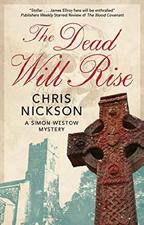
Severn House (240 pp.)
$30.99 | March 7, 2023
9781448310197
Thief-taker Simon Westow, who normally retrieves stolen goods, stretches his remit to include stolen bodies in 1824 Leeds.
Wealthy engineer Joseph Clark hires Simon and his helper, Jane, to find the body of Gwendolyn Jordan, his best worker’s 10-year-old daughter, which has been stolen from her coffin. They start by tracking down the dress she was wearing, which is worth more, according to the law, than the body. Simon and Jane have built up a large network of people who notice things, so they have their informants look for the seller while they check cemeteries themselves. Meantime, much-married Amanda Parker wants to hire the pair to find Thomas Rawlings, who she claims cheated her out of 50 pounds. Though they have a bad feeling about the job, especially when Mrs. Parker wants Jane to pose as a prostitute, they decide to give it a few days. Jane’s ability to vanish into the background makes her perfect at following people, and her skill with a knife has kept her safe. When they find Rawlings murdered, they suspect a connection with the body snatchers but resolve to tell no one until they can learn the names of the malefactors. It turns out that Harold Ackroyd, Peter Kingsley, and a muscleman known as the Irishman have stolen many more bodies than anyone suspected. Simon and Jane trace Ackroyd to a remote house, but their plan to catch the body snatchers fails, and the stakes are raised dramatically when the Irishman throws Jane off a bridge, turning a game of cat and mouse into a struggle over life and death. An action-packed mystery that provides interesting historical details about despicable crimes.
Perry, Anne Ballantine (352 pp.)

$28.00 | April 11, 2023
9780593359129
Barrister Daniel Pitt is thrown into the prosecution of a powerful man accused of a swindle that will remind readers of much more recent times than 1912.
Already thrown off balance by the retirement of his father-in-law, senior partner Marcus fford Croft; his replacement by Gideon Hunter KC; and the elevation of his own brilliant but untried friend Toby Kitteridge to head of chambers, Daniel is knocked off his feet by Hunter’s determination to lead the prosecution of wealthy, socially connected Malcolm Vayne, whose advanced views on women’s suffrage have won him admirers even more numerous than the investors whose money his Big Ben Investments has lost. Convinced that Vayne has been running a Ponzi scheme dependent on endless waves of new investors to pay off the old, Hunter presses Daniel to serve as his junior counsel on the case. The trial is a disaster from the first witness, businessman John Sandemann, who abandons his earlier account about Vayne’s wrongdoings to sing his praises effusively. Vayne’s international liaison Richard Whitnall, a second witness, doesn’t answer the summons to testify because he’s lying on his kitchen floor with a knife in his belly, and others offer testimony a great deal more muted than Hunter and Daniel had been led to expect. The outcome of the trial will be determined largely by two women: Nadine Parnell, the bookkeeper who does her best to lead the jury through the layers upon layers of Vayne’s fraud, and Daniel’s wife, pathologist Miriam Pitt, who could dispel the rumors that Whitnall’s death was a suicide if she hadn’t been kidnapped, driven to Northumberland, and stashed away in a tidal cave.
Familiar fare well served in Perry’s plush, comfortable prose.
Shea, Susan C. Severn House (224 pp.)
$30.99 | March 7, 2023
9781448310180
An American woman intent on restoring an ancient château in France faces many challenges.
Ariel Shepard has recently lost her wealthy and beloved husband, Dan. Refusing to battle his first wife over his estate, she finds herself left with an expensive New York apartment and, to her surprise, the decrepit French château she’d admired on their honeymoon almost four years earlier—which she didn’t know Dan had bought as a gift for her. She decides to take a leap of

“An action-packed mystery that provides interesting historical details about despicable crimes.”
faith and move to Reigny-Sur-Canne, and through a friend she meets Katherine and Michael Goff, fellow American expatriates. Monsieur Brunet, the lawyer who handled her husband’s acquisition of the château, is happy to lend a hand, suggesting workers to help restore the property, which needs massive repairs. Ariel quickly strikes up a friendship with Katherine, who approves of her plans to run a B&B but warns her that it will take much longer than she thinks to restore the building. She also meets British mystery author Pippa Hathaway and French scholar Christiane Breton, who can tell her more about the history of the château. As the multinational crowd working on the restoration makes slow progress, Christiane, who’s interested in tracing the building’s provenance, finds something that doesn’t look quite right. When Ariel stumbles over Christiane’s body, her dream turns into a nightmare. Soon thereafter, Ariel narrowly escapes a robbery attempt and Christiane’s husband is attacked. Ariel, Katherine, and an enthusiastic Pippa start sleuthing in the hope of finding the killer before they become the next victims.
The charming details of French country life make up for a mediocre mystery.

Sutanto, Jesse Q. Berkley (352 pp.)
$27.00 | March 14, 2023
9780593546178
Investigating a murder gives a lonely widow purpose.
Every day at 4:30 a.m., Vera Wong Zhuzhu, 60, wakes without an alarm; texts her son, Tilbert, to say he’s sleeping his life away; and takes a brisk walk around San Francisco’s Chinatown before returning to open her business, Vera Wang’s World-Famous Teahouse. (The name isn’t a typo but a calculated choice; “even white people” have heard of Vera Wang.) While fellow immigrants used to frequent the shop, now it has only one regular customer, and though Vera and her late husband paid off the building’s mortgage years ago and she lives upstairs, the utilities alone are sapping her savings. Solitude and irrelevance are wearing on Vera until she comes downstairs one morning to find a male stranger dead on the floor. Vera calls the police, who determine that the man—Marshall Chen, 29— likely broke in and then overdosed. Vera, however, believes it was homicide, seeing as Marshall died clutching a USB drive. Granted, the cops don’t know about the drive, as Vera pocketed it before picking up the phone, but that’s probably for the best; “nobody sniffs out wrongdoing quite like a suspicious Chinese mother with time on her hands.” Gentle humor and abundant heart elevate Sutanto’s spirited mystery, which focuses primarily on the tender relationships that form between Vera and her four main suspects. A kaleidoscopic third-person narrative allows Sutanto to fully develop each character, investing readers in their fates. Vivid sensory descriptions of the custom teas
Vera concocts and the elaborate feasts she prepares further heighten the feel-good appeal.
Literary comfort food in the guise of a quirky whodunit.
Valdés, Alisa Lynn Thomas & Mercer (256 pp.)
$28.99 | April 1, 2023
9781662507175
A New Mexico game warden finds herself in a race war that threatens to get personal.


After her husband dies in a climbing accident, Officer Jodi Luna decides to leave Boston and her life in the academy to return to her familial roots. She even arranges to take her uncle Eloy Atencio’s position as Rio Truchas County’s game warden as he prepares to retire. Jodi is idealistic and proud to be working in an area that’s meant so much to her family. Though Eloy is jaded about the land and its inhabitants, Jodi’s surprised when one of the first guys she pulls over tries to give her a hard time about her use of Spanish. But then, what do you expect from gringos? While Jodi is smart enough to educate Travis Lee on the ways New Mexico laws support the use of Spanish, it’s less clear that she’s wise enough to avoid trouble. Her argument with Travis leads him to make threats he just might be willing to carry out, including stalking Jodi and her teenage daughter, Mila, at their home. While Jodi sees Travis as a racist pest, the truth may be even bleaker: The Zebulon Boys, a White pride militant group that lives out in the woods, has been kidnapping brown girls— and worse. Could Travis be involved? When Jodi attempts to bring the group to justice, things rapidly head south, and she’s left wondering what she really believes when it comes to justice. Packed to bursting with big questions for readers who can navigate the stress.
Webb, Debra
Thomas & Mercer (351 pp.)
$16.99 paper | March 14, 2023
9781662508820
A Nashville investigator with a dark past fights inner demons to reclaim her life in this follow-up to The Last Lie Told (2022).
Finley O’Sullivan was a respected prosecutor until her husband, Derrick, was murdered in front of her and she was raped; afterward, a meltdown in court forced her to leave the district attorney’s office. Fortunately, she found a job as an investigator for brilliant lawyer Jack Finnegan—who happens to be her godfather. Their new client is wealthy businesswoman Ellen Winthrop, whose new husband, Jarrod Grady, was recently murdered, and it’s their
job to protect her by winkling out every fact the police could use against her. Ellen had recently discovered her husband was raiding her bank accounts, so naturally the police suspect her. Meanwhile, Finley is trying to get evidence against the man behind Derrick’s murder and her own rape; she knows who’s responsible for the crimes but can’t prove he was the one who hired thugs to do the deed. Finley has so far been unable to discover what Derrick was up to before his death, as it turned out he’d been lying to her about a lot of things, and the police have been suspicious of her since one of her three attackers was shot dead. The brilliant women who work with Ellen always seem a step ahead of Finley in coming up with information that might be suspicious and finding ways of neutralizing it. Finley is discovering more about her own family, a second of Derrick’s killers is shot in front of her, and the detective assigned to his case is almost killed. Finley will never give up and actually gets help from Ellen, who is far from what she seems.
A convoluted mystery/thriller eventually brings closure to a wounded spirit.
Carey, M.R. Orbit (544 pp.)
$18.99 paper | March 28, 2023
9780316504386
A desperate scientist. A selfish rogue. A caring child. And the fate of infinite realities.
At the beginning of this multiversespanning tale, an unnamed narrator tells us we’re going to hear the stories of three individuals: first, Hadiz Tambuwal, an accidental genius; second, Essien Nkanika, an impoverished man willing to do anything to survive; and finally, Topaz Tourmaline FiveHills, a sentient rabbit whose choices changed the course of history. From that confident and intriguing opening, we jump right into Hadiz’s story. She’s a scientist working in a research station in Nigeria who can see the end of civilization coming and finds it terribly inconvenient that this collapse might interrupt her work. She’s looking for dark energy but instead stumbles on a way to hop into alternate universes. We soon learn that thousands of these alternate universes are governed by an empire called the Pandominion that invented cross-universe travel long ago and doesn’t care for people making unsanctioned trips. But with Hadiz’s Earth in the midst of civilizational collapse and environmental catastrophe, she’s left with no choice but to hop sideways to
another Earth—and unknowingly set in motion a reality-altering chain of events. The result is sort of a space opera that never goes to space, instead spanning thousands of alternate Earths, including multiple Earths where evolution took a different path and the dominant sentient species is descended from rabbits, hedgehogs, or others of our mammalian cousins. The plot doesn’t map onto a traditional hero’s journey arc and feels all the fresher for it. Short, action-packed chapters keep the pace brisk, and each character we meet, however briefly, is vividly and empathetically drawn.
A genuine treat for SF fans: an epic multiverse tale that moves like a thriller.

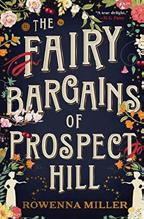
Miller, Rowenna
Redhook/Orbit (416 pp.)
$18.99 paper | March 28, 2023
9780316378475
Two sisters caught up in their bargains with the Fae find themselves in over their heads in this tale of family tradition and upward mobility.
Lilabeth Canner taught her daughter and granddaughters to safely bargain with the Fae—for luck, good weather, and empty wombs. Years after her husband traded a handkerchief to a Fae girl for a plot of land on Prospect Hill, the Canners’ oldest granddaughter, Alaine, presides over the family’s failing farm. Alaine harbors a deep resentment of her younger sister, Delphine, whose impending marriage to Pierce Grafton will sweep her away to the big city and leave Alaine to worry about the farm alone. For her part, Del is jealous of her big sister; Alaine has a place in the world: at the farm, where Del has never felt as if she belongs. Her dreams of joining the socialite class flag as she struggles to adapt to the posh Grafton lifestyle, however. Both women soon find themselves making risky, untested bargains with the Fae to improve their circumstances—a decision that has dire, if predictable, consequences. Awkward dialogue plagues the opening chapters as Miller shoehorns information into casual conversations between family members. Poor pacing turns the novel’s first half into a slog, and readers well versed in Fae literature may bristle at how long it takes the sisters’ proverbial chickens to come home to roost. Del’s society faux pas and Alaine’s financial woes receive enough attention in the first half to almost completely drown out the early fairy bargains—the stakes of which are so low that it becomes easy to forget this is a fantasy novel. Yet when a bargain finally goes awry, the sisters’ personal problems cease to matter at all. To its credit, the last third of this fairy story proves enjoyable. Although Miller nicely ties up the majority of loose ends in the denouement, many readers may not stick around to find out what happens on Prospect Hill. A fantasy offering that takes too long to raise its narrative stakes.
“A genuine treat for SF fans: an epic multiverse tale that moves like a thriller.”
infinity gate

Whitten, Hannah
Orbit (480 pp.)
$23.99 | March 7, 2023
9780316434997
A young woman who wields dark magic, a monk of death, and the crown prince find their fates are somehow entwined.
Lore works as a poison runner with her mothers, their city laced with the death magic known as Mortem after the demise of the Goddess now buried in the catacombs beneath their feet. But Lore is different from her mothers; she has a stronger connection to Mortem than anyone she knows—strong enough to raise the dead—and her powers cannot stay hidden forever. Eventually she attracts the attention of the Presque Mort, a group of monks whose brushes with death have left them able to channel Mortem, though none can match Lore’s abilities. After having Lore snatched up, the Priest Exalted, head of the Presque Mort and twin brother to the Sainted King, pairs Lore with the solemn Gabriel and instructs them to discover how and why whole villages are mysteriously dying—even if it means bringing one of the dead villagers back to life. And the two have another mission, a direct order from the King: They must infiltrate the Court of the Citadel and ingratiate themselves with the King’s son, the prince Bastian, who may be passing intelligence to their enemies. Lore trusts neither king nor priest but has no choice but to comply; she soon finds herself juggling the schemes of the Presque Mort, the King, Bastian, and more. Amid glittering gowns and late-night balls, Lore and Gabriel—and Bastian as well—grapple with their pasts and their beliefs as forces both human and divine gather around them. With a system of dark magic; instant chemistry and tension among Lore, Gabriel, and Bastian; and revelations that bring to light new questions, this is an intriguing beginning to a series that effortlessly balances character development with plot and atmosphere.
A perfect blend of shadowy gods, forbidden romance, and political court drama.
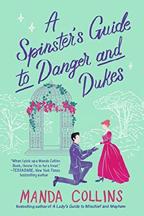
Collins, Manda
Forever (368 pp.)
$9.99 paper | March 28, 2023
9781538725597
When her sister is accused of committing murder, Poppy Delamare returns home to uncover the truth and winds up in a fake betrothal to a duke.
Since she fled home two years ago so her stepfather couldn’t force her into a marriage with his private secretary, Lovell, Poppy has lived in London under the identity Flora Deaver. But when she discovers her younger sister married Lovell and is now blamed for his murder, Poppy doesn’t believe it and sets out to uncover what really happened. Joshua Fielding, the Duke of Langham, is taking a train in the same direction for his grandmother’s birthday party. He wants to help Poppy, so the pair make a pact: They’ll pretend to be betrothed so she’ll have more resources to help her sister and he won’t have to deal with Grandmama’s matchmaking attempts. At first, Poppy thinks Langham is arrogant and entitled, but her feelings change as she gets to know him. As they try to decide what to do about the very real chemistry developing between them, the case becomes bigger, twistier, and more dangerous. Like the previous titles in the series, this third installment mixes romance, murder mystery, and feminist sensibilities. The romance here is a simple slow burn that pairs well with the increasingly complex mystery providing most of the tension, and each arc has a satisfying, well-earned conclusion. The story bucks gender stereotypes with not just the obviously intelligent, fierce heroine, but more notably with a hero who’s learning to be vulnerable and imperfect.
Compelling, evenly paced, and delightfully fun.

De la Rosa, Liana Berkley (352 pp.)
$17.00 paper | April 4, 2023
9780593440889
A politician’s daughter finds love across the ocean.
It’s 1863, and the Luna sisters are on the run. Mexico is under attack by Napoleon III, and their prominent political family has sent them to England for safety. Though their father expects all three to be discreet while there, their uncle asks them instead to be visible and charming, hoping that enjoying the company of three “goodwill ambassadors” at ball after ball will inspire the queen’s government, presently neutral, to take Mexico’s side
against the French. This soon brings oldest sister Ana María into contact with an unusual Member of Parliament: Mr. Gideon Fox. The grandson of a woman who’d been enslaved in South Carolina before escaping to England on a packet ship, Gideon is focused on outlawing all remaining loopholes that allow British subjects to profit from the trans-Atlantic slave trade. Though they are immediately drawn to each other, the obeisant Ana María is already promised to one of her father’s political allies, so they try to maintain a professional distance. But as the season brings them together again and again, they finally give in to their attraction just before sudden danger necessitates what seems like a marriage of convenience (that both are secretly pleased to enter), though their well-planned futures may be overturned as a result. De la Rosa launches a thrillingly different series based on the historical fact that a number of Mexicans immigrated to England in the middle of the 19th century, centering two unusual perspectives on the overwhelmingly White world of Victorian London society. Because Ana María and Gideon have had to be more mature than most socialites, their emotional explorations are careful even when things get spicy. As a result, the story’s conflict primarily derives from external events, but the couple’s chemistry is undeniable—and makes for compelling reading. The other triumph of the story is the development of the sisterly love among the Luna women, who in the first chapter are at odds but by the last are very close to one another; readers will look forward to the next installments, focusing on Isabel and Gabriela.
An enjoyable start to an exciting new series and a new direction for historical romance.

Ellis, Philip Putnam (352 pp.)
$17.00 paper | March 14, 2023
9780593542477
Two thieves attempt to steal a pricey engagement ring—and maybe each other’s hearts—in this fake-dating rom-com.
Cat Bellamy is at the end of her rope. She’s broke, jobless, and on the verge of being kicked out of her London apartment. The only reason she gets by is because of her slightly morally dubious side gig—picking the pockets of pervy uncles at weddings and bros at the local bar. When her rich college friend Louisa Vincent asks Cat to be her bridesmaid, she feels more panic than joy—how will she ever afford fitting into Louisa’s super fancy lifestyle when she can barely afford dinner? When Louisa brags about her uber-expensive, highly guarded engagement ring, Cat gets an idea—but this will be a bigger job than she’s ever attempted before. Luckily Jake Marlowe, the bartender who’s seen her stealing wallets, has some skills of his own. He’s an even better thief than Cat is, able to slide a Rolex right off a customer’s wrist. If the two of them team up, they can pocket Louisa’s ring and be set for life…but since Jake is Cat’s plus-one, they’ll have to pretend to be a couple. They attend extravagant wedding events (including a bachelor/bachelorette party in Palermo) and
hone their skills, fooling the other bridal party members while practicing for the big day. As the line between actual and pretend feelings gets blurry, soon Cat doesn’t know what to believe. Is she just in this for the job, or could her relationship with Jake be something real? In his debut, Ellis combines a heist with a romantic comedy and creates something exciting and vibrant. There’s real depth behind Cat’s tough-girl facade, and her snarky comments are laugh-out-loud hilarious.
A delightful, fast-paced escapade full of snappy dialogue.

Guertin, Chantel
Kensington (368 pp.)
$16.95 paper | March 28, 2023
9781496735379
A romance reader’s once-in-a-lifetime trip to meet her favorite audiobook narrator goes awry when he never shows up, leaving her stuck with a snarky tour guide instead.
Georgia “Gigi” Rutherford owns a romance bookshop and is dogged in her pursuit of love. Sadly, she thinks she’s reached the limit of her tolerance for dating apps, instead fantasizing about audiobook narrator Zane Wilkenson. She takes it as a sign that he narrates the book that, years ago, caused her own parents to fall in love. Through internet sleuthing, Gigi discovers that Zane works for his parents’ tour-guide business in London. For her 30th birthday, her dearest friends buy her a ticket to England for a 10-day bus tour hosted by none other than Zane. Gigi embarks on a whirlwind vacation, nearly missing the tour bus, but her bubble is burst when Zane is a noshow. In a pinch, Angus, one of the company’s oldest employees, and Taj, a surly and snappy man with a love of mystery novels, step in to kick off the trip, with a promise that Zane will catch up with them later. It’s hard to enjoy Gigi as a main character considering her parasocial relationship with Zane. Her desire for a man she’s never met, has only listened to via audiobooks, and has only seen through social media photos comes across as concerning. Thankfully, she snaps out of it, though some readers may not have the patience to wait that long. Once Gigi’s attention turns to Taj, though, there’s a delightfully meta quality to their relationship, as Gigi is a dedicated romance reader who references familiar tropes and author names while Taj has his own bookish indulgences. The detailed descriptions of the English countryside, combined with a motley crew of Gigi’s fellow tour-goers, add coziness and charm.
An uncomfortable start is saved by the secondary characters and setting.
“A delightful, fast-paced escapade full of snappy dialogue.”
Kitt, Sandra Sourcebooks Casablanca (352 pp.)
$15.99 paper | April 11, 2023
978-1-72827-022-7
Two people find love after receiving an inheritance from the same man.
Eden Marsh is in her third year at Georgetown Law School and unsure of what her future will hold. When Everett Nichols, her beloved mentor and father figure, dies, Eden arranges his memorial service. There she meets writer Beck Dennison, who not only pitches in to help her set up the event following a mix-up at the venue, but also offers her a shoulder to cry on when her sadness overwhelms her. Beck and Eden strike up a tentative friendship. Soon after, Eden is called to a law office for a mysterious meeting and is surprised to find Beck also in attendance. It turns out that they are the two beneficiaries of Everett’s will, with Eden receiving a large cash inheritance, while Beck—who turns out to have been Everett’s former stepson—inherits the lion’s share of the estate and business holdings. They are both surprised and shocked at their new circumstances and lean on each other for support. Their warm friendship evolves into a gentle romance. As they become more involved, they confide in each other about their emotionally difficult family situations. Eden is learning to let the younger sister she helped raise be independent, while Beck is harboring deeply painful wounds from a family tragedy when he was a teenager. Kitt’s novel demonstrates how thoughtful, caring people can still experience bumps and misunderstandings on the way to a happily-ever-after.
Kind, mature characters are the highlight of this sweet and satisfying romance.
Voskuni, Taleen
Berkley (368 pp.)
$17.00 paper | Jan. 31, 2023
978-0-593-54730-4
After rejecting her longtime boyfriend’s marriage proposal, an Armenian American woman embarks on a journey to discover herself and what—or whom— she really wants.
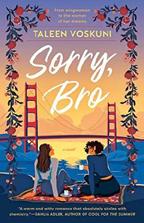

Nareh Bedrossian has been drifting through her life for a while, but the truth is she’s not very happy at all. Professionally, her boss at the local San Francisco news station doesn’t respect her, either rejecting her ideas for stories or flat-out assigning them to someone else, and her personal life isn’t much better. Her tech-lawyer boyfriend just popped the question, and the utterly disastrous public proposal is the wake-up call she needs about her dead end of a relationship. Enter Nareh’s mother, who talks her into attending a series of upcoming events called Explore Armenia, not only to get back in touch with her heritage, but to find a prospective new relationship. Initially, Nareh goes
only to pacify her mother, but as she goes to more events, she realizes it’s the opportunity she needs to embrace a part of her identity she’s been neglecting in recent years. There’s also an unexpected development when she collides with a gorgeously witchy woman on her first night, and Nareh is bowled over by the fact that she might be more interested in Erebuni Minassian than any of the potential suitors her mother has preselected for her. As the two women deepen their connection over several Explore Armenia experiences, Nareh comes to the conclusion that she wants Erebuni to be a bigger part of her life. However, choosing Erebuni will also mean coming out as bisexual—to her family, to her Instagram followers, to everyone—and claiming every aspect of herself. Is she ready to take that leap toward true happiness? Voskuni’s debut is equal parts comic, heartfelt, and profoundly rooted in Armenian culture, with a lead you’ll want to befriend and a romance you’ll want to cheer on in equal measure.
A sparkling story about love, family, and identity.
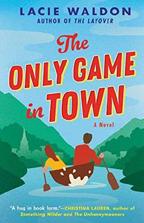
Waldon, Lacie
Putnam (416 pp.)
$17.00 paper | March 21, 2023
978-0-593-54080-0
Residents of a small Georgia town compete for $10 million.
Waldon’s third romantic comedy is the first that doesn’t hinge on travel—the author works as a flight attendant—but it’s full of other popular rom-com tropes. There’s a plucky small-town girl: Jessica Reid, a freelance book editor who gave up New York City to stay close to her dad in tiny Redford, Georgia. She meets a handsome stranger from the big city: Carter Barclay, a financial wizard in Atlanta. A mutual attraction threatens their carefully constructed lives: Should they get together when they don’t live in the same place? The story begins with the death of Jasper Wilhelm, Carter’s grandfather, a beloved but eccentric philanthropist, whose funeral has lured Carter to Redford. Jasper has concocted a unique solution to the question of who will inherit his millions: His will stipulates the entire town will be split into pairs to compete in a series of challenges, and whichever team earns the most points will win a life-changing $10 million. Sounds easy, but Jasper himself has paired everyone off, and almost no one is happy with their partner. Jess finds herself paired with her sworn enemy, Nikki Loughton, who is still mad that Jess kissed her boyfriend in high school. Carter is sure he’s being set up to win, but Jess has other plans, no matter how sexy he is. Waldon has a solid sense of humor, and her characters are engaging; even Nikki turns out to have unexpected depth. Jess and Carter’s will-they, won’t-they romance is never in doubt (their magical night in a leaky rowboat is a romantic and comedic highlight). A hamhanded side plot in which Jess’ dad suddenly announces he’s sick and may be dying feels unnecessary, but despite that puzzling misstep, romance fans should enjoy playing this game to the end.
A lighthearted romp for fans of romantic comedy about the benefits of working together for a community.
The International Manhunt for a Master Thief
Amelinckx, Andrew Counterpoint (304 pp.)
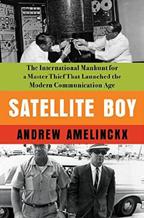
$27.00 | March 21, 2023
9781640094802
Hardened criminal meets the slide rule in a historical true-crime tale.
The
$28.00 | April 11, 2023
9780802162427
It’s a bit of a stretch to suggest, as freelance journalist Amelinckx does, that “master thief Georges Lemay and electrical engineer Harold Rosen…gave rise to the modern communication age, forever changing our world.” Rosen deserves the accolade (none other than Arthur C. Clarke said as much), but Lemay is incidental, someone in the wrong place at the wrong time—namely, on a yacht slip in South Florida, where he was spotted after pulling off a major bank heist in Canada. He was spotted thanks to Rosen’s invention of a geosynchronous satellite that allowed for simultaneous communication around the world. When Early Bird launched, the FBI, Royal Canadian Mounted Police, and Scotland Yard beamed out public-enemy photographs of Lemay, a dapper but vicious fellow, and he was caught. (He escaped, sending J. Edgar Hoover into a tizzy.) Amelinckx delivers two separate books that are thinly joined by that happenstance. In doing so, he makes some good points: Rosen certainly deserves more credit than he gets for having revolutionized satellite technology, for one, allowing the U.S. to pull ahead of its Soviet rivals in the space race, and Lemay makes for an interesting case who ought to have been put away for much longer than he was. After doing time for bank robbery and literally getting away with murder, in the mid-1970s, he got into “the lucrative drug business, focusing on…a more potent cousin to PCP that had its heyday as a recreational drug during that decade.” Well known in Canada but less so elsewhere, Lemay makes a fine study in sociopathy. There are a lot of tangents to work through—e.g., it’s not particularly germane to the author’s yarn that the Beatles used Rosen’s satellite technology to broadcast “All You Need Is Love” worldwide. Still, there are some nice twists and turns.
An average book, but true-crime buffs and historians of technology will find points of interest.
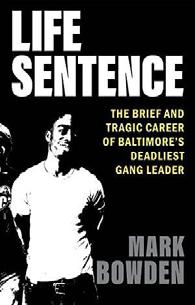
On Aug. 26, 2016, former San Francisco 49ers quarterback Colin Kaepernick chose to kneel during the national anthem before a preseason game. When asked about his action, Kaepernick, the son of a White mother and Black father, responded, “I am not going to stand up to show pride in a flag for a country that oppresses Black people and people of color. To me, this is bigger than football and it would be selfish on my part to look the other way.”
Since then, the conversation surrounding athlete activism has gotten deeper and increasingly heated. While many people believe that athletes are not qualified to comment on political, social, or cultural matters, I think that view is dangerously misguided. Athletes, after all, are as entitled to their opinions as anyone else. If they choose to speak out or act against injustice, more power to them.
I want to highlight two February books that address these issues. The first is The Black Athlete Revolt: The Sport Justice Movement in the Age of #BlackLivesMatter (Rowman & Littlefield, Feb. 8) by Shaun M. Anderson, which we call “a useful primer on the ever shifting playing field of sports and race.” Tracing the past few decades of protests by Black athletes, Anderson paints a clear picture of what these figures face when attempting to speak their minds about race relations, police brutality, and systemic oppression. From Kaepernick to LeBron James, who has been as outspoken as anyone, Black players from all the major sports have made important contributions to numerous social justice initiatives. In Anderson’s final chapter, our reviewer says, he “thoughtfully explores how recent trends can fuel a
‘sport justice movement’ that addresses pro teams’ relationships with police, equitable treatment of college players, and players’ deeper engagement with their communities.”

While Anderson’s book lays out a straightforward overview, The Education of Kendrick Perkins: A Memoir (St. Martin’s, Feb. 21) by Kendrick Perkins (with Seth Rogoff) is a deeply personal and justifiably fiery look at the author’s journey from rural Texas to the bright lights of the NBA. “Though the author was well aware of the barriers facing Black people in Jim Crow Texas,” notes our starred review, “he was somewhat surprised to find them in Boston, where he first played for the Celtics.” Entering the NBA directly out of high school, Perkins enjoyed a successful career, retiring in 2018 to become a sportscaster. Since then, he has been an opinionated, sometimes controversial voice on ESPN.
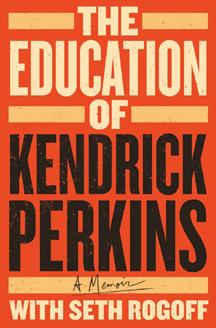
Across a variety of programs, Perkins is unapologetic about the need for Black athletes to use their platform to promote justice. As our review notes, “the author writes pointedly of the need for Black athletes to speak against injustice as they did in the 1960s before being silenced with money and endorsements—here, he singles out Michael Jordan—and to resist racism in all its guises.” In addition to a fascinating life story, Perkins delivers a broader message that is urgent, bold, and challenging in all the right ways.
If you enjoy these books, keep an eye out for Gregory J. Kaliss’ Beyond the Black Power Salute: Athlete Activism in an Era of Change (Univ. of Illinois), coming in April. We call it “valuable background reading for anyone interested in sports activism.”
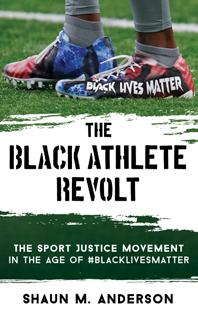
 Asgarian, Roxanna Farrar, Straus and Giroux (320 pp.)
$28.00 | March 14, 2023
Asgarian, Roxanna Farrar, Straus and Giroux (320 pp.)
$28.00 | March 14, 2023
9780374602291
A searching examination of a fostercare system that harms children more than it helps.
Asgarian, who covers the courts and the law for the Texas Tribune, takes as her point of departure a story from 2018, when six adopted children and their adoptive parents died after those parents, fleeing child-abuse investigations, drove over a cliff into the Pacific Ocean. The story made the news for all the usual sensational reasons, not least that one of the children had become a social media meme with a photograph that showed him hugging a police officer during an anti-racism protest. Look closely at that photograph, notes the author, and it’s clear that the child is begging for help. “The reality was that the children had not been okay,” she writes. “They had not been cared for. They suffered, and then they died. They were murdered.” The children were all Black, with adoptive White parents who’d been gaming the system to earn income as providers while keeping them half-starved. Asgarian deepens the story with an examination of the trajectory of an older sibling who had aged out of the foster system and been placed in a residential treatment center. As the author notes, that is all too often a direct path to prison. It certainly was in the case of the young man, who years later may have his own child separated from the family and placed in foster care. Asgarian clearly shows how the dysfunctional system hinges on racist assumptions, including that “these six Black children must be better off with the white women who adopted them” than with their Black birthparents or relatives, even though responsible relatives were available and willing to help. Asgarian closes by pointing out how the approach that punishes needy families instead of working to improve their conditions “does nothing to help the children,” and she is entirely convincing in that conclusion. A sobering call to action demanding reform of the childprotective and foster-care regimes.

Auder, Alexandra
Viking (336 pp.)
$27.00 | May 2, 2023
9780593299951
A memoir by the daughter of Warhol superstar Viva and big sister of actor Gaby Hoffmann.
“I’m certain that if she and the Dalai Lama were locked in a cell together, and she turned the screw on him, he would crack within the hour,”
writes Auder about her mother. “He might even kill her because he has been kowtowed to his whole life and never forced to contend with a Viva. I’ve always suspected I’m more patient and loving than the great masters because I’ve been in a cell with her for a lifetime and have physically attacked her only twice.”
Auder’s vibrant memoir of her larger-than-life mother alternates between the present, as she and her husband and child host the aged diva at their home in Philadelphia, and her rollercoaster childhood. The author, a performance artist and actor, spent much of that time living frugally at the Chelsea Hotel and hanging out around the corner at the Squat Theatre. Her childhood also featured regular visits to her mother’s family home on the St. Lawrence River. Auder’s vivid writing illuminates a deep and sparkling trove of storytelling riches. Especially memorable is her description of her mother’s meeting of her father, which occurred “on the streets of Paris, just after she’d filmed the sex scene in Warhol’s Blue Movie that would make her both superstar and criminal”—and just before “she and Michel made off for Rome (both draped in ruffled silk shirts, jewel-toned velvet blazers, capes, beaded necklaces, and chunky silver bracelets) to make their own movie.” In Quebec, Viva’s extended family sometimes devolved into bloody brawling; other times, the author’s five tall, slender aunts, dressed in tiny crocheted bikini bottoms, flocked sweetly around her like birds. In the acknowledgements, Auder reveals that she has “been writing versions of this memoir for over twenty-five years.” The work has paid off.
Auder makes the most of her magnificent mess of material, celebrating her bohemian upbringing and her crazy mother in style.

Ed. by Aukerman, Scott Abrams Image (256 pp.)
$29.99 | April 25, 2023
9781419754814
The companion book to the zany comedy podcast.
Devotees will love the origin stories and comedy bits from the series’ beloved characters, and the collection’s creative structure may land the show some new fans as well. It’s impressive how effectively podcast host Aukerman and his gang of high-powered friends and contributors—Reggie Watts, Andy Samberg, Patton Oswalt, Bob Odenkirk, et al.—can tell a funny story. The comedy comes through sheet music, dating tips, park ranger logs, role-playing-game character synopses, lists of medical maladies, and a host of other hilariously oddball material. Samberg delivers the goods in the guise of a “Hollywood Facts” board game, where we get numerous zingers—e.g., “What did Robert De Niro say after filming his ‘you talkin’ to me?’ scene in Taxi Driver (1976)? ANSWER: ‘I doubt anyone will ever parody THAT!’ ” In “So You Want To Be an Inventor: A Note From Entrée PeeE Neur,” Saturday Night Live star Ego Nwodim provides advice for prospective inventors: “Anytime you come
“Auder makes the most of her magnificent mess of material, celebrating her bohemian upbringing and her crazy mother in style.”
don’t call me home
up with an invention, there will be haters….If you haven’t heard of something, it simply doesn’t exist.” Comedian Mike Hanford pretends that John Lennon is still alive and infuses a fake review of the Beatles’ greatest hits package, with loads of impossibilities like Geena Davis playing harmonica on “From Me to You,” or Lennon picking up a radiologist named Val on Madonna’s Ray of Light tour. It’s almost sentimental to think of Lennon living a more pedestrian rock star life rather than being murdered. Of course, the text quickly follows that section with crass jokes about fictional bobbleheads, so that warm feeling won’t last long. After all, this book is meant to be an extension of the Comedy Bang! Bang! world, so it purposefully stays within the orbit of that kind of humor.
Aukerman’s podcast companion broadens the proven Comedy Bang! Bang! formula but doesn’t dive much deeper.

Au-Yeung, Angel & David Jeans
Henry Holt (384 pp.)
$28.99 | April 25, 2023
9781250829092
A somber rags-to-riches, genius-tomadness story.
Tony Hsieh (1973-2020), the founder of Zappos, was a born capitalist, making $200 per month in middle school with a machine that made pin-on badges. A natural introvert, he was committed to overcoming isolation and prejudice, emerging before his Harvard classmates as “a young man who was full of adventure and curiosity and was destined for greater things.” Some classmates stayed with him as he launched his first tech firm, a complicated brokerage for internet advertising that was successful enough that he was able to sell it to Microsoft for $265 million. He might have walked away and spent the rest of his life enjoying the wealth. However, as Wall Street Journal reporter Au-Yeung and Forbes investigative reporter Jeans write, Hsieh wanted to do something more, sinking most of his fortune into an endeavor based on the premise that, given the opportunity and the option of easy returns, customers would buy shoes online without trying them on for size. That led to Zappos, “first a customer service-oriented company, a shoe seller second—an ethos its new values set in stone.” After Amazon came calling, buying the company for $1.2 billion in 2009, Hsieh spun off into an effort to remake downtown Las Vegas into a business incubator while falling into a cycle of drug and alcohol abuse, shedding old friends and surrounding himself with people who were content to watch his self-destruction as long as they got a piece of the action. Said Hsieh to one old friend who tried to caution him,
“If you don’t question me again, I’ll give you half my net worth.” The story has an inevitably tragic end, though the authors offset the self-doomed, mentally ill Hsieh’s downward spiral with his generosity and well-intentioned efforts to do well by doing good. A readable, sobering study of entrepreneurial brilliance laid low.
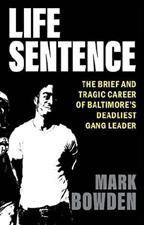
Bowden, Mark
Atlantic Monthly (320 pp.)
$28.00 | April 11, 2023
9780802162427
A gripping and revealing glimpse into Baltimore gang life and the city’s efforts to combat street violence.
With exclusive access to police interview footage, FBI files, and court documents, Bowden focuses his investigative lens on
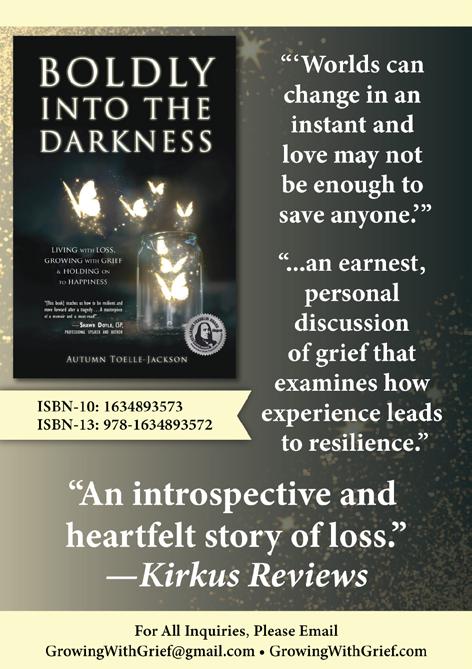
there will be fire
the case of Trained To Go, a Baltimore gang operating in the destitute Sandtown neighborhood, led by Montana “Tana” Barronette, who—at the age of 21—received two life sentences for his involvement in at least 20 killings. The author takes a deep dive into Tana’s life story in an attempt to determine the circumstances that led such a “goofy, genial, smart, poised, ambitious” young man down the “greased path” of violent crime. Working with the U.S. attorney office’s materials and his own extensive interviews with detectives, community members, witnesses, informants, and researchers, Bowden develops a fascinating crime narrative featuring a cast of complex, charismatic characters. As products of their environment, the young members of TTG exhibit a reckless, devastating nihilism, resigned to violent deaths and openly flaunting the spoils of their criminal enterprise as long as they are able. “While morally null, Tana was not mentally ill,” writes the author. “He and the rest of his crew were normal teenagers in an aberrant environment, an extreme product of a violent, oppositional subculture, not just trained to go but bred to go, or kill.” Making a case for the near inevitability of Tana’s fate without denying or minimizing his brutal actions, Bowden presents a damning indictment of the city’s treatment of its most precarious constituents. “Gang violence and white indifference are two sides of the same coin,” he writes, arguing for massive investment in “better schools, better local policing, more counseling and community involvement, stronger gun laws, more employment opportunities…[and] specialized, strategic law enforcement” as critical steps toward ending this self-perpetuating pattern of poverty and violence.
A powerful, nuanced depiction of gang violence in America that makes a strong case for meaningful reform beyond policing.
Carroll, Rory Putnam (416 pp.)
$28.00 | April 4, 2023

9780593419496
A revealing story of an Irish Republican Army bombing against the vast backdrop of Irish history.
“In the tangled, tortuous history of Britain and Ireland, the past is not a settled matter,” writes Guardian journalist Carroll. “There is no grand, shared narrative. Atrocities and justified actions are in the eye of the beholder.” Certainly, terrorism is how Margaret Thatcher’s government characterized IRA attacks on British troops and civilians in the 1980s. At the center of the narrative is the 1984 bombing of a Brighton hotel where Thatcher addressed a Conservative Party conference. “Thatcher lived,” writes Carroll. “Well, she and her government now knew that the Troubles could not be contained. The Provos had brought the war not just to England but to her inner sanctum.” The bomber
returned to Ireland and then traveled back to England to launch a planned campaign of bombings of British resorts to ruin the tourist economy and frighten the British populace. Although Sinn Fein leader Gerry Adams—who, notes Carroll, refused to talk with him for this book—claimed to have no knowledge of the IRA’s military campaign against Thatcher’s government, the bombers had a role in Adams’ “grand strategy.” They met with less favor on the part of former backer Moammar Gadhafi, who dropped his support for the IRA and “sought other, bloodier ways to punish his enemies.” Carroll closes his tense, riveting text by considering the what-ifs and long-term effects of the attack on Brighton—for which, he notes, the bomber later repented, sort of, after a lengthy prison sentence. One of those effects was Thatcher’s increasing hatred of the European Union, of which Ireland was part, which led to Brexit, which in turn is leading to a growing call to integrate Northern Ireland into the Republic.
“In the end,” Carroll concludes, “it may be Margaret Thatcher’s legacy, not IRA bombs, that delivers a united Ireland.”
A lucid history of the Troubles in all its manifold complexities.
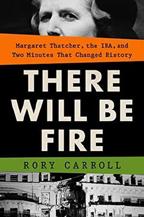
“A lucid history of
Troubles in all its manifold complexities.”
Chin-Quee, Anthony Riverhead (368 pp.)

$27.00 | April 4, 2023
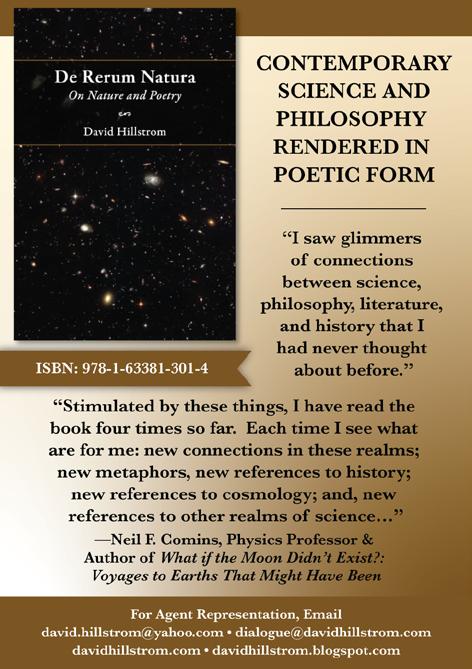
9780593418888
A Black physician confronts racism, self-doubt, and inner demons.
In his soul-baring debut, Chin-Quee, an otolaryngologist who has consulted for the TV shows Grey’s Anatomy and The Resident, offers an intimate look at his transformation from a fearful child into a confident, competent physician in a demanding specialty. His parents, immigrants from the West Indies, were professionals: his mother, a psychologist; his father, a lawyer. His mother struggled with depression, and his father, addicted to gambling, was disbarred. Although young Tony wanted to keep the family’s turmoil secret, his pain erupted as panic attacks and anxiety. As he grew, Chin-Quee managed to hide his feelings “behind a high-wattage smile and a
booming laugh,” but he wrestled with a familial legacy of mental illness and self-destructive behavior. “I knew that, just beneath my skin, my father lived inside me,” he writes. “He lived in my insecurities and my weaknesses. He lived in my fears.” Those insecurities were intensified by racist encounters as well as the physically and emotionally exhausting process of becoming a physician. “What the hell was I doing there other than playing dress -up in doctor’s clothing?” he asked himself as a first-year intern. The author was beset by feelings of anger and defeat, “the undercurrents of the lessons I learned at home; constant reminders of the power I didn’t have whenever I stepped out into the world.” Most debilitating, he was harangued by an inner voice—a “bold and sadistic antagonist”—that ruthlessly berated him, and he became depressed, even suicidal. ChinQuee capably recounts his hard road to personal and professional survival, negotiating the White-dominated world of medicine and comprehending the complexities of his own identity. He came to recognize the traits “that truly matter: the selfawareness and strength of character necessary to weather the devastating emotional trials that are sure to come; the humility and grace required to be an effective, collaborative, and avid lifelong learner.”
A candid, stirring chronicle of struggle and success.

Dockser Marcus, Amy Riverhead (256 pp.)
$28.00 | Feb. 14, 2023
9780399576133
The story of a painful but inspiring search for a cure for a fatal disease.
Dockser Marcus, a Pulitzer Prize–winning Wall Street Journal reporter, had finished a series on advances in cancer therapy when she endured the death of her mother to a rare cancer for which no treatment existed. The author’s research revealed that activists had often pressured the Food and Drug Administration to pay attention to diseases such as AIDS and allow community participants on hospital and government advisory committees. It was an effective approach, but the author found that the scientists called the shots. They were the experts who would design experiments and work at their own, careful pace. This lugubrious system has worked miracles, but it’s too slow if a loved one is sick. Dockser Marcus discovered others with the same experience who had organized to work with and even guide researchers. They called themselves “citizen scientists.” The author concentrates on the fight against the rare genetic defect Niemann-Pick disease type C, which affects only about 200 individuals in the U.S. and 500 globally. Often healthy at birth, affected children “progressively” lose the ability to walk, talk, and eat; most die by age 19. Dockser Marcus introduces us to the families, children, physicians, researchers, and FDA
a fever in the heartland
officials. Almost all are sympathetic. Rather than merely lobbying or raising money, parents have come together to search for treatments and suggest lines of research. Fiercely motivated, they have educated themselves, devouring medical journals so obsessively that some have written articles for these same journals. They have convinced researchers and government agencies to launch studies and then cooperated closely, not only volunteering their children, but also gathering far more data than the usual parent. The author ends her expert mixture of reportage and storytelling on a somewhat hopeful note. Promising treatments are in the pipeline, but there have been numerous bitter disappointments, and many affected children have suffered serious complications during trials.
A moving argument for a more focused, humane, and efficient system for conducting medical research.


The Ku Klux Klan’s Plot To Take Over America, and the Woman Who Stopped
Egan, Timothy Viking (432 pp.)
$30.00 | April 4, 2023
9780735225268
A winner of the Pulitzer Prize and the National Book Award chronicles a dark period when the Ku Klux Klan was ascendant.
In 1866, in a small town in Tennessee, six White war veterans formed a secret brotherhood to share their disgust about the emancipation of Blacks. By 1868, the Klan had 500,000 members “in every province of the former Confederacy.” By the 1920s, the Klan’s raids, beatings, lynchings, and arson had spread throughout the country. It was, Egan writes in his shocking, horrifying history, the “largest and most powerful of the secret societies among American men.” Klan members included ministers, politicians, judges, policemen, bankers, and businessmen, united in their belief in White supremacy and their virulent hatred of immigrants, Jews, Roman Catholics, and Blacks. Central to Egan’s narrative is David C. Stephenson, bluff and arrogant, a manipulator and liar, a vicious sexual predator, a “carouser, a gasbag, a petty thief” who demanded unconditional adoration from his lackeys. Charming when it suited him, ruthless toward his enemies, he harbored an insatiable lust for power. Stephenson’s “unbridled energy” fueled the exponential growth of the Klan in Indiana, where, he boasted, “I am the law.” Klan members filled positions at every level of government, and Stephenson himself aimed for a presidential run. Klan vigilantes rampaged on morality patrols, and the group allied with the eugenics movement to pass the nation’s first forced sterilization law. In 1924, Congress, filled with Klan members, passed the National Origins Act, vastly limiting immigration. Egan reveals the bold efforts of journalists, lawyers, and Black and Jewish leaders to oppose the Klan despite being threatened constantly.
He also reveals the scandals and infighting that imperiled Stephenson’s position—until one woman’s deathbed testimony took him down. The Klan’s grievances, the nation’s polarization, and a blustering politician who saw efforts to bring him to justice as a “hoax and witch hunt”: This riveting history seem disturbingly familiar and undeniably chilling.
An excellently rendered, unsettling narrative of America at its worst.
“An excellently rendered, unsettling narrative of America at its worst.”

Ford, Dionne Bold Type Books (256 pp.)

$28.00 | April 4, 2023
9781645030133
A journalist recounts her journey to uncover the stories behind the intertwined lives of her Black and White relatives. The day Ford turned 38, she stumbled across an online photograph of her great-great grandmother Tempy and Col. W.R. Stuart, the married White slaveholder who fathered Tempy’s six children. Motivated by a lifelong need to define her racial identity and heal an internal disconnection that had been the result of childhood sexual abuse, the author consulted family members, researched online genealogical records, and “crisscrossed the country” to piece together a forgotten—and, as
she would learn, profoundly painful—family past. “This is a study in contrasts,” she writes. “Shadow. Light. Black. White. Joy. Pain. Victim. Perpetrator. You will find ephemera—editorials, photographs, wedding announcements—and atrocities—lynched uncles, your people as property in someone’s will, deed, or mortgage guarantee.” Although Tempy had been enslaved when she had her first two children by Stuart, her last four were born after Emancipation, a fact that hinted at the complex economic and emotional ties that kept her bound to her former master. When Ford learned that Stuart’s obituary made no reference to his children by Tempy, she came face to face with yet another layer of racism in her family’s erasure from public history. The documents that ultimately confirmed her connection to Stuart came to her via a White art historian whose wife was not only related to the Stuart family, but also the joint owner of valuable Stuart property the author had known nothing about. The parallels Ford draws between her personal traumas and the ongoing struggle among Black Americans to find wholeness and validation—in the form of reparations and other measures—make her narrative especially compelling. That she was able to find connection with lost Black relatives who would become some of her greatest sources of support helps transform a book about multigenerational loss into one about the healing power of community. A cathartic reading experience.

Freeman, Hadley Simon & Schuster (288 pp.)
$27.99 | April 18, 2023
9781982189839
Someone who fought the beast and won uses her own experience and thorough research to explain what anorexia is—and isn’t.
Longtime Guardian columnist Freeman, author of House of Glass, is a talented writer and researcher whose personal history with anorexia as a young woman required numerous hospitalizations. She remembers her trigger moment with absolute clarity. It was just after her 14th birthday when a classmate with very skinny legs said, “I wish I was normal like you.” Having reconnected with several women she met in hospitals along the way, she pulls in their experiences, as well, explaining that “anorexia was a bomb inside us, just waiting for the right time, the single flame, the trigger.” The author’s thorough explanation of the disease and its treatment completely debunks many myths— e.g., “all that was needed to cure anorexia was for Kate Moss to eat some chips.” A chapter called “The Theories” is a simultaneously hilarious and horrifying three-page poem that lays out “an incomplete list of reasons doctors, therapists and outsiders have given over the years for why I became anorexic.” Freeman is sharp, funny, and literate. In discussing her school reading during that transitional 14th summer, she writes, “I don’t
blame John Fowles for my anorexia, but he did make an effective soundtrack for it.” She also labels Roald Dahl “the Anna Wintour of children’s literature when it comes to fatphobia” and shares crucial life wisdom from Spaceballs and Lethal Weapon With several sources indicating an “epidemic of extreme anxiety among girls”—a 2019 study showed rates of self-harm had tripled since 2000—Freeman’s insights are essential. For mothers of daughters in crisis, she offers a wise message: “Get professional help as soon as you can, and don’t become her caregiver.”
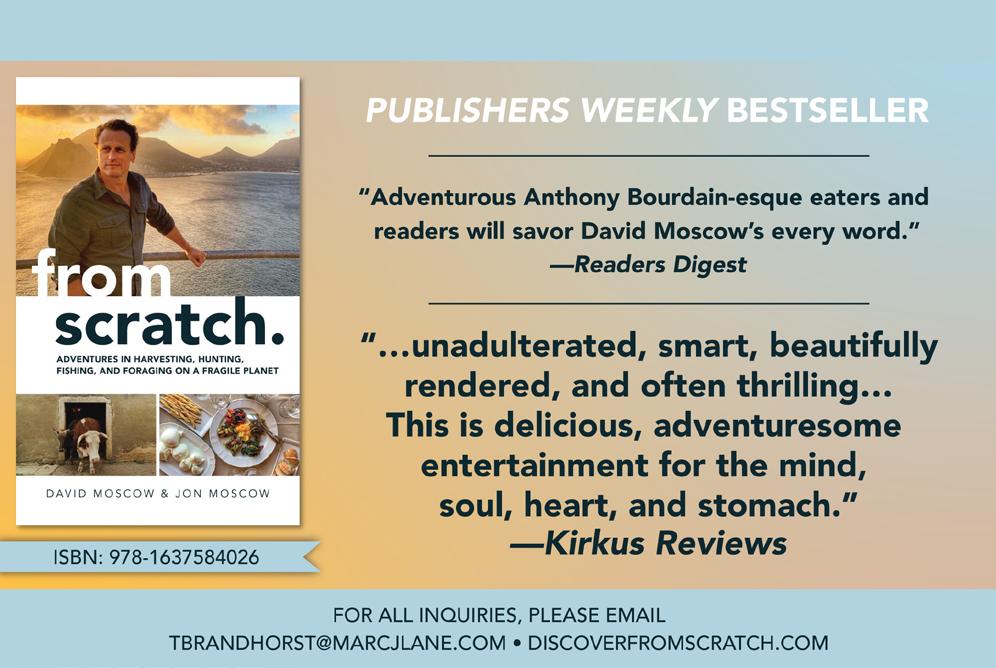
If you need to understand anorexia, look no further. This is the book for you.
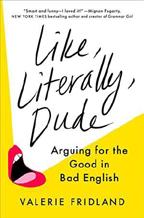
Fridland, Valerie
Viking (336 pp.)
$27.00 | April 18, 2023
9780593298329
A specialist in sociolinguistics conducts a lively study of how and why our language is changing.
According to Fridland, a professor of linguistics and a frequent commentator on language issues, the maxim that rules are made to be broken is made clear by the evolution of language, especially the variety of English spoken in the U.S. Her aim is not to condemn the most recent wave of modifications but to praise the energy and innovative spirit involved. In fact, trying to stamp out linguistic innovations seldom works—and often makes them more popular. “Language change is natural, built into the language system itself, and not

italism, and the World (Little, Brown, Feb. 14), writing about the Bay Area region in which he grew up. The book, much less irreverent than its 2020 predecessor, Shit Is Fucked Up and Bullshit: History Since the End of History, opens and closes with a consideration of the Ohlone people, the original inhabitants of this land. Through a combination of political machinations, hitherto unknown diseases, and outright genocidal violence, the Ohlone were dispossessed to make the world safe for the mansions of railroad magnates, venture capital palaces, tinkerers’ garages, and the corporate laboratories of modern Silicon Valley—all of them connected to the mighty citadel of Stanford University.
In 1860, historian Alan Taylor reminds us in American Republics (2021), “the monetary value of enslaved people exceeded that of all the nation’s banks, factories, and railroads combined.”
We have learned a great deal about the economy of enslavement in recent years. But there was another economy at work at the time, about which many Americans have much to learn: the economy of displacing Native people from their lands, a theft whose effects are still being felt.
Malcolm Harris takes this as a case in point in his third book, Palo Alto: A History of California, Cap-
Speaking to Kirkus by telephone from his present home outside Washington, D.C., Harris notes that because California is by most reckonings the fifth-largest economy in the world, it needs to be seen in a global context. “California’s relationship to China, for instance, is way more important than its connection to Europe,” he says. “It’s a Pacific power. That relationship may be more important than even the state’s connection to the East Coast of the United States.”
When the Spanish arrived in the Bay Area in the early 18th century, Harris holds, there “was no natural tendency toward the elimination of the California Indians.” This is not, he adds, to minimize or rationalize Spanish colonialism. But there was a material difference between putting the Indigenous people to forced labor in the agricultural fields and the “bottom-up, settler-led process” of extermination and expropriation that the Americans introduced, at first in their quest for gold—as Harris reminds readers, Jacob Sutter posted the heads of murdered Indians
around Sutter’s Mill as a stark emblem of his intent— and then for agricultural wealth.
In that second wave of enrichment, Harris observes, the newcomer Americans turned not to enslaving Native people but instead to importing Chinese farmworkers, some of whom were shunted off to work building Leland Stanford’s railroads. The Chinese had no political rights and by law were considered something less than human. Meanwhile, the most successful European newcomers to the Bay Area were the Catholic Irish and Italians who were shunned as being somehow less than White in the Protestant states to the east.
Far from being sympathetic to the cause of other oppressed people, these newcomers willingly participated in or at least tolerated the displacement and exploitation of Native and Asian peoples. The pattern of segregation and exclusion continued, Harris writes, in the postwar era in the Bay Area, but in a different way: the Palo Alto City Council forbade the construction of multistory apartment buildings anywhere near residential areas, meaning those who could afford single-family homes wouldn’t have to have their views sullied by the dwellings of the less-well-to-do.
“That still goes on today,” Harris says. “It’s really cutthroat in California right now. There was a knockdown, drag-out fight to build housing for lower-income people that was eventually defeated, and the same happened with a move to build housing for lower-income elderly people. Palo Alto is supposed to be a big, comfortable suburb, and it’s meant to look like the suburbs forever and never change. The people there don’t want more people living next to them, especially if they’re poor. That’s a class war that’s gone on for a long time—though, historically speaking, it’s really just the blink of an eye.”
For all the resistance of that wealthy enclave, though, change is likely to come. Asked what Palo Alto and Silicon Valley might look like in 50 years, Harris responds, “There’s no point in writing history if you can’t tell people that the future can be different. If we survive ecological change, I think we’re going to be better. Consume the land, excavate everything, and don’t stay in one place for too long—that was the American way. But we can learn to be at home here without destroying it.”
And what about the Ohlone people? “They’ve endured the most aggressive, genocidal activities of the
19th century—which is a really high bar—and they’re still here,” says Harris. Stanford University now acknowledges the Ohlone to be the rightful owners of the land on which it sits. That doesn’t necessarily mean that Stanford is going to hand over the keys, but Harris closes his sweeping history of the area’s last two centuries with the provocative thought that at the very least Stanford—and the rest of Silicon Valley—should pay reparations. “All empires fall,” Harris concludes. The fall of American technocracy holds the promise, then, of bringing history full circle—or, as he writes in Palo Alto, “away from exhaustion and toward recovery, repair, and renewal.”
Gregory McNamee is a contributing editor. Palo Alto received a starred review in the Dec. 15, 2022, issue.
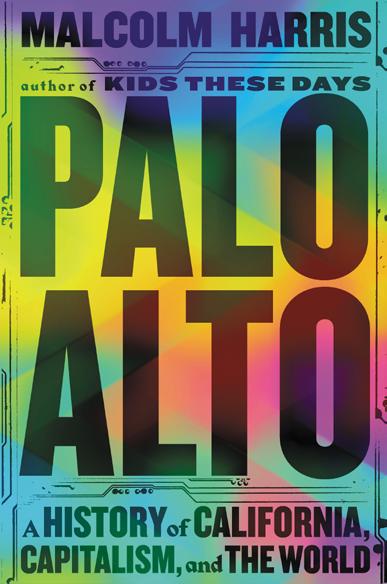
just a way for teenagers to torture their parents,” writes the author. As she examines the social meanings of language, she notes that most changes originate from young people, women, and lower-income groups to build solidarity and combat established authority. To illustrate, she dives into the evolution of the terms noted in the book’s title. As something called a discourse marker, like has been around for a surprisingly long time, although its ubiquity is recent. Another bugbear of older generations—the use of literally as an intensifying adjective—also has a complex history. It appears that many of the people who use it in this way may not know the actual meaning of the word, and they use it to mean very. Its new role demonstrates how linguistic fashions catch on, with social media spreading it beyond the originating group. Likewise, dude is no longer used exclusively by young men and has developed a myriad of meanings flowing from nuance and context. Fridland has great fun with her subject, following the various lines of argument and delving into the subterranean roots of changes. The growing use of the singular they, for example, relates to attempts to de-gender traditional language forms. In short, the book is an interesting, entertaining read.
With authority and wit, Fridland explains the evolution of language and embraces the dynamism it shows.

Friedman, Jena
One Signal/Atria (256 pp.)
$27.00 | April 18, 2023
9781982178284
A funny but critical look at the depredations of life as a woman comic.
Friedman is an acclaimed stand-up comedian, a writer for programs like The Daily Show, and a TV host. While this book chronicles her rise from improv bit player to Adult Swim personality, she stresses the minefields she encountered along the way. As she notes throughout a narrative that emphasizes a litany of grievances, personal and otherwise, comedy is an unregulated industry, which leaves room for sexual abuse, pay disparity, and everyday microaggressions. Being a woman in the business sometimes means bombing when taking on touchy subjects: The author opens with her being met with silence on election night 2016, when Trump’s victory was clear and she quipped, “Get your abortions now” on a panel with Stephen Colbert. For a book that turns on taboos and industry humiliations, Friedman is an amusing writer who happily dives straight into uncomfortable territory. For example, she recalls writing a satire of American Girl dolls targeting xenophobia, considers the lasting appeal of dead baby jokes (“a reflection of a traumatized society trying to heal itself through culture”), and transcribes her asking the likes of Jon Stewart and Patton Oswalt the kinds of dunderheaded and/or sexist questions she’s fielded—e.g., “What’s it like to be a man in comedy?” The author is thoughtful on cancel culture,
at once seeing how it can be overblown (“It’s always kind of funny when a famous comedian whines about cancel culture on a platform where we all can hear them”) while describing how former colleagues and supporters like Roseanne Barr and Jeff Garlin were impacted by it. The prose is sometimes exaggerated, and the text is repetitious and padded in parts, filled with old sex-advice columns, a review of a Jeff Koons exhibit, and other ephemera. Still, Friedman’s attitude of refusing to tolerate sexism—and willingness to mine it for comedy—prevails.
A serious memoir with jokes, self-deprecating yet rarely self-diminishing.

Gross, Neil Metropolitan/Henry Holt (272 pp.)
$27.99 | March 21, 2023
9781250777522
A former police officer sociologist examines reform through the lens of three departments and their farsighted leaders.
Gross, the author of Why Are Professors Liberal and Why Do Conservatives Care?, opens with a description of a traffic stop from his days as a Berkeley police officer. Such stops, trainers tell officer candidates, are dangerous even if for minor infractions: “you might pull over someone with a felony warrant…or a guy with anger issues looking for a fight.” All too often, the suspect is Black or brown, the officer White, and the situation ambiguous. Fortunately, the author’s episode ended without bloodshed. But he wonders if he had undertaken “de-escalation training” and had used a calmer tone, if it might have gone better still. It’s that intention to create calmer encounters that motivates police reform efforts in three communities in California, Colorado, and Georgia, with chiefs who understand that doing better is a mandate that begins at the top. “Not to put too fine a point on it,” Gross writes, “but some cops are assholes,” incapable of reining in aggression. Yet a friendly approach usually defuses potentially explosive situations. Other efforts include hiring more minority officers, who are less likely to use force and to enforce minor infractions, as well as enlisting minority communities to help formulate policies. Revised policies that limit armed response have led to demonstrably lower death rates. In the case of Longmont, Colorado, its chief’s directives “prioritized humaneness and social responsibility.” Gross points out that finding decent officers is a challenge: Not many people want careers in law enforcement, and “risk-averse mayors or city managers” often install leaders who don’t rock the boat—and don’t last long. As Gross shows, more work is needed, but his case studies constitute a step in the right direction.
A conversation-provoking look at the real world of police work and ways to make it better for all concerned.
“A conversation-provoking look at the real world of police work and ways to make it better for all concerned.”
walk the walk
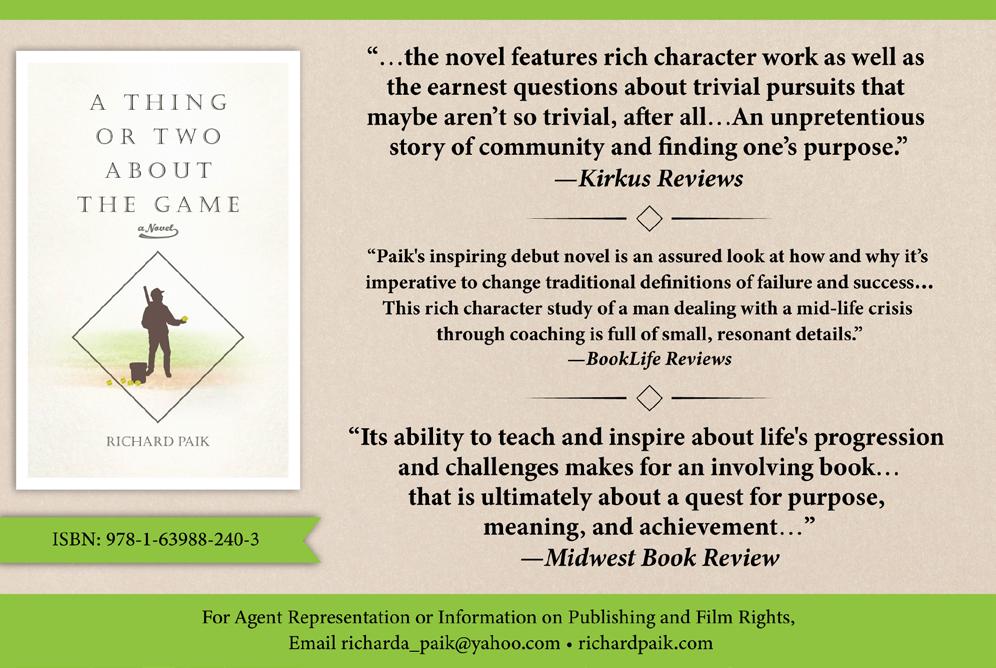

Hart, Sarah Flatiron Books (304 pp.)
$29.99 | April 11, 2023
9781250850881
A mathematician looks at fiction and poetry and discovers a great deal that excites her.
Hart opens by pointing out that Moby-Dick, Gulliver’s Travels, and Tristram Shandy all contain references to cycloids, a “beautiful mathematical curve.” Furthermore, Tolstoy writes about calculus, James Joyce about geometry. “Mathematical references in literary works,” writes Hart, “go back at least as far as Aristophanes’ The Birds, first performed in 414 BCE.” The author makes an entertaining case for the importance of math in literature, but literature lovers may or may not share
her fascination. Genuine insights appear throughout along with a great deal of information that would be classified as oddball. Readers will be amused if not enlightened to learn about Georges Perec’s 1969 novel, La Disparition, in which the most common vowel, E, was absent. In the sequel, Perec used E but no other vowel. It’s unclear how many readers will share Hart’s wonder at books whose pages are scrambled or the chapters readable in any order. Much of her text is not concerned with mathematics but numerology, the popular if often mystical fascination with numbers and letters, but readers may perk up at her engrossing analysis of the significance of certain numbers in various cultures—e.g., “the nine realms of Norse mythology, the Five Pillars of Islam, and biblical references like seven deadly sins, the twelve apostles, the twelve tribes of Israel, the forty days and nights of Noah’s flood, [and] the seventh seal.” Hart detours into intriguing areas that require close attention, including fractals and cryptography. Halfway through, she returns to the classics, especially Melville, Tolstoy, Joyce, and Poe, with an entire chapter devoted to Swift and nearly as much to the only genuine mathematician among them, Lewis Carroll.
Mathematics turns up here and there, but numerology continues to figure prominently, and Hart casts a critical eye on writers’ calculations and science, both of which are often incorrect. Scattershot but often ingenious.

Hatcher, Daniel L. Univ. of California (256 pp.)
$29.95 paper | Feb. 21, 2023
9780520396050
A disheartening exposé of how state and local judicial systems focus on privatization and profit.
Hatcher, a professor of law and advocate for social justice, delivers a well-researched, scholarly, disturbing synthesis of social history and legal treatise, tracking the long-term monetization of the justice system. “Racial and economic inequalities are inextricably intertwined in the profiteering used by each of our foundational institutions of justice,” he writes, offering an ominous reminder: “If justice falls, all else falls with it.” These quiet developments cause immense harm in vulnerable communities, and they contradict both due process and ethical requirements. As Hatcher asserts, “financial incentives must not be part of the justice equation.” In clearly organized chapters, the author delineates a harsh landscape where institutions such as child services, probation, local and state courts, and policing find ways to profit from increasingly punitive, fee-driven law enforcement, a system that frames poverty as a series of costly personal failings. Hatcher unearths distressing narratives from Michigan, Georgia, Ohio, and other states as various agencies collude with private interests to create fee-gathering structures directed toward the poor, many of whom can never climb out of the destructive cycle of debt. “This all seems confusing because it is,” writes Hatcher. “But what is clear is that the revenue strategy violates the separation of powers and judicial independence.” The child support system, notes the author, is no longer about helping children but “has been traded for revenue operations, with vulnerable children and their families being pulled into an industrialization of harm.” The final chapter reiterates the ongoing “racialized commodification” of for-profit justice. Regarding the obvious harmfulness of these machinations, Hatcher concludes, “this concern has largely been ignored because there is significant money to be made.” He writes with justifiable passion, but the discussion is often technical, paraphrasing cases rather than relying on varied evidence, so readership may be limited to specialists.
A useful, bleak exposé of a little-understood legal labyrinth constructed to harm the most vulnerable.
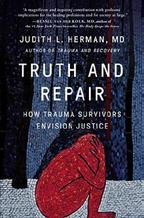
Herman, Judith L.
Basic Books (272 pp.)
$28.00 | March 14, 2023
9781541600546
Imagining healing for survivors of violence.
In this follow-up to Trauma and Recovery, Herman, a professor of psychiatry at Harvard Medical School with decades of experience treating traumatized patients, presents a set of strategies for recovery, with a particular focus on the experiences of women and children. As she explains, survivors must navigate several stages as they work toward therapeutic outcomes, beginning with securing a sense of present safety and then moving on to making sense of trauma through grieving, strengthening ties to a supportive network of others, and finally seeking justice through some form of public recognition. As Herman makes clear, healing requires seizing the moral attention of community members, who must play the crucial role of confirming that wrongs have been committed. “Acknowledgement of the survivor’s truth, acknowledgement of the harm she has suffered, and full apology, with remorse and without excuses—for many survivors, these are the requisite actions by which perpetrators and bystanders can begin the process of healing, moving from truth to repair,” writes the author, who makes a persuasive argument that acts of violence must be understood in both personal and transpersonal terms. In other words, individual trauma is always bound up with ideological structures that can facilitate forms of abuse and prolong suffering. To that end, Herman combines sensitive commentary on the testimonies of particular survivors with analysis of the social, economic, and legal contexts in which their victimization took place. Also astute are the author’s reflections on the shortcomings of the American justice system when it comes to serving “the well-being of the victim rather than the punishment of the offender.” Herman argues convincingly that, in many instances, survivors’ search for justice must include restorative rather than retributive justice. As it stands, “the justice system offer[s] them very little incentive to endure the rigors of a trial.”
A compelling outline of the necessary conditions of personal and collective recovery from trauma.
“A compelling outline of the necessary conditions of personal and collective recovery from trauma.”
truth and repair

Hilton, Paris
Dey Street/HarperCollins
(336 pp.)
$30.00 | March 14, 2023
9780063224629
One of the world’s most recognizable personalities delivers a memoir with surprising depth and purpose.
In her debut book, Hilton, with the assistance of a ghostwriter, presents a tender and triumphant account of her life so far. The author is furiously candid about multiple instances of sexual abuse she suffered as an adolescent. Like many survivors, she took refuge in her menagerie of pets. Had things gone differently, she might have been able to finish school and become the veterinarian she dreamed of becoming. However, because her parents thought she was partying too much in high school, they sent her to multiple facilities for so-called “troubled teens,” brutal institutions where occupants were subject to cavity searches, beatings, and solitary confinement. Reading like a prison-break movie, the text chronicles multiple escape attempts, each ending in failure. Breaking up the heartbreak are the author’s asides about her ADHD. Though she still suffers from PTSD, the author has become an advocate for shutting down facilities like the ones in which she suffered. She also points out that society is beginning to acknowledge the media’s relentlessly exploitative treatment of famous teenagers, especially young women. Hilton cites examples of her own as well as those of longtime friend Britney Spears. Perhaps the most impressive thing about this memoir is the gracious and compassionate eye with which Hilton views her past. Unlike many other similar stories, there is no tone of self-pity or martyrdom. Hilton has always been acutely aware of the agreement between celebrities and their fans, between the photographed and the photographers. She signed up to play the fame game and is determined to win, an attitude reflected in this inspiring and empowering book. Like the author, it is far more than its glossy exterior.
Delivering a master class in owning your story, Hilton shows how to live with purpose, compassion, and beauty.

Holten, Katie
Tin House (320 pp.)
$29.95 | April 4, 2023
9781953534682
An homage to trees in poetry, prose, and art.
Artist and activist Holten has gathered more than 50 contributions from writers, artists, philosophers, scientists, and others, all sharing
A Damn Near Perfect Game: Reclaiming America’s Pastime

Hardcover
by Joe Kelly with Rob Bradford
9781635768893 2/28/23
The Threshold: Leading in the Age of AI

Hardcover
by Nick Chatrath
9781635767988 2/28/23
The Lagoon: Encounters with the Whales of San Ignacio Hardcover by James Michael Dorsey
9781635768428 5/23/23

worlds without end
thoughts about our indelible connection to trees. Some entries are as brief as a sentence or two: “I am the seed of the free. I intend to bear great fruit,” Sojourner Truth writes. There’s a recipe for making oak gall ink, which can be used for writing (as it was for the Declaration of Independence and the Constitution) or staining a piece of furniture. Holten includes the lyrics to Radiohead’s “Fake Plastic Trees” as well as a song from singer/songwriter Susan McKeown. Some entries refer to particular species: an ancient elm cut down by the British during the Revolutionary War; evergreens, whose tips can be used for sun tea or salt; junipers, apricots, maples, and a baobab, among many others. When artist Maya Lin took on the project of creating a sculptural installation at Madison Square Park, she chose to transport Atlantic white cedars from the Pine Barrens of New Jersey, trees that died had due to extreme weather events related to climate change, to create a ghost forest—temporal, transient, and a stark warning about the perils of climate change, an issue that concerns many writers. Mary Reynolds writes about the creation of the rewilding project We Are The ARK, while Indigenous leader Nemo Andy Guiquita reports on threats to the Amazonian rainforest. William Corwin and Colin Renfrew, thinking about the origins of human creativity, speculate about why Paleolithic humans did not depict trees in their cave drawings. The book is graced throughout with Holten’s delicate artwork: dense threadlike forests; drawings of seeds, leaves, and roots; and her inventive Tree Alphabet. Other contributors include Zadie Smith, Amitav Ghosh, Richard Powers, Ada Lovelace, and Robin Wall Kimmerer. Even Plato makes an appearance. Ross Gay provides the introduction. An appealing, celebratory offering with an urgent message.

Howard, R.T.
Oxford Univ. (384 pp.)
$32.95 | April 26, 2023
9780192862990
Analytical study of the work of British, French, and other intelligence services to attain accurate information on Hitler’s regime.
While the governments of Britain and France pursued appeasement to attempt to contain Hitler’s ambitions, they—along with Czechoslovakia and Poland—also launched complex programs to place spies on the ground inside Germany to gather particular bits of information. One spy learned, for instance, that Germany’s vaunted Luftwaffe was unprepared for war as late as 1938, though at home in London, British military planners nonetheless agonized over questions such as whether German efficiency and the availability of skilled labor and raw materials, including rubber and steel, could speed the military buildup. Historian Howard notes that the “constantly evolving” relationships among the prewar allies meant that information and its interpretation were not efficiently shared. Furthermore, due to
shifting diplomatic arrangements, Czech spies were disinclined to work with the French. For their part, writes Howard, the French were very good at detecting German spies on their turf and at turning them into double agents, even if the Gestapo was also quite adept at ferreting out those agents and providing them with false information. Some of Howard’s cases in point are dashing, in the manner of movie spies, such as one British officer who had “a keen interest in fast cars, amateur dramatics, and poetry.” Wowing his peers but sometimes offered doubtful assertions, he did provide solid data on the increasingly bellicose turn of public opinion inside the Reich. Howard’s narrative plods along—he’s certainly no Alan Furst—but there are useful observations throughout, particularly when he speculates about whether a stronger coordination of efforts among the allies “could have exploited the specific vulnerabilities of the Third Reich and perhaps averted war.”
Profitable reading for students of spycraft and the early stirrings of the war in Europe.
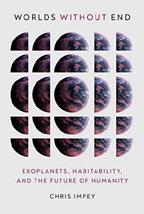
Impey, Chris MIT Press (376 pp.)
$29.95 | April 11, 2023 9780262047661
An exploration of the feasibility and ethical implications of establishing human life beyond Earth.
In his latest, Impey, an acclaimed astronomy professor and author of Einstein’s Monsters, Dreams of Other Worlds, and many other books about the cosmos, blends a history of astronomy with a tour of the latest technologies and leading pioneers in space exploration. To date, scientists have discovered more than 5,000 exoplanets, which are planets that orbit around stars other than our sun. This number is expected to rapidly increase as technology makes it easier to recognize and image exoplanets and to identify those in the socalled “habitable zone.” In turn, this means that the possibility of discovering extraterrestrial life is increasingly within reach. “It is astonishingly likely that we are not the only time and place that an advanced civilization has evolved,” writes Impey. Meanwhile, the habitability of Earth is diminishing, with little progress toward a solution to the current “sustainability crisis.” The author surveys the many planets that may harbor life, the current technologies and scientists that enable these profound discoveries, and the possible future technologies that may bring us there and allow for long-term settlement. Throughout these complex yet fluid discussions, Impey emphasizes the need for careful introspection about the ethics of expanding our footprint in space and whether we should instead focus our resources on overcoming climate challenges on Earth. “Populating space is an activity that pushes us outward while inducing introspection and motivating us to grow as a species,” he writes. In the coming decades, a slew of endeavors to image, traverse,
“A provocative and expansive introduction to the exciting new field of exoplanet science.”
and explore the far reaches of our solar system and beyond will bring these issues to the forefront of decisions for long-term survival. “We are curious,” he writes, “whether the experiment that began on Earth soon after its formation has been replicated anywhere else.”
A provocative and expansive introduction to the exciting new field of exoplanet science.
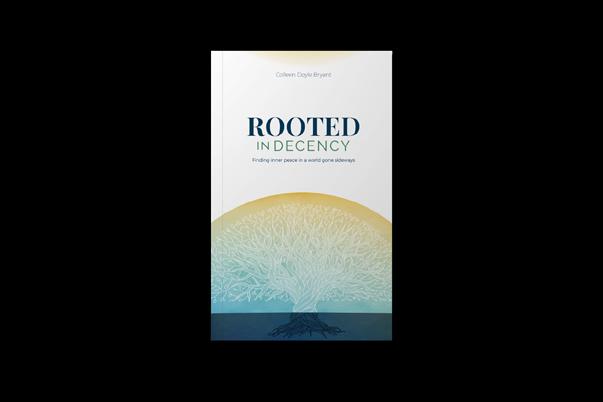

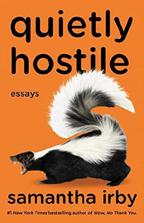
Irby, Samantha Vintage (288 pp.)


$17.00 paper | May 16, 2023

9780593315699





Irby returns with another collection of wide-ranging personal essays. The author, a self-declared fat, sick, and queer comic, comments on everything
from her mother’s last words to her favorite Dave Matthews Band songs (“People always pretend to be shocked when I say I unabashedly love Dave Matthews, but…why?”). Irby begins her latest book by telling readers to respond to cultural snobs with the simple declaration, “I like it!” And yes, “the exclamation point is necessary.” So begins a sprawling essay collection that humorously celebrates all manner of quirky, even socially unacceptable, behavior, from unapologetically loving the seriously uncool items in the first essay—e.g., Justin Bieber, milk, Trader Joe’s, and Instagram—to bickering with her sisters over her mother’s deathbed. As in her previous books, Irby delivers a few formally inventive pieces. One chapter, for example, consists mostly of an explanation of the tags on modern porn videos. Another is a list of answers to questions about toilets and bowel movements, while yet another is a “list of the greatest Dave Matthews songs to swoon over.” Scatological humor aside, Irby’s most successful essays are her most vulnerable, especially the one about losing her mother. At the line level, the author’s humor and wordplay positively sizzle, and her chapter titles are characteristically amusing: “I Like To Get High at Night
and Think About Whales,” “Oh, So You Actually Don’t Wanna Make a Show About a Horny Fat Bitch With Diarrhea? Okay!” However, some of the essays carry on too long, bogging readers down in repetitious detail—e.g., an exhaustive list of ways in which Irby would ruin old Sex and the City episodes if she could time travel back to the original writers room. Overall, though, the narrative bursts with the compassion, insight, honesty, and wit that have made Irby a household name.
A mostly hilarious book about embracing life’s least flattering situations.
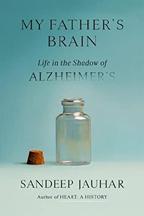
Jauhar, Sandeep
Farrar, Straus and Giroux (256 pp.)
$28.00 | April 11, 2023
9780374605841
A doctor and bestselling writer chronicles his father’s battle with dementia. Jauhar, a cardiologist and author of Interned, Doctored, and Heart, begins with the revelation that his father, Prem, a world-class geneticist in his 70s, was forgetting more than usual. Prem noted that forgetting is a normal part of aging, but while waiting for a doctor’s appointment, the author asked what they ate for lunch, and he couldn’t remember. In a testing session, Prem counted backward from 100 by sevens and wrote a sentence correctly but failed to spell world backward or draw a clock with the time 11:10. The diagnosis was mild cognitive impairment— mental functioning “worse than expected for his age.” MCI affects about 1 in 5 elderly adults, 20% of which will progress to Alzheimer’s. Readers will know the outcome but continue to turn the pages as Jauhar delivers a gripping account of Prem’s steady decline through the “seven stages” of Alzheimer’s. He was soon unable to manage his finances or remember details of his personal history. Within two years, he entered the middle stages, requiring help with daily activities such as dressing, and he became paranoid and suspicious and lost his way if he left the house. In the advanced stages, he was unable to walk alone or control his bowels and bladder, all of which led to a protracted period of being bedbound, incontinent, and refusing to eat. Unlike many Alzheimer’s patients, Prem remained at home, the consequence of a devoted extended family, plenty of money, and an incredibly dedicated helper. Besides his father’s story, Jauhar describes the disease’s history, its affect on the brain, and how America’s health care system deals—or fails to deal—with it. Caring for a dementia patient can cost families $80,000 per year, and medical-related bills lead to over half of bankruptcies. European nations do better, but there is little political support in the U.S. for reform.
A painful yet affecting read that is also difficult to put down.
Univ. of Chicago (512 pp.)
$32.50 | April 5, 2023
9780226821481
From its inception, the science of reading has been intertwined with American anxieties about culture.

The science of reading, writes history professor Johns, began in the latter decades of the 19th century, as the proliferation of print in American life gave rise to worries that it would overwhelm a vulnerable public. The nascent field of experimental psychology studied the process of reading, developing two instruments that would be improved upon and used for decades to come: the tachistoscope, which measured how well subjects recognized words; and the eye-movement camera, which recorded the behavior of subjects’ eyes as they read passages of text. The author’s account ranges back and forth, tracing his topic’s implication in eugenics, adaptation to improvements in World War II aircraft cockpit design, adoption by industry to improve the efficiency of the workforce, and incorporation into modern machine-reading technology. It’s a mammoth subject, and Johns takes some detours to explore, for instance, mid-20th-century librarianship’s adoption of the tools of science to expand its mission. In a later chapter on “the reading wars,” the author delves into Rudolf Flesch’s highly influential 1955 jeremiad, Why Johnny Can’t Read, but those who have familiarity with the push-pull between whole-language and phonics-based teaching will have seen the planting of those seeds in the dismayed discovery that the early-20th-century turn toward science-based instruction in silent reading revealed a population of students with dyslexia. Johns’ argument that this “Manichean dualism” has fed today’s popular suspicion of scientific expertise is dismally convincing. The commercialization of the science of reading is also a constant, seen in the line of products leading from the Ophthalm-O-Graph through the Talking Typewriter, the Dynabook, and Hooked on Phonics, as well as such contemporary products as Feng-GUI and Microsoft’s MCR. Illustrations include laboratory photographs of subjects at formidable-looking testing apparatus and equally daunting diagrams that attest to researchers’ efforts.
A leggy, fascinating survey of a discipline that is often taken for granted.
“A painful yet affecting read that is also difficult to put down.”
my father’s brain
Kaku, Michio
Doubleday (320 pp.)
$30.00 | May 2, 2023
9780385548366

A renowned physicist explains the mind-blowing potential of quantum computing.
Translating complicated scientific concepts into language that lay readers can understand is an art. Kaku, a professor of physics at the City University of New York, is one of the best practitioners. He has written numerous books on advanced science, technology, and mathematics, including Parallel Worlds, Physics of the Future, and The God Equation. In his latest, the author delves into the emerging field of quantum computing, which certainly could “change everything.” As he writes,
“quantum computers can tackle problems that digital computers can never solve, even with an infinite amount of time.” The key is that quantum computers utilize atoms arranged in precise patterns to vibrate in unison instead of using chips or transistors. Kaku examines the underlying physics of quantum mechanics, encountering a variety of colorful figures and scientific disputes along the way. Integrating these principles into functional computer systems was enormously difficult, but the project eventually came together. In the past few years, tech companies have poured billions of dollars into research and development. The first generation of quantum computers is here, and one of the leading companies, IBM, even provides public access through the internet. At present, quantum computers require massive cooling systems and superstable environments, but further research might address these problems to make them more widely available. Kaku examines how quantum computing could profoundly affect biotechnology, medicine, energy, food production, and environmental modelling—virtually every aspect of human activity. One problem, however, is that quantum computing could render every computer security measure

ghosts of the orphanage
effectively obsolete. The author pauses occasionally to provide summaries, which is important given the inherent complexity of the subject. As always, Kaku’s enthusiasm is contagious, and this latest book is an important guide to a crucial part of the tech future.
An informative and highly entertaining read about the computing revolution already underway.

Kem with David Ritz
Simon & Schuster (320 pp.)
$28.99 | April 4, 2023
9781982191245
Athlete
Kaliss, Gregory J. Univ. of Illinois (248 pp.)
$24.95 paper | April 18, 2023 9780252087066
A scholarly study of Black athletes’ protests in the 1960s and ’70s and their complex legacy.
Casual sports fans are likely familiar with Muhammad Ali’s activism and how track stars Tommie Smith and John Carlos raised Black Power fists on the medal podium at the Mexico City Olympics in 1968. History professor Kaliss expands on those moments and explores how they were part of a larger effort among Black athletes and women to improve their status during the era, both within their sports and American society. A constant challenge among those protesters, the author shows, was determining how much to work with the system and how much to push against it. For instance, the Black Economic Union, led by star NFL running back Jim Brown from 1966 to 1973, provided financial support for individual Black businesses but paid little attention to systemic racism and ultimately fizzled. In 1969, 14 Black football players at the University of Wyoming were dismissed because of their work pressing for broader change. (The school formally apologized for its actions in 2019.) Forward movement, Kaliss observes, could only be achieved via half-measures—Billie Jean King, for instance, could only win better pay for women tennis pros by softening feminist rhetoric (and partnering with cigarette brand Virginia Slims). The tension between competing visions of progress played out vividly in Ali’s first championship bout with Joe Frazier, where, Kaliss writes, the two became proxies for different ideas of Black manhood and social protest. “Racial politics,” writes the author, “lay at the heart of the impassioned responses to the fight.” The text is well researched and engaging for an academic book. Indeed, a chapter on the ABA, a street-wise counterweight to the stuffier NBA, and its role as a precursor to the hip-hop era, deserves expansion into its own book.
Valuable background reading for anyone interested in sports activism.
An R&B star looks into his heart. Making his book debut with a raw memoir, three-time Grammy nominee Kem, assisted by veteran music writer and co-author Ritz, recounts his rocky journey from self-destructive behavior to professional acclaim. Born Kim Owens in 1969, Kem was a shy child who felt unloved by his father and often ignored by his mother, who, for many years, was a functioning alcoholic. By the time he was a teenager, he tried to dull his pain with drugs and alcohol. In high school, he recalls, “smoking weed and drinking beer became an every-day thing. Sometimes before school, sometimes after. My dependency grew gradually but steadily.” He remembers his senior year through an “alcoholic fog.” After his father threw him out, he lived on the streets, stealing, lying, and “sinking into a quicksand of self-loathing.” When he landed in a Salvation Army shelter, he knew he had hit rock bottom. One of the residents knew, too, and urged Kem to attend a Twelve Steps meeting with him. It proved transformative. The program “was the first time in my life when I was consciously aware of searching for something. I was searching to better myself. Searching for a way to stop the hemorrhaging, the bleeding out of my life into this bottomless pit of despair.” Kem made a commitment to sobriety that, he realizes, “depends on daily spiritual maintenance,” including prayer, meditation, and music, which had always been a passion. He found inspiration in New Age churches, where he heard “God’s inspiration in all music.” Marianne Williamson, senior minister at one church, invited him to join her choir, which turned out to be an exhilarating experience for him and led to other public performances. In the 1990s, determined to write an album, he began an arduous process “to unearth the music buried in my heart”—a process that has earned him many accolades.

A forthright chronicle of hard-won success.

Kenneally, Christine PublicAffairs (384 pp.)
$30.00 | March 21, 2023
9781541758513
A continent-ranging account of the terrors of a system of warehousing unwanted children.
According to a sobering study in Australia in the early
“A powerful work of sociological investigation and literary journalism.”
2000s, writes Kenneally, “the residents of orphanages were overwhelmingly not orphans.” As the author shows, this is a global problem. Though the orphanage system has largely given way to foster care and adoption, to say nothing of imprisonment, for generations, countless children were condemned to orphanages because their parents did not want them or could not care for them. Forgotten there, the children were subject to sexual and physical abuse at the hands of priests, nuns, wardens, and staff members; in numerous instances, they wound up dead at those same hands or, in some instances, murdered by fellow wards. Kenneally examines orphanages in Australia, the U.S., and Canada and delivers a distressing amount of somber news. For example, many “survivors,” as they often call themselves, wind up dying young from drug or alcohol abuse or suicide. By the author’s account, those who died within the system were overwhelmingly Indigenous or Aboriginal children far out of proportion to their numbers. “Many children who died were not named by the schools, nor was their date of death noted, and for almost half of the children, the cause of death was not recorded,” she writes. In one school, Kenneally recounts, 6 of 8
chaplains in charge had been accused of sexual abuse, while one now-elderly nun, with only a touch of remorse, admitted, “We had permission to kick the children.” When these stories first came to light in the 1990s, notes the author, they were too often dismissed as fabrications, but now, says one reporter, “Finally in 2022…people are willing to hear these stories and believe them.” Kenneally makes a strong case for prosecuting still-living monsters and providing reparations for their still-living victims. A powerful work of sociological investigation and literary journalism.

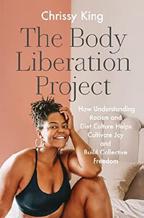
King, Chrissy Tiny Reparations (320 pp.)
$27.00 | March 14, 2023
9780593187043
The racist underpinnings of the diet industry.
A blogger and creator of anti-racism courses for fitness and wellness professionals, King makes her book debut with an impassioned argument urging women to liberate themselves from a culture of “thin privilege” that validates thinness and Whiteness as markers of beauty. The disdain that many women of color feel about their bodies, she asserts, comes from our “white supremacist society that is inherently fatphobic, homophobic, and transphobic.” Women face demeaning stereotypes that equate being fat with being undisciplined, slovenly, or stupid, resulting in disparities in income, medical treatments, and even access to clothing. King speaks from experience when she reveals her own struggle to remake her body. Even as a child, she was taller than other kids, and she stood out as a Black girl at an affluent White school. Longing to fit in, King looked around at magazines, TV, and ads and decided she needed to be thin. At 13, she began calculating her caloric intake; at 17, she discovered the restrictive Atkins diet; at 24, she joined a gym and told a personal trainer that her goal was to be skinny. After decades of suffering body dysmorphia and striving for an unrealistic image of perfection, King argues convincingly that body love and body acceptance are not enough to transcend a prejudiced diet culture and racist attitudes about Black women’s bodies. Instead, she advocates for body liberation—i.e., the belief that “at our essence we are so much more than our bodies.” The author calls out women who claim to promote inclusivity and diversity while still holding racist views, and she decries the pretense of “performative allyship.” Following each chapter, King presents a list of questions and exercises that she calls “From Principle to Practice,” asking readers, for example, “When was the first time you were made to believe something was wrong with your body?”
A fervent message about self-worth.
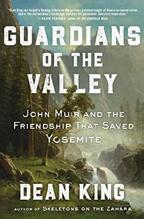
King, Dean Scribner (480 pp.)
$30.00 | March 21, 2023
9781982144463
A comprehensive account of John Muir’s long battle to save Yosemite.
Scottish immigrant and Sierra Club founder Muir and conservation-minded President Theodore Roosevelt are remembered as the saviors of Yosemite and the neighboring redwood-rich slopes of California’s Sierra Nevada. However, King, the author of Skeletons on the Zahara and nonfiction adventure tales, demonstrates that many other players figure in that story, especially Robert Underwood Johnson, “one of America’s most prominent magazine editors,” who took it as his duty to “wrangle stories out of Muir” and urged him to take his considerable powers of communication to audiences via lecture tours and visits to Congress. Yosemite, Kings Canyon, Sequoia, and other areas were under full-scale assault in the Gilded Age. Foresters wanted the giant trees, miners wanted ores, and agricultural concerns and cities wanted the mountains’ vast stores of water. On the latter, one of the titanic battles Muir and Johnson fought—and lost—was to include the Hetch Hetchy Valley in their proposed Yosemite National Park; instead, Hetch Hetchy fed San Francisco with water for generations. The two protagonists were very different. “Whereas Muir was a philosopher and a man of action in the outdoors, he felt hopeless at swaying policy makers,” writes King. “Johnson, on the other hand, was an activist shaping the nation’s conversation.” Nonetheless, their collaboration was fruitful: Muir wrote for Johnson’s magazines and took political leaders to see for themselves, while Johnson worked the halls of Congress. King’s narrative is long but mostly lively, turning up small but meaningful moments of history—e.g., a gruesome train accident on a high grade or the felling of a giant redwood to cart off to exhibit in Chicago. The author is particularly adept at recounting the complex politics surrounding frontier resources in a time when official policy was utilitarian: multiple use and the greatest good for the greatest number of people—which, inarguably, preserving Yosemite forever accomplished.
A welcome study of environmental politics in action.
Trans. by Nina Bogin
New Directions (64 pp.)
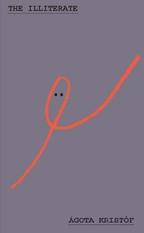
$13.95 paper | April 4, 2023
9780811234856
The late Hungarian writer chronicles how she fled her homeland, relearned to read, and began to write.
In this very slim volume, to be read in a single afternoon, Kristóf (1935-2011)
“A
guardians of the valley
briefly recounts her childhood, when she teased her younger brother; fleeing Hungary, in the mid-1950s, with her husband and baby; settling in Switzerland, where she worked in factories; laboriously learning French; and, eventually, beginning to write. Throughout the book, the author’s love of language is evident. “I read. It is like a disease,” she writes about herself as a child. In Switzerland, where she struggled at first to learn French, she found herself unable to read for the first time in years: “I have become illiterate once again.” More than anything, this book is an account of becoming a writer. As a companion to Kristóf’s novels, it is a valuable document, providing insight into her writing process—“The factory is a good place for writing poems. The work is monotonous, you can think about other things, and the machines have a regular rhythm that accentuates the lines of verse. In my drawer I keep a sheet of paper and a pencil. When the poem takes shape, I note it down”—as well as her relationship with several different languages and with literature in general. “What I am certain of is that I would have written,” she notes, “no matter where I was, in no matter what language.” Kristóf’s prose is precise and frequently luminous: There is no preening or pretense, and her sentences have an
affectless quality that imbues the writing with a stark intensity. As a stand-alone volume, though, the book doesn’t quite hold up. If you are new to Kristóf’s work, this will serve as an effective appetizer; if you’re already familiar with her oeuvre, it will make a fine dessert.
A tiny jewel of a book.

Larman, Alexander
St. Martin’s (432 pp.)
$29.99 | April 18, 2023

9781250284587
The second in a series about the Windsor family follows the hand-wringing over Edward VIII’s perfidy courting the Nazis during World War II—and official attempts to contain him.
In this follow-up to The Crown in Crisis, British historian Larman uses his access to new letters and diaries to provide a thorough, occasionally poignant consideration of the “fascinating psychodrama of the uneasy relationship between King George VI and the Duke of Windsor,” two brothers and kings who didn’t want the role. Edward VIII (David to his family and friends) abdicated the crown in favor of his unprepared younger brother, Albert (Bertie); worse, he demonstrated distinct pro-Nazi sympathies that came to haunt the royal family and government. Stepping down from the crown in December 1936 because he could not rule with the woman he loved, American Wallis Simpson, the two caused nothing but headache and anxiety for Britain. They were married in Nazi collaborator Charles Bedaux’s French château, roamed Europe with appeasement sympathizers, and even visited Hitler in October 1937. With the outbreak of war and danger of the Windsors being kidnapped by the Germans or manipulated for political use, King George VI arranged with Prime Minister Winston Churchill to coerce the duke to serve as governor of the Bahamas over the course of the war. However, the duke never relented in pressing for a royal title for the duchess and having her invited to court, among other tiresome entreaties. Drawing heavily on accounts by Edward’s lawyer, Walter Monckton, and private secretaries Alec Hardinge and Tommy Lascelles, among other close observers, Larman ably portrays the deep layers of emotion and intrigue among the various players—notably, the warming relationship and support between King George VI and Churchill during a time of international crisis.
Fully fleshed portraits of royal siblings under duress. Royal watchers will eagerly await a third installment.
Lee, Julia
Henry Holt (256 pp.)
$26.99 | April 18, 2023
9781250824677
A Korean American scholar and writer reflects on how America’s White supremacy culture has shaped her life and politics.
Lee, a professor of African American and Caribbean literature, begins her story with an anecdote about she and her mother hurling bottles of juice at each other in a mutual fit of incandescent rage. Their anger, writes the author, arose from their multigenerational exhaustion with coping with the pressures of White supremacy. Lee then describes a White teacher’s negative response to an essay she wrote “about how the ‘popular girls’ at our school were invariably white and wealthy and (often) blond,” and she also digs into relevant historical moments, including the response to the Rodney King verdict in 1992. In doing so, the author traces how her relationship with Whiteness has both fueled her rage and stoked her desire to resist the oppression inherent in America’s racial hierarchy.
At first, Lee remembers being unwittingly tolerant of this structure, as when, at age 8, she rejected a Black Cabbage Patch Kid because she said she wanted an Asian doll—even though, secretly, she admitted that she would have taken a White doll instead. In adulthood, Lee realized that no matter how hard she tried to align with Whiteness, that culture would never serve her. “Asian Americans,” she writes, “are the beneficiaries and the victims of white supremacy…but we have a choice. We can uphold the power structure or we can dismantle it.” Throughout the book, the author advocates for choosing the latter. From the opening scene, in which Lee takes “passive-aggressive” revenge on a racist professor by coming to class in an “Angry Little Asian Girl” shirt, the text consistently glimmers with humor, vulnerability, idealistic clarity, and, as promised, incandescent rage. Lee’s honest, compassionate analysis of her past mistakes leaves readers plenty of space to address their own.
A lively, wise, and immensely insightful memoir about Asian America’s relationship with Whiteness.
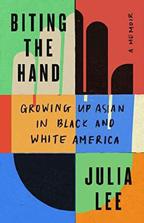
Lindsay, Jim
St. Martin’s (256 pp.)
$27.99 | March 7, 2023
9781250282422
A by-the-numbers account of a Marine sniper’s years in combat during the Vietnam War.
With 103 confirmed kills, Chuck Mahwinney is “the US Marine Corps’ deadliest sniper.” Raised in rural Oregon and used to hunting rabbits and deer, he scored at the top of his boot camp class. Early on in his account of Mahwinney’s training, Lindsay telegraphs his main point: “Little did Chuck know that the rifle he held in his hands was a copy of the rifle he would use to outscore all marine snipers before and after that moment.” Mahwinney was thoroughly trained as a sniper before landing in Vietnam, where he was made a machine gunner, a thankless and statistically dangerous specialty. Finally talking himself into posts as a spotter and then a sniper, he did three tours, “averaging six kills a week” by the end of the first. Lindsay describes Mahwinney’s landing for home leave in San Francisco and being accosted by flower children calling him a “baby killer,” a trope that has no documented basis in fact (it comes from the Rambo film franchise). More believably, Mahwinney figures in a number of unpleasant but realistic combat scenes that end poorly for the people at the receiving end of his Remington: “A hole appeared in the man’s forehead as bloody brain matter burst from the back of his skull.” After rotating back to the civilian world, Mahwinney struggled with PTSD and self-medication while working as a forest ranger, his fame catching up to him via commerce, with a branded knife and special-edition rifle. Though it deals with a different war and
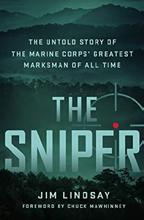
“A lively, wise, and immensely insightful memoir about Asian America’s relationship with Whiteness.”
biting the hand
a different era, Anthony Swofford’s Jarhead is a superior look inside the mind of a Marine sniper.
Of some interest to students of gun aficionados and those interested in the Vietnam War as it was fought on the ground.

Mar, Alex
Penguin Press (384 pp.)
$28.00 | March 28, 2023
9780525522157
A brutal murder ends in reconciliation—at least of a sort.

“Where’s the money, bitch?” According to court records, that’s what Paula Cooper, a Black teenager, shouted as she stabbed an elderly White woman in Gary, Indiana, in 1985. Arrested the next day,
Cooper entered a system of juvenile justice that, as Mar notes, is overwhelmingly populated by minority members, as was true in the case of the Black perpetrator and her three accomplices. The judge agonized: “He says he’s been asked many times over the past few months for the age at which juveniles should be charged as adults, and he does not know the answer.” Two accomplices received terms of 35 and 60 years, and the third, who did not enter the house but essentially organized the crime, was sentenced to 25 years in a plea deal. Cooper, at 15, became the youngest woman ever sentenced to death. Multiple appeals followed, even as public sentiment in the Reagan era turned increasingly in favor of the death penalty. Meanwhile, the victim’s grandson, at first aching for vengeance, gradually took the view that capital punishment was wrong and began a long, lonely campaign to fight against it, including holding vigils at executions. Mar’s story has a redemptive conclusion of sorts: Cooper was released on parole after serving nearly 20 years after the grandson petitioned the judge to do so. Against the grandson’s hope, however, she found no way to “reenter society.” In the Trump era, the court system has turned actively pro–death
penalty, with Attorney General William Barr reviving federal executions and the conservative Supreme Court ruling, in one case, that in cases of homicide, sentences of life without parole are permissible even for a juvenile, “without the need to rule on whether that young person has a hope of rehabilitation.”
A probing examination of the intersection of race, crime, and punishment.

Marian, Viorica
Dutton (288 pp.)
$28.00 | April 4, 2023
9780593187074
An absorbing account of how language wires the brain.
Marian, director of Northwestern’s Bilingualism and Psycholinguistics Research Lab, is an expert on the relationship between language and the human brain. In this eye-opening account, she describes the results of decades of research in accessible, engaging prose. Some of the most intriguing conclusions are related to bilingualism and multilingualism, which have been shown to delay Alzheimer’s, increase the brain’s gray matter, and positively impact social cognition in children. Bilingual babies can better distinguish between musical notes, suggesting that the powerful effects of multilingualism on the brain are present even in nonverbal areas. Furthermore, languages bring cultural connotations, memories, and connections. “Learning another language doesn’t just give you different words or more words,” writes the author. “It rewires your brain and transforms it, creating a denser tapestry of connectivity.” This radical transformation means that multilinguals communicate and even vote differently depending on which language they are using, allowing them to become a somewhat different version of themselves. Memories and emotions differ across linguistic and cultural experience and have clear manifestations in bilinguals. For example, people tend to be more emotional when speaking in their native language. On the individual level, being bilingual improves creativity, executive function, and aging. Socially, politically, and psychologically, understanding how languages affect the brain is just as essential, especially in the U.S., where more than 350 languages and dialects are spoken. “Engaging with a variety of languages,” writes the author, “gives us crucial abilities that the human race will need to heal burgeoning social discord and to formulate solutions to looming global problems.” Thoroughly researched and carried by Marian’s own experiences as a multilingual who speaks fluent Romanian, Russian, and English, the narrative is both fascinating and fluid.
Full of delightful insights, this book is thoroughly researched and compulsively readable.

Martin, Clancy Pantheon (464 pp.)
$28.00 | March 28, 2023
9780593317051
A recovering alcoholic reflects on his experiences with suicidal ideation. Novelist and philosophy professor Martin, the author of How To Sell and other books, has survived more than 10 suicide attempts. In his disturbing, thoughtfully composed self-analysis, the author admits to chronicling oscillating between hating his life and being grateful to be alive. Married three times and the father to five children, Martin harbors a deep understanding of others who suffer with the same dark feelings of despair, including several suicidal relatives in his deeply dysfunctional family. Each of the memoir’s three sections correspond to distinctly pivotal periods in his life. The author considers how complex and pervasive thoughts of self-annihilation initially infiltrate someone’s psyche. While mining his own experiences, including chilling anecdotes about his “gun-in-mouth phase,” he describes the suicidal histories of notable writers and celebrities (Kate Spade, Anthony Bourdain, Robin Williams). While experts impart captivating psychological explanations, Martin’s perspective inspires the most incisive and disquieting passages. Sections on his murky descent into alcoholism smoothly dovetail with accounts of the author’s candid, heartfelt work toward making peace with life and pages of proactive “tools for crisis” for anyone considering suicide. As a philosopher, Martin provides sharp insight about how two distinct historical luminaries—Buddha and Freud—both postulated that the human “death drive” is as fundamental to our psychology as our desire to eat or have sex. Martin’s belief that suicidal people can “see into the world of ghosts in a way that sturdier folks cannot” is as fascinating as his attempts to draw correlations between suicide and theories on addictive thinking. Not one to gloss over any aspect of his difficult journey, the author dissects the thorny dilemma that has tormented him since childhood. With dark humor intact, he humanizes it in a way that makes it palatable for readers chronically haunted by suicide—or those whose lives have been touched by it.
Disquieting, deeply felt, eye-opening, and revelatory.
“Disquieting, deeply felt, eye-opening, and revelatory.”
how not to kill yourself
McConahay, Mary Jo Melville House (336 pp.)
$27.99 | March 14, 2023
9781685890285
A close-up study of the once-unlikely wedding of the Catholic right with hardcore Protestant advocates of small government and White supremacy.
The Catholic vote is important, writes journalist McConahay, author of The Tango War: 75% turned out in 2016, “and since 1952, their vote usually goes to the winning presidential candidate.” In 2016, that meant Trump, who, for all his irreligious behavior, commanded the allegiance of a large number of American priests and bishops—and not solely because of the abortion issue. The rightward turn, which, the author notes, puts many members of the American Catholic hierarchy against the views of the current pope, dates back to the Reagan era, when Catholic activist Paul Weyrich forged an alliance with the evangelical right, with Jerry Falwell’s so-called Moral Majority (a term coined by Weyrich) leading the charge to pull down the wall separating church and state. In another unholy alliance, right-wing Catholics also made common cause with the Koch brothers, who, though professing no objections to same-sex marriage or abortion, shared their hatred for government intervention in business and social issues. McConahay examines the Catholic connection with such prominent right-wing actors as Supreme Court Justice Clarence Thomas and his Trump-adherent wife, a Catholic convert, along with forerunners such as Phyllis Schlafly and Richard Viguerie. Ironies abound, not least Catholic support for Trump against fellow religionist Joseph Biden and the widespread episcopal rejection of science to resist vaccinations and climate change programs, to say nothing of their dismissal of the notion that women can ever serve as priests or deacons. In this searching yet occasionally heavy-handed investigation, McConahay concludes—as have many before her—that the trajectory of the American Catholic Church may one day lead to a schism with Rome—backed, of course, by White nationalist dollars. Dark money meets medieval thought in this intriguing exposé of American Catholicism and its rightist discontents.
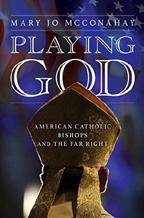

McCormick, Robert “Mack”
Ed. by John W. Troutman
Smithsonian Books (264 pp.)
$29.95 | April 4, 2023
9781588347343
A dogged researcher illuminates the mysteries and majesty of Robert Johnson. McCormick (1930-2015), an influential musicologist and folklorist, was known for the massive archive he had assembled on seminal blues artists as well as his refusal to share so much of it. He dubbed his archive “the Monster,” and he struggled to tame it into book form, which makes this long-awaited publication a significant event in music scholarship. Edited by Troutman, a curator of American music at the Smithsonian’s National Museum of American History, this volume contains an early draft of the Johnson manuscript that the author had revised for decades and ultimately abandoned before his death, in addition to Troutman’s preface and afterword. It’s a highly readable account of his discoveries. When he began, McCormick had little useful information about his subject beyond the towns mentioned in Johnson’s recordings, which had been reissued to great acclaim. He proceeded through the Mississippi Delta area, knocking on doors and asking questions, a White outsider in predominantly Black communities. There were no photos of Johnson and almost no information on where he was born; nor was there agreement that his name was actually Robert Johnson. Still, McCormick pushed on, diligently recording his findings in text and photos. He describes how he shared the reissue of Johnson’s recordings with those who had heard the music in person, and he records eyewitness testimony from the night of his murder, likely poisoned by a man who had warned Johnson away from a woman. This edited version of the manuscript could stand on its own as a revelation, but the contextual material adds to the intrigue. Troutman interrogates some of McCormick’s methods while raising the larger issues of race and appropriation. “Rather than collaborate with living Black intellectuals to study Black music,” writes Troutman, many White collectors and writers “preferred to pursue…what they considered the authentic Black experience, the real, through their own, self-guided, personal quests of blues discovery.”
A worthwhile investigation into a true legend of the blues.

Miller, Michelle Harper/HarperCollins (320 pp.)
$27.99 | March 14, 2023
9780063220430
The co-host of CBS Saturday Morning recounts the quest for her biological mother.
Miller’s father was a successful surgeon who, even in supposedly progressive Los Angeles, encountered a color line that prompted him to political activism. As the author writes, she was “the child of a clandestine affair,” and her father was reticent to reveal to her the identity of her mother, who was clearly not Black. “If I wore my hair blow-dried straight,” Miller writes, “people queried whether I was Italian, Jewish, or Hispanic, peppering me with questions about my heritage long before I had examined such questions for myself.” Among the Southern relatives with whom she lived, her mixed-race status was acknowledged, if quietly. However, no details were forthcoming until her gravely ill father suggested that she find her mother to answer the questions he knew his daughter harbored. One, of course, is why her mother abandoned them. Enter the color line again and the manifold prejudices of the era. Those color lines were still in play, writes Miller, when a classmate and crush, shocked to find out that she was Black, shunned her afterward. Unlike many such memoirs, the author refuses to wallow in self-pity. Instead, she is determined to claim her heritage and honor it. Unfortunately, her mother continued to distance herself, at which point Miller resolved, “no longer would I accord her half of my identity, when she had given me nothing of hers.” That view gained further nuance as Miller grew to middle age and deeper wisdom. Though the author prepared a special TV segment in the hope that her mother would finally “publicly acknowledge the Black child she had borne,” she understands that it will likely remain unrealized in a time when the color line still holds strong.
An affecting narrative that explores race and racism while addressing deeply personal questions.
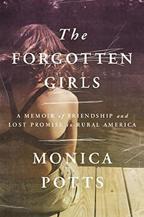
Potts, Monica
Random House (272 pp.)
$28.00 | April 18, 2023
9780525519911
A journalist examines the forces that allowed her to escape the limitations of a rural upbringing but caused a beloved friend to fall into poverty and despair.
Driven to understand why poor, uneducated White women were dying at higher rates than ever before, Potts, a senior politics reporter for FiveThirtyEight, went back to her Ozark hometown to live and work. Her professional interest in the subject belied a more personal reason for her return. Until she left to attend Bryn Mawr, Potts had spent her childhood and adolescence growing up among the very women she was now studying. Darci, a smart girl with numerous prospects, had been her best friend. However, Darci also grew up with a mother who did not set behavioral boundaries and often relied on “God’s plan” to see her through difficulties, including her volatile marriage to Darci’s father. By contrast, the author had far stricter and more grounded parents. The Potts family centered their lives on their daughters’ success, and they moved out of town to keep them away from the wayward boys, drugs, and alcohol that could prevent them from getting an education. A set of fortuitous accidents offered Potts the opportunity to attend a Barnard pre-college summer program, which opened doors that allowed her to attend an elite college far from her hometown. In the meantime, pregnancy and a descent into drugs and alcohol led Darci to drop out, after which she began a heartbreaking slide into poverty, mental illness, violent relationships, and repeated incarceration. Potts pointedly examines the complicated relationship between two childhood friends who experienced radically different life outcomes, and she creates a compelling sociological and cultural portrait that illuminates the silent hopelessness destroying not just her own hometown, but rural communities across America.
A hauntingly cleareyed and poignant memoir with strong, illustrative reportage.
Prince Harry Random House (416 pp.)

$36.00 | Jan. 10, 2023
9780593593806
A royal tell-all with some substance.
Arriving at the end of the royal couple’s multimedia barrage that included a six-part Netflix documentary, Prince Harry’s eagerly anticipated memoir delivers further revelations about his struggles within the institution of the British monarchy and the unrelenting harassment he has endured from the British tabloids. The author also offers insights into his reported feuds with his brother, Prince William, and father, King Charles— most recently regarding his relationship with his wife, Meghan Markle. It may seem that Prince Harry has a particular ax to grind, and this notion intensifies as he recounts the events related to his courtship of Meghan. However, his story is more substantive than some readers might expect, depending on their loyalties to the monarchy. Beginning with memories of his mother’s tragic death in 1997, the author moves on to his lackluster schooling at Eton and his more remarkable career in the British Army (he served two combat tours in Afghanistan). The
“A hauntingly cleareyed and poignant memoir with strong, illustrative reportage.”
the forgotten girls
narrative frequently casts evocative light on the inner workings of the British monarchy and the various players involved. While his pen may be more harshly directed toward his father and brother than to others, such as Queen Elizabeth, the author also provides interesting glimpses into the likes of Prince Philip and Camilla, queen consort. If sometimes disparaging, his portraits are also surprisingly sympathetic. The prose is competent, and the author’s tales are consistently engaging—and far less smarmy than the self-aggrandizing tone set in the Netflix series. Readers may question Prince Harry’s motives, but his emotional struggles, though occasionally rendered in an overwrought fashion, feel palpable and heartfelt. “My problem has never been with the monarchy, nor the concept of monarchy,” he writes. “It’s been with the press and the sick relationship that’s evolved between it and the Palace. I love my Mother Country, and I love my family, and I always will.”
A harrowing, sporadically self-serving account of life in and away from the British monarchy.
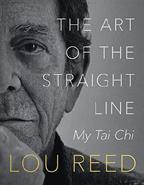
Reed, Lou
Ed. by Laurie Anderson, Stephan Berwick, Bob Currie & Scott Richman
HarperOne (304 pp.)
$39.99 paper | March 14, 2023
9780063093539
The late, great musician and associates recount his passion for an ancient martial art.
“I have to say, it’s strange and wonderful to collaborate with someone who’s been dead for almost ten years,” writes Reed’s longtime partner in life, artist and musician Laurie Anderson, who takes Reed’s sketchy notes on tai chi and blends them with interviews and contributions from others who share his ardent love of what practitioners call “playing.” One of them is actor Michael Imperioli, who writes that “martial arts was a gateway for me into a spiritual path.” Certainly it was for Reed, who emerged from his years with the Velvet Underground with serious addictions to alcohol and drugs and remade himself through decades of nearly daily practice. Reed writes appreciatively of his teachers, most of them Chinese immigrants who brought the Wu and Chen traditions to New York. The gentle Wu helped him acquire better emotional health, while the explosive Chen gave him the joy of stomping about. Along the way, practitioners and peers such as Iggy Pop (a serious devotee of qi gong) and Tony Visconti discuss the physical, mental, and spiritual elements of the martial arts, with Visconti allowing that the youthful excesses that felled so many of their peers were ameliorated by the time spent in practice: “Tai Chi is a life saver.” Throughout the book, bits and pieces of Reed’s wisdom, often delivered with a sting—everyone agrees he wasn’t always the nicest guy—drop into the reader’s lap—e.g., don’t be afraid, be alert to bullshit, and “be as tender as possible.” The Reedian snarl and sneer are always in evidence, too, as when he says
with faux dismissiveness, “I mean if being an auto mechanic was actually healthy for you, maybe I’d have done that.”
A pleasure for students of tai chi and fans of Reed’s music alike.
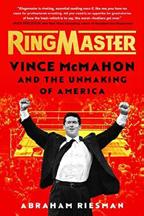
Riesman, Abraham
Atria (464 pp.)
$28.00 | March 28, 2023
9781982169442
An in-depth biography of the controversial pro-wrestling titan.
Riesman, the author of True Believer: The Rise and Fall of Stan Lee, opens with Ron DeSantis, who made an early exception to Covid-19 rules by allowing pro-wrestling productions to be filmed by any company that met certain criteria. Only one did, namely World Wrestling Entertainment, owned by Vince McMahon and his wife, Linda, the latter a major Republican player who “donated $7 million to pro-Trump super PACs” in 2016. In many ways, McMahon’s backstory is a classic rags-to-riches tale, but as Riesman notes, it was fueled by an arsenal of resentments, with McMahon once declaring, “I’m going to be the guy that I despised when I was growing up.” Becoming that guy involved both real-world nastiness and a healthy amount of kayfabe, carnival talk for the fictions that suppose that, for instance, Rowdy Roddy Piper and Hulk Hogan were truly mortal enemies both inside and outside the ring. Kayfabe also describes the overall fabrication that the action in pro wrestling is real and unscripted. The “new status quo,” writes Riesman, involves neokayfabe, where “the pleasure of watching a match has less to do with who wins than with the excitement of decoding it.” It doesn’t take much to integrate these terms into the Trumpian universe—and, according to some observers, McMahon is one of but two people from whom Trump will accept a call anytime. For her part, Linda McMahon was “a perfect example of kayfabe morality,” heading the Small Business Administration under the Trump administration without apparent scandal—even as WWE was striking a lucrative deal with the Saudi government that now constitutes a large percentage of its revenue. Toppled from leadership by financial scandal, McMahon still controls the WWE as majority shareholder, and “his legacy is secure in the industry he remade.
A vivid, warts-and-all portrait of the man behind WrestleMania—and much of the worst of contemporary politics.
all else failed
Roberson, Blythe
Perennial/HarperCollins (304 pp.)
$18.99 paper | April 18, 2023
9780063115514
A Brooklyn-based humor writer and comedian travels the U.S. seeking freedom and adventure.
In her latest book, Roberson, author of How To Date Men When You Hate Men, recounts her trip across the country with the goal of writing “a female American travel narrative” in the vein of those written by Jack Kerouac. “My book,” she writes, “would answer the question: what if Bill Bryson got his period?”
Despite safety warnings from her family and friends, Roberson quit her job and ventured out in a borrowed Toyota Prius, traveling predominately west across the U.S., hitting popular national parks along the way. Though she set out to chronicle the next Great American Road Trip, “acquiring Junior Ranger badges was the organizing principle of my trip.” At each destination, Roberson gives brief, occasionally intriguing details about the history and wildlife of the area, but she seems more content completing the activities in the Junior Ranger booklet than deeply experiencing each region. Most of her stops involved a short hike, where she wanders the landscape and flirts with park rangers, before dashing off to her next location. Throughout the narrative, Roberson shares information she learned regarding the effects of climate change and offers wellintentioned yet overly familiar, surface-level critical discussions of the European genocide of Indigenous peoples in North America. Further, she questions the morality of visiting national parks, including the part she is playing. Though she contends that one should not feel guilty for enjoying the national park system, “we should work toward returning control of the parks to Native Americans.” While many of her political and environmental points have validity, few of them are novel. The author’s goal of writing a memorable female American travel narrative is commendable, but she tries to accomplish too much, skating across numerous themes and tones, resulting in a book that fails to leave a lasting impression.
An admirable work that falls short of its goal.

Rubin, Gretchen Crown (288 pp.)
$28.00 | April 18, 2023
9780593442746
The author of The Happiness Project examines the five senses.
As in her previous books about personal transformation and well-being, Rubin once again combines elements of memoir with scientific data. Following a distressing trip to the eye doctor, the author realized she had been taking her senses for granted. For years, writes the author, she felt stuck inside her head, disconnected from the world, other people, and herself. “I wanted to appreciate the moments of my life more fully; I wanted to get out of my head and into my life; I wanted to deepen my knowledge of the world, of other people—and of myself,” she writes. For each of the five senses, Rubin shares her research on their mechanics. “By immersing myself in strong sensations for this experiment,” she writes, “I hoped I’d sharpen my five senses for the rest of my life.” Living in New York City, she visited the Metropolitan Museum of Art every day for one year to help heighten her awareness of her senses. The author also engaged in other exercises, often including her family and friends. These included decorating part of her home with “a mass of color out of objects” she found; attending the traveling “Immersive Van Gogh” exhibit; curating an “Audio Apothecary” playlist of her favorite music; living in her “Silent Home Retreat” for three days; learning perfumery; organizing a tasting party; lying in a “sensory enhancement” tank; and, most adventurously, experiencing ayahuasca with a guide. As her journey progressed, Rubin evolved: “I felt more awake, more serene, more present in my body.” She also discovered that she was noticing and connecting with other people to a greater degree. The takeaway is that we can actively shape our sensory experiences rather than passively enduring them.
For active seekers, Rubin again provides simple insights for becoming more aware of place, self, and others.
Sachs, Dana
Bellevue Literary Press (304 pp.)

$19.99 paper | March 21, 2023
9781954276093
When governments fail to rescue those fleeing political terror, it’s up to volunteers to step in.
Sachs, a journalist and co-founder of Humanity Now: Direct Refugee Relief, opens her account in a ramshackle district of

“An account of humanitarian aid that is both inspiring and troubling.”
Athens, the capital of the nation through which, by 2015, more than 800,000 refugees from Africa and Asia had passed on the way to other parts of Europe. “They needed help,” writes the author, “but Greece, buried in debt, did not have resources to address the crisis.” The EU distributed millions of euros, but inefficiently, while the U.N. was slow to react. Consequently, private individuals from all over the world came to the aid of the refugees, providing food, medical assistance, clothing, and other necessities. Altruism underlay most of their efforts, but, as one British woman told Sachs, “We’d had our own shit.” Having experienced troubles with the immigration system herself, she had empathy for the experiences of the Syrians, Afghans, and others who had wound up in that Greek camp with no place else to go. Many volunteers mustered the bravery to swim into rough waters to rescue refugees in danger of drowning after their smugglers’ boats sank. Eventually, many refugees were able to aid themselves by taking donated food and cooking for hundreds of people at a time. Sadly, writes Sachs, for all the efforts of those involved, burnout is common: “Some longterm volunteers decided that close relationships with refugees drained them emotionally and compromised their effectiveness.” Meanwhile, some volunteers behaved as if the camp were a holiday venue; when corrected, they protested that this was how it was in Europe and that the refugees had better get used to it. In the end, the volunteer efforts were only partially successful; the situation required professionals. “The story of displacement can’t have a happy ending,” writes Sachs. Still, one can only try.
An account of humanitarian aid that is both inspiring and troubling.

Schepper, Robin F. Girl Friday Books (396 pp.)
$28.95 | April 18, 2023
9781954854963
A political operative recounts her long struggle to find her biological father.
Schepper, born in America but a German speaker until entering school in Manhattan, was raised by a single mother, and she “was called a bastard child in the Catholic Church” because her mother gave birth to her out of wedlock. Her mother, an international flight attendant, was always vague about the father’s identity. (In an intriguing passage, Schepper speculates on her mother’s relationship with the Indonesian dictator Sukarno: “If Dr. Sukarno had been successful in his advances toward my mom, she might have become one of his wives—and I would have never existed.”) The author’s grandmother ran a brothel, which required Schepper’s intervention when Nana was back in Germany and “some of the girls wanted to do house calls to make more money, which was against Nana’s rules of operating her business.” Work in the film business and then politics followed, with Schepper always on the
lookout for clues and DNA that would establish the facts of her parentage. The clues her mother left were unhelpful, but Schepper proved to be an adept investigator, stymied but never broken by a long chain of dead ends and false leads. Unfortunately, some of the matters that she would have profitably spent more time on go by in a flash, such as her service in the West Wing as the head of Michelle Obama’s program to encourage young people to exercise. Where she could go deeper into the inner workings of political campaigns, the writing often falls flat: “I worked the event in Boston for election night, when Dukakis lost to George H.W. Bush. It was hugely demoralizing, as we all feared how Bush would lead our country.” Adoptees and those in search of birthparents may find the example of Schepper’s perseverance to be inspiring, but a handbook for political advance work it’s not.
A heartfelt memoir whose details are unusual but whose center is unexceptional.
Schoenberger, Nancy
Harper/HarperCollins (240 pp.)
$30.00 | April 4, 2023
9780062947178
Retelling the story of Blanche DuBois through the eyes of those who played her.
In her latest, Schoenberger, author of Dangerous Muse, offers a fresh examination of an iconic literary character: the troubled hero of Tennessee Williams’ A Streetcar Named Desire. Schoenberger views Blanche through the lenses of eight women and their unique perspectives: Williams’ sister, Rose (“the great, enduring love of his life—the person he was most haunted and inspired by”), who likely inspired several characters in his works, including Blanche; and actors who took on the role of Blanche, including Jessica Tandy, Vivien Leigh, Ann-Margret, Jessica Lange, Patricia Clarkson, Cate Blanchett, and Jemier Jenkins. By closely examining what each actor brings to the character, Schoenberger shows us an appealingly diverse array of personas of an unforgettable woman. For instance, Leigh portrays a woman dancing on the verge of madness, while Blanchett sees her as clinging to her sanity. Tandy makes her crafty and clever, and Ann-Margret brings out her sexual prowess. According to Clarkson, “I think of her as part hooker and part schoolteacher—I think they go hand in hand! She’s not this crystal pure person by any stretch of the imagination, so I didn’t play her like a frail moth. Her past becomes her present, and she brings all of that with her to New Orleans.” Jenkins, the most recent to play Blanche, is “one of the few African American actresses to undertake the role, with great success, according to many laudatory reviews.” Throughout the book, the author invites readers to consider Rose and her direct relationship to Blanche. Ultimately, despite these new takes, she remains an enigma. “Not knowing just how we should judge Blanche makes

ordinary notes
her even more enigmatic—unforgettable,” writes the author. “We are still trying to solve the mystery of Blanche.”
A delightfully satisfying roundup for both longtime fans of Streetcar and newcomers.

King Jr.
Seletzky, Leta McCollough
Counterpoint (304 pp.)
$27.00 | April 4, 2023
9781640094727
As reconstructed by his daughter, the life of an undercover police officer present at the assassination of Martin Luther King Jr.
The famous photograph of a mortally wounded King on the balcony of the Lorraine Hotel in Memphis shows three people pointing at the window where the bullet came from and one man kneeling at King’s side. The kneeling man was Marrell “Mac” McCullough, then an undercover agent for the Memphis Police Department, later a CIA officer. “Dad came and went, but the black-and-white image of horror remained, unalterable and mute,” writes litigator and essayist Seletzky, who excavates the facts of her father’s life, many of which he was reluctant to discuss for reasons both personal and professional. Many questions remain: Mac, for instance, remembers the smell of gunpowder at the site of King’s murder, leading him to suspect that an exploding bullet was involved. At the time, that material was only available to the military, leading eyewitness Andrew Young to tell the author, “I don’t want to be in a position to think that high officials in our government arranged to kill my friend.” Mac was called before congressional investigators who questioned whether he himself was involved in the assassination. We will likely never know whether the government or Memphis police had anything to do with the murder, and, to judge by his daughter’s account, Mac is the kind of man who will take secrets to his grave. Fully aware through hard personal experience of Southern racism, why was McCullough so willing to act as a spy among Black Power student groups? Seletzky’s approach is nuanced, weaving her father’s story and its many loose threads into her own—e.g., when she considers the racism of his era in light of the present and “the creeping feeling that I had more neighbors supporting Trump than I’d ever imagined.”
Students of 1960s anti-war movements and civil rights history will find useful information in this revealing footnote.

Sharpe, Christina
Farrar, Straus and Giroux
(392 pp.)
$35.00 | April 4, 2023
9780374604486
A potent series of “notes” paints a multidimensional picture of Blackness in America.
Throughout the book, which mixes memoir, history, literary theory, and art, Sharpe—the chair of Black studies at York University in Toronto and author of the acclaimed book In the Wake: On Blackness and Being—writes about everything from her family history to the everyday trauma of American racism. Although most of the notes feature the author’s original writing, she also includes materials like photographs, copies of letters she received, responses to a Twitterbased crowdsourcing request, and definitions of terms collected from colleagues and friends (“preliminary entries toward a dictionary of untranslatable blackness”). These diverse pieces coalesce into a multifaceted examination of the ways in which the White gaze distorts Blackness and perpetuates racist violence. Sharpe’s critique is not limited to White individuals, however. She includes, for example, a disappointing encounter with a fellow Black female scholar as well as critical analysis of Barack Obama’s choice to sing “Amazing Grace” at the funeral of the Rev. Clementa Pinckney, who was killed in a hate crime at the Mother Emmanuel AME Church in Charleston, South Carolina. With distinct lyricism and a firm but tender tone, Sharpe executes every element of this book flawlessly. Most impressive is the collagelike structure, which seamlessly moves between an extraordinary variety of forms and topics. For example, a photograph of the author’s mother in a Halloween costume transitions easily into an introduction to Roland Barthes’ work Camera Lucida, which then connects just as smoothly to a memory of watching a White visitor struggle with the reality presented by the Legacy Museum in Montgomery, Alabama. “Something about this encounter, something about seeing her struggle… feels appropriate to the weight of this history,” writes the author. It is a testament to Sharpe’s artistry that this incredibly complex text flows so naturally.
An exquisitely original celebration of American Blackness.
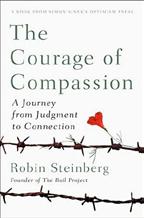
Steinberg, Robin & Camilo A. Ramirez
Optimism Press (256 pp.)
$28.00 | April 11, 2023
9780593084625
An urgent plea for a more humane criminal justice system.
Writing with her former colleague Ramirez, Steinberg notes that being a career public defender
“An
has meant protecting “those most vulnerable when the government seeks to take away liberty.” In this book, she explores both her reasons for devoting her life to defending “those people” and stories of clients victimized by the legal system. Steinberg credits her drug-addicted father, a man who cycled in and out of jails and mental institutions, for teaching her the importance of advocating for even the most troubled people “because they never cease to be a human being.” This lesson in compassion helped her with the many difficult cases she encountered throughout her career, like the one involving a Russian Jewish immigrant wrongly charged with sodomy. The apparent heinousness of the crime did not deter Steinberg from getting to know her client, gaining his trust and finding evidence of a forced confession. Though she did not win the case, what she learned prepared her for later encounters with police corruption and brutality. It also laid the groundwork for the Bronx Defenders, which the author founded to train young lawyers how to “put up a real fight, center our clients’ voices, and think about our work through a systemic lens.” Her work with the Defenders, combined with her strongly held feminist beliefs, led her to create what she calls a “holistic defender office” in Oklahoma, which has the highest rate of female incarceration in the U.S. Steinberg’s commitment to reforming a racist, xenophobic, classist, and misogynist criminal justice system is undeniably inspiring, as is her unshakeable faith that “compassion restores our shared humanity,” making us “freer and more authentic.” Her uplifting vision will resonate with social justice reformers and any readers interested in the ongoing fight for justice in a broken system.
Powerfully insightful reading.
Stewart, Jamie
And Other Stories (240 pp.)
$26.95 | April 4, 2023
9781913505585
The singer and composer for the avant-pop group Xiu Xiu boldly dishes on the darkest corners of their desires.
As Stewart writes, their sexuality was anything but conventional. Their first childhood experiences involved being penetrated by a young male friend and taking pictures of a neighbor boy having sex with a stuffed unicorn. Later, the author became a voracious consumer of porn magazines without fully knowing “how jacking off worked.” They first came into contact with the waywardness of adult desire as a preadolescent when their mother’s attractive but “deep-end nutjob” friend absentmindedly fondled her thighs in front of them. At around the same time, Stewart was also experimenting with such actions as inserting knife handles into their anus and putting their penis inside vacuum cleaner hoses. They also experimented with girls, but the author did not meet their first girlfriend—who shaved Stewart’s entire body the first time they slept together—until much later in adolescence. Stewart’s adult sexual experiences
have been wide-ranging and diverse, including uninhibited threesomes; relationships with both dominatrixes and female submissives; sex-club escapades with myriad gender identities; anonymous glory hole sex in adult store video booths; and one “unsuitable” relationship with a much younger woman who was “even crazier than I was.” Graphic and crudely humorous, Stewart’s book says little about the successful music career they managed to build at the edges of an unrestrained sex life. Yet their story, which will appeal to only the most adventurous of readers, is anything but a self-satisfied catalog of conquests. Rather, it is a tragicomic depiction of how Stewart used sex to cope with deep—and even tragic—family dysfunction that they hint at but never fully explore. At the beginning, Stewart offers a telling author’s note: “If we are related, please, for the love of God, do not read this book.”
A powerfully erotic memoir that may have a limited audience.

Talty, Stephan Mariner Books (464 pp.)

$35.00 | April 11, 2023 9780358581284
The legacy of a self-proclaimed Messiah.
The rise of extremist patriot groups and militias, including those who stormed the Capitol on Jan. 6, 2021, has inspired several new books about the Branch Davidians, a sect that many right-wing groups believe was exterminated at the hands of the tyrannical U.S. government. Drawing on sources that include FBI files and eyewitness testimony, Talty focuses his thoroughly researched history on the troubled and troubling life of Vernon Wayne Howell (1959-1993), better known as the Branch Davidians’ leader David Koresh. Howell grew up among Seventh-day Adventists in a small town in East Texas, raised in part by his grandmother while his 14-year-old mother worked at one menial job after another. His childhood was marked by cruelty: He was bullied by other kids, whipped by his frustrated mother and her new husband, and sexually molested. He hated school but loved church; most of all, he loved the Bible. He claimed to have visions and to hear God.
“As one local writer said, saying God talked to you was like saying the Avon lady rang your doorbell that morning,” writes Talty. “It happened to someone every day.” The author follows his subject’s search for acceptance, by the Adventists, Southern Baptists, and by girls he fell madly in love with. One after another, they rejected him, fed up with his religious proclamations, egotism, and need to control every aspect of their lives. As one girlfriend put it, “His visions were curiously tailored to what he wanted.” In 1981, Howell’s fortunes changed after he insinuated himself into a leadership role among the Branch Davidians; in 1990, he changed his name to reflect his status as their savior.
Talty recounts in vivid detail his rise among unquestioning followers; his apocalyptic prophecy that led them to amass weapons; and the ill-conceived government surveillance that ended in a deadly raid.
A dark chronicle of hubris and violence.
Thomson, David Knopf (288 pp.)
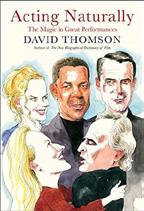
$30.00 | Feb. 7, 2023
9780593319291
A passionate, personal look at a subjective subject.
Early on, acclaimed film critic Thomson declares, “I like or love all actors.” Throughout the narrative, the author nimbly ambles his joyful way through his extensive film knowledge and his reflective attitude toward the people who act in them. Ever since he was a child, he “held these screen phantoms in total trust.” So, readers may ask, what is good acting? According to Thomson, “it is making us watch very closely, as if we were doing it ourselves.” The author admired the performances of Carey Mulligan, a work in progress, but was waiting for her to “burst out.” Finally, the “wounding but exhilarating experience” of Promising Young Woman (2020) let her “go wild.” As a young moviegoer, he could feel James Dean’s “mastery.” Anthony Hopkins is a “majestic player…with an endless appetite for work,” and Thomson loves that “he will try anything.” Meanwhile, Denzel Washington strides through Déjà Vu “as if crossing the Potomac, certain of a place in history.” Meryl Streep, Thomson proclaims, “will be a mainstay in this book, our godmother and a genius, too.” On the Waterfront is a “sonata for a great actor pretending to be dumb.” In addition to assessing the performances of individual actors, the author is excellent on close-ups, a “window on the possibility of soul or mind.” He is also convincing in his arguments for the crucial importance of casting, and he presents fascinating hypotheticals. What if two key actors in a certain movie were cast in the opposite roles? While examining an entire “universe of film stars, those iconic, axiomatic presences”—e.g., Gary Cooper, Cary Grant, Gregory Peck—Thomson delves into another intriguing area: Can an ordinary, nonactor act? He offers Bicycle Thieves and A Man Escaped as evidence in the affirmative. Throughout, the author provides movie suggestions, many of which readers will want to seek out immediately.
An informative, “wild party” for movie fans and actors, veterans and newbies alike.

Vachon, Todd E.
Temple Univ. Press (298 pp.)
$39.95 paper | April 21, 2023
9781439923221
A call to scrap the notion that a healthy environment and a healthy economy cannot coexist.
Labor union activist and scholar Vachon advocates the so-called Green New Deal, which would remake the economy to reduce reliance on fossil fuels and replace them with renewable energy. He notes that the labor unions associated with service, such as nurses and communications workers, are most likely to favor this transition, while those involved in extractive industries are naturally inclined to oppose it. For example, even though coal is declining as a power source, “the workers and their unions…blamed the devastation not on the forces of capitalism but rather on the government— in particular, the Environmental Protection Agency and its pollution and emission regulations.” Vachon argues for a brand of activism that pushes beyond the bounds of “Jobs vs. the Environment,” and instead holds out for the “clean air and good jobs” premise of his title, which, by transforming the energy economy, will necessarily demand workers skilled in growing fields. To do so, writes the author, activists will in turn necessarily work “to attempt to redefine the situation, shift the ideological perspective of unions, and build a movement to create an alternative path forward.” Vachon writes from a neo-Marxist point of view, addressing the modern alienation of producer from product while battling the “entire edifice of support for the fossil fuel regime” that is undergirded by “neoliberal, capitalist ideology.” The author too often deploys the bloodless prose of post-postmodernism (“the Green New Deal itself has become a political space where the nested but competing frames of just transition described in this book—protective, proactive, and transformative—are being discussed and debated”), making his text a chore to read at times. Still, the overall argument is worth hearing out. Arid language notwithstanding, this book will appeal to climate and clean-energy activists.

Vilden, Lynx
HarperOne (288 pp.)
$28.99 | April 11, 2023
9780063215108
A memoir that serves as “an exploration of what a closer relationship with the natural world can offer us.”
British-born Vilden grew up in London and rural Sweden, and she lived in a series of “squat houses”
“An informative, ‘wild party’ for movie fans and actors, veterans and newbies alike.”
acting naturally
in Amsterdam as a teenager. She also resided in a small Swedish village at the edge of a forest, where she had a job in theater. Now, in north-central Washington state, she inhabits a world of “peace, stillness, and silence,” living with the seasons and from the land. Described as “a primitivist, the last modern huntergatherer, or a woman outside of time,” for the past 20 years she has run workshops to teach students “how to live with the land in a respectful and conscientious manner.” At the school she founded, Living Wild, she offers a rugged immersion program in Stone Age living. In her spirited debut book, Vilden melds memoir with a detailed recounting of one Stone Age immersion project, when she and her clan challenged themselves to live in the wilderness as hunter-gatherers using nothing but primitive tools. The participants’ motivations varied: Some (Vilden created composites of her students) sought escape from what they saw as the falseness of civilization; others looked for spiritual solace; some, a balm for their emotional fragility. To prepare, they had to learn skills such as starting a fire without matches, building a shelter from foraged wood, making bows and arrows, fishing, hunting, and processing the animals they killed. “With each project I was learning, recognizing essential foundational truths,” Vilden admits, “but the list seemed endless.” As clan members quickly realized, Stone Age living was precarious and exhausting. Weather could turn life-threatening, and most critically, they risked starvation without enough calories to survive, especially from meat and fat. Besides chronicling a season at Living Wild, Vilden reports on her pilgrimages to the Himalayas, Egypt, and Namibia; her several marriages; and the joy of her daughter’s birth.
A rigorous, colorful portrait of true wilderness living.
Vollmer, Matthew Hub City Press (256 pp.)

$16.95 paper | April 4, 2023
9798885740050
A writer navigates the challenging first year of the pandemic in addition to the grief caused by the death of his mother.
In January 2020, as the Covid-19 virus was just arriving in the U.S., Vollmer, a professor of English and author of two books of short stories and two essay collections, was mourning the loss of his mother, who had died three months earlier due to complications related to Alzheimer’s and Parkinson’s. He was also becoming increasingly obsessed with the mysterious lights his father saw flickering in the woods almost nightly at their family home in the mountains of western North Carolina. Vollmer wondered if the lights were a sign that his mother was trying to communicate with them from beyond the grave. His father, a staunch Seventhday Adventist, refused to believe in the possibility of ghostly presences, but he grew increasingly unsettled by the lights, to the point that several of his friends and colleagues called his son,
concerned about his mental state. By May 2020, his father had reconnected with Jolene, a woman he knew in college now living in Guam. At that time, the lights stopped appearing. Two months later, Jolene was in the U.S., and the two immediately married. Much of the book revolves around the author’s swirling memories of the past, particularly of his dynamic and loving mother before her decline. Those memories are entangled with his ambivalent relationship with the strict religion in which he was raised as well as with his mother’s concerns that his abandonment of Adventism would risk the possibility that his family could reunite “all of us together in the end” in the afterlife. Raising more questions than he answers, Vollmer nevertheless delicately portrays his “unmoored” state of mind and its evolving connection to radical changes to his family and the world.
A tender and touching, if inconclusive, tribute to family bonds.
Voloj, Julian Illus. by Wagner Willian
Abrams ComicArts (176 pp.)
$24.99 | April 4, 2023
9781419759864
An illustrated biography of the chess prodigy.
During the depths of the Cold War, Bobby Fischer (1943-2008) became the most renowned and controversial champion in American chess history. Born in Chicago and raised by a single mother in Brooklyn, he was obsessed with chess as a child, and he displayed a remarkable grasp of the game’s intricacies. He honed his skills in the New York chess clubs, where he defeated much older and more experienced players, but the rest of his life became an afterthought, as he ignored his schoolwork, family, and any semblance of a social life. He was making headlines in his early teens, before his ambitions and fame spread internationally—especially in the Soviet Union, which ruled the global chess landscape. “The Soviet players were not only professionals, no, they were grandmasters,” writes Voloj, in this collaboration with Willian. “The government subsidized them, and in the USSR, they were treated like movie stars or Olympic athletes….Bobby wanted to be as brilliant as the Soviet grandmasters.” Despite the Soviet dominance, Fischer defeated Boris Spassky in the 1972 encounter labeled “The Match of the Century.” The author suggests that the psychological machinations that turned Fischer into a chess master had significant mental health consequences, which combined with emotional immaturity issues and political pressures to undermine his public image. He sabotaged matches with outrageous demands and flouting of rules, and he demanded extravagant financial compensation for appearances. He also made numerous antisemitic comments over the years, and he eventually faded into obscurity—dethroned from his championship, disgraced, and exiled. The text handles the
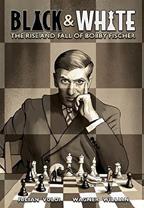
after the miracle
subject’s complications with clarity and grace, while the illustrations serve as a fitting complement, fully exposing the psychic torment of a man in free fall. For further details about Fischer’s fall from grace, turn to Frank Brady’s Endgame
An illuminating introduction to an enigmatic 20th-century figure.
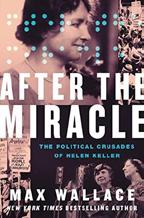
Wallace, Max Grand Central Publishing (416 pp.)
$30.00 | April 11, 2023
9781538707685
A fresh look at an international icon, offering new perspectives on her life and work.
Helen Keller (1880-1968) is remembered today as a deaf and blind child who learned to read, write, and speak, graduated college, and lived a productive life devoted to helping others. This was only part of her story, writes Canadian journalist and filmmaker Wallace in this compelling biography, which aims to quash the traditional maudlin portrayal as well as the misleading Oscar-winning 1963 movie whose hero is not Helen but her teacher, Annie Sullivan, the “Miracle Worker.” Though the author praises Sullivan as a brilliant teacher, he adds that Keller’s greatness was not merely her ability to learn, but what she accomplished with it. She was fluent in six languages, read vastly in all, and wrote numerous books, essays, and lectures, many highly opinionated. When she published her bestselling autobiography, The Story of My Life, in 1903, she was already hailed as an inspirational figure. This remains the popular image, although even during her life, the media worked hard to discount activities that would have offended admirers. Keller joined the Socialist Party of America in 1909 but left after several years because she believed it was too moderate. Like many reformers, she welcomed the Russian Revolution, and she never lost her “admiration” for the Soviet Union, even after it became unfashionable. She denounced racism both in the American South and South Africa long before it became fashionable, spoke out against poverty and child labor, supported unions and women’s suffrage, and served as a founding board member for the ACLU. This created difficulties for historians as well as journalists, and Wallace delivers an amusing review of Keller biographies. Early writers simply fawned, while later biographers dropped hints of radicalism. More recent works, especially Joseph Lash’s Helen and Teacher (1980), produced widespread outrage. Even Lash waffles by assuring readers that Keller was likely “duped” by communists, but Wallace expresses convincing doubt.
A revealing life of an important historical figure that does not diminish her.
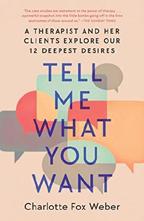
Weber, Charlotte Fox
Atria (320 pp.)
$27.99 | April 11, 2023
9781982170660
How to connect with your own needs. Psychotherapist Weber makes her book debut with a thoughtful look at the potential of therapy “to uncover the hidden longings, the cloak-and-dagger feelings, the stories of desire we imagine for our unlived lives.” Through examples distilled from her work with a variety of patients, she hopes readers will be able to recognize what they really want from their “one precious life” as well as the obstacles that prevent them from fulfilling those desires. The author frames each chapter, anchored by a case history, with her insights about 12 common longings, including for love, power, control, attention, freedom, and understanding. Besides offering intimate details of a patient’s struggles, Weber also reveals the frustrations and doubts that arise in caring for them. “I am a demanding therapist,” she admits. “I want therapy to spark something and change life in some way.” But some patients make her task difficult. One woman, for example, was “entrapped by repetition compulsions” that took the form of “drinking rituals,” bingeing and purging, and “circular fights with her ex-husband, and her parents, and her siblings.” Her psychotherapy sessions, too, were “full of repetition and circularity.” Several case histories, in fact, reveal frustrating repetitiveness as patients rehash their troubles. Some patients refuse to acknowledge their real needs; others try to distract the therapist from asking uncomfortable questions. Weber is gently persistent: “Therapists are like truffle pigs when it comes to vulnerability: we go hunting and rooting around until we find what we’re looking for.” The author highlights useful terms—some she’s coined herself, all defined in a glossary—to describe behaviors such as sufferiority, meaning “a sense of pride and exceptionalism that is mixed with feelings of shame and inadequacy”; askhole, someone asking for advice and then ignoring it; and femasculating, referring to the disempowerment of women.
A perceptive guide to self-knowledge.
“A revealing life of an important historical figure that does not diminish her.”

Zimmerman, James M. PublicAffairs (352 pp.)
$30.00 | April 4, 2023
9781541701700
A vividly characterized account of the Lincheng Incident of 1923, a significant moment in the collision of cultures and political currents in post-imperial China.
Zimmerman, a Beijing-based lawyer who has lived and worked in China for more than 25 years, examines a largely forgotten yet important international incident: On May 6, 1923, an army of bandits attacked a luxury passenger train traveling from Shanghai to Peking, robbed and killed passengers, and took 120-plus hostages, many foreigners, to extract political concessions. The event exposed the lawlessness of China at the time and highlighted the eagerness of other nations to exploit the tumultuous post-imperial political landscape, mostly controlled by powerful warlords. Sun Mei-yao, a rebel peasant leader and former soldier, and his army of disgruntled brigands—the so-called “Self-Governed Army for the Establishment of the Country”—aimed to bring international attention to the plight of those exploited by the ruling warlords. The group derailed the train near Lincheng in the middle of the night, looted it in waves, shot protestors, and dragged hostages on a forced march to the army’s hideaway at the top of Paotzuku Mountain. As the author demonstrates in this deeply researched text, sympathy lay with foreigners on the train, including American heiress Lucy Aldrich, John D. Rockefeller Jr.’s sister-in-law; John B. Powell, “publisher of Shanghai’s Weekly Review and the Chicago Tribune’s man in China”; Italian lawyer Giuseppe D. Musso, who represented the Shanghai Opium Combine; various U.S. military officers and their families; and a host of powerful Jewish businessmen. After many weeks, American fixer Roy Scott Anderson negotiated a peaceful release of the hostages. The perpetrators, despite reassurances of safety, received severe punishment. Zimmerman goes on to show how Mao Zedong later regarded the incident as a worthy peasant revolt that failed because it “lacked a unifying political strategy.”
Tremendous insight into little-remembered yet crucial events at the beginning of the formation of modern China.

Zuckoff, Mitchell
Random House (320 pp.)
$28.99 | April 25, 2023
9780593594841
A suspenseful chronicle of a dramatic rescue at the end of America’s evacuation of Afghanistan in 2021.
In his latest, Zuckoff, the bestselling author of 13 Hours and Fall and Rise, finds his hero in Sam Aronson, who gave up his job as a bodyguard for the U.S. Diplomatic Security Service to become a Foreign Service officer; his first post was in Nigeria. Later, while volunteering to help in Afghanistan, he found himself at Kabul International Airport with only a few weeks before its scheduled shutdown. The author delivers a vivid description of the enormous crowds besieging its fortified gates in blazing heat with no food, water, or toilets. Fewer than 40 officials, Aronson included, screened potential evacuees to ensure that their papers were in order or that they were in obvious danger and needed to get out. Screeners were overwhelmed, and as the deadline approached, superiors increasingly restricted those eligible to evacuate. “Family separations again proved the most wrenching part of the work,” writes Zuckoff. “Weeping women clung to Sam. Men cried in his arms. Sam had to pry some away, into the custody of Marines.” The book’s other major figure is Homeira Qaderi, a 38-year-old Afghan activist, author, and TV commentator, whose memoir, Dancing in the Mosque (2020) was a bestseller. At the time, no one doubted that the victorious Taliban would kill her, but for reasons that remain unclear, she refused pleas to flee until the last day. Aronson and Qaderi do not meet until near the end of the book. Mostly, Zuckoff delivers a gripping account of Aronson’s routine during those final days. Increasingly distressed at the tragedies he witnessed, he began to flout screening guidelines, a process that could have derailed his career but apparently hasn’t. Only hours before the shutdown, he received frantic pleas from Qaderi’s American agent. A last-minute rescue seemed impossible, but he made it happen.
An uplifting account of genuine heroics in the latest American military debacle.
$19.99
9781250810366
Adelman, Hallee Illus. by Josep Maria Juli Whitman (32 pp.)
$18.99 | April 27, 2023
9780807581056
Series: Great Big Feelings, 7
A broken promise results in a class trip fraught with tension between two friends. Kat agreed to sit with Sage on the bus ride to the planetarium but instead sits with Meera, leaving Sage alone—and deeply hurt. Kat is way past sorry but can’t seem to make it right. “Sage’s hurt feelings felt red on my face and tight in my chest.” Things go from bad to worse as Kat’s guilt and self-defense mechanisms kick in. Instead of apologizing, Kat runs away when confronted by Sage. Kat’s regret is “bigger than the night sky,” and the child wishes for the chance to start the day over. Finally, at lunch, Sage agrees to listen to Kat, and together they “unpack… the sorry like a heavy backpack.” Adelman’s newest addition to her Great Big Feelings series reintroduces some familiar characters from previous titles while focusing on Kat and Sage as they work through the tangled emotions of guilt, regret, and hurt. The simple, first-person declarative statements are interspersed with poetic reflections as the author explores how to recognize a wrong and make amends. Juli’s bold, childlike illustrations effectively portray the angst seeping across the pages. Kat, Sage, and Meera are brown-skinned and dark-haired; their classmates are diverse. (This book was reviewed digitally.)
Realistically conveys the healing power of a heartfelt apology. (Picture book. 4-8)


Anderson, Jodi Lynn
Aladdin (368 pp.)
$17.99 | March 7, 2023
9781534416499
Series: Thirteen Witches, 3
Rosie and her friends face the final witch in this trilogy closer.
After The Sea of Always (2022), the heroes have defeated the witches but must flee the final and greatest foe, the Nothing King, and his black hole. New ally Wanda’s able to teleport (most of) the group to distant planet Glimmer 5’s Hotel at the Edge of the Galaxy, in search of help from an inventor who marries magic with science for his fantastical creations.

Unfortunately, he’s already vanished, leaving behind a cryptic note. While the more technologically inclined (sisters Aria and Clara) work on getting the inventions up and running for the group to get back to Earth to face their nemesis, Rosie struggles with how different her twin brother is from her expectations, tries to solve clues in the inventor’s cryptic note, and copes with her growing feelings for ghost Ebb. A further interpersonal element is added with the revelation that the Nothing King could only have escaped his imprisonment if a human aided a witch, meaning there must be a traitor. Despite the characters’ constantly encountering setbacks, the plot moves quickly. Thematically, the action elements of the plot counter destruction and nothingness with creativity and imagination, while emotionally, growing up and facing different kinds of goodbyes are explored, resulting in a thoroughly satisfying conclusion. Rosie, her family, and Ebb read White; Aria and Clara have brown skin; Wanda’s Argentine; and names cue background ethnic diversity. An out-of-this-world finale. (Fantasy. 8-13)
Atinuke
Illus. by Onyinye Iwu
Candlewick (96 pp.)
$15.99 | March 21, 2023
978-1-5362-2946-2
Series: Too Small Tola

A young Nigerian girl grapples with the impact of a global pandemic. While the run-down apartments Tola lives in may not look like much, they are home to her family—Grandmommy, brother Dapo, and sister Moji. Dapo, 15, has a job as a mechanic that brings in so much money that Grandmommy doesn’t have to sell groundnuts anymore. Moji is focused on the assignments she has to complete for her fancy school, while Tola is excited to show off her excellent math skills now that she attends school, too. Then an unexpected sickness sweeps the globe. Initially, Tola and her community believe it won’t reach them, but then things shut down. Moji’s teacher invites her to stay at her home so that she may continue her education during the lockdown. Then Dapo’s employer sends for him so that he can continue earning money. Finally, Tola and Grandmommy are left alone, but supplies are running low. Tola begins work as a house girl for a notable Nigerian family, whom she unexpectedly helps by using her impressive math abilities. Each new chapter begins with a brief summary of what came before, bridging the tales into a cohesive unit. The author empathetically portrays the harsh reality some populations faced during quarantine, along with the disparity between wealthy and low-income people, in a way that will be manageable for young readers. The plain language and realistic illustrations convey a whirlwind of emotions. Remarkable and timely. (Fiction. 7-9)
Barfield, Mike
Illus. by Jess Bradley
Aladdin (128 pp.)
$16.99 | April 25, 2023
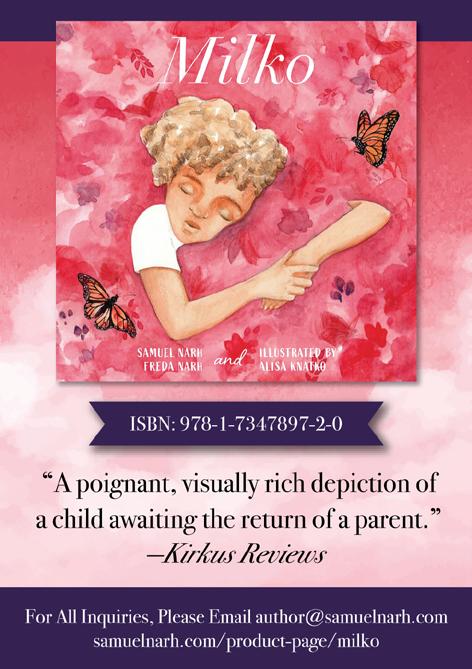
9781534489219
A chorus of extraterrestrial items and phenomena from a black hole to astronaut poop tell their stories in this wide-angle graphic survey. Having careened through history and science in previous outings, Barfield and Bradley wax astronomical both in topic and scope. In the course of surveying our explorations and observations of the universe, they give voices (and cartoon faces) to everything from chatty asteroids (“Yay, you rock!” “No, you rock!” “We all rock!”) and galaxies to astronaut food and oxygen molecules. Beginning with a tour of the solar system and ending with a flurry of space travel topics from living on Mars
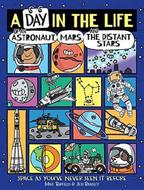
Last month, Ammaar Reshi, a design manager at the finance and tech company Brex, announced on Twitter that he had created a picture book using artificial intelligence. The tweet went viral, with artists pointing out errors that revealed the limits of AI. “Antigravity leaf,” “pen becomes dress i guess,” and “tiny spikes jutting out of knuckles” were a few of the comments that illustrator Corey Brickley included on a marked-up page from the book. The consensus was clear among artists: This creation was a pale imitation of the real thing.
But the problems with AI and its implications for the publishing industry go deeper than aesthetics. Shivana Sookdeo, a cartoonist and a senior designer for Scholastic Graphix, who spoke with me via Zoom from her home in Brooklyn, notes that artificial intelligence isn’t even an accurate term. “It’s not intelligent in any way,” she says. “I usually call it an image generator.” AI platforms are trained to generate images by analyzing thousands of pieces of artwork created by real people, many of whom never agreed to their images being used this way. AI–generated art is rooted in their uncompensated, uncredited labor.
The news that the cover of Christopher Paolini’s upcoming novel, Fractal Noise, was created with AI–generated art also disturbed many. Despite requests that the cover be redesigned, the publisher, Tor, chose not to do so. Sookdeo says that as it is, artists too often go uncredited when authors do cover reveals. “I think AI makes it even worse because now it’s another step of removal between the actual person who did the work and who gets the accolades or who gets the payments.”
Using AI is “inherently anti-worker,” graphic novelist Wendy Xu told me via Zoom from her home in Brooklyn. She notes that publishing is already an industry with equity issues. Many employees are overworked and underpaid—a problem made more visible with the ongoing HarperCollins strike. Xu (who is published by Harper) says that relying on AI is another way for companies to

reduce costs—at the expense of workers. “It’s about cutting out people who deserve to make a living. It’s about cutting out people who deserve to be recognized for their humanity, period.”
AI is especially harmful for marginalized creators and cultures. Sookdeo has seen AI–generated portraits of “shamans” and “tribal art.” These images flatten the cultures they come from. “What tribe? Where are the images from? Did these people even consent to the original photographs?” asks Sookdeo. “It’s all blended up and smoothed away. And it severs any connection to cultural meaningfulness.”
Artists aren’t the only ones being exploited by AI, Xu says, citing a Vice article (“AI Isn’t Artificial or Intelligent”) that explains that these platforms are built on the labor of poorly paid workers doing data labeling and annotating and beta testing. Xu says that companies “want you to think it’s this magical thing made by a computer instead of the labor of tons of people in the Global South sifting through data.”
Will AI be unavoidable in publishing in the future? The answer to that question, Xu says, depends on what we do now. Both Sookdeo and Xu believe that publishers must take strong stances against AI. Xu wants all publishers to enact anti–AI policies and to be specific about what that means. She adds that the onus is on publishers, not artists, to take action. For instance, if it could be proven that images from a picture book were fed into an AI generator, the publisher should be willing to pursue legal action on behalf of the artist.
“We’re at a crossroads,” Xu says. “The industry can take this moment to go to bat for their artists, their workers, to make these beautiful books possible. We can go to bat for expanding artistic horizons; we can go to bat for expanding our visual literacy. We can start to create a culture in publishing that truly appreciates artists and their labor and values.”
Mahnaz Dar is a young readers’ editor.


to the dangers of belching in microgravity, the loosely organized entries offer a chewy mix of introductions to cosmic mysteries like gravity and dark energy along with more intimate “secret diaries” from, for instance, a squirrel monkey who survived an early trip into space and a mouse on the International Space Station. Rarely if ever have the heavens seemed more accessible, not to mention voluble…and if the creators think that the closest black hole to Earth is at our galaxy’s center, which is wrong, they otherwise get their facts straight. For all the faces on display there aren’t many human ones, but several, such as NASA engineer Lonnie Johnson, are people of color.
A broad, breezy blast of astro-facts. (glossary) (Graphic nonfiction. 9-12)

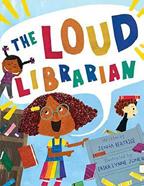 Beatrice, Jenna Illus. by Erika Lynne Jones
Beatrice, Jenna Illus. by Erika Lynne Jones
Atheneum (40 pp.)
$18.99 | April 11, 2023
9781665910545
A vocal girl finds her vocation. A diverse class of 12 youngsters finds out that Penelope, a Black girl with glasses and a barrette, will be the next student-librarian. Her classmate Angela, who drew a “Quiet Please” sign in anticipation, looks horrified by this choice, an interesting hint at conflict that goes unaddressed. Penelope has practiced for this role all year, working on her alphabetization skills and cementing her status as a book lover. Unfortunately, she also has a shockingly loud voice and struggles with impulse control, and her brief stint in the library is marked by fallen books, startled students, and a sudden domino effect when shock waves from her voice knock over an entire bookshelf. Penelope decides that her skills are better spent in outdoor storytime, and the book indicates that she keeps trying in the library. In real life, children’s and elementary school libraries usually aren’t as quiet as adult spaces, and this book could bolster the stereotype of the ideal librarian as sedate and shush-y. It’s also unclear whether Paige Turner Library is connected to Penelope’s school or a stand-alone building, raising some logistical questions. But this would be fun to read aloud, especially to a group of library lovers, and the bright, blocky illustrations are pitch-perfect for the tone. (This book was reviewed digitally.) This tale of an aspiring librarian is ideal for all kinds of storytimes. (Picture book. 4-7)
Bontigao, Lynnor
Candlewick (40 pp.)
$18.99 | April 11, 2023
978-1-5362-2614-0
A young girl of Filipina descent and her grandmother make quite the entrepreneurial team.
Nora spends her summers with her Lola, who owns a sari-sari store, a convenience store ubiquitous in the Philippines. This year, Nora is proud that she’s old enough to help out at the shop, located on a lively city street. She dusts, refills, and sorts, but her favorite thing to do is measure out rice, beans, and other orders for customers. Shelves of condiments and treats are brought to life in a warm palette. The gentle, spare narrative reveals a sudden dearth of customers when a heat wave hits the area. The softly textured illustrations show Nora and her Lola quietly trading worried looks. Lola says, “Let’s get some fresh air, my apo.”

While the two rest under the shade of their mango tree, heavy with fruit, Nora has the idea to make and sell ice candy. Readers see delectable scenes of the duo mixing pieces of mango and condensed milk, then freezing it in long tubes. The homemade ice candy proves to be popular with locals, who flock back to the store for more. This sweet summer tale has Tagalog words interspersed throughout the dialogue, mostly terms of endearment that reflect the cozy relationships with family and the community. (This book was reviewed digitally.)
Like a sari-sari store, brimming with joy and heart. (recipe for ice candy) (Picture book. 5-8)
Brallier, Max with Joshua Pruett
Illus. by Jay Cooper & Douglas Holgate
Viking (240 pp.)
$14.99 | April 25, 2023
978-0-593-52677-4
Series: The Last Comics on Earth, 1
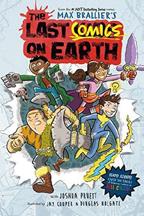
Four self-invented superheroes battle each other as well as two giant supervillains in this triple-threat outing.
In a comic-within-a-comic episode with plenty of Captain Underpants in its DNA (albeit more polish in the art) light-skinned Last Kids Jack and Dirk, along with brown-skinned buds June and Quint, are bummed to discover Z-Man, their favorite zombie superhero, left literally dangling off a cliff at the end of his comic’s last issue—and so they concoct secret identities of their own. In pages that switch from monochrome to full color, they dash off on separate rescue attempts with doggy sidekick Meepu tagging along. Unfortunately, the rivals not only fail, but get in one another’s way even while the burg of Apocalyptia is ravaged in turn by glutinous nihilist Muto the Unsympathetic and video gamer gone bonkers Final Boss Bob. Along with nifty costumes and distinctive powers (June, for instance, as Moonstar the Quasar Warrior, can shoot Starburst Snot Rockets), each hero comes with distinctive special gear, a full origin story, a secret hideout, and even a line of (fictive, at least so far) merch to peddle. And, after many a setback and snarky comment, the four do get their acts together in time to team up and save the town. They then return in triumph to their original limited-palette visuals and treetop clubhouse to plot out future episodes…cooperatively. Creative, quip laden, and replete with manic mischief to lighten the message. (Graphic fiction. 8-13)
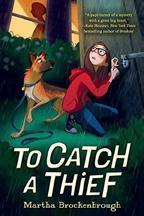
$17.99 | April 4, 2023
9781338818581
When things start to go missing in Urchin Beach, including a precious town symbol, Amelia and her brothers and sisters are determined to find the thief and save an honored tradition.
The Dragonfly Day Festival is a beloved event for Amelia MacGuffin’s family and many others. People come from all over to their small Pacific Northwest town to swing the wooden staff, which has a dragonfly-shaped mark on it, believing that three twirls over their heads will bring good luck into their lives. After the staff is stolen just days before the big celebration, a series of ill-timed misfortunes befalls the area. Family life unfolds against this backdrop. Amelia, who is about to start sixth grade, sits at the awkward and sacred intersection between childhood and young adulthood. She’s responsible, quick-witted, and introspective, a likable main character. Her siblings Bridget and Colin have their own useful and unique personality traits, and Duncan and Emma, the twin toddlers, are adorable tag-alongs. When a lovable dog they name Doc comes into their lives, the kids do everything they can to convince their parents to keep him, a journey that includes surprises. The central whodunit buoys readers along, the answer delightfully being both unpredictable and obvious. Amelia and her family are White; there is ethnic diversity among her friends and other secondary characters. This is a well-imagined, absorbing world, the story original and inviting.
A sweet and satisfying mystery. (Mystery. 8-12)

Burgess, Matthew
Illus. by Evan Turk
Chronicle Books (64 pp.)
$17.99 | April 4, 2023
978-1-4521-7973-5
A girl grows up and passes on her childhood treasures to her granddaughter.
Before sunrise on her eighth birthday, Maude, a young Black girl, heads into the woods, where she buries a red tin box full of treasures beneath a dogwood tree and makes herself a promise. As she grows older—raising a family of her own with a Black, female-presenting partner—she never forgets that red tin box, but she does begin to forget its contents. Overcome with urgency one day, Maude picks up her granddaughter Eve, and, as they drive to Maude’s childhood home, Maude tells Eve about the box. Somehow, Maude knows where to dig, and together they stumble upon Maude’s simple treasures. On the drive home, Maude passes down stories and later gives Eve the treasures so that her granddaughter can make her own promise to herself. Majestic illustrations with smudgy strokes and
“An
the red tin box
breathtakingly vibrant hues that bleed into each other—the reds, purples, and pinks of sunset, the blues and blacks of twilight—heartwarmingly limn Maude’s love for her family and the life she has lived. Simple, poetic language engages the senses throughout this quiet, subtle celebration of familial relationships. This is the perfect read-aloud to showcase how traditions and stories are passed down to future generations and that simple items can bring the most joy along with the stories attached to them. All characters depicted are Black. (This book was reviewed digitally.)
An unforgettable ode to intergenerational bonds. (Picture book. 4-7)

Cameron, Josephine Illus. by Xindi Yan Farrar, Straus and Giroux (336 pp.) $17.99 | April 11, 2023
9780374389758
A stand-alone, high-stakes mystery set in “America’s #1 Dog-Friendly Town.”
Sixth grader, middle child, and Houdini admirer Rondo McDade was hoping for a relaxing spring break, but instead, his family’s B&B, the Perro del Mar in Carmelito, California, is serving as a filming location for the reboot of TV series Bentley Knows, and the canine star has been dognapped. Rondo’s mom and dad are busy, and Rondo is at odds with older brother Epic and younger sister Elvis. He needs to solve the mystery of the missing canine actor or his favorite TV show will be cancelled, but he’s going to need to work with, not against, his annoying siblings and 9-year-old

Denver Delgado-Doyle, his neighbor’s nephew from out of town who is also a fan of magic. Together the kids try to solve a crime with many possible suspects, including a dog trainer, an actress, and the BarkAngels, who claim to be able to communicate psychically with dogs but who Rondo is convinced are frauds. Transcripts of the Daily Dog Dish podcast give readers extra insights into the celebrity dog world and help with pacing. A tight time frame of less than a week, an observant first-person narrator, and a large cast of family members and suspects make for an entertaining whodunit perfect for animal lovers. The McDades read White; names and some charming full-page illustrations cue ethnic diversity in the supporting cast.
A fun, fast-paced mystery. (Mystery. 8-12)
Charlton-Trujillo, e.E. & Pat Zietlow Miller
Illus. by Keisha Morris
Viking (32 pp.)
$18.99 | April 18, 2023
978-0-593-46374-1
Imagination, ingenuity, and innovation come together in this ode to the building power of girls.
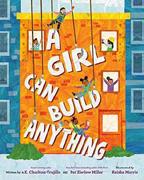
A sextet of girls dream, design, tinker, and fix as their skills expand. With the help of female-presenting grown-ups, the girls take up drills and drivers, paintbrushes, and glue to find ways to help their community, such as fixing up a derelict playground. Sometimes things don’t go as planned. That’s when the girls collectively take a breath and come up with new ideas to solve their design challenges. As the girls grow into women, they take on bigger projects, culminating in a multistory building. Staccato phrases accumulate, building to the repeated refrain, “A girl can build many things. / A girl can build anything.” The text maintains a determinedly motivational tone that leads to an unsurprisingly empowering ending. The brightly colored illustrations provide a bit of a throughline to tie this poem together as the girls grow from childhood to adulthood. Collage elements, including graph paper, measuring tape, and textured papers, draw the eye. The girls are diverse in skin color and hair color and texture. (This book was reviewed digitally.)
A pleasant, confidence-building poem. (Picture book. 3-7)

Chittock, Cameron
Illus. by Amanda Castillo
Colors by Sara Calhoun
Random House Graphic (240 pp.)
$21.99 | $13.99 paper | $24.99 PLB
April 25, 2023
978-0-593-17291-9
978-0-593-17290-2 paper
978-0-593-17292-6 PLB
Series: Mapmakers, 2
In this sequel, newly minted mapmaker Alidade charts unfamiliar mountainous territory to further break the Night Coats’ frightful reign and bring about harmony across the land.
Following their struggles to free the Valley from the Night Coats, Alidade; her best friend, Lewis; and Blue, a magical creature known as a Memri, voyage to the far-off Mountain in a quest to revive other Memris. Atop the Mountain, the explorers meet Cado Stride, a fellow child of the Mountainfolk. To evade the Night Coats, who have annexed the Mountain, Cado’s people hide in an immense cavern, severed from the rest of the world and left to fend for themselves. With a mysterious disease now afflicting the Mountainfolk, Cado enlists Alidade’s mapmaking abilities—and some surprising new powers—to summon the Memri of the Mountains. Meanwhile, the infamous Night Ward tasks Constable Atwater with hunting Alidade and her friends in order to halt the emerging mapmaker’s efforts. In their fevered pursuit, the Night Coats can’t help but leave a trail of destruction. A grander journey than Mapmakers and the Lost Magic (2022), this second entry improves on the strong opener, boasting better worldbuilding and much tighter stakes. An expanded cast of amiable heroes (including the hilariously impish Memri of the Mountains), Castillo’s wonderfully rustic artwork, and a renewed emphasis on ardent camaraderie round out this nicely woven installment.
An adventure well worth joining. (Graphic fantasy. 8-12)
Colfer, Eoin & Andrew Donkin
Illus. by Giovanni Rigano
Sourcebooks Young Readers (144 pp.)
$24.99 | $11.99 | April 11, 2023
9781728257235
9781728262192 paper
The creators of the acclaimed graphic novel Illegal (2017) take on climate change.
Twelve-year-old Sami lives with his grandfather in a fishing village on the Bay of Bengal. Every day, survival becomes more difficult as the sea rises, cyclones buffet the coast with increasing ferocity, and the two bring in fewer and fewer fish. Thousands

nobody likes frogs
of miles away, in Northern Canada, in the Arctic Circle, Yuki, a 14-year-old girl cued as Inuit is determined to save the emergent and struggling grolar bears (a polar bear–grizzly hybrid), which brings her face to face with nature at its most primal. Their stories mirror each other, pitting individuals and communities against themselves, each other, and nature itself as their worlds change faster and more drastically than they can adapt to. The decision to depict two mostly disparate, highly personal narratives from vastly different communities works surprisingly well to heighten relatability for young readers who might otherwise feel worlds away from the events of the story. The quotidian consequences of climate change are laid bare, impossible to ignore despite the creative team’s adroit avoidance of proselytizing. The text is pointed and poignant, beautifully complemented by dynamic illustrations that bring the scenes to dramatic life. Backmatter does an excellent job summarizing global warming and its negative effects, which does cast a shadow over the somewhatforced optimism of the story’s ending, as it seems only a matter of time before the children’s hard-won luck runs out again.
Timely and boldly told. (map with Sami’s and Yuki’s locations, authors’ and illustrator’s note, sketchbook) (Graphic fiction. 10-14)
Cypess, Leah
Delacorte (304 pp.)
$16.99 | April 18, 2023
978-0-593-17891-1
Series: Sisters Ever After, 3
In this fairy-tale adaptation of “The Pied Piper of Hamelin,” the narration is taken over by the magical piper’s younger sister, Clare.
She arrives in the small German town declaring that she’ll rescue the children who followed her piper brother, Tom. As in the original tale, they disappeared when the mayor refused to pay the piper after he led the rats away. She doesn’t reveal that she and Tom were once Hamelin children themselves. They lived in the Faerie Realms for 8 years, while in the human world, over a century passed. The two were adopted by the queen of Faerie and have taken on the fae’s indifference to human concerns—especially Tom, who only cares for his sister. For her part, Clare is torn between the worlds, especially since reconnecting with Anna, the mayor’s visually impaired daughter, who once spent a month in the Realms and befriended Clare. However, when Anna joins her in the quest to save the missing children, things don’t always go well, as Anna has her own secrets, strengths, and weaknesses. Things become even more difficult when rat prince Per falls in love with Anna. In this overly complicated psychological retelling, lying, deception, and distrust are pervasive themes. Notwithstanding the suspense and magical descriptions, the action feels tedious. Characters are presumed White.
Readers will have a difficult time following this piper and his sister. (Fantasy. 9-12)


Davis-Pyles, Barbara
Illus. by Liz Wong
Little Bigfoot/Sasquatch (32 pp.)
$17.99 | April 25, 2023
9781632173355
Persnickety Q. Turtle disdains your choice of book and lists all the ways frogs are completely disgusting.
The book continues the format begun on the cover, with the turtle breaking the fourth wall of a real book about frogs. The illustrations are a fascinating mix of the rather simplistically drawn cartoon turtle and their speech bubbles and the realistic illustrations in the frame book and the text that responds to the turtle’s complaints about frogs: They are always burping (that’s croaking), their ballet moves are “an insult to the art form” (leaping is how they get around), their skin is proof of their bad hygiene (but actually helps them hydrate and breathe), and they are always rudely staring with their bug eyes (which help them see their prey and swallow it down). In the end, the turtle remains unconvinced that frogs have any redeeming qualities despite a cartoon frog’s rescuing them from all the flies that have gathered with the page turns. That frog’s final burp seals the deal, though they do say “Excuse me.” Lists of frog facts and ways to help frogs round out the book. (This book was reviewed digitally.)
These frog facts go down as easily as the flies frogs catch. (Informational picture book. 3-7)
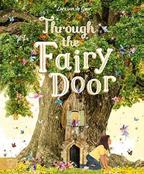
Dawnay, Gabby
Illus. by Giulia Tomai
Photos by Lars van de Goor Magic Cat (32 pp.)
$19.99 | April 18, 2023
9781419765988
A child discovers a fairyland in this tale that blends photography and illustrations.
Willow comes across a fairy door built into a stone wall at the edge of the town. No one else sees it—“They are far too busy rushing about.” When she touches it, “she finds herself in a great wood.” Willow follows the fairies and birds she encounters there through the seasons, watching them and learning from them. When she returns to the town, it’s as though no time has passed, and seeds she carried from the wood take root and transform the village with new, abundant flora. Now the villagers seem far more attentive to the world around them. Van de Goor’s digitally altered photographs of lush landscapes and quaint village scenes provide sumptuously detailed 3-D settings for this gentle adventure story. Tomai’s illustrations of brown-skinned Willow, diverse people and fairies, and forest animals have a contrasting two-dimensional quality to them.
“These frog facts go down as easily as the flies frogs catch.”
“I wanted to give him my love of books,” Giles says. “My husband and I started collecting books for him, and we would read to him every single day. That’s how I became obsessed with kids’ books, and that’s where I started on my writing journey.”
Giles started writing in 2018 but soon realized that while she’d worked in finance for years, she knew little about the publishing industry specifically. That’s when she found We Need Diverse Books, the literary nonprofit committed to promoting literature that all young readers can see themselves in.

“I had gotten so many rejections at that point,” she recalls. “When I got accepted into We Need Diverse Books, I thought, OK, maybe my voice does actually matter in this space. I started working on Take Back the Block right around that time. It was the first time I felt some level of validation.”
Chrystal D. Giles’ literary origin story will be familiar to anyone with an abiding love of reading: The author had a favorite place when she was growing up in Charlotte, North Carolina.
“I read a lot of books,” she recalls, speaking to Kirkus via Zoom from her home a few miles outside of Charlotte. “I am the youngest of four, so I often found myself off by myself. I was a library kid. I would go to my public library and I would get stacks of books.”
It’s no surprise that Giles went from being a young lover of books to the author of two of them—her debut middle-grade novel, Take Back the Block, published in 2021, and now a follow-up, Not an Easy Win (Random House, Feb. 28).
Despite being an avid reader as a child, Giles took an unusual path to writing. She studied accounting in college and worked in finance for 15 years. Her interest in children’s literature was rekindled when her son, now 7, was born.
After her We Need Diverse mentorship under author Gwendolyn Hooks (Planting Peace, Tiny Stitches), she entered the mentoring program Pitch Wars and rewrote the manuscript for Take Back the Block. What happened next, she says, was a “whirlwind.”
“I was represented three weeks later; we went to auction two weeks [after that],” she says with a laugh. “It was sold in a two-book deal within about four weeks of me being represented. Everything went so quickly.”
The novel, about a sixth grade boy fighting gentrification in his neighborhood, earned positive reviews from critics, including one from Kirkus’, who, in a starred review, called it “an ambitious invitation for young readers that delivers promise for all.”
If Take Back the Block wasn’t easy for Giles to write, Not an Easy Win—about Lawrence, a 12-year-old boy with an incarcerated father who finds solace playing chess at a local recreation center—presented its own set of challenges. “The sophomore book struggle is real, y’all, and during a pandemic no less,” she writes in the novel’s acknowledgements.
“The first draft I wrote with not a lot of stress or anguish,” Giles says. “The revision process is where I was like, Whoa, this gets personal. My father was often incarcerated, he wasn’t around very much, and I wanted purposefully to speak about that impact on a young person. And I thought, OK, I’ve made this not easy for myself. But it became kind of cathartic, and I was able to process, reflect, and then separate myself enough to make sure that I wasn’t telling my own story, that it was in fact Lawrence’s story.”
Lawrence’s story has resonated with critics. Kirkus called the novel “stellar” and gave it a starred review—one of four publications that judged the book worthy of a star. The reception, Giles says, has been an “absolute shock.”
“I didn’t know what to do,” Giles says, recalling the moment she learned about her fourth starred review. “I still don’t. I’m so proud of my characters; they’re my babies for sure. I’m proud of Lawrence. I know that sounds weird, because I created him, but still I’m just super proud of him. Maybe that’s a way for me to disassociate myself from the work, but I’m just proud of my character right now.”
Giles continues to write, but she’s also committed to a literary mission that’s just as personal. When she and her husband started building a library of books for her son, she wanted to find titles that featured Black boys and their fathers—and didn’t have much luck.
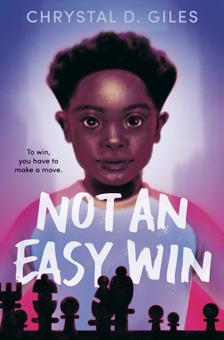
“I went to my local bookstore; I came home with no books,” she says. “I came home, I went online and I thought, This is odd, how come I can’t find any? I wanted my kid to have books that he could open up and the characters would look like him, and sound like him, and have his haircut, and dress like him, and all that. So I absolutely want to make sure that the industry changes in a way that any kid, every kid, can see themselves, their communities, their families in a book.”
Michael Schaub, a journalist and regular contributor to NPR, lives near Austin, Texas. Not an Easy Win received a starred review in the Dec. 15, 2022, issue.
The juxtaposition of characters with the setting gives the people a feeling of paper dolls or little figurines set in the fantastic landscapes rather than being immersed within them. It’s a fitting effect that could imply that the story is the product of an unseen child’s imagination. Still, though the artwork is intriguing, the overall story and prose are lackluster, with little drama or tension. (This book was reviewed digitally.)
Visually engaging throughout despite fairly underwhelming text. (Picture book. 3-6)
A Canadian Adventure
Degman, Lori & Jocelyn Watkinson
Illus. by Marcus Cutler
Sleeping Bear Press (32 pp.)
$18.99 | April 15, 2023
9781534111875
Take a cross-Canada tour alongside some goofy-looking creatures.
Beginning with a ski vacay in British Columbia, with the Vancouver skyline featured prominently in the background, a cast of silly monsters traverse popular Canadian destinations. As the monsters and their diverse crowd of humans travel, they showcase unique natural environments (belugas in Northern Manitoba; lobster trapping in New Brunswick) and recognizable urban landscapes (looking at you, CN Tower) and dip into regional flare and traditions (kissing the cod in Newfoundland). Places are identified primarily by provincial crests, but they’re fairly small and easy to miss. In an authentic move that will either amuse or chagrin Canadian readers, Alberta and Saskatchewan woefully share a single-page spread while showy Ontario gets two. Told in lively rhyme, the travelogue is a little strained and groanworthy, but it scans well enough when read aloud. Illustrations are similarly madcap. Garishly bright colors and over-the-top facial expressions identify the bulbous monsters as the silly, nonthreatening variety. A beaver-tailed monster with a wagon full of Canadiana is particularly guffaw-inducing. While the full-bleed illustrations do tend toward loud and visually overwhelming, they well match the unrestrained rhyme and exuberant tone. At the back, a map usefully identifies the provinces and pinpoints the monsters’ stops. (This book was reviewed digitally.)
Unabashed enthusiasm, educational geography, and wacky critters—a fairly fun combination, eh? (Picture book. 5-9)
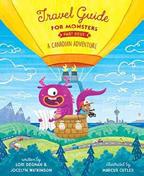
$17.99 | April 4, 2023
9788419253262
Series: Somos8
A wayward sheep changes how a boy falls asleep every night.
Everyone has their own personal flock of sheep to count in order to fall asleep. Mike’s sheep dutifully do their job—until one night, one member of the flock—Four—refuses to take her turn jumping over the imaginary fence. “I’m sick and tired of always doing the same thing.” As the hours pass and poor Mike remains wide awake, the other sheep continue to coax Four to “Jump! Jump! Jump!” Four stubbornly responds, “No! No! No!” Finally, a postman arrives on a bicycle and delivers a letter addressed to Four with an urgent plea from Mike. This prompts the mutinous sheep to “resolutely walk towards the fence.” With “a glorious leap,” she jumps “so high and far” that she eventually disappears. Mike finally drifts off and then never needs to count sheep again. “He’s been sleeping just fine.” How is Mike able to adjust after Four’s deliberate exodus? The final spread, depicting a little sheep cuddled up next to him in bed, offers a clue. Cartoon art outlined in black depicts green-dominated pasture scenes against white space offset by blue and dark gray tones for Mike’s sleepless setting, enhancing the amusing premise of this offbeat but heartening narrative, translated from Spanish. Mike has skin the nighttime blue of the page; the postman has skin the white of the page. (This book was reviewed digitally.)
A humorous take on a long-standing tactic for combating insomnia. (Picture book. 5-8)

LA GUITARRISTA

Diaz, Lucky Illus. by Micah Player Harper/HarperCollins (40 pp.)
$19.99 | May 2, 2023
9780063254152
Grammy Award–winning artist Diaz’s love letter to music.
“Treasure in the trash!” Canta, a Latine child who each Saturday stares longingly at the instruments on display at the guitar store, is thrilled to find a guitar that someone has thrown out. With Mamá’s encouragement (“¡Sí, se puede! / Where there’s a will, there’s a way!”), Canta seeks help from Fernanda at the repair shop. Soon, the guitar is whole again. Now all that’s left is learning to play it. Excited for lessons with Señora Clemente, Canta runs down the street, but another friend offers help before her class. Lupita gives the guitar a candy paint gleam so the guitar will be a real dream! Now Canta is finally ready for school. Some kids try to make fun of Canta, but Señora Clemente tells her to “Tune those doubts out!” So Canta listens to
her heart, her corazón, and loudly sings her song, her canción! With unitalicized Spanish and English intertwined, the rhymes are appropriately melodic, and the art is vibrant, full of warm tones and round-faced characters full of expression. It’s a combination that works: a heartfelt story of a neighborhood coming together to help a little girl’s dream come true and engaging illustrations that deliver. Most characters present Latine, with skin in varying shades of brown; Señora Clemente is cued as Afro-Latine. (This book was reviewed digitally.)
An inspiring story of perseverance. (Picture book. 4-7)
The Superpower Protection Program
DiDio, Dan with Anthony Maranville & Chris Silvestri
Permuted Press (224 pp.)
$21.00 | April 11, 2023
978-1-63758-701-0
The son of a superhero uncovers a vast conspiracy while coming into his powers.

Plainly aiming to spin out a long series, the co-authors so cram this opener with confusing twists and hints that things are not as they seem that the whole construct collapses into an incoherent tangle. Having abruptly been bundled off with his mom, supposedly for their own protection, to a town in New Jersey so isolated that even the constellations are different, shocked 16-year-old Nick Pappas learns that his often absent dad was actually Odysseus, an Enhanced Human good guy renowned for battling EH villains, and has just been killed. However, along with running into sympathetic or hostile schoolmates who all read minds, meld bodies, or display like abilities, he discovers in a whirl of mishaps, feverish dreams, and explanatory monologues from an archvillain with a grotesquely described skin condition that the town, its residents, his dad, and even his mom are not as advertised. Meanwhile, as he mysteriously transforms into his dad’s twin and struggles to control a series of outsized rages or panic attacks that trigger massive blasts of heat and energy, he is also repeatedly subjected to forcible but incomplete memory pruning, which fails to keep him docile as intended by the end—but will effectively leave bewildered readers unsure about which if any previous events actually happened. Nick is cued as Greek American.
An indigestible mess: overstuffed and undercooked. (Superhero fantasy. 11-13)
“A humorous take on a long-standing tactic for combating insomnia.”
the flock
Doeringer, Carol Illus. by Florence Weiser
Sleeping Bear Press (32 pp.)
$18.99 | April 15, 2023
9781534111721
Two campers narrowly escape an encounter with a skunk.
The rollicking rhymes and secondperson address keep the pages turning and the threat level high in this amusing, educational look at what you should do if you come across a skunk. (In case you don’t already know, the answer is universally to retreat!) While the unseen narrator gives prudent advice to the duo and plays up the threat they face as the skunk moves through its warning body language, the two campers, whose facial expressions and own body language reflect their fright, largely fail to heed the advice to get away, instead sticking around until the skunk is balanced atop its front legs, both nose and tail pointed straight at them. The facts woven into the tale are rounded out in the backmatter, which lists some skunk facts, describes their “stink defense,” and gives some resources for learning more. The action plays out against white backgrounds, keeping the focus on the interactions. One camper is brown-skinned with short dreadlocks; the other has tan skin and straight black hair in short pigtails. Share this oneon-one so children can see the hysterical reactions of the snail on each spread. (This book was reviewed digitally.)
Sure to provoke giggles even for audiences who already know to avoid skunks. (Informational picture book. 3-7)

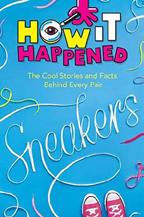
The Cool Stories and Facts
Drimmer, Stephanie Warren
Illus. by Dan Sipple
Union Square Kids (192 pp.)
$18.99 | April 18, 2023
9781454944966
The history of what nearly everyone wears on their feet.
This brisk account moves from a description of ancient woven bark sandals discovered in Oregon in 1938 to the use of latex by Mayan and Olmec peoples to the incorporation of rubber into the soles of shoes for croquet players to footwear endorsements by athletes like Michael Jordan. Bright colors feature throughout the exuberant cartoon drawings along with plenty of sidebars and photos spotlighting diverse people, both famous and everyday. Drimmer covers the history of familiar brands and logos—the rivalry between the Dassler brothers, who founded Adidas and Puma; the development of Blue Ribbon Sports into Nike; the reason that Converse shoes carry the name Chuck Taylor. She avoids discussing economic,
human-capital concerns about the manufacture of what are often hugely expensive and collectible shoes. An intriguing chapter on future developments for sneakers mentions the sound-absorbent sneakers that T’Challa wears in Black Panther and a real-life attempt at making a similarly quiet pair. The narrative is a bit thin (and neither source notes nor suggestions for further exploration are offered), but overall, it’s a clear, close-up look at an invention (versatile, comfortable shoes) that captures affection and loyalty, plus an exhortation to young innovators to think about their own spin on the product. It’s also an interesting examination of the ways that professional athletics and personal exercise have evolved over the last century.
A fun and fact-filled look at footwear that will find its audience. (timeline, glossary, index) (Nonfiction. 8-12)
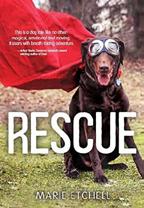
Etchell, Marie Red Deer Press (248 pp.)
$14.95 paper | March 1, 2023
9780889956650
A tween with a lot on his mind and a dog with magical powers cross paths in Langley, British Columbia.
Charlie Campbell, almost 13, is unhappy that his father will be moving out. Even soccer doesn’t feel like fun anymore. But Charlie adores dogs and dreams of becoming a veterinarian, plus he wants to avoid being at home listening to Mom and Dad arguing. So, he begs Dad’s friend Dr. Anderton to take him on as an after-school volunteer at his veterinary clinic. Charlie enjoys most aspects of the experience, but the highlight is meeting elderly chocolate Lab Buster, a retired service dog with hip problems who, like Charlie, is nursing a broken heart; Buster’s owner died, leaving him homeless and at risk of being put to sleep if no one adopts him soon. On their daily walks, Charlie and Buster encounter one unusual situation after another in which they are called on to help people in distress. It also turns out Buster has magical powers: He can fly. Through his relationship with the dog, Charlie grows emotionally and recognizes that while they were helping others, Buster was helping him, too. Animal lovers, readers who enjoy stories blending realism with fantastical touches, and young people struggling with parental conflict will enjoy this accessible novel. Charlie defaults to White; there is some diversity in the supporting cast.
A gentle, slightly fantastical story about hurting and healing. (author interview) (Fabulism. 8-12)
Eulberg, Elizabeth
Scholastic (208 pp.)
$7.99 paper | March 7, 2023
9781338815351
Series: Scared Silly, 1
An elementary school Breakfast Club jumps into action when their science teacher starts cloning them.
Something smells when 10-year-old Regan Charles and fellow fifth graders
Bennett Norland, Sofia Vargas, and Darius Washington find themselves in detention for the flimsiest of reasons. Even more suspicious, their typically fun science teacher, Ms. Stein, collects specimens of hair, saliva, and snot from the group. When they discover her plan to create the perfect student, it’s up to them to save the day. Despite the subject matter, this one is more funny than scary. Frequent asides from the narrator, though humorous, may break the book’s flow for some readers. Fortunately, the multifaceted protagonists make up for that. Regan, a proud fat girl who wears bright colors and isn’t afraid to take up space, is in tune with her fears and anxieties but doesn’t let them hold her back from being selfless, brave, and awesome. Outwardly confident Bennett must learn to stand up to his friends while trying to win over his prickly, soon-to-be stepsister, Sofia, who may have a softer interior than anyone realizes. As a Black boy, Darius deals with racism; he also feels the pressure of being the son of Cauldron Cove’s mayor when he just wants to bake, hang out with friends, and read his comics. Conversations about privilege and confronting historical injustice are included without feeling didactic. Regan and Bennett present as White; Sofia is cued as Latine; Ms. Stein is described as having curly dark hair.
Short on chills but big on humor and heart. (Fiction. 9-12)
Illus. by Gracey Zhang
Union Square Kids (32 pp.)
$17.99 | April 4, 2023
9781454944171
The friendship between a young child and an elderly neighbor as told through their letters.
After kicking a soccer ball into Mr. Graham’s rose garden, almost 7-year-old Jackson sends an apology letter accompanied by a batch of scones. What starts with an accident blooms into a friendly back-and-forth correspondence about soccer, sweets, and the care of roses. With each small moment and thought shared, their friendship grows, and Mr. Graham fondly becomes “Mr. G.” Even when the neighbor moves to senior housing, the friendship continues. Jackson’s family transplants the roses to their yard and takes on their care; the two keep in touch via letters, and Jackson even visits.
By nature of time and age, the correspondence must eventually cease. Jackson, however, learns a long-lasting lesson: Roses will bloom time and time again. With care and heart, Evans’ epistolary tale centers on a neighborly and intergenerational bond. Zhang’s art beautifully illustrates the warmth of their bond, the passing of time, and the ache of loss. A colorful palette and evocative strokes of the brush bring energy to Evans’ gentle and moving narrative about Black-presenting Mr. G (later portrayed using a wheelchair) and tan-skinned Jackson. (This book was reviewed digitally.)
A tender, vibrant portrait of intergenerational connection. (Picture book. 4-8)

Evans, Karina
Little, Brown (272 pp.)
$16.99 | April 18, 2023
978-0-316-34042-7
Why does Audrey’s mother set such strict boundaries when her own mother, Nana Rhea, an aging former film star, led such a colorful life?
Audrey’s parents insist she follow their rules: no gymnastics, no PG-13 movies, no video games. Since rising seventh grader Audrey doesn’t even know what she likes, she doesn’t rebel—until her two best friends uninvite her from their annual end-of-school-year sleepover because they don’t want to limit their activities to ones she’s allowed. Audrey is understandably heartbroken and mad, but her mother won’t negotiate her rules. She also rarely talks about what her own childhood with Nana Rhea was like. Audrey’s mom is directing Nana Rhea’s life too, insisting she move to a retirement community. When Nana Rhea runs away for one last romp, Audrey goes with her. What follows is a riotous gallivant across Hollywood as they “borrow” outfits from a studio costume department, visit a tattoo parlor so Audrey can get her ears pierced, mingle at star-filled parties—and try to outrun Audrey’s parents. Audrey is having the time of her life while learning heaps about why some parental limits might actually be good. Friendships and family dynamics among this default White cast come under scrutiny, allowing for growth, change, and self-discovery. One of Audrey’s best friends has black hair and a Muslim name.
This quirky read celebrates exploring and finding the right balance between guidance and freedom. (Fiction. 8-12)
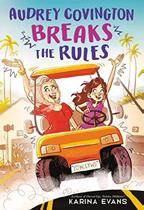
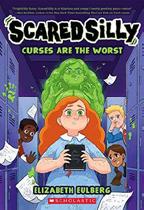
Fadeeva, Olga
Trans. by Lena Traer
Eerdmans (48 pp.)
$18.99 | April 11, 2023
9780802855992
“Where does the wind come from?” This thoroughly engaging book translated from Russian offers a broad overview of wind, from what causes wind to ways in which humans throughout history have harnessed it. Although its opening double-page spread strikes a rather fanciful tone (“Maybe there are giants… / who blow air with all their might?”), this is quickly dispelled by the next page turn, which launches immediately into science. (“It happens because of differences in air pressure….”) The narrative intertwines snippets of historical facts and basic science (the Beaufort scale, how hurricanes form, etc.), keeping readers intrigued and entertained. Full of rich textures, the full-color, double-page spreads are masterful in both design and imagery and add a colorful, dynamic, and sometimes whimsical layer to the factual narrative. Noteworthy is the book’s scope. Examples of discoveries related to wind span the globe. The major types of wind that surround the planet (trade winds, prevailing westerlies, etc.) are clearly defined and illustrated, underscoring the universality of wind and its effects on all of Earth’s land masses. The author also describes wind’s influence on human inventions such as boats and airplanes as well as its impact and importance for animals and plants.
A beautiful and fascinating primer on the wind. (Nonfiction. 5-10)
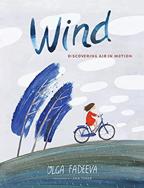

Farkas, J.M. & Emily Vizzo
Illus. by Jasmin Dwyer
Cameron Kids (40 pp.)
$18.99 | April 25, 2023
9781951836511
A look at poet Edna St. Vincent Millay’s close childhood bonds with younger sisters Norma and Kathleen.
Their unusually parent-free existence garners economical explanations. Edna, called Vincent, “watched her father cross the cranberry bog to the railway station. Cora told Henry to go & never come back.” The four move to Camden, Maine, where life in “the smallest house on the loneliest road in the poorest part of town” is heightened by mother Cora’s long absences as a traveling nurse. Their mother’s towering influence is nonetheless intimated: “She was ambitious & unordinary & wanted the same for her daughters. What other mother had better books than the library? What other mother would steal the whole
show?” Though bound by regimented chores, the sisters revel in meadow and sea. Therewith, the authors’ imagery sings: “Luckily the ocean was the biggest thing in the world. Wilder even than the woods! Everyday swung open to a swoony new sea.” Farkas and Vizzo convey Vincent’s early, driving impetus to write, her moodiness, and the chasm Cora’s absence creates. Dwyer mixes styles to represent the sisters’ unique symbiosis, which holds both trauma and freedom. Realistically rendered figures, calico-clad, long-haired, and White-presenting, cavort among stylized, sun-washed meadow flowers. For joyless episodes—Henry’s leaving; illness—the artist uses a darker palette and expressionistic elements. (This book was reviewed digitally.)
An often lilting celebration of the poet’s early anchors and incipient artistic voyaging. (three poems by Millay, biographical note, authors’ note, photos) (Informational picture book. 5-8)
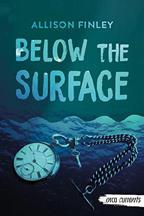
Finley, Allison
Orca (112 pp.)
$10.95 paper | April 11, 2023 9781459834538
Theo’s hobby of researching objects found in river silt leads to his solving a half-century-old mystery.
Theo—an apparently young teenager with a single mom—has an irresistible narrative voice: sincere, sensitive, funny and conversational. Readers will immediately be drawn in by his reference to “something bad” in his town’s history and to rumors of a ghost haunting the bridge where he conducts his river dredging. When he excitedly uncovers an old pocket watch, Theo uploads a photo of it to his social feed and, knowing it’s been underwater for decades, jokingly inquires if anyone recently lost it. Although rattled by an anonymous, threatening reply, he is determined to learn the watch’s provenance. Is it connected to the young traveler who died by “misadventure” in 1967? Theo’s best friend—a blond, freckled girl named Syd— provides a strong, steady complement to his timidity. The pair conduct interviews, pore over old newspaper clippings, and contact a possible descendant of the traveler. Theo’s interactions with local bullies are cleverly woven into the storyline. Spoiler alert: In real life, the new evidence plus other revelations should have prompted Theo to urge local authorities to reopen the case. However, that might have created a darker ending—and the conclusion does satisfy. Characters are cued White.
An engaging mystery told simply but eloquently. (Fiction. 8-12)
“An often lilting celebration of the poet’s early anchors and incipient artistic voyaging.”
starflower
being a cat
Fliess, Sue Illus. by
Mia Powell Whitman(32 pp.)
$18.99 | April 27, 2023
9780807541432
Series: Kid Scientist, 5
Three young volcanologists visit Iceland to model scientific research.

The expedition takes Owen, Katie, and Austin, a diverse group of young people depicted in Powell’s staid cartoon scenes, to the top of the Herdubreid volcano to test the theory that it’s gone from merely dormant to actually extinct. Having done this by collecting observational satellite data, employing a ground-based sensor (“This device sends out signals to measure movements in the ground”), releasing a drone to detect recently released sulfur and carbon dioxides, if any, and determining that lava rocks gathered at the site are eroded, the three wave goodbye from a helicopter as they fly off to publish their findings. The book brims with purposeful statements—“Even dormant volcanoes can erupt again,” explains one researcher, ostensibly to his professional colleagues. Aimed at a younger audience than the much-lauded Scientists in the Field series, this glimpse of science in action gets the details, if not the dialogue, right and closes with both a step-by-step summary of one version of the scientific method and an overview of the academic requirements for choosing volcanology as a career. (This book was reviewed digitally.)
Stodgy but specific. (Informational picture book. 6-8)
Fowles, Stacey May Illus. by Marie Lafrance Groundwood (40 pp.)
$19.99 | April 4, 2023
9781773066615
When the what ifs have you stumped, find a friendly voice.
One day, Fern, a humanoid creature with a light-skinned face, green body, and brackenlike hair, finds a yellow envelope in her mailbox. She has no idea what it could be and begins to fret over the possibilities of bad news. Literal clouds hang over her head. Then, her friend Fawn, a deer wearing a pair of striped pants, appears and tells Fern to open the envelope, saying they’ll face whatever is inside together. Fern pulls out an invitation to a “super special surprise exhibition” at the local museum. Fawn offers to go with Fern (who doesn’t like surprises). On the way, Fern continues to consider horrible what ifs, like if a fallen tree should block their way. Fawn always provides a solution (they’ll ask a bear to lift the tree). Eventually, Fern supplies some solutions of her own, and everyone has a marvelous time. This exploration of anxiety shows readers that a supportive friend (or an inner positive voice) can be a staunch defense against
catastrophizing and that there are benefits to moving through those stifling thoughts. This story has just the right amount of whimsy to counteract the seriousness of the issue. Lafrance’s illustrations ooze with glorious nature details and graphite-produced textures, though some of the animals’ stares look a bit dim. (This book was reviewed digitally.)
Visually appealing empowerment in the face of anxiety. (Picture book. 4-8)
Freeman-Haskin, Leah
Illus. by Shantala Robinson
Groundwood (32 pp.)
$18.99 | April 4, 2023
9781773066233
Sienna usually loves art class—but today is different.
The spring art show is only a day away, and Sienna, a young Black girl, is excited. When tan-skinned Ms. Graham puts a handful of crayons on the table, within seconds, all the colors are grabbed up except for dark brown and light brown. Sienna is upset, especially when the other students tease her for her slowness. A classmate mocks, “Have fun drawing mud and dog poop.” Ms. Graham encourages Sienna to think of all the great things that can be drawn with brown crayons. However, when Sienna tries to imagine roses and rainbows in hues of brown, she is discouraged. After a classmate references chocolate, Sienna perks up and draws a cone with three scoops of chocolate ice cream. A student mentions a grizzly bear, which inspires another drawing for Sienna. Finally, Sienna thinks of her mother’s golden skin and her father’s dark brown skin and draws her own family—a perfect piece for the art show. Freeman-Haskin’s narrative is matter-of-fact but uplifting, affirming the beauty of brown skin and opening the door to discussions about race and skin tone. Robinson’s vibrant cut-paper illustrations are layered with texture and movement, giving the book a collagelike feel and depicting a diverse class. (This book was reviewed digitally.)
A sensitive and age-appropriate tale to spark conversations about skin color. (Picture book. 3-6)
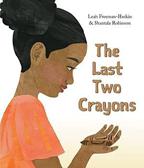

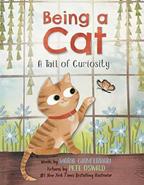
Gianferrari, Maria
Illus. by Pete Oswald
Harper/HarperCollins (40 pp.)
$19.99 | April 4, 2023
9780063067929
What’s it like being a cat?
“Can you be like a cat? / Being a cat / is seeking— // watching, wondering, wandering, / surveying / everything / around you.” “Are you happy?
/ Trilllllll. / (In between preen.) / What’s that over there…?” A
“Sure to satisfy even the most curious of cat lovers.”
brown-skinned child and a tabby cat explore answers to questions about cat behavior in very simple text. What happens when cats are tired? (They take naps in various places.) What happens when cats are mad? (Hissing ensues, of course.) Ways that cats say they love someone? Head bunting, blinking, twining between legs…and plenty of purring. Text and illustrations work well together to explain puss behavior to young kitty lovers. Oswald’s cutout paper and watercolor textures, digitally finished, will draw all young feline fans in. Though the vocabulary might be above the target audience’s understanding in many instances, the illustrations do an excellent job of communicating (often with humor) exactly what’s going on. The book wraps up with a double-page spread of cat attributes (tongue, whiskers, sense of smell, claws) with paragraphlong explanations, another double-page spread on feline body language, instructions on leaping like a cat, and a list of cat facts. (This book was reviewed digitally.)
Sure to satisfy even the most curious of cat lovers. (Informational picture book. 2-6)
Gibson, David Cicada Books (112 pp.)
$19.99 | April 4, 2023
9781800660281
Why and how to become a “climate change hero,” presented in pithy infographics.

Gibson lays it all out in a mix of easily graspable facts and trends embedded in tellingly designed graphics, from a fivetoed “carbon footprint” to a pie chart describing energy use in the home to a stairlike vertical bar chart of increasingly effective personal ways to reduce that footprint and another one showing both rising ocean levels and cities that will be flooded over time. The author/illustrator invites readers to trace one decision tree to score their fresh fruit’s environmental impact and another before buying any new “stuff” while broadening their perspectives with maps, winding timelines, and visual representations that trace the history of life in terms of a single day (with humans trotting in over the last four seconds), show where the waste plastic is, present our planet as a set of interlocking units from cryosphere (“All the frozen water”) to atmosphere, and consider the “environmental cost of the clothes we wear.” Along with getting its message across in a visually stimulating way, this offers younger eco-activists a first-rate toolbox of facts and basic background on which to build.
Compact, informative, and convincing. (Nonfiction. 6-9)

Goldfield, Anna
Illus. by Hannah RiordanNeon Squid/Macmillan (80 pp.)
$17.99 | April 4, 2023
9781684492862
A collection of unusual contests from all over the world. Surveying ancient history up to modern times, this book covers something that unites people worldwide—the desire to make up challenges in which to compete. From Chinese dragon boat racing dating back thousands of years and the ceremonial boasting component of West African wrestling to modern pastimes like eating contests and chessboxing, each contest is given a double-page spread, with pithy descriptions and contextualizing sidebars. Animal husbandry competitions are examined, too, such as camel beauty pageants, cockroach races, and worm charming (and even the wonderfully charming Fat Bear Week, which doesn’t involve people at all). Occasional spreads cover noncompetition feats (such as building giant novelty models of animals and objects), but they capture enough of the spirit of the book that they don’t feel out of place. Also included is a section on competitions in mythology worldwide. The artwork is clean and attractive and highlights the diversity of these worldwide challenges. This book is ideal for kids who like world record books and almanacs but might prefer something shorter, want subject matter curated toward the sillier side of life, or who just desire a little bit more background on the strange games humans have invented.
A clear winner. (glossary, index) (Nonfiction. 7-11)
Goulet Dubois, Liz
Sourcebooks Jabberwocky (40 pp.)
$9.99 | May 2, 2023
978-1-72827-198-9
Series: Duck and Cluck
A duck and chicken argue over what color the page should be.
Both birds agree their white background needs color, but Cluck favors orange, while Duck prefers pink. Illustrations and text that makes heavy use of alliteration guide beginning readers through longer words—tangerines, fabulous, flamingos—as each makes a case for their chosen color. In a sequence accompanied by onomatopoeia, they try to settle things by shoving flowers—an orange tiger lily and a pink carnation—in each other’s faces. Finally, they split the book along the gutter, Cluck painting the left side orange while Duck colors the right pink. But Cluck

accidentally colors orange on Duck’s side; in an attempt to fix it, Duck paints over it, and suddenly we see a new, blended color. A short rainstorm blurs the colors more, and the end result reminds a passing alligator of a sunset in the Everglades. The fowl friends offer the appreciative gator their “canvas” and roll it off the panel’s background. But that leaves them where they started, with a “dull and dreary” page—to Duck’s consternation, in a stinger joke, Cluck wants to paint it orange. Spare text, with speech bubbles and plenty of sound effects, make this ideal for youngsters still mastering reading, while the playful metafiction will keep them giggling.
Fowl play in a format calibrated for its young audience. (Early reader. 5-8)
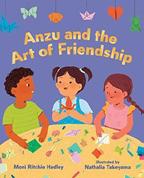
Hadley, Moni Ritchie
Illus. by Nathalia
TakeyamaWhitman (32 pp.)
$18.99 | April 27, 2023
9780807561355
It takes time—and a little creativity— for friendship to unfold.
Anzu, a child of Japanese descent with beige skin and brown pigtails, loves doing origami with her Ojiisan (grandfather). However, Anzu feels out of place at her new school—even when the class starts an origami unit. Her teacher, who presents as Black, shows the students how to create different folds, but one child responds, “I already know how to fold paper!” Despite Anzu’s efforts, her classmates don’t share her passion and instead poke fun at her. Ojiisan encourages frustrated Anzu to be patient and to take things “step-by-step, fold-by-fold.” Anzu connects with one child—tan-skinned Alex—and together they make a kaeru, or frog. Anzu finally begins to understand her grandfather’s advice, and her classmates discover the joy of folding paper into objects that are meaningful to them. Takeyama uses a vibrant, primary palette to underscore Anzu’s emotional journey and depicts a diverse group of students. Hadley’s story, however, is simplistic. The other students never apologize for their initial behavior (indeed, early in the story, one girl even bows at her in what seems to be a mockery of Anzu’s Japanese heritage)—a missed opportunity to model empathy, respect, and understanding. Moreover, the friendships are one-sided, with Anzu doing all the work to try to connect with her classmates. (This book was reviewed digitally.)
A disappointing and surface-level attempt at fostering inclusivity. (note about the meaning of origami) (Picture book. 4-6)
Hale, Nathan
Amulet/Abrams (288 pp.)
$14.99 | April 4, 2023
9781419765537
In this quirky graphic offering, two extinct creatures team up with a human reporter.
One morning, Trilobite (who goes by Bite) and BFF Amber (short for Ambulocetus, a prehistoric walking whale) find their cupboards and stomachs empty. After meeting Tiffany Timber, a paleo-newscaster, they decide they will become influencers like her in hopes of hitting it rich. However, when they are duped by the tricky Opabinia and his goons (a cactus named Cactus Annie and a crinoid named Ted), they find themselves unexpectedly paired with Tiffany in a wild video competition to save her reputation. As the rounds progress, it seems like the trio cannot catch a break, incurring mounting penalties from the bad-tempered anthropomorphized house. Will they be able to defeat Opabinia and win the video battle? Hale’s tale, executed in blue and white with strong black linework, is unapologetically zany, replete with poop jokes, an adorable talking kitten head, a giant hair dryer, and a gorilla deity sporting a halo that is also a portal, making this a perfect choice for those who find joy in madcap comics in the vein of James Kolchalka. Backmatter includes facts about the creatures mentioned and Hale’s inspiration behind such a kooky charmer. Tiffany reads White.

An exuberantly goofy romp. (minicomics) (Graphic fantasy. 7-11)
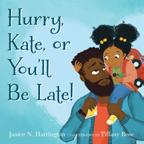
Harrington, Janice N. Illus. by Tiffany Rose
Margaret Ferguson/Holiday House (32 pp.)
$18.99 | April 25, 2023
978-0-8234-4510-3
Some things are worth the wait.
Oh no! Kate is late for preschool! But why? No, it’s not because she requested chocolate milk at breakfast. It’s not because she and Daddy—both Black—stopped to greet neighbors or because she waved to the garbage trucks, the ambulance, and the cars. Using simple, repetitive prose, Harrington chronicles a variety of activities—buckling a child into a stroller, waiting for the bus—that will be familiar to parents and little ones making the daily trip to school. Periodically stating, “Kate was late for preschool,” the author discusses all the things the two did, all of which have nothing to do with Kate being late, before finally explaining her tardiness— Daddy pauses right before she goes in to give her a warm hug. This tale of a doting father taking his child to school is brightly illustrated in primary colors that pop off the page. Daddy’s affection for Kate comes through clearly, from a scene of him brushing her
hair to a moment where he stoops to adjust her backpack and tie her shoe. Small book lovers are sure to respond to the joyful imagery as well as the lyrical bounce of the language. Daddy and Kate’s community is a diverse one. (This book was reviewed digitally.)
A tender snapshot of a loving daddy-daughter bond. (Picture book. 3-6)
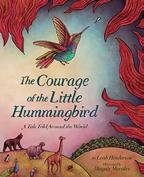
Henderson, Leah
Illus. by Magaly Morales Abrams (32 pp.)
$18.99 | April 11, 2023
9781419754555
“In villages, in towns, in cities, and classrooms. In whispers, in shouts, and in many different languages, the story of the little hummingbird of the Great Forest is told.” This version of the story, told around the world and likely originating among the Quechua people, imagines a setting in which animals from all over the globe live together in a forest until they’re forced to flee a fire. While they rest and recover, the eponymous hummingbird asks for help fighting the blaze, but they all refuse. Undaunted, the brave bird begins bringing water droplets from the river to the forest. The art and the careful placement of text guide the eye through the necessarily chaotic scenes, allowing readers to locate animals named by accompanying text. The animals are shocked, thinking the bird’s actions foolhardy and futile. “What do you think you’re doing?” asks the lion. “I’m doing all I can,” is the succinct, inspirational reply. This call to action is for the animals and for anyone who fears the insignificance of their efforts. It’s a powerful message, made accessible and engaging through both Henderson’s writing and Morales’ vibrant, vividly textured illustrations. Outstanding backmatter loaded with hummingbird facts and acknowledgement of the places the animals depicted here live in the real world rounds out this truly special offering. (This book was reviewed digitally.) Brave the crowds to get this one, wherever you are. (Picture book. 3-8)

Holden, Sarabeth
Illus. by Emma Pedersen
Inhabit Media (28 pp.)
$17.95 | April 4, 2023
9781772274424
A young Inuit boy loves bananas so much he eventually becomes one.
There’s no doubt that bananas are Benny’s absolute favorite food. The boy, who wears a T. rex costume wherever he goes,
gobbles up banana pancakes for breakfast, rides a bicycle with a banana seat, and even eats his tacos with fried bananas and hot banana peppers. Benny eats so much of his beloved yellow fruit over weeks and months that one morning he wakes up to find he’s transformed into a bananasaurus rex. In many of the images, Benny can be seen wearing his patched-up, well-loved dino suit. In others he is drawn as an actual dinosaur, complete with a hungry mouth full of teeth, hitting maximum appeal for fans of the Cretaceous critter. The illustrations are charming, especially the impressive bananasaurus rex, its arms made of a peeling banana, its tail the stem. The book’s silliness is its strength; it will certainly reach imaginative little readers who might themselves be obsessed with a particular creature, costume, or food. Brown-skinned, brown-haired Benny uses the Inuktitut words for mother (Anaana) and grandmother (Anaanatsiaq), asking his Anaanatsiaq about the word for banana. An opening letter to readers explains these Inuktitut words, their uses in the book, and how to pronounce them. (This book was reviewed digitally.)
Deliciously playful and imaginative. (Picture book. 3-6)
OTIS & PEANUT
Hrab, Naseem
Illus. by Kelly Collier
Owlkids Books (80 pp.)
$18.95 | April 18, 2023
978-1-77147-496-2
Series: Otis & Peanut, 1

Changes large and small are approached sensitively in this graphic novel for evolving readers.
In the lightest of the three stories, shaggy Otis, a longhaired guinea pig, is battling some fears about an upcoming haircut—it could hurt, itch, or turn Otis into a completely different critter! Otis’ naked mole rat pal, Peanut, doesn’t want to force Otis to chop their mop, but since they both came all this way, Peanut proceeds to make some changes to their look instead, buying a new hat, coat, and pair of shoes. The style evolution is so dramatic that Peanut muses that maybe the biggest change they could make would be to actually make a new friend. Otis knows just what to do: They get a haircut so they can be the new friend! This sweet and silly story is followed by a more emotional tale. After finding Otis swinging alone, Peanut listens compassionately while Otis grieves the loss of friend Pearl. Finally, Peanut helps Otis’ new house feel more like a home. Throughout the stories, the two friends work together to carve out a sense of belonging; like Frog and Toad or Elephant and Piggie, they’re sure to become reader favorites. Collier’s expressive, shaded black-and-white cartoon characters are complemented by a limited palette of hot pink, mustard yellow, grass green, and powder blue—a strong design choice that makes the story feel timeless and familiar.
A tender friendship story for the ages. (Graphic fiction. 6-10)
“Brave the crowds to get this one, wherever you are.”
the courage of the little hummingbird
Hughes, Langston
Illus.
by Tequitia AndrewsCameron Kids (24 pp.)
$15.99 | April 18, 2023
9781951836931
Series: Petite Poems
A “petite poem” by Hughes gets its first picture-book treatment.

Perhaps taking inspiration from the word song in Hughes’ poem, Andrews casts a red-winged blackbird as a harbinger of spring. She makes the narrator a young Black child who delights at seeing the bird through an apartment window, snow still visible on the sill. When the child ventures outside with a Black adult (likely their parent), they see several other signs of spring, some of which are directly named in Hughes’ poem, while Andrews adds others to deftly expand upon the text. For example, in a spread reading “Strong as the shoots of a new plant / Strong as the bursting of new buds,” the child is near a flowerbed, with unmentioned honeybees near the blooms. The red-winged blackbird appears again in a scene set in Harlem’s Marcus Garvey Park that includes a depiction of sculptor Thomas J. Price’s 9-foot-tall bronze figure The Distance Within. The bird flies over an open, grassy space where diverse children run and play in an idyllic scene embodying the interpretation of the poem offered in backmatter: “In the poem, Langston writes about how long he has waited and hoped for change—a sunny spring day, and perhaps a time when everyone has equal opportunity to experience freedom, joy, and peace.” (This book was reviewed digitally.)
Like springtime, worth the wait. (Poetry/picture book. 2-5)
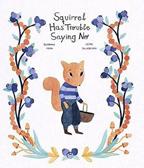
nubeOCHO (40 pp.)
$15.99 | April 18, 2023
9788419253194
Series: Somos8
Squirrel’s attempts to make a present for a friend keep getting interrupted.
Tucked away in her treehouse, Squirrel realizes that Bear’s birthday is tomorrow. She decides to bake special blueberry cookies for him and sets out to gather the berries. But there is only one blueberry bush in the forest, and it is far away. As Squirrel starts to leave, Fox shows up and asks if she can wait around to give the mail carrier a package. Squirrel does not have time but doesn’t know how to say no. Throughout the day, more and more friends ask for favors that Squirrel is unable to deny. She “gets a lump in her throat” and pushes her own needs to the side to help her friends. But when she finally goes looking for the blueberries, it’s late at night and she falls down a hole.
Squirrel’s friends come looking for her and help her realize they will still love her even if she has to say no sometimes. Cozy burnt orange tones mixed with cool purples and blues bring to life this tale translated from Spanish. The large-eyed anthropomorphic animals are endearing, and the setting seems both snug (inside Squirrel’s home) and vast (outdoor scenes). Readers who are oh-so-eager to please will hopefully take Squirrel’s lesson to heart. (This book was reviewed digitally.)
A necessary reminder that a little assertiveness can go a long way. (Picture book. 4-7)

Kagawa, Julie
Disney-Hyperion (336 pp.)
$16.99 | April 18, 2023
978-1-368-07414-8
Series: Society of Explorers and Adventurers, 2
A young explorer and his teammates head into the eye of the storm on their latest mission.
Since being anointed guardian of a mythical Mesoamerican feathered serpent in Shinji Takahashi and the Mark of the Coatl (2022), Shinji has become increasingly frustrated over not being able to utilize his magic. A momentary distraction comes when the Society of Explorers and Adventurers picks up a call: A shipwreck has been discovered containing invaluable artifacts from the legendary Natia people of Polynesia. Thirteen-yearold Shinji and his friend Lucy accompany the team, hoping to preserve the find before agents from the nefarious Hightower Corporation can plunder the site. New crew member Phoebe Mystic coaches Shinji in using powers, and master pickpocket Roux stows away on the submarine. Onboard, Shinji experiences visions of a tremendous boar, a Polynesian deity connected to hurricanes, who appears amid storm clouds and lightning. The team eventually finds an island formerly inhabited by the Natia people. While they explore the deserted village, Shinji, prompted by his visions, unleashes the Storm Boar, and a destructive hurricane heads for land. The only remedy is to break into Hightower to recover a stolen idol that will appease the boar. Kagawa explores friendship, classism, and collaborating with others as the diverse crew members learn to pull together. Readers may have lingering questions about Shinji’s Storm Boar visions, but this tightly written, action-packed narrative pleases.
A satisfying adventure. (Fantasy. 9-12)
“Like springtime, worth the wait.” an earth song
Atheneum (240 pp.)
$17.99 | April 25, 2023
9781665910569
Four kids help a fallen fairy return home.
Sixth graders Birdie and Gem have been best friends since they were 3, but lately things have been a little off. Gem is uncomfortable about the changes puberty has brought to her body and the objectifying remarks a boy at school keeps making; Birdie, meanwhile, is confused about her friend’s volatile emotions and is feeling left behind. Van, new to Texas from Ireland, is homesick and missing their friends. The three, along with Marley, Gem’s slightly younger brother, are thrown together when disgraced fairy Phoebe crash-lands on Earth. The only way to save her is to help her manifest each of their true wishes. Each kid thinks they know their deepest desire, but they have to peel away the layers to get to the wish’s true core. Told through alternating points of view and swiftly paced, the book homes in on understanding and acknowledging the real reasons why we want things, not just the solutions we think will bring us happiness. It steers clear of becoming a tired allegory about adolescence, instead thoughtfully focusing on navigating the challenges of changing bodies and relationships. The young people ultimately discover what matters most: friendship. Van is nonbinary. Most characters read White; Gem and Marley are Jewish.
A charming and engaging story in which friendship prevails. (Fantasy. 9-13)


Kelley, Ceece
Illus. by Sawyer CloudSoaring Kite Books (32 pp.)
$18.99 | May 2, 2023
9781953859518
Graduating to the “big kid rides” is a memorable childhood milestone.
A brown-skinned youngster with a cascade of curls bounds out of bed. It’s time to go to the fair! The child is taller, stronger, and braver than last year. Forget all those rides that just go “ ’round and ’round.” “The big kid rides will take me up to the skies!” But first Mom decides the family needs to eat lunch. Then Dad wants everyone to play a game. And little sibling Sissy wants to go on the plane ride. Each time, the narrator responds with patience: “but next up—big kid rides!” The title and the drawn-out sense of suspense may lead readers to believe that our narrator will need to summon some courage when the big moment arrives, but a quick internal pep talk—“Hey! Big kids don’t get butterflies. Simmer down in there!”—is all that’s needed. The ride is ridden, and the narrator loves it—this is a
straightforward story without much conflict. A slapdash lesson is tacked on to the end: Big kids can still do things they used to enjoy as well. Slightly stiff cartoon illustrations depicting striped awnings, classic rides, and cotton candy aplenty set the fairground scene. Dad is light-skinned with dark hair, Mom has brown skin with brown hair, and Sissy has lighter brown skin and brown hair in two puffballs. (This book was reviewed digitally.) Fairly unlikely to keep readers coming back for more. (Picture book. 4-7)
Kent, Deanna
Illus. by Neil Hooson
Random House (72 pp.)
$10.99 | $13.99 PLB | April 18, 2023
978-0-593-56607-7
978-0-593-56608-4 PLB
Series: Marshmallow Martians, 1
Four goofy Martians learn about Earth and its myriad smells in this graphic novel for emerging readers. Roused one morning by their sentient computer, G.L.O.W., Squishy, Snug, Woof, and Fuzz, a quartet of fluffy Marshmallow Martians, are presented with a large mystery box—the Polite Extraordinary Earth Portal 1000, or P.E.E.P. The sugary squad can use this well-mannered device to explore the third planet from the sun—all it needs to know is where specifically on Earth to send them. G.L.O.W. searches its database to find the best way for earthlings to teach their friends and family about new topics. But uh-oh! The intergalactic Wi-Fi is on the fritz, and all G.L.O.W. can come up with is “SHOW AND __ELL.” What could the last word be? Fuzz sarcastically suggests show and smell, so the group goes in search of Earth’s stinkiest stenches. The burp and fart jokes sprinkled along their path will keep readers giggling as the Marshmallow Martians use hightech smell suckers to vacuum up rank odors at an amusement park. The wide-eyed characters, all squishy stylized marshmallows, are so adorably huggable, it’s hard to believe they’re not already optioned as a streaming series. The springy palette feels intentionally reminiscent of marshmallow Peeps candy, with a mix of orange, blue, purple, yellow, and green hues combining into a saccharine sweet world that readers will want to bite into again and again. Human characters on Earth are diverse.
These alien confections are silly perfection. (Graphic fiction. 5-8)

Kim, Dan-ah
Greenwillow Books (40 pp.)
$18.99 | April 18, 2023
9780063076914
A young Asian girl dreams her way home.
Nari lives in a small, crowded apartment in a diverse, bustling city. Among the chatter from her grandparents, the arguing from her parents, the whining from her little sister, and noise from their neighbors, she finds little respite. As she watches a passing train, she wonders if she “can take it…and find her dream home.” Layers of textured, colorful vines brimming with flowers, insects, and animals greet Nari as she imagines herself at her first stop. After lying in an intricately lined nest in the woods, she boards the train again. Her next stop is a bridge amid rolling waves and a sky embroidered with birds and winding winds. The next few fantastical stops include a “delicate coral reef” with a brownskinned, coral-finned mermaid, the vast shelves in the New York Public Library, and back in time with dinosaurs roaming a lush forest. (She makes a mental note to bring her little sister next time.) As Nari floats in space surrounded by the galaxy, she wishes for her “parents’ laughter” and “her grandparents’ stories.” Eventually Nari takes the magical train back to her true home—noise and all. This spare narrative, with its graceful illustrations, gently makes its point—sometimes we need a little distance to appreciate what truly matters. Hints in the artwork cue the family as Korean.(This book was reviewed digitally.)
A quiet, imaginative, and tender tale of finding home. (Picture book. 5-8)

Kunkel, Angela Burke
Illus. by Claire Keane
Random House Studio (48 pp.)
$19.99 | $22.99 PLB | April 11, 2023
978-0-593-37335-4
978-0-593-37336-1 PLB
When Bob and Nancy begin to explore their artistic talents, they are children, born, respectively, in 1914 and 1928.
They will grow up to become Robert McCloskey, two-time Caldecott winner, including one for Make Way for Ducklings (1941), and Nancy Schön, sculptor of the famous ducklings, inspired by the picture book, in the Boston Public Garden, installed in 1987. The trajectories of these two and their eventual friendship (after many years of struggle to be recognized as an artist, Nancy would also create works based on other McCloskey characters) are chronicled in a lively and loving manner that will excite children and adults alike. The digital illustrations,
like crayon sketches that evoke an earlier era, push the story forward in a rush of humorous elements that emphasize the unusual devotion of these two people to their art. While creating the book, Bob buys live ducks to study in his New York City apartment. Years later, Nancy purchases “a duck’s foot from the butcher to study the way its joints move.” Nancy worries about whether Bob will allow her to use his work as the basis for her sculpture, but when a friend brings them together, the established book creator warms to the idea and becomes genuinely excited when he sees children react to Nancy’s models. Most characters present White, though a few children of color appear. (This book was reviewed digitally.)
A wonderful picture book about creativity and collaboration. (author’s note with photos, timeline, selected bibliography) (Informational picture book. 7-11)
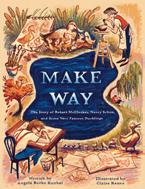

Kurpiel, Sarah
Greenwillow Books (40 pp.)
$18.99 | May 9, 2023
9780063093218
Young Snake experiences a familiar cycle: envy, rationalization, dishonesty, and contrition.
Working hard in art class (adorned with a big “Yay for Clay” banner), Snake has grand, perhaps unrealistic, hopes for the pot he has spent weeks making. But the finished product is less than amazing: in fact, he thinks it’s “the worst clay pot in art class!” But Mr. Owl, the art teacher, has accidentally attributed Snake’s pot to his friend Turtle and vice versa. Sneaky Snake appropriates Turtle’s superior creation—and the accolades the work earns from Snake’s teacher, parents, and classmates (one of whom, a small hedgehog, uses a wheelchair). That night, sleepless, Snake slithers to the kitchen—and deliberately knocks over the beautiful pot. Immediately remorseful, he glues it back together and resolves to “make things right.” But Turtle doesn’t think that an apology is enough to repair their broken friendship. Confessing to Mr. Owl, Snake asks for a second chance for Turtle to redo her project, and the teacher, praising Snake’s courage, offers them both a do-over—and Snake eventually learns a valuable lesson in friendship and honesty. The unpretentious art, mostly without hard lines, incorporates hues of blues and yellows, appropriately the colors of Turtle’s first pot. Many readers, young and old, will recognize Snake’s plight and admire his ultimate decision. (This book was reviewed digitally.)
A relatable lesson in how to make amends after a misstep. (Picture book. 4-8)
Lada, Effie Clavis (32 pp.)
$22.95 | April 18, 2023
9781605378657
“Every night, dreams lull me to sleep. / I try to stay awake to see where they come from, / but I always drift off….”
A nameless, light-skinned child with long dark hair takes readers on a tour of their dreams in this translation from Dutch. Much like in a dream, there is no continuous plot or narrative, but Lada’s gentle prose floats between reveries about beautiful clothes, the sea, and a rainy evening, all depicted with naïve illustrations that appear to be rendered in pencil. Forest animals in human clothes, friendly fish, and smiling children, most of whom have skin the white of the page, all welcome readers to the maze of dreamland in hazy shades of gray with a few pops of color. We see the narrator floating above the world on a feather and wandering through a garden. When the narrator winds their way back to the waking world, the visuals switch to full-color images with a watercolorlike look. The child now appears rested and confident: “I look the world in the eye / and…I am myself.” Ephemeral imagery and a sleepy pace will surely bring only good dreams to tired young readers. (This book was reviewed digitally.)
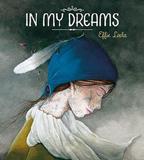
A welcoming wind down. (Picture book. 2-7)
Lam, Thao Groundwood (44 pp.)
$19.99 | April 4, 2023
9781773068725
Birthdays bring wishes, fun, and so many emotions.
A young child with brown skin and straight black hair is celebrating their birthday today. A group of friends diverse in skin color, size, and ability arrive, and the day includes games, crafts, and, of course, cake. With each new activity, the protagonist makes a few declarative statements about their emotional or physical state. When attempting to blow bubbles with their friends, the child states, “I am jealous” because their bubbles are subpar. Eager to blow a big bubble, the child adds, “I am impatient” and “I am sad” when they cannot do what their friends easily can. When served a huge slice of cake, the child declares, “I am hungry”; after devouring it all, they groan, “I am ... not feeling so well.” Ultimately, the statements lead to “I am … overwhelmed?”—a sentence that perfectly encapsulates the day and the mental state of many children experiencing big events. The book’s direct language and subdued tone are perfect, and caregivers will appreciate how the statements are made without judgment or embarrassment. The cut-paper collage art enhances the text, making for a deeply personal and honest look at the myriad emotions that fill our days. (This book was reviewed digitally.)
Worthy of a celebration, this is a multifaceted yet childfriendly exploration of the big emotions associated with birthdays. (Picture book. 3-6)

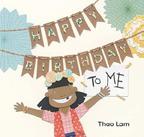
Lanan, Jessica
Roaring Brook Press (48 pp.)
$19.99 | April 11, 2023
9781250810366
Imagine the life of a common jumping spider!
Framed as a child’s efforts to understand what it might be like to be a regal jumper, the narrative explores the movements of the creature (referred to as Jumper); how she senses vibrations through her knees and elbows, hears, and sees; and her actions as she avoids predators and captures prey. There are two levels of text here, but in a reversal of what many nonfiction books do, the storyline is carried in the smaller print. The lines in larger print summarize what’s been described, working like retrospective section headings. The framing story, told mainly in the ink, watercolor, and gouache illustrations, centers on a visit to a community garden by a child with braids and tan skin. What makes this particularly appealing is that the child’s pictured actions climbing, jumping, listening, looking, and finding food—mirror the spider’s. Most spectacular is the magnified close-up of the spider catching her prey, a fly. Throughout, imagination has been harnessed to engage with the natural world without anthropomorphism. Two backmatter spreads provide far more detail about the anatomy and life cycle of this spider family, a glossary, helpful hints for finding and identifying spiders, an author’s note, further resources, and an important plea not to kill these valuable creatures. (This book was reviewed digitally.)
Readers will leap for this magnificent glimpse at a most marvelous arachnid. (Informational picture book. 4-8)

Leventhal, Ellen
Illus. by Natalia Grebtsova
Kar-Ben (32 pp.)
$19.99 | April 4, 2023
9781728443010
A musician inspired by her Jewish faith stirred people who appreciated her music.
Singer/composer/guitarist Debbie Friedman (1951-2011) was always passionate about music. Eventually, despite not knowing how to read music, she taught herself to play the guitar. A stint at an Israeli kibbutz convinced Debbie that Jewish music united people in joyful community, and she became determined to create music everyone could sing. She started composing songs, writing
“Readers will leap for this magnificent glimpse at a most marvelous arachnid.”
jumper
creatures of the in between
English lyrics translated from Hebrew prayers. While some people loved her songs, others were derisive, preferring “traditional Jewish music, just as we’ve always had!” and pointing out Debbie’s lack of formal musical training. Debbie remained undeterred, however, and continued to delight her large audiences, who, as she had dreamed, came together through her celebratory music. This admiring picture book will be welcomed in public libraries and, especially, in Jewish school and synagogue-library collections. It brings to vivid life a singer/composer whose influence is still widely felt and whose songs are acclaimed throughout the Jewish musical world but who deserves to be even more widely known. The colorful illustrations are lively and expressive; the communal ideal Debbie yearned for is depicted through numerous group portrayals. Appropriately, musical notes float across many pages. Some Hebrew words appear with definitions but without pronunciation guidance. Debbie presents White; some background characters appear to be people of color. (This book was reviewed digitally.)
This tale bears the same timely message as its subject’s music: Let’s all unite in a spirit of community. (about Debbie Friedman, glossary, author’s note) (Informational picture book. 5-9)
 Levine, Sara Illus. by Florence Weiser Millbrook/Lerner (32 pp.)
Levine, Sara Illus. by Florence Weiser Millbrook/Lerner (32 pp.)
$20.99 | April 4, 2023
9781728457963
Why is it that some animals eat poop but we find it gross? Using a variety of examples, the author illustrates that coprophagy, the consumption of feces, is not uncommon among animals—and that poop eaters have good reasons for this seemingly disgusting habit. The main narrative is simple enough for fledgling readers, while explanatory text boxes on each spread add more specific information for more advanced readers. Animals eat, or at least engage with, feces to strengthen their eggs, to clean their babies’ nests, to encourage their young to pee and poop themselves, or even as part of their digestive process. For dung beetles, it’s their diet, and for our own pets… who knows? Maybe they just like the taste! Cheerful cartoon animals slurp puddles of poop, carry fecal sacks (depicted as white tied bundles), lick their babies’ backsides, and seem to enjoy a variety of poop pellets. Stylized humans with varying skin tones and hair colors, however, turn up their noses no matter how it’s served. We don’t eat poop because our bodies don’t need it; indeed, it might make us sick. Levine knows how to grab young readers’ attention and explain science topics simply but effectively. And while Weiser’s illustrations are entertaining, they’re also enlightening—her digestive system diagrams are particularly edifying. There’s even more information about the subject in the backmatter, pictures for aspiring “poop detectives,” and plenty of poopy words.
Irresistible science. (further reading) (Informational picture book. 4-9)

Lewis, Cliff
Jolly Fish Press (288 pp.)
$19.99 | April 18, 2023
9781631636967
Can the power of friendship and political organizing change the course of the climate crisis?
Following a near-fatal asthma attack, Jonah Kaminski learns about the horrific impacts of climate change. After he rashly posts a YouTube video about the dangers of fossil fuels, calling out the polluting power plant in his Pennsylvania town, he passes out. Jonah thinks he’s dying, but a pink-clad astronaut with an inhaler rescues him. Her name is Sunny, and she claims she’s from the future and has a plan to save the world. With just 31 days to accomplish this task, Jonah, Sunny, and their newly formed crew race to combine their various skills to canvass their peers and hold corporations and politicians accountable. The first-person narrative aims for a humorous tone; however, the writing style undermines this by telling rather than showing. Time travel is used to deliver deus ex machina solutions that conveniently eliminate barriers. Character development is sketchy; characters seem to serve primarily to drive the plot. Most of the cast members, including Jonah, are assumed White; Sunny reads Black. There is some disability and racial diversity in the supporting cast. The strongest element of this story is the empowering message that directs kids to ignore small distractions, like eliminating plastic straws, and instead become part of the worldwide climate activism movement pushing for significant changes.
The relevant message shines despite uneven execution. (Science fiction. 8-12)
Lin, Cindy Harper/HarperCollins (416 pp.)
$17.99 | April 11, 2023
9780063064799
A prince seeks to fulfill his royal ambitions.
In the kingdom of Samtei, no ruler has ever ascended the throne without having formed a bond with a magical beast, or monstermate, by the age of 13. That is why Jin, the 12-year-old crown prince, decides to sneak into the forbidden Bureau of Divination and find out more about these now scarce mythical creatures. Before he is caught, Jin overhears ministers in conversation with his grandmother, the empress dowager, suggesting that he visit Whisper Island, a sanctuary for creatures of the in between. Despite Grandmother’s harsh punishments, Jin—with the aid of servant girl Bingyoo—gets into scrapes and is banned from going to the island where he

“An intriguing adventure with promise.”
hoped to find a monstermate until he can prove to her he is worthy. Nevertheless, Jin hires a ship to take him to Whisper Island, unexpectedly joined by stowaways: Bingyoo and Jin’s dog, Shishi. On the island the trio find wild monsters, the ruins of an attacked city, and some survivors, twins Mau and Masa and their Aunt Ayie. Solid storytelling outlines Jin’s growth as he gradually learns Whispering, a skill used to bond with magical creatures and cultivate true companionship. Unfortunately, other characters in this Asian-inspired fantasy world are not as well fleshed out. Readers will be left with some lingering questions about the political intrigue surrounding Jin’s family; a sequel may bring more clarity.
An intriguing adventure with promise. (author’s note, bestiary) (Fantasy. 8-12)
Lord, Cynthia
Scholastic (224 pp.)
$17.99 | April 18, 2023
9781338726114
A summer visit to Maine provides adventure and challenges for 11-year-old Mia.
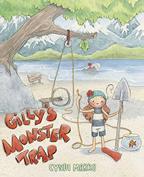
Mia worries about the many changes in her life and sees worst-case scenarios at every juncture. She must share her divorced parents with their new partners, but this summer Mia will be alone with her beloved grandmother. But there are new presences in Grandma’s life—mysterious stray cat Miss Agatha and new neighbor Cayman, a boy Mia’s age. Grandma encourages Cayman to show bird lover Mia an eagle nest. While watching the eagles, Mia and Cayman spot a large white bird swooping in, attacking the eagles, and Mia manages to take photos of it on her phone. Wanting to identify it before Cayman does, she posts to a birders’ site. The members recognize it as a white gyrfalcon. When Mia naïvely tells them her location, it sets in motion a series of nearly disastrous events, as the town is inundated with people determined to spot the rare bird. Cayman is dealing with his own worries about his mom, and his relationship with Mia is strained to the breaking point. Mia tells her own story, sharing her hurts, fears, misconceptions, and realizations and beautifully describing the nature around her. She learns to reach out for help in order to help make things right for the birds she has come to love, for Cayman and his mom, and even for Miss Agatha, discovering her own courage along the way.
A coming-of-age tale told with tenderness and compassion. (Fiction. 8-12)

Lui, Mavis Tilbury House (32 pp.)
$17.95 | March 14, 2023
9781958394007
Frank, who hails from a planet where everyone looks alike, embarks on a visit to Earth.

On planet Xob, all of the inhabitants are green, rectangular bipeds with eye stalks. That’s where Frank is from, and he “feels lost in this sea of sameness.” In search of something different, Frank hops in his spaceship and hurtles to “a mysterious planet with strange creatures.” Donning a silly disguise, Frank decides to investigate by questioning a group of children: “WHY DON’T YOU ALL LOOK THE SAME?!” Brown-skinned, dark-haired Asha, light-skinned, dark-haired May, and light-skinned, blond-haired Otis answer by appreciating their individual features, including their hair and skin color. This prompts the box-shaped creature from Xob to notice “all sorts of shapes and colors” of other humans nearby; author/illustrator Lui’s playful mixed-media images depict people who vary in terms of skin tone, one person using a wheelchair, and one person with a wide body and skinny legs. Delighted by Earth’s diversity, Frank returns to planet Xob keen on spotting (and appreciating) difference—even in a seemingly homogenous place. Though difference is mainly described in terms of racial characteristics, and the message is a tad hamfisted, Lui’s imaginative illustrations, full of geometric shapes, make this an engaging picture book for young readers. (This book was reviewed digitally.)
This story isn’t exactly out of this world, but little ones will be charmed by the protagonist’s journey. (Picture book. 4-7)
Marko, Cyndi
Paula Wiseman/Simon & Schuster (40 pp.)
$18.99 | April 18, 2023
9781665907552
A bayside town faces off with a thieving creature of the depths.
“I heard the monster nabbed a fishing net last night!” “I heard it swims underwater as fast as a TORPEDO!” “I heard its stinky breath can turn your skin GREEN!” Rumors circulate about an elusive nuisance in Lighthouse Bay. But Gilly, a light-skinned, water-loving child who totes her beloved fish, Finnegan, everywhere (in his bowl), won’t let the supposed monster stop her from swimming. That is, until the monster snatches one of her flippers. Gilly enlists a group of other Lighthouse Bay residents, who are diverse in skin tone but unified in their disgust for the alleged monster who has been stealing everything from sweaters to pails of prawns. They craft a rudimentary trap, and the monster is ensnared—but not in Gilly’s contraption. Worried that the creature, tangled in a
net in the bay, might drown, Gilly softens and helps it, discovering it’s not a monster at all but a clingy walrus in need of a pal and eventually befriending it. The watercolor-and-ink illustrations are friendly and matter-of-fact, bringing to life an adventure that’s ultimately an unexpected story of friendship. The quick pacing makes for a fantastic read-aloud, rounded out by fun facts about walruses and relevant websites. (This book was reviewed digitally.)
A cheerful tale certain to ensnare readers. (Picture book. 3-6)
Mathieu-Daudé, Agnès
Illus. by Olivier Tallec
Trans. by Nanette McGuinness
Arctis Books (48 pp.)
$7.00 paper | April 4, 2023
9781646908042
Series: Dagfrid, Viking Girl, 1
In this French import, Dagfrid learns the grass is always greener on the other island.
Dagfrid’s not a fan of Viking girlhood—she’s not into the double bun hairstyle; she dislikes the “superlong dress” that she’s supposed to wear; and, worse, she hates everything about fish, a staple on their island. She modifies the customs to her liking—she keeps her hair in practical braids and sews herself a pair of pants—and then has her brother teach her to build a boat (in exchange for showing him how to sew). Then, Dagfrid sets sail in hopes of finding “something to do somewhere besides eating fish!” She discovers an island inhabited by Viking girls much like her, except they’re sick and tired of eating sheep and enduring the smell of sheep fat lamps. Dagfrid trades fishing and boatbuilding lessons for some sheep. Back home, her introduction of livestock adds variety to her people’s diet and opens the door for more practical, medium-length dresses (though she still prefers her pants). Dagfrid is a winning protagonist. Her charming first-person narration manages to slip in some historical information (e.g., turf houses) but generally plays up Viking tropes in a cartoonish way that’s calibrated for reader enjoyment. Expressive spot art is equally charming. All characters are White. Book 2 publishes simultaneously.
A witty, engaging heroine sparkles in this series opener. (Historical fiction. 6-9)
Mathieu-Daudé, Agnès
Illus. by Olivier Tallec
Trans. by Nanette McGuinness
Arctis Books (48 pp.)
$7.00 paper | April 4, 2023
9781646908059
Series: Dagfrid, Viking Girl, 2
Viking girl Dagfrid struggles against gender roles.


Dagfrid’s sheltered older brother, Odalrik, is kept home while the other boys “burn and pillage villages.” Instead, he lounges on his boat and occasionally practices for his warrior future by running and yelling at livestock. Meanwhile, Dagfrid’s kept busy with endless chores. When her grandmother announces she has the honor of preparing a codfish feast for the chieftains (all the village’s men), she asks her parents why she must work while her brother relaxes and hears stories about the ridiculous vows to Thor her parents made before marrying. Odalrik, who’s bored beyond belief at not being allowed to do anything useful, tells Dagfrid about yet another set of silly parental vows—all concerning duties for male and female children. The siblings go behind their elders’ backs and join forces to cook the feast, giving Odalrik a break from boredom and a chance to learn something and lightening Dagfrid’s workload. Countering the silly, restrictive vows from before, the siblings vow to each other that they’ll allow any children they have to choose their own activities. Readers of this French import will enjoy Dagfrid’s modern, pragmatic mindset juxtaposed with the puerile, unquestioning adults—and that the kids tackle these conflicts themselves. In expressive, active spot illustrations, all characters are White.
Wily, undercutting narration translates drudgery into problem-solving. (Historical fiction. 6-9)
McCanna, Tim
Little, Brown (96 pp.)
$7.99 paper | Feb. 7, 2023
9780316306409
Series: Peach and Plum
Best friends Peach and Plum face familiar school experiences and challenges together.
The first few pages of this graphic novel show the anthropomorphic fruit pair arriving at Fruitdale Elementary, introducing themselves and their school, and letting readers know what to expect: “We’re never tardy.” “Right on time!” “Oh, by the way, this book’s in rhyme.” The table of contents, cleverly presented on a school bulletin board, follows; there are five chapters, with half-chapters scattered in between. These short, funny sections are welcoming to beginning readers,

a sky full of song
and while some might tire of so much rhyme, it may help with developing readers’ decoding. The characters’ school-themed adventures tread familiar ground, including dealing with a substitute teacher, doing homework, searching for a lost item, going on a field trip, and battling stage fright during a school play. Most pages are brightly colored and have between one and four panels; the characters are drawn with thick black outlines, stick-figure arms and legs, and large, expressive eyes. These elements combine to make the action and emotion easy to follow. Readers need not have read the first Peach and Plum book to understand this one.
Perfectly fine for those who like rhyme. (Graphic early reader. 6-8)
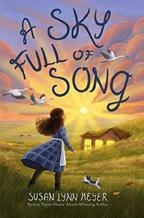
Meacham, Jon & Tim McGraw
Delacorte (256 pp.)
$24.99 | $27.99 PLB | April 25, 2023
978-0-593-17879-9
978-0-593-48496-8 PLB
Music has changed the world. Based on their 2019 adult book of the same name, Meacham and McGraw examine the history of patriotism and song from the pre–Revolutionary War period through the election of President Barack Obama. Sprinkled throughout the text are thoughts on specific songs, performances, society, and personal recollections. Although the book does not shy away from darker and more turbulent moments in American history, such as slavery, the struggle for women’s suffrage, and the civil rights movement, the overall tone is optimistic and patriotic. This combination, along with the book’s hurried pace, creates a sense of superficiality, as topics that are introduced aren’t fully explored or explained. Readers interested in both history and music may find this to be a useful starting place for research and inspiration, but they will need to seek out other sources to learn more. The book does a commendable job citing its sources in the text, but a final bibliography would have been useful for curious readers who want to seek out more information. The photographs and paintings do an excellent job of enhancing the text. Most striking, though, is the lack of information about events after the Obamas left the White House; a lot has happened in America, from polarization and rioting to an attempted insurrection. Astute readers will be left wondering why this time and its music haven’t been analyzed as well.
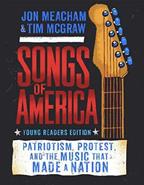
Promising but cursory. (image credits, song lyric credits, index) (Nonfiction. 10-14)
Meyer, Susan Lynn
Union Square Kids (272 pp.)
$16.99 | April 11, 2023
9781454947844
In 1905, a family fleeing pogroms comes to rural North Dakota.
Shoshana loves Liubashevka, her village in what’s now Ukraine, though she misses her barely remembered father and older brother, off in “Nordakota.” Liubashevka is getting dangerous for Jews, though: Cossacks gave Mama a head injury, and if Papa and 17-year-old Anshel were here, they’d be conscripted into the tsar’s army. So they journey to America, Shoshana sneakily acquiring a kitten en route. With Shoshana, older sister Libke, and the 3-year-old twins, Papa’s prairie dugout is crowded, but it’s good to have the family together again. Still, Shoshana feels the constant pressure of being different: Her Yiddish-speaking family isn’t allowed credit at the general store, and the bullying boys at the one-room schoolhouse call her hateful slurs. Wouldn’t it just be easier to celebrate Christmas? Wouldn’t the boys be nice if she just wasn’t Jewish anymore? Frequent parallels to the Little House series accentuate how different Shoshana’s experience is from the White, Christian, mythically American lives of her classmates. A friendly interaction with a Dakota girl allows Shoshana to feel anger for the displaced Dakota (though she doesn’t ponder the relationship between that displacement and her own family’s safe refuge). A moving, gently kind coming-toAmerica story.
A lesser-known Jewish American history offers a plainspoken message about assimilation and self-love. (author’s note, references) (Historical fiction. 9-12)
Miller, Kalena
Delacorte (272 pp.)
$16.99 | $19.99 PLB | April 25, 2023
978-0-593-48605-4
978-0-593-48606-1 PLB
A 12-year-old girl navigates OCD and rocky friendships while discovering her theatrical talents.
Shannon Carter looks forward to summers, when she and her two best friends take part in the local youth theater’s annual musical. Egyptian American hijabi Fatima is devoted to working behind the scenes, while performer Elise loves the spotlight. Shannon, who is cued White like Elise, describes herself as a hardcore techie, happy to stay out of sight focusing on costumes and props, but when the director overhears her singing, he insists she audition. One whirlwind song later, she’s cast as Brigitta von Trapp, the role Elise desperately wanted in this year’s show, The Sound of Music. Now Elise is ignoring her, and Fatima’s so
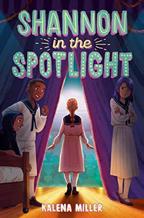
“A lesser-known Jewish American history offers a plainspoken message about assimilation and self-love.”
christo and jeanne-claude wrap the world
busy backstage she has no time to talk. What’s more, following a house fire, Shannon’s maternal grandmother is temporarily moving in, and she’s quite the abrasive personality, often criticizing Shannon’s mom’s parenting, particularly how she handles Shannon’s OCD. Shannon’s therapist suggests they try some exposure therapy activities, and there’s this new boy at the theater who’s pretty cute—Micah, who reads Black. It’s a lot to deal with. The book thoughtfully portrays Shannon as having agency in handling her OCD symptoms; they affect her life without controlling it. A natural-born performer despite her initial apprehension, she finds being on stage exciting and fulfilling, offering readers a positive role model for living with mental illness.
A solid read with valid representation. (Fiction. 9-13)
Monsef, Kiyash
Simon & Schuster (416 pp.)
$18.99 | April 4, 2023
9781665928502
Fifteen-year-old Marjan Dastani discovers hidden family secrets and assumes new responsibilities after her father dies.
Until his murder, Marjan’s Iranian immigrant father was a veterinarian who ran West Berkeley Animal Clinic. Now, the high school sophomore, whose Norwegian American mother died of cancer years earlier, is left trying to run the business. Francesca Wix, her African American neighbor, is now her legal guardian. As Marjan attempts to keep her father’s veterinary practice afloat, she ruminates on her resentment of the demands it made on her father’s time—and is startled to learn that she is part of an ancient lineage tasked with healing mythological creatures. The layers of complex emotional and identity issues Marjan tackles give her character great depth; moments when she reflects on her connection to Persian culture feel natural and raw. The more readers learn about how she helps fantastical animals, the more is revealed about her father and the mystery surrounding his death. Marjan also deals with emotional triggers that do not allow her to bury her feelings, and the exploration of grief will affect readers deeply. The detailed visual descriptions clearly conjure up the enchanting world Monsef has created, one populated by expressive, surreal beings, each of which has its own backstory.
A striking and heartfelt debut. (Fantasy. 10-14)
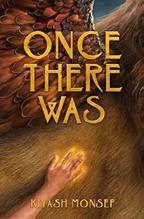

Moreno, Dano
Illus. by Hannah Abbo
Whitman (32 pp.)
$18.99 | April 27, 2023
9780807533543
Ryan White fights for equality.
1n 1984, when Ryan is diagnosed with AIDS caused by hemophilia treatments, misconceptions abound. Even though doctors say AIDS can’t be transmitted by playing or sitting with someone, many in his hometown of Kokomo, Indiana, are afraid, and Ryan is barred from attending school. As Ryan educates the public about AIDS via TV interviews, some people change their opinions. But some spread rumors that Ryan is gay and trying to infect others. “The more the lies were repeated,” the author observes, “the more they seemed true.” After a yearlong court battle, Ryan is permitted to attend school. But though he receives supportive letters from around the world, his classmates still don’t accept him…until, in 1987, he moves to Cicero, Indiana, and meets Jill, who brainstorms a plan with school officials to educate students about AIDS. Students, in turn, educate parents, sparking a chain reaction: “The more people knew, the less they feared.” In addition to honoring White, the straightforward text effectively demonstrates both the dangers of misinformation and the power of empathy and education. Simple cartoon illustrations convey Ryan’s loneliness and joy as well as the public’s angry scowls, uneasy glances, and welcoming smiles. Backmatter details Ryan’s influence on AIDS legislation and answers frequently asked questions about HIV and AIDS. Ryan, his family, and Jill present White; background characters are racially diverse. (This book was reviewed digitally.)
Thought-provoking and uplifting. (Informational picture book. 4-8)

Neri, G.
Illus. by Elizabeth Haidle
Candlewick (48 pp.)
$18.99 | April 18, 2023
978-1-5362-1661-5
A glimpse into the passion to create as manifested in the marriage of two 20th-century dynamos.
The protagonists, both White, are introduced as young adults, their likenesses framed on the wall. Christo is “a poor refugee…whose father once ran a fabric factory,” while JeanneClaude is “the rich stepdaughter of a French general.” They meet when Christo arrives at Jeanne-Claude’s parents’ home to paint their portraits. Witty repartee turns into genuine interest; she comprehends the meaning of the wrapped objects in
“Thoughtful design and substantive content speak volumes about how to appreciate modern art—and its creators.”
his apartment: “It’s revealing—while concealing.” Thus begins a love affair with each other and with implementing large-scale projects to help people see. Many installations are depicted, but Neri focuses more on the reasons for temporarily wrapping buildings, coastlines, islands—art as an experience to live on in memory, as a “scream of freedom,” or, as a young visitor to the fabric-ensconced L’Arc de Triomphe (2021) declares, “Because when you wrap something, it’s a gift.” An author’s note explains the combination of actual and invented dialogue. The palette is fairly muted, with the figures often portrayed in silhouettes or viewed from the back—a choice pairing well with the topic of coverings. This title complements Elisa Boxer’s Covered in Color (2022), illustrated by Susanna Chapman, which provides more background about Christo as well as photographs. Background characters are diverse. (This book was reviewed digitally.)
Thoughtful design and substantive content speak volumes about how to appreciate modern art—and its creators. (fun facts, bibliography) (Picture-book biography. 5-8)
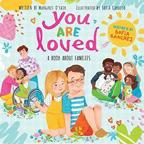
O’Hair, Margaret Illus. by Sofia Cardoso Scholastic (40 pp.)
$18.99 | March 7, 2023
9781338850079
There’s no one way to be a family. As the book opens, Sofia Sanchez, a White-presenting actor and model with Down syndrome who inspired O’Hair to write this tale, introduces readers to her family—her mother was born in California, her father was born in Mexico, and she was born in Ukraine. She explains that her parents had three biological sons when they decided to adopt her when she was a baby. They have more family nearby and farther away, and they often go on adventures together. The rest of the book makes clear that families are all different. They can live under one roof or be scattered across the globe. No family is perfect, but each is bound by love. Ultimately, families are those that make you feel good, who lift you up, and who make you feel “happy” and “strong.” This extended ode to families is heartwarming and inclusive, depicting racially diverse and interracial families as well as characters who vary in terms of ability and religion. Several characters reappear throughout the cheery illustrations; so many families are shown that they all often mingle in various scenes. The images bring life and energy to the narrative. A note from Sofia’s mother closes out the book. (This book was reviewed digitally.)
Overflowing with fond appreciation. (Picture book. 4-8)

Patrick, S.A.
Peachtree (400 pp.)
$17.99 | April 11, 2023
978-1-68263-388-5
Series: Songs of Magic, 2
They thought the Hamelyn Piper was safely locked away. Turns out he was just biding his time.
Patch Brightwater, a young escaped prisoner and disgraced Piper, and his friends, cursed girlturned-rat Wren Cobble and dracogriff Barver Knopferkerkle, stopped the true Hamelyn Piper from forming an evil army in A Darkening of Dragons (2022). Now in possession of vast quantities of obsidiac, a powerful substance formed from the bones of dragon children, the Hamelyn Piper must be stopped before he brings forth the End of the Skies and enslaves all the world’s creatures. The three friends inevitably but inadvertently find themselves in the thick of the hunt for the Hamelyn Piper while on a mission for the sorcerer, who has promised to permanently cure Wren’s curse. Members of the Eight, the elite squad that imprisoned the man they mistakenly believed was the Hamelyn Piper, along with dragons, griffins, and pirates sometimes help and sometimes hinder the trio’s progress, with loyalties always in question and motives often suspect. Nonstop action and plot twists keep readers on their toes, and the regular introduction of new characters and obstacles to the friends’ journey adds to the story’s complexity. Readers seeking resolution to the big questions asked in the first book are going to have to wait for the next installment. All human characters default to White.
A strong second entry in this action-packed fantasy trilogy. (Fantasy. 9-13)
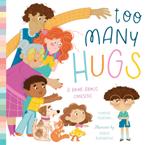
Pearson, Yvonne
Illus. by Maria Burobkina
Bushel & Peck Books (32 pp.)
$17.99 | May 9, 2023
9781638191483
When he feels overhugged, Theo takes action.
Theo loves Dad’s morning hug: “His dad’s hugs were warm, and he smelled like buttered toast.” But a host of unwanted hugs follows: the brown-skinned neighbor Jose’s sticky hug; a hug from Jose’s dog, Spot, which knocks Theo over; a painful hug from Theo’s cat; and too-tight hugs from a light-skinned neighbor and Grandma. When Theo finally seeks refuge in his room, he almost overhugs his teddy bear but stops, realizing that maybe his toy doesn’t want a hug either. Inspired, he drafts rules (shown in a childlike scrawl with poor spelling) that he hangs on the refrigerator door—immediately garnering better results in his hug-life. The important message about bodily autonomy is clearly stated and further articulated for parents in the backmatter. However, the cartoonish, chaotic artwork is
off-putting, and the pace feels a bit frantic. Still, given that all children should learn to ask before giving a hug and to expect the same from others, it’s one that many little ones will benefit from reading. Theo and his family have light tan skin. (This book was reviewed digitally.)
A story with a crucial message hampered somewhat by garish art. (tips for children) (Picture book. 4-8)
Perry, Emma Illus. by Claire Alexander Candlewick (32 pp.)
$17.99 | April 25, 2023
978-1-5362-2849-6
Rainy days equal fun!
It’s raining, it’s pouring. What better time for doting parents, neighbors in an apartment building, to take their kids outside? Suiting up their toddlers and infant appropriately in brightly hued rain gear and galoshes, they step outdoors and, with the babe in a stroller, watch their children gleefully greet each other and take off. There are PUDDLES to jump in! Even a pet dog gets involved. This book delivers frolicking tots gamboling in said puddles—there’s mud, too—and offers up examples of delicious onomatopoeic words readers and listeners will delight in repeating as they mimic the kids’ activities. (Savvy grown-ups will provide children opportunities to display their puddlejumping prowess.) A few from the text to savor that simply drip with squishy “wet” sounds are set in oversized type, e.g., “Squish! Squash! Squelch!” When the puddle jumpers are thoroughly soggy, it’s time to return home, remove wet togs, and have a snuggle. Then, to top off the day, just when you thought nature couldn’t produce a better show, a gorgeous multicolored arc appears in the sky. This exuberant British import, written in staccatolike prose emulating the rapid patter of raindrops, is a rainy-day winner. The colorful, energetic digital illustrations appropriately resemble watercolors. One of the families is brown-skinned, another is White-presenting, and the other includes a tan-skinned parent and lighter-skinned child. (This book was reviewed digitally.)
Jump right into this joyful charmer. (Picture book. 3-6)
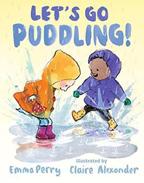
Plas, Mary Vander
Illus. by André Ceolin
Whitman (32 pp.)
$18.99 | April 27, 2023
9780807510445
Calvin slowly realizes he’s not ready to be a grown-up just yet.
Calvin, who, like his parents, has brown skin and dark hair, is upset by all that he cannot do. Though his father has always affectionately called him Little

Man, he isn’t big, tall, or strong enough to do what he wants, like reaching the counter. Frustrated, Calvin imagines himself tall enough to make a slam dunk. He envisions himself as a huge tree that towers over the others. And he fantasizes about being a strong storm cloud that wreaks havoc outside of his house. Afraid of this new strength, Calvin opens his eyes and returns home. He tells his father that he wants to be called Calvin, not Little Man, because he wants to remain a little boy…at least for now—a rather mature realization. The book also offers a commendably multifaceted view of masculinity. Upending gender stereotypes, Calvin’s father is seen baking cookies and cheering his son on when he learns to ride a bike. Though he’s strong, he’s also “cuddly and comfy” “and “soft and safe”—exactly the kind of man Calvin wants to be one day. Children will readily relate to Calvin. The cartoonlike illustrations are appealing. The facial expressions of the characters are well done, especially Calvin’s fear and frustration and his father’s tenderness. (This book was reviewed digitally.)
A touching read that will speak to all little ones longing to be big. (Picture book. 4-8)
Raschka, Chris
Greenwillow Books (32 pp.)
$19.99 | May 16, 2023
9780063210509
A chromatic tribute to pianist and composer Mary Lou Williams (1910-1981).
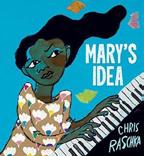
Painting on rough brown paper in his typically elemental style, Raschka offers images of two brown hands and a keyboard creating music evoked by flowing swirls and bubbles of color—adding hand-lettered comments that highlight the idea of the player’s active agency:
“It was Mary’s idea to play the piano at three. It was Mary’s idea to play the piano for me.” In a biographical afterword, he traces Williams’ career from child prodigy to jazz icon, which included a turn away from performing at one point to teaching and other pursuits, and then closes with a portrait and an eloquent passage from her Jazz for the Soul album urging “attentive participation” from listeners in order to “reap the full therapeutic rewards that good music always brings to a tired, disturbed soul.” Along with offering inspiration to young musicians, and like the other tributes to jazz greats that he has been writing and illustrating since the beginning of his career, this loving remembrance captures rich hints of his subject’s joy and sound. (This book was reviewed digitally.)
Elevating and evocative. (Informational picture book. 5-7)
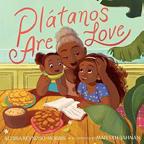
Reynoso-Morris, Alyssa Illus. by Mariyah Rahman Atheneum (40 pp.)
$18.99 | April 11, 2023
9781665902731
An ode to a beloved comfort food is also a love letter to family ties. Esme, a dark brown–skinned child with long curly brown hair, and Abuela, who also has dark brown skin, visit the market to buy plátanos. When Abuela reminds Esme that plátanos are love, the young narrator muses, “I thought they were food. But Abuela says they feed us in more ways than one.” Esme receives a brief history lesson during the shopping trip, learning that their ancestors picked plátanos from trees long ago. Esme helps Abuela prepare several mouthwatering plátano dishes and hears more of their family history as they cook. Esme’s ancestors were forbidden from reading, writing, and drawing, so they memorized them and secretly passed the recipes down through generations. The tasty dishes of tostones y patacones, tajadas y maduros, and mangú y fufú are prepared with love and shared with friends and family. Esme writes the recipes down in a notebook titled “Nuestra Familia’s Cookbook” and notes that “Abuela says plátanos are our past. I say plátanos are our present. And with this book, plátanos will always be our future.” Text that incorporates unitalicized Spanish throughout and warm and inviting illustrations convey affection for both food and family and will leave readers hungry for plátanos. Characters throughout the book read as Afro-Latine. (This book was reviewed digitally.)
A cozy story for the stomach and the soul. (glossary, recipes) (Picture book. 4-8)

Riley, Ronnie Scholastic (272 pp.)
$18.99 | April 18, 2023
9781338855876
Middle schoolers navigate friendship and identity.
Twelve-year-old Jude Winters is out as nonbinary to their mom and gay best friend, Dallas, and changed their name at school, but they aren’t out more widely, and this is most distressing when they visit their old-fashioned grandparents. When former soccer star Stevie is frienddumped by the popular and malicious Tessa, rumors spread that it’s because she has a crush on another girl, and Jude and Dallas invite her into their friendship. Underrepresented identities are given a welcome highlight; unfortunately, the story is undermined by thin plotting and limited character development. Jude often needs support for their ADHD and muses that their fatness makes them less legible as nonbinary. Dallas seamlessly fits the trope of the angelic Black best friend, and his race is only
mentioned when it feels convenient for the story. The treacly dialogue involves middle-aged–sounding middle schoolers patting each other on the hand, affirming each other’s identities through dialogue that feels unrealistic for the age group, and saying that they love each other, while most characters’ growth journeys feel unearned and contrived. Although the author’s note indicates the intention not to reveal Jude’s gender assigned at birth, readers will be able to infer it from an early scene; as a result, there is a missed opportunity to explore the ways their gender assignment has impacted how Jude moves through the world.
Well intentioned but forgettable. (glossary, resources) (Fiction. 9-13)

Rotner, Shelley Holiday House (32 pp.)
$18.99 | March 21, 2023
9780823451913
Kids with disabilities demonstrate the many ways they communicate, learn, and have fun.
“Everybody has a body,” readers are told, but “we’re different shapes, sizes, and shades, and our bodies work in different ways too.” However, those differences “shouldn’t matter. We’re ALL kids!” In simple sentences overlaying color photos, kids with conditions such as blindness, limb difference, and allergies chime in to describe how they learn, play, and love “in our own way.” As the text notes “We have different ways to communicate,” a child wearing hearing aids explains that they use sign language. On a page devoted to kids with learning disabilities, a child confidently declares, “I know I’m different, but I’m just being me.” Importantly, the narration acknowledges that disabilities aren’t always visible; for instance, a child mentions needing medication for their heart. The text concludes by encouraging readers to “be kind to everybody and every kind of body!” Vibrant, expressive photos of racially diverse disabled kids reading, swimming, cycling, cuddling pets, and more present disability as a natural facet of being a kid. Though the kids’ collective narration is well spaced and presented in a large font, comments by individual kids, rendered in a smaller font, blur slightly against the photos. Backmatter includes profiles of advocates with disabilities and further information about disability rights. (This book was reviewed digitally.)
An upbeat, welcome introduction to disability. (glossary) (Informational picture book. 4-8)
“A cozy story for the stomach and the soul.”
plátanos are love
 Roy, Katherine Norton Young Readers
Roy, Katherine Norton Young Readers
$24.95 | March 7, 2023
9781324015840
(72 pp.)
A basic guide to how plants and animals make more plants and animals. There are lots of strategies. “But,” Roy writes, “the pattern stays the same: meet, merge, and create something new.” Studiously avoiding direct references to human reproduction in her narrative (though covering it in her author’s note), Roy opens with simple language and then goes on to explain in greater detail how various flora and fauna accomplish each element in the pattern— from attracting mates (“Future Prince,” reads a sign next to a frog) and making gametes to creating external seeds and eggs or internal safe spaces for early stages of development, leading up to birth. Her language is specific enough to include terms like uterus and amnion, and, though she’s not above putting party hats on a newly hatched snake, in general she depicts the insides and outsides of her figures with naturalistic precision, adding select but helpful anatomical labels and explanatory captions. Her fulsome backmatter includes suggestions for backyard nature study and a detailed account of the “incredible dance moves” performed by splitting chromosomes during meiosis. Meanwhile, glimpses early on of a possibly biracial pregnant couple with a child that culminate in a closing double gatefold view of their arrival at a picnic attended by people diverse in age and skin color silently add a certain other species to the lineup. A perennially hot topic explored with a deft mix of specific details and light touches. (glossary, selected sources, list of species that appear in the book) (Nonfiction. 6-11)
RAIN
Rylant, Cynthia
Illus. by Lisa Congdon Beach Lane/Simon & Schuster (48 pp.)$18.99 | April 25, 2023
9781442465091
How do different living beings react when it starts to rain?
Rylant’s command of language is evident as the book opens—“There is a softness / and a quiet / before the rain comes.” The stylized art on this beginning spread shows distant objects and animals—a two-story house, a playground, a pond, squirrels—that will be featured in close-ups in the pages to come. Perhaps most importantly, the sun in a blue-gray sky is half-masked by a cloud. As the text and art progress, readers learn that rain is pending and that trees, animals, and children sense this and prepare for it. In slightly varied ways, Rylant poses simple questions about who expects the rain, with answers conveying bits of extra information. “And the dogs who have been / busy chewing bones / in friendly backyards: / Do they know
about the rain? / The dogs knew even before the cats knew, / for their noses knew yesterday.” As expected, the ducks are happiest out in the rain. The text, complemented well by the art, continues, extolling the virtues of rain until the sun returns. The gentle, uplifting text and the cheerful illustrations make this a good candidate for bedtime or naptime read-alouds. Though the artwork generally avoids depicting faces, human characters appear to be dark-skinned. (This book was reviewed digitally.)
As soothing as the patter of rain against a window. (Picture book. 3-5)


Rzezak, Joanna
Thames & Hudson (32 pp.)
$16.95 | May 23, 2023
9780500653241
A hodgepodge of bird facts.
While there is a throughline to this book—the annual migration of swallows from Europe to Africa—it may take young listeners most of the book before they realize it, as it’s a subtle aspect that is buried in an avalanche of seemingly miscellaneous facts about many different species of birds. From habitats and nesting habits to prey and how birds fly, the facts come hard and fast in small paragraphs of text scattered across the pages, though there isn’t much rhyme or reason to their order—wingspan is used several pages before it is defined—and some information is repeated, even on the same page. Rzezak’s stylized birds have expressive eyebrows that unfortunately often make them look angry. The stylization can also at times make species look too similar to one another, as on the page shared by the sociable weavers and the swallows, which differ in shape only in their tails. On a page with lots of birds on a power line, the one redheaded swallow readers are told to find on every spread is among a group labeled blackbirds instead of with its fellow swallows at the other end of the line, and its body type matches the blackbirds’. Various words are bolded in the text, species names among them, but there is no glossary, and the book lacks backmatter and a map as well, serious lacks in a nonfiction text for children.
Flock away from this one. (Nonfiction. 4-8)
Art
Salyer, Hannah
Clarion/HarperCollins (48 pp.)
$19.99 | April 11, 2023
9780358469841
Prehistoric art “rocks” the world. This book about rock and cave art around the world introduces children to masterpieces dating back millennia, allowing

“A basic guide to how plants and animals make more plants and animals.”
making more
readers to appreciate unique specimens of ancient creativity and recognize human kinship with distant ancestors who “took the time to create.” The artwork, which relies on ceramic sculpture, photographs, colored pencil, charcoal, pigment, and digital media, teems with vivid images of paintings, drawings, and etchings. These include examples of rock art found all over the globe, with ages noted. Some are especially mesmerizing, presented as if in caves “illuminated” by lantern light, simulating flickering flames, akin to the conditions under which the art was made originally. Salyer makes intriguing points about these works as priceless repositories of history and culture. One example: Many animals depicted in rock and cave art no longer exist; examples of extinct creatures and when they died out are given. The illustrations highlight Indigenous peoples who may “still have distant familiarity with these ancient sites and stories.” The author raises questions about how and why our ancestors crafted their art: “Mapping the stars? Documenting the world around them?” Readers will also learn our forebears used allnatural materials, such as charcoal, ash, and malachite, and tools including flint, shells, and yucca stalks. Excellent explanatory backmatter concludes this fascinating book. Modern-day people are diverse; ancient people are seen in silhouette. (This book was reviewed digitally.)
How extraordinary that ancient ancestors call out to us from the rocks we see all around. (site map; a story within a story: the rediscovery of the Lascaux caves; author’s note; words to know; timeline; resources for further reading and investigation) (Informational picture book. 8-11)

(40 pp.)
$18.99 | May 9, 2023
9781534496033
A testament to the power of mangoes. Brown-skinned Mia and Mama, who is darker-skinned, have moved into a new house. Mia loved their apartment and misses it but understands that Mama has wanted a house for so long; indeed, having a house has become Mia’s dream, too. It’s a pink two-story building with “five rooms. Eleven windows. And a whole lot of promise.” One of the things that makes this home so special is the mango tree in the yard. Mia is delighted to finally eat a ripe mango, special because it’s from their home. After that, the mangoes just keep coming and coming, and soon there are too many. But Mia quickly has the idea of sharing the fruit with the neighborhood. A full spread depicting racially diverse people eagerly mingling in Mia and Mama’s yard allows readers to see how wonderful it can be to find a new community. Mia decides, “There’s no such thing as too many mangos.” The light and optimistic story and the vibrant artwork complement each other smoothly. Collagelike illustrations in warm tones make inspired use of color, the pink of the new home contrasting well against the green of the lawn.
The book will have readers considering what it means to forge new connections. (This book was reviewed digitally.)
A sweet and refreshing reminder that community is all around us. (Picture book. 3-6)
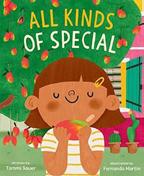
Savit, Gavriel
Illus. by Mildred Hankinson
Knopf (336 pp.)
$17.99 | $20.99 PLB | April 11, 2023
978-0-593-37866-3
978-0-593-37867-0 PLB
A runaway teen spirit medium encounters real magic.
Eva Root hadn’t planned on becoming a fraudster running fake séances, but when Mrs. Blodgett takes her from Miss Augusta Grandage’s Home for Unwanted and Destitute Girls, that’s what she demands of the pink-cheeked 7-year-old. She’s lived with Mrs. Blodgett for nearly half her life, bilking the unsuspecting out of their savings, before she finally swipes a wad of cash from Mrs. Blodgett’s carpetbag and runs away. When she meets a boy called Henry Poole on her train journey, she’s unsure how to deal with his genuine friendliness, and she decides to join him at his destination: the 1893 World’s Fair in Chicago. It doesn’t hurt that she’s been having visions that seem to lead her to Henry, and he’s been drawing visions of his own, including pictures of Eva’s dreams and Eva herself. The magical adventure they’re consumed by in Chicago is dreamy, with lost time, lost memories, and, for most of their adventure, very little free will. The unmoored reality flows dreamily, and the prose is nearly the opposite, disconnected and staccato. The result keeps readers at a distance, as if Eva’s experiences and reactions are all padded in cotton wool. Spot art adds to the historical setting. All characters appear to be White.
An emotionally distant historical fantasy. (Fantasy. 10-13)

Scales, Helen
Illus. by Rômolo D’Hipólito
Flying Eye Books (80 pp.)
$19.99 | March 7, 2023
9781838748593
A diverse team of scientists explore the Galápagos Islands on land and under the surrounding waters.
Marine biologist Scales offers another rich examination of ocean life in this imagined expedition. Spread by spread, words and pictures effectively combine to detail wildlife seen on 13 of the islands and islets of this Ecuadorean National Park and under its protected waters. After a brief introduction to the archipelago, seven diverse scientists introduce themselves with
speech balloons supplemented by short paragraphs describing their particular specialties. Though they hale from all over the world, they are united in their enthusiasm for exploring this “hotspot of biodiversity.” There’s a spread introducing their research vessel and another for their diving equipment and deep-diving submersible. Finally, there’s a general explanation of wildlife conservation concepts: endemic versus introduced species and extinction categories. What follows are spreads devoted to research topics (including particular animals) and methods. Some vertically laid-out pages allow portrayal of underwater levels. While the topical organization of the book is pegged to the different islands, there’s no actual map chronicling the voyage, though a map of most of the visited islands (missing Daphne Major) appears on the endpapers. Still, this is engaging and informative.
A wide-ranging introduction to a wildlife spectacle. (glossary, index) (Nonfiction. 7-12)

Shusterman, Neal & Eric Elfman
Little, Brown (400 pp.)
$17.99 | April 11, 2023
978-0-7595-5524-2
Series: The N.O.A.H Files, 1
A middle schooler must outrun a cadre of strange individuals while puzzling out the truth of what he is in this science-fiction offering.
Fourteen-year-old Noah Prime longs to live somewhere bigger than his small town of Arbuckle, Oregon, though he is happily involved in motocross—at least until he learns that the course is being torn down to make way for a condo development. This bad news coincides with some particularly strange happenings in Noah’s life, such as a literal (and very confusing) collision he has with Sahara, a girl that he comes to find very interesting. This is followed by his experiencing a brief and total paralysis while arguing with some bullies, which his friend Ogden, who is on the autism spectrum, insists is due to a psychological phenomenon called conversion disorder. The truth turns out to be much more complex, and it sends Noah, younger sister Andi, Ogden, and Sahara on a madcap quest involving aliens, time travel, an erupting volcano, and much more. The adventure is laced throughout with goofy, sarcastic humor, balancing the fantastical and somewhat confusing turns of events. While there is resolution at the story’s end, it also clearly sets the stage for a follow-up. The main characters read White by default.
A fun, if messy, thriller that’s not afraid to go straight over the top. (Science fiction. 10-14)

Andy Illus. by Jenny Miriam Whitman (192 pp.)
$19.99 | $10.99 paper | April 1, 2023
9780807512067
9780807512036 paper
Series: Science in Action
A broad overview of the causes and consequences of the latest onset of climate change.
Sima simplifies his topic, sometimes a little too much: “Anything that uses fossil fuel electricity produces greenhouse gases.” But by framing modern climate change as chiefly driven by human-caused increases in the amount of CO2 released into the atmosphere and hammering on the notion that the only effective way to combat it is collective action, he gives young readers easily graspable starting points for understanding both the problem and what to do about it. He also properly asserts the interconnectedness of rising worldwide temperatures and challenges like air pollution, deforestation, waste plastics in the ocean, and the destructive practices of what he calls “Aggravated Agriculture” and highlights the significant roles of several Indigenous populations in maintaining sustainable environments. Sima’s suggested activities for readers rarely go beyond “organize a club”—still, though couched in generalities, his scary references to the “sixth mass extinction” and already-evident threats to human civilization are provocative enough to prompt concern…and, likely, active responses. Miriam’s brightly hued cartoon views of groups of racially diverse children smilingly engaged in green activities or speaking out through megaphones do lighten the overall tone.
Occasionally simplistic but pulls together a host of related eco-issues. (glossary, recommended reading) (Nonfiction. 9-11)

Smatana, Martin
Trans. by Julia Sherwood & Peter Sherwood Boxer Books (112 pp.)
$19.99 | April 25, 2023
9781914912498
Where’s the good news?
Early in the Covid-19 pandemic, filmmaker Smatana began to collect good news from around the world, illustrate it with textiles, and distribute the results to friends. His project grew from there, and the resulting 52 stories (QR codes linking to the original stories are included at the end) appear together in this work, translated from Slovak, intended to provide light to anyone experiencing a dark time. Many of the vignettes are Covid-related, while others are not; some incidents occurred during 2020, others took place in the past, and some are more recent. While the concept—providing uplifting info, much of which is Covid-related—feels a bit dated, it still serves as a
reminder of the many good things that occurred during lockdown, largely connected to people working together, while the other stories are a bit more whimsical. The illustrations themselves, fashioned from old clothes, are based on a process Smatana uses in his filmmaking and are childlike and appealing, featuring diverse characters. While the focus on positivity may strike some as overdone, this is overall a cheerful and comforting assortment of stories. Though not necessarily a title that children will sit down and read from cover to cover, it might work well as a weekly focus to help establish a respectful and empathetic classroom environment or as a gift book for adults. A browsable collection of positivity that will inspire and provide sustenance. (Nonfiction. 6-12)

Snoek, Connie Clavis (18 pp.)
$13.95 | April 18, 2023
9781605378473
A group of animals help little ones count from one to 10.
Each page of this wordless picture book includes a different number (or two) and animal combination. We see three yellow beetles, each with three black dots, nestled into a tree; the contrast of the red tree against the white space results in the number three. Snoek invites readers to practice numeracy and one-to-one correspondence but also gives the pages extra illustrative depth, cleverly incorporating the shape of the number into the image. On one page, we see angular touches to the birds’ beaks and necks so that they appear to resemble the number seven; the llamas’ bodies and necks evoke the swirl of the number six. Another page features eight spiders, each with eight legs and a figure-eight–shaped body. Unlike counting books that simply provide readers with objects and numbers, Snoek’s version invites lingering with each page turn. Though the palette is limited to primary colors and black and white, the visuals are nevertheless intriguing, each page different than the last thanks to shadowing and inspired color combinations. There are counting books aplenty, but this take provides readers with an intentional, artistic experience. (This book was reviewed digitally.)
Rests cheerfully at the intersection of art and (early) math. (Picture book. 1-3)

Sookocheff, Carey
Groundwood (40 pp.)
$19.99 | March 7, 2023
9781773065892
Alice brings a special stone to school for Show and Share but loses it.
With some humor, the illustrations depict a diverse group of classmates clearly uninterested in light-skinned, brown-haired Alice’s
round, flat stone. They unanimously show interest once Alice confides that she has not mastered stone-skipping and had been saving this perfect skipping specimen—given to her by her grandpa—for the next time they practiced together. Her grandpa died before that chance came, making this stone a beloved keepsake. Both text and art are simple and thoughtful: “Everyone was quiet as Alice slipped the stone back into her pocket.” Brown-skinned Mr. Hawkins gently thanks Alice, and a brown-skinned classmate takes Alice’s hand as the children head outside for recess—only for Alice to realize the stone is missing. The text makes clear there were many opportunities for the stone to have slipped from Alice’s pocket; the possibility of theft is not even entertained. Every child searches diligently, each finding a different stone, until Alice has stone-laden pockets—but not her special one. When Alice arrives home, she conceives a new plan for remembering her grandpa. Art in a muted palette, an inspired layout, and accessible text work together to tell a quiet yet complex tale that deals candidly with grief, kindness, and one child’s creativity and resilience—without undue sentimentality. (This book was reviewed digitally.)
Sweet support during loss. (Picture book. 4-8)
Spangler, Brie
Knopf (272 pp.)
$21.99 | $13.99 paper | April 11, 2023
978-0-593-42849-8
978-0-593-42848-1 paper
In a family where baseball is life, how do you keep swinging for the fences when life throws nothing but curveballs?
Seventh grader Gemma Hopper is used to standing out in a crowd. She can’t help it—she’s 6 feet tall. Everyone knows her older brother, Teddy, the 14-year-old slugger on his way to Florida with an exclusive travel team. But even though Gemma pitches his batting practice every day, she feels like she’s little more than his shadow. Home life is not much better: Since their mom left, Gemma cares for her younger twin brothers and picks up all the household chores while her dad works. Feeling abandoned by her mother, used by her brothers, and ignored by her father, Gemma already has three strikes. Middle school social turmoil adds to the personal turmoil, and Gemma takes out her frustrations during one of Teddy’s daily batting practices, pitching her hardest and striking him out. It’s recorded by an onlooker, going viral overnight and giving her a chance to reimagine possibilities for her life. Spangler’s mix of paneling and full-page spreads creates a visual tone that’s both cohesive and dynamic. The black, white, and blue-green palette fluctuates only once, adding a contrasting reddish-brown anti-Gemma during the poignant penultimate scene when the titular character is duking it out against her inner critic. Gemma’s resilience and realism will have readers rooting for her. Main characters are White.
A sensitively told story about the power of self and sports. (Graphic fiction. 9-13)
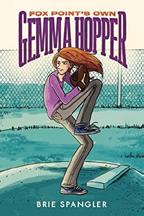
“Sweet support during loss.” the remembering stone
Steinberg, D.J.
Illus. by John Joven
Grosset& Dunlap (32 pp.)
$6.99 paper | April 25, 2023
978-0-593-38721-4
Series: Here I Come!
Summer vacation is the stuff children’s dreams are made of. This collection of verse begins with that first day a child can sleep in instead of being woken up for school by the alarm clock (“BEEP-BEEP-SNOOZE”) and ends with the first day back at school. In between, full-color cartoon illustrations and short, upbeat poems, usually one per page, explore how children in diverse communities spend their summers. They line up on the sidewalk after hearing “the jingle jangle of the ice-cream truck!” They cool off by playing on a backyard slip ’n slide or by visiting the neighborhood pool, the lake, or the beach (where a child builds a sand castle only to see it washed away and another listens to a seashell). Summer also means a family road trip with all-too-frequent rest stops and a motel stay with treats like a giant TV, “teensy soaps and teensy shampoo / and beds made for bouncing.” A trip to an amusement park is captured in a creative shape poem about the thrills of a log ride and playful font changes that emphasize the ever changing perspective found on a Ferris wheel. Summer also includes going to camp as well as camping out in the backyard and enjoying s’mores and an astronomy lesson from Grandpa. As in the creators’ other Here I Come! books, the verse is peppy, with details sure to get kids jazzed, brought to life by the exuberant cartoon art. (This book was reviewed digitally.)
Summertime fun. (Picture book/poetry. 4-8)
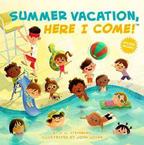
Stier, Catherine
from latecomer Keeley, who joins her delighted cousin for a glorious set of tunes. Mia and her family are brown-skinned. Several of the adult women in Rosa’s bright, simply drawn cartoons wear hijabs, and the party’s guest of honor is clad in a thobe. There is some racial diversity visible in group scenes. (This book was reviewed digitally.)
Sweet notes aplenty in an episode featuring a young DIYer with both music and science in her life. (Informational picture book. 6-8)
Stroud, Jonathan Knopf (432 pp.)
$17.99 | $20.99 PLB | April 25, 2023
9780593430408
9780593430415 PLB
Series: Scarlett and Browne, 2
Pasts, futures, and zombies challenge two young bank robbers in a dystopian future Britain.
Illus. by
Francesca Rosa Whitman(32 pp.)
$18.99 | May 27, 2023
9780807572788
Series: Science Makes It Work, 5
Young Mia gets a start on her dreams of becoming a guitar hero by studying how the instrument makes sounds.

Dazzled after watching her older cousin Keeley shredding with a band in the park, Mia uses book and web resources to find out about the history and construction of (acoustic) guitars. Then, after demonstrating with a simple kitchen physics experiment how sound waves work, she makes a cardboard instrument by stringing a cracker box with big rubber bands. Having shown her dad (and readers) how to control pitch and amplitude, she debuts at her grandpa’s backyard birthday party, and if “it didn’t sound much like ‘Happy Birthday to You,’ ” as Stier realistically comments, she still gets an enthusiastic response from her extended family…and better yet a real starter guitar
Surly quick-draw specialist Scarlett McCain and her game but distractable mind-reading partner, Albert Browne, first met in The Outlaws Scarlett and Browne (2021). They really have their work cut out for them in this sequel, as rescuing two friends from the clutches of brutal crime lords requires hijacking a shipment of high-tech artifacts mined from an ancient and heavily guarded pre-Cataclysm site—even as an agent of the implacable Faith Houses with scarily strong telepathic and telekinetic powers is hot on their trail. Stroud dishes up another gleefully violent, headlong plot replete with cliffhangers, breathtaking feats, and all-too-narrow escapes from both hails of bullets and terrifying creatures ranging from outsized owls and snakes to humans transformed into infectious, cannibalistic Tainted. In developing the outrageous pair of rogues who front this memorably colorful cast of thugs and shady characters, he takes time out to fill in some of Scarlett’s nightmarish childhood, particularly her profound guilt for failing to protect her little brother after the deaths of their parents. Albert likewise gains dimension by learning to face his fears about losing control of his own mental powers in the course of a wildly explosive climax. In the aftermath, a glimmer of hope that Scarlett’s brother might not have been eaten by the Tainted after all sets up future exploits. Like the two leads, the entire cast reads as White.
More rousing, swashbuckling fun. (Science fiction. 10-13)

“More rousing, swashbuckling fun.”
the notorious scarlett and browne
Surrisi, C.M.
Putnam (272 pp.)
$17.99 | April 18, 2023
978-0-593-53210-2
Ardent fandom meets friendship drama.
Summertime and the living is easy: It’s peanut butter–and-blueberry jam sandwiches and fun days swimming at the pool for Iris and BFF Leeza. Two besties living across the street from each other, they spent their childhoods side by side, gossiping about and listening to singer Lola Bay. After starting a fan club for their favorite star, the sixth graders connect with seventh grader Dana. This creates a rift between narrator Iris and Leeza, as the former idolizes Dana’s vast body of Lola Bay knowledge, and the latter, less enthralled, decides to get involved in other activities. Further trouble ensues when Dana, who has a controlling personality, convinces Iris to use her mother’s credit card without permission to purchase coveted Lola Bay concert tickets. Things escalate to a crisis point when Dana betrays Iris in a very public way, forcing Iris to face the truth, recognize who really has her back, and stand up for herself. This novel focused on friendship deals with emotional abuse and family ties during the often stressful transition from elementary to middle school. The conversational tone is reader friendly, and many young people will recognize the issues that are explored, from shifting social status to online bullying. Most characters default to White.
An accessible relationship-centered novel exploring the perils of tween friendships. (Fiction. 10-13)

Takeuchi, Chihiro
Berbay Publishing (40 pp.)
$18.99 | April 4, 2023
978-1-922610-54-6
Not enough hours in the day!
This delightful Australian import, a seek-and-find challenge teeming with details, invites kids to observe activities occurring at various hours from morning to night in an apartment building that includes a bakery, a barbershop, and several residences. Bonus: Kids can practice telling time from the analog clock atop the building. Black text presents a simple narrative about various goings-on—from 7 a.m. to 6 a.m. the next day—and who’s performing them, including the baker and Grandma. Grayscale text at the bottom of each page asks readers to locate items. Youngsters’ counting, color-perception, and vocabulary skills are tested throughout, with questions such as “How many mugs can you find?” This book won’t disappoint: Savoring small details is fun and a terrific way to sharpen visual literacy. Kids
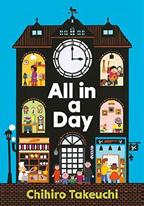
will appreciate getting the chance to notice subtle changes in the scenes. In daylight, the building appears against a turquoise backdrop. At dusk, it’s deep red, signaling approaching nightfall; at night and in the early-morning hours, it’s dark blue, lightening with dawn. Some details are tricky to discern, but kids won’t mind. Adults should encourage children to volunteer activities they and their families do during certain day/evening hours and help them practice telling time with simple clocks. Characters are racially diverse. (This book was reviewed digitally.)
Be sure to make time for this charmer; kids will want to return to it time and again. (Picture book. 3-6)
Tan, Susan Roaring Brook Press (240 pp.)
$17.99 | April 25, 2023
9781250797001
A 12-year-old Chinese American girl learns to cope with grief, anxiety, and uncertainty in the wake of difficult life changes.
After Mo Lin’s stepfather leaves, her family moves in with her Uncle Ray in a new town. Having a depressed, overwhelmed, and emotionally absent mother means it’s up to Mo to take care of 5-year-old half sister CeCe and herself, even though she is grieving. What’s more, the kids at her new middle school are racist and hostile. Her sense of safety in tatters, Mo sees danger everywhere: Even something as mundane as a piece of toast might trigger a house fire. Most unsettling, Maudie the elephant, who died in a local circus fire years ago, keeps haunting her dreams. Mo finds allies in Uncle Ray, a gentle, perceptive man who shows her how music can provide solace; Nathaniel, a ghost-obsessed Jewish classmate; and Lavender, a Black librarian who opens her eyes to diverse, often overlooked stories from history. As Mo tries to determine what Maudie needs from her, she gains insights into the ghosts haunting her own family that must be laid to rest. Triggering past events in Mo’s life are revealed slowly, echoing her evolving ability to process them. The characterization is particularly strong; Mo displays a full range of emotions, from grief to anger, avoidance to acceptance. Her mother and Uncle Ray are fully fleshed, complex characters as well.
A realistic and deeply moving portrayal of a family’s journey through a challenging life transition. (Fiction. 8-12)
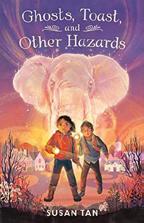
Tang, Betty C.
Graphix/Scholastic (288 pp.)
$24.99 | $12.99 paper | April 4, 2023
9781338832693
9781338832686 paper
A family from Taiwan pursues the American dream.
It is February 1981, when the Lin family lands in Los Angeles for the first time. Their monthlong vacation becomes a journey of circumstantial immigration when the three children find out they are staying—enrolling in local schools for political safety and a better future with more opportunities. When Mama’s tourist visa extension is denied, she leaves 10-year-old Feng-Ling, or Ann; 14-year-old Ke-Gāng, or Jason; and 16-yearold Jia-Xi, or Jessie, to live on their own—with some support and supervision from family friends who immigrated earlier. With an endearing artistic style and colors that pop, this graphic novel explores how such a process, for better or worse, alters relationships and family dynamics. While learning English, navigating social interactions, and confronting racism, the siblings face additional challenges that deliver tough life lessons: Studious Jia-Xi falls for a scam with devastating consequences, Ke-Gāng’s struggles with his identity lead to a serious accident, and Feng-Ling follows bad influences and does something she regrets. By the time Baba and Mama rejoin them, however, the siblings can serve up a decent meal and show off their savings from summer jobs. The development of the characters and their relationships is convincing and balanced, and the siblings’ respective experiences are relatable for anyone who has tried to fit in somewhere. This empathic story centers a less widely recognized community and thoughtfully presents a distinct facet of immigration.
Emotionally moving and beautifully executed. (author’s note) (Graphic fiction. 9-13)
Taylor, Jazz
Scholastic (240 pp.)
$7.99 paper | April 4, 2023
9781338803297
Series: Wish
A middle schooler is unsettled by her new blended family.
Janie relies on a rigid color-coded schedule to feel in control of her life, both at home and at school. She’s OK with her mom’s marriage to firefighter Keisha, but when Keisha’s daughter, Makayla, moves in with her cat, Pumpkin, Janie is alarmed. After a bad experience, Janie hates cats, and she tries to avoid Pumpkin. On top of that, Janie’s mom pushes her to include Makayla in her activities. Before long, Makayla connects with Janie’s friends, and Janie feels excluded. All these changes
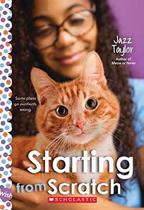
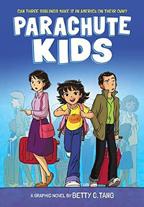
disrupt her careful plans, causing a rift between Janie and her mom. Eventually, readers realize that Janie’s dependence on schedules is connected to a difficult time in her family’s past as well as her desire to keep the peace within her circle of friends. Ultimately, Janie must confront the changes her new family configuration has brought and learn to accept some uncertainty in her life. In this novel centering Black characters, Janie is a sympathetic protagonist coping with both tween growing pains and a mother who has faced some challenges. Members of the diverse supporting cast of characters are engaging, particularly new stepmom Keisha; Janie’s friend Dani, who is nonbinary; and Lula, an elderly friend from a local nursing home. The drama within family and friendships is realistically handled.
A comforting read with both serious and lighter comingof-age issues. (Fiction. 8-12)
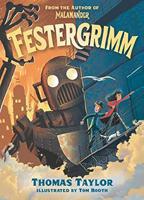
Taylor, Thomas
Illus. by Tom Booth
Walker US/Candlewick (336 pp.)
$19.99 | April 25, 2023
978-1-5362-2742-0
Series: The Legends of Eerie-on-Sea, 4
This November is “NOPE-vember,” Herbie Lemon tells Violet Parma, meaning no risky adventures, but spoiler alert: Perilous mysteries are Eerie-on-Sea’s stock in trade.
Sebastian Eels, the sleuths’ slimy, would-be nemesis, returns to Eerie to refurbish and reopen Festergrimm’s Eerie Waxworks. While Herbie and Vi doubt Eels’ good intentions, their adult allies are less wary. When the bookstore mermonkey dispenses Dickens’ A Christmas Carol, Jenny assumes it means Eels deserves a second chance. Dr. Thalassi hopes the gallery refurbishment will result in new exhibits for his Eerie Museum. Dismayed by Eels’ plan, Mrs. Fossil reveals a secret: She’s the caretaker of the gallery that was built by her ancestor Felix Fossil when he was hired to collect and repair the remains of Ludo Festergrimm’s creations. Ludo’s clockwork wonders included a giant robot intended to find Pandora, his missing daughter, but the robot’s deadly rampage resulted in the destruction of both itself and its maker. The gallery is now a ruin. The train that once meandered through the spooky gallery’s decaying waxworks sits motionless on tracks that descend in darkness to lower floors and exhibits. As creepy mysteries proliferate, Herbie senses Pandora’s story is connected to his—but doesn’t know how or why. While series fans know what to expect, the plot’s familiar contours deliver a few surprises along the way. As usual, the quirky art serves as witty counterpoint to Herbie’s stoic narration while Eerie’s Saint Dismal nicely embodies the English-seaside-in-the-off-season setting.
A cozy and atmospheric read. (Fantasy. 8-12)
Tekle, Betty Illus. by
Nicholas Alexander Whitman(32 pp.)
$18.99 | April 27, 2023
9780807512913
A young Black child longs to have a long, full beard like his father’s. Isaac and his dad often go to the barbershop, but Isaac isn’t allowed to listen while Dad and the others discuss “grown folks’ business,” like Mr. Williams’ recent accident. On the way home, Isaac asks his dad if he will have a beard of his own, and his father tells him that he will someday, when he is one of the “grown folks.” Impatient Isaac imagines what that will be like in a humorous series of illustrations that show him storing snacks in the beard, using it as a leash to walk his dog, Peetie, and jumping rope with it. When he notices his dad using beard oil to help his beard grow, Isaac spends the next six weeks oiling his face to no avail. At the next barbershop appointment, Isaac receives a surprise. As he sees his father giving money to Mr. Williams, who hasn’t been able to work since his injury, he learns that his dad’s beard may not be the coolest thing about him and that “grown folks’ business” means supporting one’s community. Accompanied by endearing cartoonlike illustrations, the book conveys Isaac’s admiration for his father, depicts him learning patience, and highlights barbershop culture—something many readers will find relatable. Characters throughout are Black. (This book was reviewed digitally.)
Full of familial and community warmth, this is a book that will grow on readers. (Picture book. 4-8)
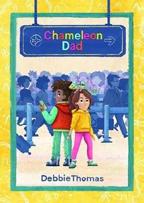

Tentler-Krylov, Victoria Abrams (40 pp.)
$19.99 | May 2, 2023
9781419756702
A short history of the elevated park constructed along an abandoned rail line in New York City. Showing her background as an architect, Tentler-Krylov tells a tale that is more about structures, purposes, and visionary design features than people—though both leading figures in the still-ongoing enterprise and local residents in the affected neighborhoods do receive due attention, particularly in the substantial afterword. If the resulting narrative may seem a bit abstract to younger readers, it nonetheless documents a real triumph of urban renewal and innovative land use. Readers learn how tracks built to carry trainloads of supplies right into factories on Manhattan’s lower West Side were abandoned to weeds and weather until a group of concerned citizens envisioned a place where “trees and flowers would bloom overhead, and new cafés and art galleries would sprout on the streets below.” (Gentrification is touched on briefly in the narrative and more so
in the backmatter.) Saved from demolition and turned section by section into a greenway with places to walk, sit, see art, and look out over the streets below, the High Line has sparked an economic boom for the area and inspired similar reclamatory projects in other large cities. In the bright, stylish watercolors, diverse crowds of figures work and socialize both on bustling city streets and, later, on swooping pathways amid abundant carpets of well-kept wildflowers and grassy swards. (This book was reviewed digitally.)
A vibrant, if somewhat formalized, tribute. (timeline, bibliography) (Informational picture book. 7-10)
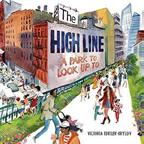
Thomas, Debbie
Little Island (214 pp.)
$9.99 paper | April 25, 2023
9781912417889
A foster child reconnects with the father who abandoned her 8 years ago.
Connie’s last memory of her dad, Ben, is his leaving her to get her another hot chocolate at the Dublin airport cafe. He never returned. Now, Connie is 12 and an avid climber—and Mags, the airport cleaner Ben left her with, supposedly just for a moment, is her overprotective foster mum. This loss, plus the pain of her mother’s death not long before her father’s abandonment, are Connie’s constant companions along with her pet chameleon, Hue. When Connie discovers a letter from her father, sent care of Mags over a year ago, she begins to plan a reunion, aided by new friend Thyo. Connie meets with Ben in secret and soon is sneaking off to fly with him to his home in Leeds, England, beginning the most exciting and terrifying journey of her life. As Ben starts to show his true colors, Connie must use her wits—and climbing skills— to escape a disastrous situation (chameleons help). Thomas explores serious topics surrounding memory, conceptions of family, and the morality of scientific experiments while maintaining a light touch. A central element of the story is how terrible experiences can affect people over the long term: Can they be transformed into something positive? Supporting characters are strongly developed. Connie, Ben, and Mags read White; Thyo has a Black South African mum and a White English dad. A fast-paced adventure with heart. (Fiction. 8-12)
“A short history of the elevated park constructed along an abandoned rail line in New York City.”
the high line
two friends, one dog, and a very unusual week
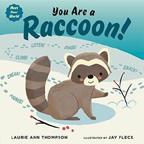 Thompson, Laurie Ann
Illus. by Jay Fleck
Thompson, Laurie Ann
Illus. by Jay Fleck
Dial Books (32 pp.)
$18.99 | April 11, 2023
978-0-593-52972-0
Series: Meet Your World
The second-person narration puts young readers in the position of the raccoon, born blind and deaf and only able to “sniff! Wiggle! Whine!” Further helping little ones to envision themselves as the raccoon, spotlight illustrations on the recto of each double-page spread show diverse children naturally engaging in the same activities as the animal. The spare text on each page is accessible for emerging readers, and the full-color art’s soothing palette makes this ideal for a bedtime story. From initially just snuggling and sleeping, the raccoon grows and begins to chatter, crawl, climb, and feast on berries and acorns as well as earthworms, beetles, and snails (while the illustrated children eat things like carrots, bananas, and pasta). Once winter comes, the plump raccoon family slumbers away, waking “every few weeks to look for food.” When spring arrives, the baby raccoon is now an adult ready to move out into a den of their own. The narrative is followed by lovingly written raccoon facts and activities for kids who want to pretend to be raccoons. The author warns that though they’re cute (and the rounded, charming creatures depicted in the illustrations are exceptionally adorable), raccoons are wild animals and need to be left alone by people and pets. Part of a series that spotlights familiar North American animals, the book deftly connects natural human children’s activities to raccoon behaviors without engaging in anthropomorphism. (This book was reviewed digitally.)
Naturalistic and charming. (Informational picture book. 4-7)
(240 pp.)
$16.99 | April 18, 2023
978-1-68263-516-2
Fourth grader Emily is intrigued when a girl her age moves into the empty attic above her third-floor apartment with only her dog, Otto, and no parent in sight.
Her name is Rani, and she makes her mark right away. She saws, hammers, and drills, personalizing the space while telling Emily fantastic tales of adventures in far-flung locales. She’s a character with similarities to Pippi Longstocking: well traveled, unconventional, and independent, although she’s quietly longing for her mother, who’s working in Patagonia. Her gregarious behavior makes every outing an escapade for reticent Emily. Rani dodges in and out of stores taking items and seems a little hazy about how paying for things works. Her interpretations
of school rules are comically confused. She’s generous and befriends people others overlook, widening Emily’s circle. But not knowing the rules gets Rani into trouble with some adults, especially when it’s discovered that Otto doesn’t have a dog license. Otto’s her constant companion; when he’s taken to a shelter, Rani’s bereft. Emily and her schoolmates must use everything they’ve learned from Rani to make things right. Readers will treasure the blossoming friendship between opposites in this whimsically illustrated tale. Short chapters and plenty of action make for an accessible and appealing reading experience. Emily is White; Rani reads Black; and names and illustrations point to diversity in the supporting cast.
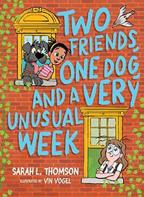
Touching and inspiring. (Fiction. 7-10)

van Gageldonk, Mack
Clavis (72 pp.)
$21.95 | April 11, 2023
9781605378558
Series: Wow!, 4
A portrait gallery of erupting clouds and huge showers of magma distinguish this imported overview, originally published in Dutch.
The photos—several punched up with sprays or flecks of red added by the artist—are eye-catching…but not appealing enough to compensate for the jumble of confusing, contradictory, or incorrect claims that accompany them. Some of the bobbles may just be translation errors, such as referring to a graphic image as a “photo” on one page and elsewhere dubbing ice columns in an Icelandic lava tunnel “the façade of a fairytale.” But the assertion that the “hotspot” under the Canary Islands is not on a fault line, coming as it does shortly after the author indicates in both text and diagrams that faults are where volcanoes form, will leave readers confused. They’ll also be perplexed by the statement that flamingos eat out of Tanzania’s Lake Natron, even though it’s described as being too hot and salty for any life to survive, and by a startling line about “some species [of animals] that seek out the toxins of volcanic activity,” which van Gageldonk fails to unpack. There’s an overall lack of balance, too, as the topic doesn’t switch to earthquakes until the last five spreads, which include one that is just a section title and another actually devoted to tsunamis.
A damp squib with too many fault lines. (index) (Nonfiction. 6-8)
“Touching and inspiring.”
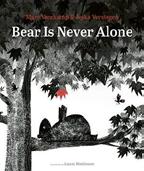 Veerkamp, Marc Illus. by Jeska Verstegen
Trans. by Laura Watkinson Eerdmans (32 pp.)
Veerkamp, Marc Illus. by Jeska Verstegen
Trans. by Laura Watkinson Eerdmans (32 pp.)
$17.99 | April 4, 2023
978-0-8028-5603-6
An ursine pianist flees fame and finds a friend.
This elegant Dutch import centers on Bear, a piano player capable of wowing hordes of forest denizens. Alas, when he attempts to stop, the other animals will not hear of it. They harangue him, hounding him with cries of “MORE!” Pushed past the breaking point, he roars at them until only a lone zebra remains, offering to read him a story to thank him for the beautiful music. Bear refuses, then immediately recants with a gentle “Let’s be alone together.” While this ending is a bit abrupt, it is entirely possible that parents or children seeking solitude from the relentless love of others will see a bit of themselves in Bear’s plight. The real stars of the show are Verstegen’s stunning mixed-media illustrations. Almost wholly black and white, they’re shot through on occasion by a vibrant bolt of red, providing just the right measures of surreal extremes and quiet contemplation. Consider pairing with another tale of tickling the ivories in the forest: David Litchfield’s The Bear and the Piano (2015). (This book was reviewed digitally.)
While cries for this one may not rival those of the protagonist’s fans, it will find a happy home with solitude seekers. (Picture book. 4-7)
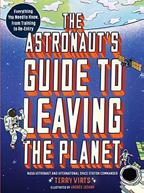
Virts, Terry Illus. by Andrés Lozano Workman (176 pp.)
$14.99 paper | April 11, 2023
9781523514564
A former space shuttle pilot and International Space Station commander recalls in unusually exacting detail what it’s like to be an astronaut.
In the same vein as his more expansive adult title How To Astronaut (2020), Virts describes and reflects on his experiences with frank and photographic precision—from riding the infamous “Vomit Comet” to what astronauts wear, eat, and get paid. He also writes vividly about what Earth looks like from near orbit: the different colors of deserts, for instance, and storms that “are so powerful that the flashes from the lightning illuminate the inside of the space station.” With an eye to younger audiences with stars in their eyes, he describes space programs of the past and near future in clear, simple language and embeds pep talks about the importance of getting a good education
and ignoring nay-sayers. For readers eager to start their training early, he also tucks in the occasional preparatory “Astronaut Activity,” such as taking some (unused) household item apart… and then putting it back together. Lozano supplements the small color photos of our planet from space and astronauts at work with helpful labeled images, including two types of spacesuits and a space shuttle, as well as cartoon spot art depicting diverse figures.
Finally, an astro-memoir for kids that really gets down to the nitty-gritty. (glossary, index) (Nonfiction. 9-11)
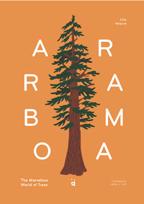
The Marvelous World
Voisard, Lisa
Trans. by Jeffrey K. Butt
Helvetiq (208 pp.)
$24.99 | April 11, 2023
9783907293904
Series: Marvelous World
Inside the world of trees.
Published in Switzerland and translated from French, this title begins with the basics of what a tree is and what its essential parts—its leaves, fruit, cones, and seeds—do, followed by “Portraits,” a more in-depth look at 30 individual types of trees found in North America. These are grouped into three main habitats where they may most commonly be seen: towns, cities, and parks; forests and countryside; and forests and mountains. This approach is much more kid-friendly that grouping by taxonomy, since young readers will know what types of trees they may encounter in their own neighborhoods. Each portrait begins with an illustration of a mature example of the tree and some fun facts. The page turn gives more detail—type of bark, observation guide, similar trees, and images of what the tree looks like throughout the seasons. The presentation is the same for each species, with appealing gouachelike, full-color illustrations that are integral to the text. The portraits section is followed by tree identification tips and more information, such as how trees reproduce, their role in the forest ecosystem, and benefits to humans. Inevitably, the bad news comes—30% of all tree species globally are endangered—but the book assuages this dire information with a double-page spread on what readers can do to help.
Chock-full of information, clearly and delightfully presented. (educator’s guide, index) (Nonfiction. 8-14)
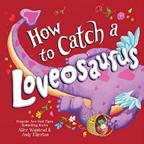
Walstead, Alice
Illus. by
Andy ElkertonSourcebooks Wonderland (40 pp.)
$10.99 | Dec. 6, 2022
9781728268781
Series: How To Catch…
An elusive new quarry leads the How To Catch… kids on a merry chase through a natural history museum.
Taking at least a step away from the “hunters versus prey” vibe of previous entries in the popular series, the racially diverse group of young visitors dashes through various museum halls in pursuit of the eponymous dino—whose quest to “spread kindness and joy ’round the world” takes the form of a mildly tumultuous museum tour. In most of Elkerton’s overly sweet, color-saturated scenes, only portions of the Loveosaurus, who is purple and covered with pink hearts, are visible behind exhibits or lumbering off the page. But the children find small enticements left behind, from craft supplies to make cards for endangered species to pictures of smiley faces, candy heart–style personal notes (“You Rock!” “Give Hugs”), and, in the hall of medieval arms and armor, a sign urging them to “Be Honest Be Kind.” The somewhat heavy-handed lesson comes through loud and clear. “There’s a message, he wants us to think,” hints Walstead to clue in more obtuse readers…and concluding scenes of smiling people young and otherwise exchanging hugs and knuckle bumps, holding doors for a wheelchair rider, and dancing through clouds of sparkles indicate that they, at least, have gotten it. (This book was reviewed digitally.)
Sugary uplift, shrink-wrapped for the masses. (Picture book. 5-7)

Wechterowicz, Przemysław
Illus. by Emilia Dziubak
Trans. by Polly Lawson
Floris (40 pp.)
$17.95 | April 18, 2023
9781782507741
New pals must cope with different sleep schedules if they want their friendship to last.
In a single tree, Little Owl is born in the branches near the top and Little Rabbit among the roots at the bottom. Over time, nocturnal Little Owl and diurnal Little Rabbit each hear stories from their parents about the other. One night, a beautiful moon wakes Little Owl early and keeps Little Rabbit from going to bed. The two meet and are instant friends but sadly realize that they can almost never be together to play. It takes a magical night and a bit of a switcheroo involving shadows for the two to finally find a way to be together in spite of their natural sleep cycles. A great yearning engulfs this tale, translated from Polish. The ultimate solution—wishing on a falling star to
be together, which results in the two switching shadows—isn’t as clear as it might be (how do shadows take the place of absent friends?). Fortunately there are copious playful, high-spirited illustrations depicting the two animals as googly-eyed bits of adorable feathers and fur. The book doesn’t offer concrete solutions for children missing loved ones who can’t be near, but it does provide a bit of sympathy for those who go it alone. (This book was reviewed digitally.)
True camaraderie beats out even bedtime in this charming friendship tale. (Picture book. 3-6)
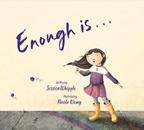
Whipple, Jessica
Illus. by Nicole Wong
Tilbury House (32 pp.)
$18.95 | April 18, 2023
9780884489320
What does it mean to be content with what we have?
In a world where we are constantly urged to seek out the newer, better, best, debut children’s author Whipple makes a solid case for the concept of Enough. A fascination with bears has taken hold over a diverse neighborhood, with children throughout the book donning trendy bear-themed apparel. Amid the fad, the brown-haired, light-skinned protagonist explores the idea of Enough while learning to find fulfillment in their own bear sweater, purchased from a thrift store rather than the “Fancy Clothes” shop or “Better Market.” How many stories before bedtime are Enough? How many sandwiches? Bubbles? Friends? Sometimes, Enough means that we can share lunch with someone in need, give someone else a turn, or give someone money. There is happiness to be found, because after all, “when you find Enough, it’s easy to share.” The soft textures of Wong’s illustrations add a gentleness and warmth to Whipple’s lyrical text with a balanced palette of neutral and vibrant colors that seem to echo the sentiment of the title. Although young readers may miss some of the subtler details of the visual narrative, it’s overall a good introduction to a valuable yet abstract idea that is bound to spark discussion as kids consider what Enough means to them. (This book was reviewed digitally.)
Just right. (Picture book. 6-8)
grace needs space!
Wilgus, Benjamin A.
Illus. by Rii Abrego
Random House Graphic (208 pp.)
$21.99 | $13.99 paper | $24.99 PLB
April 4, 2023
978-0-593-18239-0
978-0-593-18238-3 paper
978-0-593-18240-6 PLB
A trip deep into space forces a preteen to reevaluate her assumptions about her parents.
Space is infinite, but it doesn’t feel so for 12-year-old Grace, a child of divorce who lives at Genova Station with her mother Evelyn, an engineer who fusses over her and makes her do chores. Grace is excited because she’s finally off to spend time with Kendra (her other, seemingly more fun mom, a freighter captain who helms her own ship) on Titan, one of Saturn’s moons. But onboard Kendra’s ship, Grace finds that she’s left to entertain herself. Things don’t ease up when they get to Titan, where adventure and mayhem await. Grace begins to question her perceptions about Kendra and Evelyn, realizing that normal doesn’t equal boring. This hip graphic novel rockets into space, with fun facts and lots of science talk. The illustrations are beautiful, deftly using panels to show Grace’s isolation and disappointment and her awe at space. While the book balances out toward the end when it comes to the two parents, overall it comes across as championing Evelyn, making Kendra out to be a bit self-involved and work-focused. Still, this tale does a stellar job depicting a family with same-sex parents whose love for their child is apparent despite their divorce. Grace and Evelyn are brown-skinned; Kendra is light-skinned and uses the honorific Mx

A tender story that explores the complexity of familial bonds as deftly as it does the outer regions of space. (Graphic fiction. 8-12)
Wohlleben, Peter Illus. by Belle Wuthrich
Trans. by Jane Billinghurst
Greystone Kids (84 pp.)
$19.95 | April 18, 2023
9781771648950
Ways for young people growing up in urbanized areas to connect with nature.
Translated from German, this friendly, interactive guide features activities of various difficulty levels and fascinating pieces of information intermingled with emotive, action-filled photographs of diverse people along with simple but adorable illustrations. An introductory segment on safety and preparedness
outlines useful equipment and introduces some common dangers and preservation techniques; other sections encourage environmental stewardship, suggest unexpected places to look for nature in urban areas, and provide ideas for discovering connections to nature right in readers’ own homes. The activities incorporate STEM concepts in fun, inexpensive ways but do require varying levels of adult supervision and involvement. Though the book is specifically geared toward urbanites, much of the information is unique enough, and the activities are interesting enough, to entice kids who live in rural areas and/or already spend time in nature regularly. Some activities may be more suitable for suburban areas than truly urban landscapes, such as altering the ripening pattern of apples or creating welcoming outdoor spaces for lizards and bees. An explanation of how to use the included index demystifies nonfiction formatting for those new to the genre.

Ample education and enjoyment for readers who already love nature and much to spark interest for newcomers. (photo credits) (Nonfiction. 8-12)
Alaraj, E.G.
Illus. by Martyna Czub
Orca (22 pp.)
$10.95 | April 11, 2023
9781459835665
A child winds down for bed.
After a busy day, the little one starts preparing to go to sleep as quiet falls and animals on the farm and in the nearby forest also begin settling down. Each page includes lilting verse with a version of the repeated refrain, “But do not sleep. / Don’t close your eyes / until the twinkling stars arise.” Once the toys are put away, the child has had a bath, and their caregiver has told them a bedtime story, it’s finally time to sleep “until the sun lights up the skies.” Alaraj’s poetry is gentle and sweet; combined with Czub’s watercolor illustrations, the tale truly comes to life. The delicate bleeding of blues, greens, and browns, the blurred edges, and the softness of the images blend for a fully realized world with the coziest of touches. The tiny feathers on the hen, the spots on the owl, and the wings of the geese provide texture. The yellows of the setting sun give way to the deep blues of dark, slowly taking readers into dreamland. This is a stunning marriage of text and art that will linger with listeners as they slip into sleep. The adult and child have brown skin and black hair. (This book was reviewed digitally.)
This melodic lullaby is warm and tender perfection. (Board book. 0-4)

“A tender story that explores the complexity of familial bonds as deftly as it does the outer regions of space.”
mazal bueno!
Aroeste, Sarah
Illus. by Taia Morley Kar-Ben (12 pp.)
$8.99 | April 4, 2023
9781728445588
When a baby achieves each new milestone, a hearty “Mazal bueno!” is said.
The traditional Hebrew phrase Mazel tov, which expresses congratulations for achievements such as births, bar and bat mitzvahs, graduations, weddings, and new jobs and promotions, translates to Mazal bueno in the Sephardic Ladino or JudeoSpanish language. In this board book, proud parents follow their baby’s progress. When the baby “grin[s]” their “first grin” after being tickled on the chin, the parents say, “Love, baby, love! / Mazal Bueno!” After the little one learns to crawl, they cheer, “Go, baby, go! / Mazal Bueno!” Eating food for the first time (“Yum, baby, yum!”), standing up on their own (“Dance, baby, dance!”), speaking their first word (which, aptly, turns out to be bueno)—all are greeted with a hearty “Mazal bueno!” The simple board book features repetitive, rhyming text and is illustrated with bold colors depicting a young family with dark curly hair and tan skin. The upbeat atmosphere reflects the happiness these new parents feel watching over their growing and learning baby. Aroeste, a Ladino singer, introduces an essential custom in Sephardic culture. The back cover of the book includes a QR code to a video of the author singing the Ladino song “Avram Avinu.” (This book was reviewed digitally.)

Joyful celebration in a new baby’s life. (Board book. 0-3)
Delporte, Corinne
Illus. by Antoine de Saint Exupéry
Trans. by Carine Laforest CrackBoom! Books (10 pp.)
$6.99 | April 4, 2023
9782898023613
Series: Little Prince
A touch-and-feel, lift-the-flap board book featuring characters from The Little Prince (1943).
Readers must hunt for the Little Prince’s fox friend behind every flap in this book translated from French. “Is the fox behind the CACTUS?” “No, that’s a sheep!” “Is the fox hiding behind the BIRDS?” “No, that’s The Little Prince sitting on the moon!” The design of each page is simple, with text set against a different patterned background. The surprises to be discovered by lifting each flap are tactile: the soft fleece of the sheep, the bumpiness of the glittery moon, and even the velvety softness of rose petals. Finally, the fox is uncovered—inside a box on which the Little Prince sits. Of course, the references from the original story won’t mean much to tiny toddlers, but adults who grew up with the classic may appreciate the illustrations and notice the subtle nods to the tale. For instance, the fox sought throughout this book is also the one who teaches
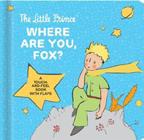
the Little Prince an important bit of wisdom in the original. Though youngsters will enjoy handling the flaps and feeling the textures, there’s little here to set this one apart from other books with similar formats apart from the overarching theme, which will appeal more to grown-ups.
Familiar fare geared more toward adult fans of the source material than to little ones. (Board book. 0-2)
Holub, Joan
Illus. by The Little Friends of Printmaking
Little Simon/Simon & Schuster (26 pp.)
$9.99 | April 25, 2023
9781665917896
Up close with construction vehicles. On the verso of each spread, a different machine offers a short, rhyming, enthusiastic description of itself (“I’m a busy, busy BACKHOE. My tires are tough and black”), accompanied by a labeled illustration. While the labels are helpful, less obvious ones such as motor winch and chassis go undefined. On each recto, the vehicle goes into more detail explaining how it works; “Big Fun” or “Big History” sidebars are also included. The images are accurate renderings of the machines with a few fun additions like eyes and a mouth or a construction hat on top. The illustrations are appealing and depict racially diverse workers. While the dense text may be overwhelming for some young readers, curious little ones who crave more information about concrete mixers, haul trucks, bulldozers, and more will be thrilled with the level of detail. Many of the machines invite participation through imaginative play (“I’m super-tall TOWER CRANE! Will you be my operator?”). The final pages provide a fascinating outline of the future of construction vehicles, with information about autonomous construction robots and remote-controlled machines. (This book was reviewed digitally.)
Jam-packed with text, this is an enticing read for fans of all things construction. (Board book. 3-5)

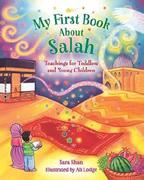
Khan, Sara
Illus. by Ali Lodge
Kube Publishing (26 pp.)
$10.95 | Jan. 24, 2023
978-0-86037-852-5
Series: My First Book About
An explanation of the second pillar of Islam.
Starting with the “Night Journey, known as Isra wal Miraj,” Khan describes how Prophet Muhammad reached the Al-Aqsa Mosque and “was raised up to the heavens and invited to meet Allah Who gave him the most precious gift to share with us all… The Gift of Salah.” Simple, descriptive language outlines the
“Joyful celebration in a new baby’s life.”
importance of Salah, or the five daily prayers, in which Muslims thank, remember, and ask Allah for forgiveness. The prayers— Fajr, Zuhr, Asr, Maghrib, and Isha—are clearly listed, with illustrations using color to indicate the time of day for each. Khan emphasizes the importance of cleanliness before praying and offers a relevant verse from the Quran. The book also names and depicts the different parts of Salah. Lodge uses the same style as in her and Khan’s My First Book About the Qur’an (2017)— bright illustrations of figures with sweet, rounded faces, often surrounded by stars and butterflies. Her images pair well with Khan’s words, capturing the movement of the prayers. A spread depicting the call to prayer, with text flowing across the page as if from the muezzin’s mouth, is especially effective. Some Arabic words include the English meanings, while others do not and may need to be defined. The people depicted are racially diverse; one spread portrays someone who uses a wheelchair. (This book was reviewed digitally.)
A simple, child-friendly introduction to Salah. (facts about Islam, questions about prayer) (Board book. 2-4)
Illus. by Nichols, Lydia Gibbs Smith (10 pp.)
$16.99 | April 4, 2023
978-1-4236-6370-6
An ode to canines of all stripes. Pup-loving kids especially, but even those still on the fence about dogs, will be sure to take to this board book like pet pooches take to walk time. Told in bouncy verses that read and scan well, the text describes the friendly-looking, well-cared-for canines herein in all their glorious diversity—these pooches vary by size, shape, color, height, weight, degree of furriness, and more—and celebrates all the ways different breeds walk, frolic, stay, and sit. But, the book emphasizes, despite the superficial things that set dogs apart from one another appearancewise, what unites them is what’s most important: “All dogs are the same / in their big canine hearts. // Dogs recognize and / accept one another— / they don’t care a bit about / size, shape, or color!” Adding to the charm of this little volume are the delightful, lovably cartoonlike interior and front- and back-cover illustrations: A bevy of cuddly breeds smile out at readers and sometimes at each other; their “portraits” are set against brightly colored, stylized scenes of nature. Some dogs wear collars; others, doggie outfits. (This book was reviewed digitally.)
An appealing reminder that we can learn a lot from dogs. (Board book. 1-4)

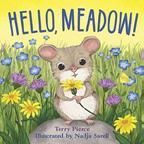
Pierce, Terry
Illus. by Nadja Sarell
Yosemite Conservancy (14 pp.)
$8.99 | April 11, 2023
9781951179250
Rhymes and pictures urge us to protect the fragility of deceptively sturdylooking, wildlife-rich meadows.
As in Eat Up, Bear! (2021), author and illustrator again team up to show small folks—and their parents—how to enjoy nature without harming it. The opening spread shows heedless human behavior (littering, flower-picking) in a lovely natural site, but the rest of the book instructs readers how to treat flora and fauna with respect (staying on the trail, observing wildlife from a distance). A rocking, slightly evolving refrain appears on most spreads: “Hello, Meadow! How are you? / We can help our meadows, too!” The simply drawn, brightly hued illustrations are graced with a multitude of accurately depicted plants and animals: red-shouldered hawk, Turk’s-cap lilies, lupine, blue flags, milkweed, monarch butterflies, red-winged blackbird, and much more (though none are identified as such in the text). The friendly mouse on the cover can be spotted on every page, and in the final spread, the very people who were endangering the meadow back at the start are now enjoying the same activities without risking harm to the environment. The last couplet underscores the point: “Every grown-up, every child, / can help keep meadows strong and wild.” Human characters vary in skin color and age, from a bespectacled, light-skinned older adult to a brown-skinned infant in a carrier. (This book was reviewed digitally.)
An early, age-appropriate lesson in how to appreciate the natural world. (Board book. 1-4)
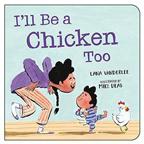
Vanderlee, Lana
Illus. by Mike Deas
Orca (22 pp.)
$10.95 | May 16, 2023
9781459835559
A parent’s love for their child is limitless.
“If you think that you’re a camel, / then I think I’ll grow a hump. / If you think that you’re a grasshopper, / I’ll have to learn to jump!” As children imagine themselves as everything from a dog to a snake, their caregivers play along, too. The illustrations show various families pretending to be different animals, for example, hopping on pogo sticks like kangaroos or holding rolled up papers to their noses to imitate elephants; some kids and adults are even dressed like the animals in question. In the end, we see families cuddled together happily. The story feels similar to Margaret Wise Brown’s The Runaway Bunny (1942), with a “wherever you go, I’ll go” theme. Deas’ warm and cozy illustrations, rendered in watercolor, acrylic, ink, and pencil
crayon, depict people diverse in skin tone, body type, and age; an older adult sports tattoos. In one captivating layout, an adult and a child touch noses while swimming with a school of fish, the dotted blues of the ocean adding depth to the scene. Toddlers and adults alike will enjoy sharing this story. (This book was reviewed digitally.)
Simple and sweet. (Board book. 0-2)
Waites, Joan Schiffer (24 pp.)
$8.99 | April 28, 2023
978-0-7643-6565-2
A dog experiences a range of emotions as they settle into their forever home. Readers follow Finley’s journey from shelter pup to a loved member of a new family. When we first see the pooch, lying quietly in a cage, we’re told “Finley feels sad.” “Finley feels scared” when a gentle child shows up to adopt them. And on the car ride home, “Finley is anxious.” As Finley becomes more comfortable, the descriptions include “curious,” “playful,” and, eventually, “happy.” In a nice touch, Finley still experiences some negative feelings even upon leaving the shelter; Finley feels “grumpy” at having to take a bath and “lonely” while watching their new owner leave on the school bus. The story concisely and accurately covers a wide range of ever changing emotions, an important concept for little readers. The repetitive, simple structure allows caregivers to expand on the text and make real-world connections. In the appealing illustrations, Finley, a white dog covered in dark spots, is adorable but not anthropomorphized; rather, Waites depicts familiar canine behaviors and mannerisms to convey feelings: a “happy” roll in the mud and an eager, “excited” leap with a wagging tail. The child who adopts Finley presents White, and the only other human portrayed is a shelter employee with dark brown skin and black hair. (This book was reviewed digitally.)
An engaging, thoughtful exploration of feelings—human and canine alike. (Board book. 1-4)


Anat, Berna
Illus. by Monique Sterling
Quill Tree Books/HarperCollins (272 pp.)
$18.99 | $14.99 paper | April 25, 2023
9780063067370
9780063067363 paper
A reassuring guide to financial literacy, including reducing anxiety, getting out of debt, saving, and perhaps even changing the world.

The author of this empowering resource grew up as the daughter of immigrants from the Philippines with limited financial means and was the first in her family to attend college. Anat explains that she had little financial knowledge and carried a lot of shame around the state of her finances, so she undertook a course of self-study to unlock the secrets of money management. This book is the result of her hard-earned knowledge: She not only became debt-free, but even amassed enough savings to stop working for a year and travel. Chapters on budgeting, bank accounts, taxes, credit cards, student loans, and investing convey crucial information in clear prose that is also engaging, using the latest slang and pop-culture references. Advice from experts is included in the form of chatty exchanges in text bubbles. Before diving into the nuts and bolts, the author invites readers to spend time reflecting on what she calls their Money Story—an important step in unpacking the deeper feelings that drive money-related behaviors. The last chapter focuses on ethical choices regarding spending and donating. The book simplifies complex matters so that actionable steps genuinely feel possible. Valuably, it also focuses on the specific questions and concerns of marginalized communities. Final art not seen.
An outstanding personal finance book that reads like a fun conversation with a smart friend. (glossary) (Nonfiction. 13-18)
$18.99 | April 18, 2023
9781665926362
It’s no wonder genre fiction has ardent devotees, myself included. It taps into the same deep-seated desire for story that has kept orally transmitted tales alive for millennia. Words like convention and trope are often used negatively, but creativity actually flourishes within structure. Craftspeople, musicians, and artists master form and technique before applying their own interpretations to their pursuits. When readers and authors are in harmony around fundamental genre expectations, readers are free to focus on other details, from characterization to social commentary. Romance explores selfhood, understanding one’s true desires, negotiating interpersonal conflict, and developing communication skills, all core parts of the adolescent experience. Here are some delightful, textured teen romances to revel in.
Vivid settings form the backdrop for two romances with strong senses of place: French Kissing in New York by Anne-Sophie Jouhanneau (Delacorte, Jan. 3) and The Karma Map by Nisha Sharma (Skyscape, March 1). In the former, a small-town French girl explores New York City, seeking the American boy she spent a single romantic night with. In the latter, Tara Bajaj and Silas D’Souza-Gupta, teens on a religious pilgrimage around North India, bond as they explore many facets of identity.
When you live at home and are financially dependent on your parents, your family’s feelings about your romantic entanglements will inevitably matter. Bengali American Zahra in The Love Match by Priyanka Taslim (Salaam Reads/Simon & Schuster, Jan. 3), queer Black Mahalia in Friday I’m in Love by Camryn Garrett (Knopf, Jan. 10), and the Chinese Filipina protagonist of Chloe and the Kaishao Boys by Mae Coyiuto (Putnam, March 7) wrestle with dilemmas—from socioeconomic factors to cultural and parental expectations— as they follow their hearts.

When you know someone long enough, your relationship will evolve. Friendships become strained—and some-

times they bounce back and turn into something more. In 6 Times We Almost Kissed (And One Time We Did) by Tess Sharpe (Little, Brown, Jan. 24), two girls whose mothers are best friends have been thrown together through life’s ups and downs, not always happily. But now their emotional intimacy gradually grows into romantic love. Gloria Chao’s When You Wish Upon a Lantern (Viking, Feb. 14) follows lifelong friends Liya and Kai, whose parents are rival shop owners. After an early romantic overture went awry, they’ve awkwardly avoided each other, but Liya’s new business endeavor paves the way for a do-over.
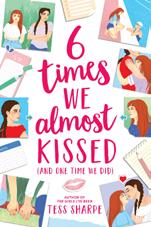
Nothing says love like being seen and wholeheartedly accepted. Miles, the protagonist of Always the Almost by Edward Underhill (Wednesday Books, Feb. 14), was hurt when his boyfriend Shane broke up with him after Miles came out as trans. Miles wants Shane to change his mind and take him back—until he meets Eric, a boy who falls for him just as he is. In The Renaissance of Gwen Hathaway by Ashley Schumacher (Wednesday Books, March 14), two teens meet while working at a Renaissance faire. Arthur genuinely finds Madeline beautiful; she struggles with negative feelings about her size as part of her journey to accepting his affection—and her own body.
In this digital age, it’s easy to hide your identity, as the couples in NerdCrush by Alisha Emrich (Running Press Kids, Feb. 7) and Chaos Theory by Nic Stone (Crown, Feb. 28) learn. In Emrich’s debut, Ramona, whose love for anime and manga is not respected by her family, reaches out to her classmate and crush, Caleb—but as her cosplay alter ego, Rel. When will she reveal the truth? In Stone’s latest novel, which compassionately explores race, family, and mental health, Andy doesn’t know at first that the girl he texted by accident—and has bared his soul to—is really his classmate Shelbi.

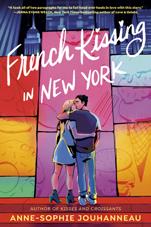
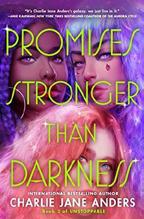
Anders, Charlie Jane Tor Teen (368 pp.)
$19.99 | April 11, 2023
9781250317506
Series: Unstoppable, 3
The Unstoppable trilogy comes to a close with this follow-up to 2022’s Dreams Bigger Than Heartbreak
The final installment of Anders’ science-fiction romp begins after a big loss in the previous book: Tina, one of the main characters of the first two books, is effectively dead, having lost her mind and body to the starship captain she was cloned from, Thaoh Argentian. Rachael, Tina’s best friend, and Elza, Tina’s girlfriend, mourn their loss as best they can as the upcoming threat of the Bereavement— weaponized black holes—draws near. Unfortunately, one of the few people who might be able to help them is the body-stealing Argentian herself, as the crew tries to save the very universe that has labeled them wanted villains. In a matter of days, the apocalyptic, star-destroying Bereavement will be unleashed upon the galaxy, and Anders’ delightful cast must battle for the fate of the world while also dealing with relationship issues, grief, and various moral quandaries that face them on their journeys. While familiarity with the earlier entries is a must, the author deftly eases readers back into the storyline through subtle reminders of characters’ relationships woven into the dialogue and succinct recaps within the text. This volume showcases Anders’ layered worldbuilding and emphasis on interpersonal relationships. As before, characters diverse across multiple dimensions, including ethnicity and sexuality, are highlighted.
Fast-paced, earnest, and epic. (Science fiction. 13-18)
Armstrong, Kelley Tundra Books (360 pp.)
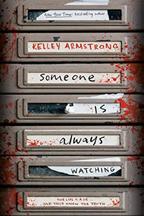
$18.99 | April 11, 2023
9780735270923
Who can you trust when you can’t even trust yourself?
Blythe Warren, a 17-year-old attending a small private STEM school run by her parents’ employer, a medical technology company, is shocked when one of her friends has a breakdown in class. Normally even-keeled Gabrielle Harris starts swearing, shouting, and raving about the security cameras and how they’re always watching her, and the teacher sends her to the vice principal’s office. When Blythe goes to check on her later, she stumbles across a bloody crime scene. Strangely, the next day Blythe remembers nothing about it: She only has memories of slipping on the bathroom floor and hitting her head. But when the combination of gruesome visions, invasive
thoughts, and inaccurate memories becomes impossible to ignore, Blythe is set on a course of discovery that will uncover a web of secrets and lies among her friends and family—some of which are unknown to the very people who keep them. The story will be pure catnip to readers who love twists, turns, and mysteries involving pretty White kids with problems, especially if they’re willing to occasionally overlook realism for the drama of it all. The mysteries on top of mysteries will keep the pages turning in this plot-driven thriller with reluctant-reader appeal. Mental potato chips, happily devoured. (Thriller. 12-17)
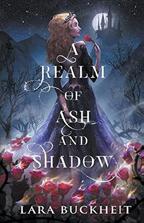
Buckheit, Lara
Sword and Silk Books (397 pp.)
$17.99 | April 11, 2023
9798986599847
When Princess Valeria finally returns home after 18 years, nothing is as she is expecting.
Val is the exiled princess from utopian Empyrean, one of the four realms. After Val’s brother assassinated their mother, Val has been kept safe in the Realm of the Mortals, and her high school graduation, just around the corner, will be the last mortal rite of passage before she returns home. But on prom night, a horde of demons attacks, and she is whisked away by her alleged soul mate, a young warrior named Gideon. But Empyrean turns out to be nothing like the paradise Val expected, as her father is a tyrant who deserves to be usurped. When an unexpected journey to the Realm of the Forsaken leads Val to be apprenticed to its dark but alluring ruler, she unveils the real history of her kingdom, its rulers, and her lineage. Val’s fierce but meandering journey toward self-empowerment in this secondary-world fantasy is full of ups and downs as, in her quest for answers, she tries to resist the calls of a hitherto-unknown darker side and the two men who vie for her heart. The worldbuilding is convoluted, often confusing and disclosed in bits of expository dialogue that mar the already overlong narrative. Despite the protagonist’s age, violence and sexual content are presented in ways that feel directed more toward adult readers. Val and Gideon are White; supporting characters have a range of skin tones.
Unremarkable. (Fantasy. 16-adult)
becoming a queen

Cawthon, Scott, Andrea Waggener & Carly Anne West
Adapt. by Hastings, Christopher
Illus. by Didi Esmeralda, Anthony Morris Jr. & Coryn Macpherson
Colors by Eva de la Cruz, Ben Sawyer & Gonzalo Duarte
Graphix/Scholastic (192 pp.)
$14.99 paper | March 7, 2023
9781338792706
Series: Five Nights at Freddy’s: Fazbear Frights, 2
Three chilling tales loosely based on a bestselling crossplatform game.
In this graphic-novel adaptation spanning two of Cawthon’s volumes in his Five Nights at Freddy’s Fazbear Frights series, stories “Fetch,” “Room for One More,” and “The New Kid” are reimagined. Both “Fetch” and “The New Kid” feature the recognizably creepy, pointy-fanged animatronics and Chuck E. Cheese–esque atmosphere of Freddy Fazbear’s Pizza restaurant. They also feature male teen protagonists wrestling with the ups and downs of adolescence. The second story, “Room,” features a man, seemingly in his early 20s, and has a less obvious connection to Fazbear’s Pizza but offers one of the most spine-tingling moments of this collection in a scene with sentient dolls. Though an easy read with a few genuinely horrifying moments, this volume suffers from its own disjointedness. While it’s illustrated by three artists, the overall aesthetic feels bloodless and reductive in its cohesion. Cawthon’s Five Nights at Freddy’s canon is sprawling and complex; those familiar with it may be accustomed to its broad scope. However, these adaptations have seemingly lost something in each iteration, leaving this collection feeling like a convoluted and garbled game of telephone at best, and a depressing money grab at worst. All three main characters are male and appear White.
Even fervent fans may be disappointed. (Graphic horror.
12-14)
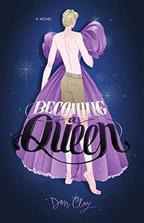
Clay, Dan Roaring Brook Press (416 pp.)
$18.99 | April 25, 2023
9781250843098
Hiding one’s true self from others only leads to problems.
Gay Michigan teen Mark Davis’ world is rocked when he has to wear a dress as part of a basketball team talent show entry and discovers how much he loves it. This discovery ultimately leads to the end of his two-year relationship with his boyfriend and fellow classmate,
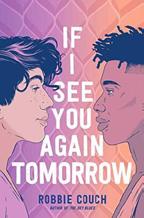
John, because of John’s internalized homophobia. The angst of first love is quickly forgotten, however, when 17-year-old Mark meets classmate Ezra Ambrose in a Halloween store where Mark is shyly hiding from classmates as he prepares to buy another dress. Mark’s journey into the world of drag coincides with his college student brother Eric’s self-destructive descent into alcohol abuse—a descent with tragic ramifications. It’s a complicated story but one that buoys up well thanks to its mix of humor and realism. Readers who love wit that practically crackles with energy will be drawn to Mark’s first-person narration and may be surprised by the depths of emotion in his story. The book will be appreciated by adult caregivers for its frank observations about substance abuse and the many facets of and societal messages about masculinity. There’s a lot that happens, but that’s life, right? Characters default to White.
Enjoyable, tragic, and very real. (Fiction. 13-18)
Couch, Robbie Simon & Schuster (336 pp.)
$19.99 | April 18, 2023
9781534497498
Stuck reliving a single day, a teen seeks a way to break the cycle.
Clark has been living a time loop that resets every night to Sept. 19. At first, it was fun doing whatever he wanted with no rules or consequences; now, by day 309, Clark feels stuck in a monotonous grind, reliving events and conversations in his dingy apartment with his younger sister and mother while best friend Sadie is living it up in Texas after leaving Illinois. Without hope of change, Clark feels increasingly disconnected from his relationships. But when a new boy, Beau, shows up in class on Day 310 and drags him off on a madcap adventure, Clark has a new goal in life: escape Sept. 19 and find Beau for real. Clark’s time loop echoes the pandemic lockdown, with themes of social isolation, loneliness, and leaving one’s comfort zone to connect and rebuild relationships. Clark’s interactions with his therapist are a big part of the book, helping to ground the fantastical, romanticized premise. The romance itself is strange and satisfying, consisting of both classic meet-cute instant attraction between Clark and Beau and slow-burn character development as Clark hunts for Beau and seeks to learn more about him. While Clark’s narration at times feels naïve for a 17-year-old, his development is heartfelt and rings true. Clark reads White; biracial Beau’s late father was Black, and his mother is White.
An engaging, sweet, and emotional journey. (Romance. 13-18)
“Enjoyable, tragic, and very real.”
DasGupta, Sayantani
Scholastic (320 pp.)
$19.99 | March 7, 2023
9781338797725
The works of Jane Austen and William Shakespeare blend well in this contemporary love story starring two Bengali American teens.

Eila and Mallika Das share traits with Elinor and Marianne Dashwood, respectively, from Jane Austen’s Sense and Sensibility: Responsible Eila plans to put aside her love for Shakespeare and acting to pursue law, a more sensible career path; vivacious, bisexual Mallika is emotionally driven and enjoys watching titillating Regency-era romances. Eila is devastated to learn that her beloved Shakespeare summer academy has been canceled and replaced by a Regency camp set up by the producers of Rosewood, a television show Mallika describes as “Bridgerton meets Murder, She Wrote.” Not only that, but Mallika has submitted applications on behalf of them both to attend the camp for opportunities to be cast as minor characters in the show’s second season. Though she’s reluctant, Eila agrees to go, hoping to feel carefree again, like she was before their father died. After Eila encounters rakish camper Rahul Lee, “a somewhat good Bangladeshi Chinese Singaporean British boy” who matches her in wit and appreciation for theater and literature, she explores the intricacies of the heart—much to her head’s apprehension. DasGupta immerses readers in a Regency experience, providing information regarding attire, etiquette, and history between chapters, and actively promotes inclusivity through the diversity of the characters, who challenge casting norms.
Rollicking, romantic, and relevant fun. (author’s note) (Fiction. 13-18)


Caitlyn Dlouhy/Atheneum (336 pp.)
$19.99 | April 25, 2023
9781665904162
Danger closes in on a young fashionista.
Maya Silva goes to Salomé Fashion Institute, Guatemala’s most prestigious fashion school. Though she lives in a small house with her mom in a neighborhood where it’s been increasingly dangerous lately, at school Maya can focus only on fashion, which gives her a sense of purpose. And she’s promising, too—talented enough to have a scholarship at age 16 and to rank in the top 10. However, when Lisbeth, her best friend, starts dating Oscar, a guy Maya has a bad feeling about, things become worrying and confusing. Then Maya gets romantically involved with Oscar’s cousin Sebastian.
As gang violence closes in, Mama decides they should move back to her hometown, San Marcos, but Maya isn’t ready to give up her life in Guatemala City. They agree to stay put until the fashion show is over as long as Maya focuses exclusively on her preparations. But that is hard; Maya fears she’s losing her dreams for the future. Then she discovers something dark about Oscar that means leaving behind everything she’s known as she and her mother try to flee to the U.S. The book illustrates the violent consequences of structural poverty, as readers are introduced to characters trying to do the best they can with what they’ve been handed. Their desperation is communicated vividly as well as their determination to keep their loved ones safe.
An engrossing exploration of youths and gang violence. (Fiction. 14-18)

Diggs, Barbara ReferencePoint Press (64 pp.)
$32.95 | Jan. 1, 2023
9781678204822
A quick and accessible guide packed with information on teen mental health problems and how to approach them.
The introduction offers an overview with statistics showing how serious the crisis is: With a 60% jump in the suicide rate for people ages 10 to 24 from 2009 to 2018, mental health issues are clearly escalating among young people, a situation further exacerbated by the pandemic as shown by a dramatic rise in teen mental health crises in 2020 and 2021. Economically and socially marginalized groups are described as particularly vulnerable. Over the course of four subsequent chapters, “Recognizing Anxiety,” “Get Grounded, Stay Connected,” “Maintain a Healthy Lifestyle,” and “Healing Anxiety,” this volume addresses possible causes and offers useful suggestions. Each chapter starts with a real-life example from a young person, such as Charlotte, who felt an overwhelming need to clean; Kerry, who struggled with panic attacks; and Katy, whose experiences as a mixed-race person in an all-White small town led to social anxiety. The author describes numerous specific techniques to try when negative feelings are overwhelming as well as general wellness advice. The book closes with a discussion of accepting anxiety and what that means to different people; seeking professional help through therapy or medication is normalized. Color photographs show racially diverse young people in a variety of everyday situations. Text boxes highlight additional helpful information.
Useful for research purposes or as self-help for those struggling with mental health issues. (source notes, organizations and websites, further research, index, picture credits) (Nonfiction. 12-18)
Durst, Sarah Beth
HarperTeen (368 pp.)
$17.99 | April 25, 2023
9780063214071
A so-called enrichment retreat proves to be anything but relaxing.
Claire Dreyer is an overachieving worrier: In every situation, she thinks of ways everything could go wrong and end with her dying. Her parents send her to a camp held at the remote Maine Lake House for a summer of making friends and boosting her resume for college applications. But upon arrival, she and the two other girls dropped off by motorboat discover only the burned-down shell of the house.
Worse, in the woods they find the program director’s dead body—she has been shot. Claire, Reyva Chaudhari, and Mariana Ortiz-Rodriguez are stuck, and without cell service, they can’t call for help. They must use their wits to keep themselves alive and uncover the truth. Although they packed for a retreat and not a multiday hike around the lake and back to the dock, they must push onward. The characters exhibit real depth as they discuss their fears and try to make the best of the situation. Each teen brings her problems—as well as her potential—to the group, including protagonist Claire, who has intense anxiety. Her fears are a double-edged sword that sometimes send her spiraling but also bring awareness to the group regarding ways to stay safe. There is no lull in this novel; just when things start to make sense, readers will have the rug pulled out from under them. Names cue characters’ ethnicities.
A twisted page-turner of a survival tale. (Thriller. 13-18)


Engle, Margarita
Atheneum (224 pp.)
$18.99 | April 18, 2023
9781665926362
Romance blooms against a backdrop of adversity and environmental conservation efforts.
It’s 2018, and Soleida, a 16-year-old Cuban girl, lives with her artist parents, who create sculptures protesting government laws that criminalize some forms of artistic expression. When a climate change–fueled hurricane destroys their home and exposes the art in their garden to authorities, her parents are arrested, and Soleida must flee, seeking asylum. Cuban American Dariel, also 16, has traveled to Costa Rica with his Abuelo to help him write the story of los caminantes, Cuban migrants fleeing oppression who have been stranded at the border with Nicaragua, unable to continue their journeys. Dariel comes from a wealthy celebrity family in California and has been affected by climate change in the form of dangerous wildfires that destroyed his home. When the two teens first meet in a refugee camp in the Costa Rican jungle, Soleida is traumatized by her journey, and Dariel is unable to connect with her. But slowly they begin a relationship centered on a mutual reverence for nature and a proclivity for the arts—Soleida is a painter, and Dariel is a musician. Chapters with alternating perspectives move the story forward briskly. Luscious verse and beautiful descriptions of the flora and fauna bring attention to the impacts of the climate crisis and the urgent need for change.
Inspiring and hopeful; young love and the call to action resonate. (author’s note) (Verse novel. 12-17)
Estrela, Joana
Trans. by Lyn Miller-Lachmann Levine Querido(224 pp.)
$21.99 | April 18, 2023
978-1-64614-255-2
In this introspective graphic novel translated from Portuguese, a girl reflects on her changing sense of self.


In loosely interconnected vignettes, award-winning author/illustrator Estrela introduces readers to 16-year-old Raquel. Her life thus far has been fairly uneventful: She lives in small-town Portugal with her divorced mom; hangs out with her two best friends, Luísa and Fred; and has a new boyfriend, Miguel. But changes are underway. At school, Raquel notices Pardalita, a colorful and artistic older girl, and becomes increasingly intrigued by her. As her interest in Pardalita grows, she ignores texts from Miguel, who eventually breaks up with her, to Raquel’s relief: “I switched to airplane mode / but it feels like I’ve landed.” Fred and Raquel join the local theater troupe that Pardalita is involved with, allowing the two girls to develop a friendship. As Raquel moves beyond projected daydreams about her object of affection, she’s fascinated by every little thing about the real Pardalita, a girl who, when she pulls her hair back, “pats the top of her head twice to make sure she’s picked up every strand.” Raquel recalls moments when there were hints about her emerging sexuality that now take on new meaning. The digitally created black-and-white art is bold and slightly abstract, matching the stream-of-consciousness text that effectively conveys adolescent turmoil, the heady intoxication of first love, and sweet moments of connection as young queer love blossoms. The book’s strength lies in its careful presentation of telling details.
Quietly resonant and sincerely told. (endnotes) (Graphic fiction. 12-18)
ALONDRA Femia, Gina Farrar, Straus and Giroux
(320 pp.)
$18.99 | April 18, 2023
9780374388454
Against the backdrop of a Coney Island summer, a 17-year-old Puerto Rican teenager tries to find her place in the world.
Alonda Rivera thought she had her summer figured out: She’d get a job, like usual, and beg her guardian, Teresa, to get air conditioning (again). But everything changes when she looks out her apartment window and sees four neighborhood teens wrestling on the playground. Watching wrestling is Alonda’s absolute favorite thing, and she decides she’s going to join them. King, Spider, Pretzel, and Lexi (the only girl in the multiracial group) don’t put up much
resistance to including her. Instead, the obstacles are overprotective Teresa and Alonda’s own undecided heart. Italian American Teresa was Alonda’s mother’s best friend until Mami died a decade ago. As for her heart, things are a little complicated: Although she’s romantically interested in King, talking to Lexi lights something up inside her. As she tries to navigate Teresa’s rules and her feelings for these new friends, Alonda, who adopts the alter ego Alondra, must learn to be fearless, just like Mami before her. There’s much to praise in this fast-paced and engaging debut, from the sense of found family that is part of Alonda’s life in multiple ways to the commentary on the impact of gentrification.
A satisfying and joyful read. (Fiction. 14-18)
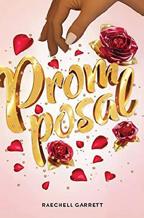
Garrett, RaeChell Poppy/Little, Brown (368 pp.)
$18.99 | April 4, 2023
978-0-316-37170-4
High school senior Autumn Reeves’ plans come to a screeching halt when she gets waitlisted at her dream school.
Despite what her parents think, Autumn only applied to one school, because Mercer School of Business at Great Lakes University is where she wants to be. She was confident that with her 4.0 grade point average she was going to be accepted, and now she is questioning everything she believed about herself. When a promposal she planned for a friend garners her attention from other seniors looking for help, Autumn decides that turning this idea into a business proposal will definitely help her stand out. But she doesn’t know how to start a business, so she joins Young Black Entrepreneurs, a student group where she has to enlist the help of her freshman year crush, business whiz Mekhi Winston, with the business plan for PROMposal Queen. Autumn and Mekhi have a complicated history—it cost Autumn a friendship and broke both their hearts—but she is willing to do anything to move to the top of the waitlist. The secret history around the events of freshman year is revealed at a good pace, keeping readers engaged. The main characters, all of whom are Black, are well developed. Autumn experiences complex emotions related to feelings of inadequacy because her self-worth is tied up in her overachiever status. Garrett balances romance, friendship, and self-discovery, with the theme of second chances running throughout the story.
An entertaining twist on college admissions stress. (Fiction. 12-18)
“Satisfying and joyful.” alondra
scious about people’s responses to her complex identities. The fallout of a teacher’s racist comment brings matters to a head, forcing Ale to face uncomfortable truths. Park spoke with us over Zoom from her home in Brooklyn; the conversation has been edited for length and clarity.
I fell into YA thanks to my students at American University [where Park is an assistant professor of creative writing]. A lot of them were coming in wanting to tell YA stories, and as an educator, I needed to know what they were trying to do. I fell in love with the freshness of voice: These books are saying things that I’m not able to say in the adult world, tackling issues of social justice and feeling seen. After Re Jane, I was working on a novel about Alejandra’s father, Papi. I was writing his coming-of-age, his dealings with racial melancholia. He was coming from such a traumatic place. Suddenly this young voice came out, and it was Juan’s daughter. She asserted herself in this American kind of way, and then she just took over the page.
After making a splash with her 2015 adult debut, Re Jane, Patricia Park returns with a novel for teens that draws on her family’s Korean Argentine heritage. The protagonist of the sharply observed, brilliantly characterized Imposter Syndrome and Other Confessions of Alejandra Kim (Crown, Feb. 21) negotiates the vast differences between her multicultural, working-class neighborhood in Queens and her predominantly White, socially progressive Manhattan prep school, Anne Austere (affectionately dubbed Quaker Oats Prep by students). Spanish-speaking Ale, whose parents grew up in Buenos Aires in a community of Korean immigrants, is mourning the untimely death of unconditionally supportive Papi; feels emotionally estranged from overworked Ma; and endures the stresses of living in poverty. At school, she’s uncomfortable with wealthy White best friend Laurel’s zealous, overbearing activism. Everywhere, she feels self-con-

I really appreciated the way so many different elements ultimately fit together like a perfect puzzle. I’m very meticulous, and that’s why I’m not a fast writer. Loose ends bother me—I feel like you owe it to the reader to tie things up or at least address things. I’ll go back through the manuscript multiple times: I read just for each character, to make sure that their storyline makes sense. I do that with setting [too]; Jackson Heights [in Queens] and Quaker Oats are characters in and of themselves.
How did you decide what elements to explicitly explain?
In my early drafts, I overexplained. What if the reader doesn’t understand what nunchi means or they don’t understand a Spanish word? I [had] to learn to trust the reader.
This is where I get very encouraged by the way young adult literature is going. There’s more of this resistance where we don’t have to explain. With my first novel, I had italicized Korean terms, because that was the convention. The fact that Imposter Syndrome could be published without subordinating Spanish or Korean? This is such a joy. It’s such a giant step forward for literature, another step in making those who are underserved feel seen, heard, and included.
Your book shows how, with meaningful character development, writers can introduce complex themes, even through secondary characters.
I write about minorities within minorities—they’re all part of the Patricia Park multiverse. Papi is a stock boy in Re Jane, [working] in the grocery. Jane thinks he is Hwan, fresh off the boat from Korea, and at the very end Uncle Sang tells Jane, No, no, he’s Juan. He’s Korean from Argentina like you’re Korean from America, and Jane realizes that she has stereotyped Ale’s father in the same way she’s been stereotyped her whole life. I like rounded secondary and tertiary characters. I like this idea that someone who’s a stock boy in one story can go off and be the hero of their own adventure. And then the sandwich girl in Imposter Syndrome can go off and have her own story. Really the larger thesis statement is: We’re not all the same; we contain multitudes.
How do you respond to the tired critique that so-called “diverse books” often have leveled at them that there’s “too much going on”?
I’ve been told both in adult and YA spaces that I have too much going on, and my BIPOC writer friends have been told [that too]. The short answer is, especially when you’re a minority within a minority, when you’re trying to navigate certain spaces, it’s not a binary, it’s not simplistic: You got a lot going on! So even at the starting line, characters like Alejandra don’t know which way to go because they’re responding to the way the world sees them. Ale, like a lot of YA characters, is trying to find her way, and it takes 300 pages to figure out what that is.
On a craft level, I think what can happen are failures in mechanics. We talked earlier about so many threads: How do you keep them going? It takes extra work to go back through— multiple passes for each character, [even] each secondary and tertiary character, to make sure that their storylines make sense.
I appreciated that Laurel, who could easily have become a parody, was given her own backstory and grew in ways that felt respectful and authentic.
I think it’s just as important to get White characters right as it is for non-White characters. I had a lot of White women sensitivity readers. Laurel echoes a lot of concerns I hear murmured about [among] my White women colleagues as well as my students. How do you be a good person? How do you be an ally in an authentic way? To be honest, I feel for that struggle, that sense of confusion. I, myself, am trying to figure it all out as a BIPOC woman. I think we’ve all been a Laurel at some point, so showing her experience was important in all its three-dimensionality.
She has her arc, too—she’s cracking jokes at the end that I don’t think she would have made at the beginning. It’s like, oh my God, Laurel, did you really say that? In high school, you try things out, you might overcorrect, and then you undercorrect. It’s Goldilocks all the way through. Too hot. Too cold. When am I going to get it right?
One line in particular really resonated with me: “what I’m realizing is this: if you’re afraid of saying your truth, then that’s worse than supposedly ‘belonging.’ That’s the true definition of ‘imposter.’ ”
I think that phrase sums up the high school experience: Constantly trying to figure out, should I say the thing that makes me belong, or should I say the thing that feels true inside? It’s just one big swamp of cognitive dissonance. Even in moments where we think we are being authentic, five years later, looking back, we could say, I was an imposter then. For me, that definition of an imposter was a hard-won lesson, something I try to hold in my heart and use as my barometer. I don’t always get it right, but the fact that I could even come to this was part of my journey.
Imposter Syndrome and Other Confessions of Alejandra Kim received a starred review in the Dec. 1, 2022, issue.

Gupta, Ruchira
Scholastic (352 pp.)
$18.99 | April 18, 2023
9781338825091
Fourteen-year-old Heera knows what fate awaits many girls growing up in Lalten Bazaar, a red-light district in Bihar, India, commonly known as Girls Bazaar. Her neighborhood is controlled by gang leader Ravi Lala, who uses predatory loans and the support of corrupt police officers to keep families impoverished and force girls into prostitution. As a member of the marginalized Nat caste, Heera knows many obstacles await her. Her cousin Mira Di was auctioned off by her father to a traveling dance company. When a fight with a bully leads to Heera’s expulsion from school, she knows it will only be a matter of time before her father sells her to Ravi Lala. Fortunately, Heera receives help from Rini Di, a women’s rights advocate in charge of a hostel for vulnerable girls, and joins kung fu lessons at the hostel. As Heera’s strength and self-confidence grow, so does her desire to help the girls and women in her community break free, especially when Heera finds out that her best friend will soon be sold and smuggled abroad. Heera’s narration contains vivid sensory descriptions that, along with the Hindi words scattered throughout, bring the setting to life, quickly immersing readers in her world. The depth of the story’s details and its themes of bodily autonomy, community, and women’s empowerment reflect Gupta’s experience as the founder of Apne Aap, an NGO working to end sex trafficking. A triumphant debut. (author’s note, resources) (Fiction. 13-18)
Howard, Amalie Joy Revolution (368 pp.)
$18.99 | $21.99 PLB | April 4, 2023
978-0-593-48350-3
978-0-593-48351-0 PLB
A Regency romp refreshingly centering a multiracial cast of characters of South Asian, East Asian, and African descent.

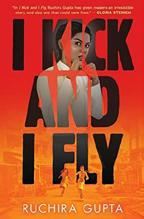
Three years ago, Lady Ela Dalvi was devastatingly betrayed by her best friend, Poppy Landers, and left hanging by her budding paramour, Lord Keston Osborn, the Marquess of Ridley. Fueled by a desire for retribution for a reputation ruined and relationships cast aside, Ela returns to the London social scene in 1817 as mysterious heiress Miss Lyra Whitley with one Machiavellian goal in mind: taking Poppy down. Disguised by hair dye, a new name courtesy of her benefactor, Lady Felicity Whitley, and the fuller figure of an 18-year-old, Ela schemes to infiltrate and dismantle Poppy’s inner circle, sway her suitors, and tarnish her reputation. It’s
mostly easy to stay the course since Poppy’s become even more unapologetically slanderous, but meeting a kindred spirit who’ll become a casualty to her ruse leads to guilt that’s hard to swallow. Ela thought she had steeled her heart, but it’s all too easy to fall back into banter with dashingly distracting Keston. Will Ela’s scheme ultimately satisfy? Dare she set her eyes on longterm happiness? Howard crafts an entertaining exploration of themes of forgiveness and choice as well as power and agency in a society with restrictive rules for women. Alternating chapters switch between the present and the events of three years prior, teasing and unraveling Ela’s motivations and development.
A satisfyingly delightful tale of deception, retribution, and romance. (author’s note) (Historical romance. 13-18)
AHIAHIA THE ORPHAN Illuitok, Levi Illus. by Nate Wells
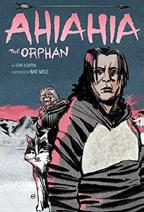
Trans. by Jeannie Illuitok
Inhabit Media (36 pp.)
$19.95 | April 11, 2023
9781772274431
After intruders enter their iglu and murder his parents, an Inuit boy is taken in by his grandmother, who does everything she can to protect him.
This traditional tale relayed by Levi Illuitok, an elder from Kugaaruk, Nunavut, and translated from Inuktitut, follows Ahiahia as he grows into adulthood under his grandmother’s watchful eye, hunting caribou with a bow and arrow and shadowed by his grandmother’s dog. He avoids those in his community who wish him ill. Wearing protective amulets and a suit of raven and wolf skins made by his grandmother, he goes about his life—until the day when events escalate and Ahiahia is pursued by his enemies with seemingly deadly force. Realizing that his grandmother’s protection renders him unassailable, however, the attackers flee. Ahiahia pursues two young women who ran away from the scene of violence, taking them home to be his wives, where they live in the iglu continually supervised by his grandmother. The economical text flows well, drawing readers in and effectively capturing the rhythms of oral storytelling. It is enhanced by evocative artwork in a natural, subdued palette that brings the tundra setting to life. The beauty of the landscape, the drama of the scenes of conflict, and the emotions of the characters are vividly expressed. This offering is a rich glimpse into a body of orally transmitted stories that will encourage readers to reflect on community values, changing cultural norms, and enduring human emotions.
Viscerally powerful and entrancing. (glossary) (Graphic folklore. 13-adult)
Jacobson, Kelly Ann
Three Rooms Press (278 pp.)
$14.00 paper | April 25, 2023
978-1-953103-31-4
Robin and her Merry Misfits steal from the rich and give to themselves.
All five of the Misfits, including Robin, keep secrets about their lives before Nottingham, the home they built on an overgrown, foreclosed lot in Florida. The world rejected them, but they found each other. Together, they steal watches, televisions, diamonds, and more for Uncle Frank, a brutal mob boss who recruited Robin off the streets when she was 16. Their cherished life at Nottingham comes to an end when someone puts a $500,000 bounty on Robin’s head. In this modern reimagining of the legend of Robin Hood, a cast of queer girls fight to free themselves from the control of powerful crime families and their own pasts. The fast-paced action and high stakes offer initial appeal, but the story suffers from bland characterization and sudden plot twists that rely heavily on after-the-fact flashback sequences to explain the events. Robin’s flat personality makes the nonlinear plot more difficult to follow. Both Robin and her best friend, Little John, fall for Daisy Chain, a White, culturally appropriating Manic Pixie Dream Girl who speaks in Shakespeare quotes. Their messy love triangle is resolved by the hasty introduction of a new character. Most of the cast is presumed White; Robin’s surname is Ramirez, but her characterization includes no significant indicators of her ethnicity.
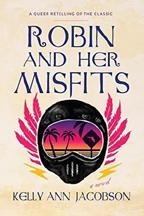
A heist with no payout. (Fiction. 14-18)
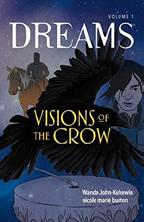
John-Kehewin, Wanda
Illus. by nicole marie burton HighWater Press (80 pp.)
$23.95 paper | April 4, 2023
9781774920459
Series: Dreams, 1
A First Nations teen finds himself swept into a metaphysical exploration of self-discovery.
Damon Quinn, who has a Métis father and Cree mother, doesn’t really know who he is. His mother abuses alcohol, and he suffers constant torment from racist bullies in school; all Damon wants is to leave everything behind. Things start to change when a black crow begins following him around and new student Journey insists that she and Damon should stick together because they are both Indigenous. Initially unwilling and disoriented, Damon begins entering dreams that feel incredibly lifelike. In them, he learns from his ancestors about his cultural roots. Slowly, his curiosity helps him embrace these vivid dreams that contrast with the drabness of his waking life. Damon’s emotional journey introduces
the cultural and familial disruptions and intergenerational traumas from residential schools and other forms of colonization. Damon’s relationships throughout the novel parallel his growing interest in his self-identity. He develops more empathy for his mother after meeting his ancestors and learning about their struggles. Friendship with Journey creates a safe space for Damon to be himself. Even his bully turns out to represent Damon’s own past self-hate. At some points, the writing reads somewhat like a textbook, interrupting the flow of the story. The panels are simply and clearly drawn, and the colors vary from neutrals to deep jewel tones to amplify the scenes’ emotions.
An important story that doesn’t completely deliver an engaging read. (Graphic fiction. 13-17)
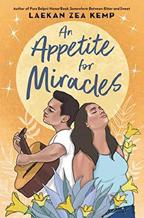
Kemp, Laekan Zea
Little, Brown (448 pp.)
$18.99 | April 4, 2023
978-0-316-46173-3
Familial bonds are tested and stretched to their limits as teens Danna and Raúl seek to reconnect with their loved ones who are physically close but mentally worlds away.
Sixteen-year-old Danna Mendoza’s relationship with her mother, Raquel, is in tatters, largely due to their differences in coping with the progressing dementia of Danna’s beloved grandfather but also because of Raquel’s preoccupation with Danna’s body and eating habits. Meanwhile, Raúl Santos’ mother has recently been released after spending two years in prison. Though Raúl wishes he was the type of son she could be proud of, he is frightened by his mother’s struggles and disappointed by her seeming obsession with his performance in school. But when Raúl and Danna are brought together, they feel their hearts come alive despite all this. The verse narration alternates between the two Mexican American leads and effectively showcases the depths of their emotions through their interactions with family, friends, and each other. Although the theme of loss is ever present, the story is buoyed by the parallel explorations of falling in love, gaining perspective, and learning to forgive. Disordered eating is also sensitively handled. Cultural elements are woven seamlessly into the story, which features familial relationships that ring true. This is an earnest, stirring novel about staying open to hope and love despite the tremendous potential for, and certainty of, loss.
Emotionally resonant and deeply moving. (Verse fiction. 14-18)
“An earnest, stirring novel about staying open to hope and love.”
Kirby, Matthew J. Dutton (320 pp.)
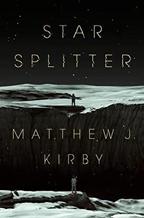
$18.99 | April 25, 2023
978-0-7352-3166-5
In a far future with quantum communication and teleportation, something goes terribly wrong.
After 6 years apart, it’s time for 17-year-old Jessica to be reunited with her parents—but at the cost of her life on Earth, as instead of coming home, her parents are making her join them on their interstellar scientific mission on a distant, post-extinction–event world. The teleportation technology destroys the original body and prints a new one at the other end, but when Jessica wakes up expecting to be in orbit, it’s obvious things have gone horribly, violently, lethally awry. Readers explore the mystery as Jessica tries to solve it—and survive—in alternating “before” and “after” chapters. The dual timelines cover both what happened on the ship (deliciously ominous, considering readers know what’s coming) and her struggles on the strange planet as well as the physical and emotional implications of the disaster. The expertly juggled storyline nurtures a tension that blossoms into a palpable sense of dread as the downright spooky nature of the disaster is explored. Themes of identity hit hard, as they come with high stakes. The conclusion results in an open-ended yet satisfying stand-alone novel, though the future setting is well developed enough that readers will hope for more. Though some characters have names that signal ethnic diversity in the supporting cast, most lack physical descriptors and default to White.
An intense, read-in-one-sitting kind of ride. (Science fiction. 12-18)
Krosoczka, Jarrett J. Graphix/Scholastic (240 pp.)
$12.99 paper | April 18, 2023
9781338356311
In this stand-alone companion to Krosoczka’s graphic memoir, Hey, Kiddo (2018), 16-year-old Jarrett spends a lifechanging week at Camp Sunshine, a summer camp for seriously ill children and their families.
In 1994, artistic Jarrett, who flies under the radar at school, joins a diverse assortment of his Worcester, Massachusetts, high school classmates chosen to travel to Maine as camp volunteers. His one-on-one assignment is with Diego, who has advanced brain cancer and is a wheelchair user. Diego is withdrawn and uninterested in camp but is eventually brought out of his shell by Jarrett’s quiet companionship. The slice-of-life story follows activities and developing friendships at what is in most ways a typical summer camp, yet it’s one filled with kids in
extraordinary circumstances enjoying the rare privilege of being ordinary. Krosoczka’s art has an appealingly painterly and deliberately loose style—it’s easy to see why the campers enjoy his cartoons. Especially notable is the limited color palette tending to grays, oranges, and yellows, like the titular sunshine playing across old photos. The matter-of-fact tone often, but not always, avoids leaning too hard into sentimentality. But ultimately this is a narrative in large part about inspiration provided by sick children to healthy people. This brings with it inherent and perhaps unavoidable issues with presenting the campers as lessons. The book is stronger when it prioritizes the reality of the kids themselves and gives their interior lives focus.
Loving and true but doesn’t always avoid cliché. (author’s note) (Graphic memoir. 14-18)
WINGMAN
Mills, Jean Orca (120 pp.)

$10.95 paper | April 11, 2023
9781459834347
Series: Orca Soundings
If you see something, say something. Tensions are running high as the crucial hockey game between the Hawks and the Cougars goes into overtime. Hawks captain Trace calmly lays out the strategy to the team, including narrator Max, who happens to be Trace’s best friend. Winning means a playoff berth, but also, it’s personal. Every Hawk would like to squelch the nonstop taunts of Cougar Jared and wipe the sneer off his face. In a crucial moment, Trace scores the winning goal…for the other team. The Hawks rush to support their inconsolable captain, but the winning Cougars are gleeful, and Trace’s verbally abusive dad doesn’t hide his displeasure. Trace’s depression lingers, and Max wonders if there’s more to the story. Later, at the mall, Trace’s ex-girlfriend, Cate, shares with Max the unsettling details of their recent breakup and the feeling that something bad is going down at Trace’s house. Max considers talking to Coach Scott but dismisses the idea. “As soon as you tell a teacher this stuff, everything gets messy.” Standing on the porch outside Trace’s house, the sound of a man’s angry yelling, a woman crying, and breaking objects confirms Max’s suspicions that something is wrong. What to do? Mills writes with economy, strong pacing, and crisply delineated characters. She nicely captures the flavor of team camaraderie and competitive rivalry. Max narrates in an energetic first-person as he grapples with his dilemma. Most characters read White.
A worthwhile cautionary tale, accessible and appealing to reluctant readers. (Fiction. 12-18)

“The expertly juggled storyline nurtures a tension that blossoms into a palpable sense of dread.”
star splitter
Sedoti, Chelsea
Sourcebooks Fire (416 pp.)
$18.99 | April 4, 2023
978-1-4926-7305-7
Five teens go camping, but only four return.
Maylee decides she wants to go on a spur-of-the-moment camping trip. The group ends up including her boyfriend, John; her best friend, Petra; Petra’s stepbrother, Nolan; and classmate Abigail. Their destination is Salvation Creek, a wooded area in the Pacific Northwest that is notorious due to the girls who have disappeared there—as well as being known to cryptid enthusiasts like Nolan for its Bigfoot activity. Petra’s Type A personality clashes with Maylee’s impulsivity as the latter seemingly randomly invites Abigail, a girl Petra didn’t know Maylee had any connection with. Meanwhile, Abigail has problems with John and his purported involvement in another classmate’s car accident. Suspicions run high when Maylee vanishes during the night following a huge argument within the group, as each teen has a different opinion about what to do next. The story is told in the form of transcripts of the police interviews with John, Petra, Nolan, and Abigail as they run through the weekend’s events from their individual perspectives, bringing a sense of immediacy to the story. Each character holds a piece of the puzzle, but each of them is unreliable to a certain degree, as they have secrets they wish to keep hidden. The combination of both long and short chapters contributes to the excellent pacing, making it hard to put down. Most characters are White; John is Black.
A riveting, page-turning thriller that is full of surprises. (Thriller. 14-18)

Smith, Joan F.
Feiwel & Friends (336 pp.)
$18.99 | April 25, 2023
9781250843388
A girl with omniscient powers makes a misstep, changing the trajectory of her life and others’.
Lifeguard Nick freezes when Mr. Francis, a beloved high school biology teacher, falls unconscious in the pool. Mysterious new girl December steps in to save him—but she wasn’t supposed to. She broke the rules. December has the ability to know all that has ever happened and all that will happen, and disrupting the plan has serious implications. The last time December changed the preordained course of things, her mother disappeared. Now, she knows she was going to fall in love with Nick, but Nick was going to die. After Nick gets unwanted credit for rescuing Mr. Francis, he feels like a fraud and tries to
get December to come forward about her role. In return, he agrees to try to find her mom. The novel is told through alternating first-person perspectives, and it thoughtfully integrates Nick’s dyslexia into his characterization. Even though December knows what is going to happen, she doesn’t know in advance how things will feel; her experiences of pleasure and pain are visceral. The conceit is mostly successful, though there is some need for suspension of disbelief about December’s inability to see what happened to her mother. However, the strong pacing and charismatic characters carry readers through. Nick and December are cued White.
An engaging love story exploring twists of fate. (Fiction. 12-17)
Spalding, Amy Amulet/Abrams (304 pp.)
$18.99 | April 18, 2023
9781419757525
Lydia is a whole 13 months older than Penny, but she’s never felt like the big sister.
According to Lydia, Penny is perfect—she has a detailed plan for the future and the grades to back it up. Lydia feels like she’s constantly in her sister’s shadow. She also doesn’t have any close friendships and is a serial monogamist with a tendency to let boy drama control her life. After a boy-crazy high school year with disastrous repercussions, the sisters make a pact: They’ll have a summer free of boys, one spent living with their cool aunt and uncle in Los Angeles. After Lydia falls for Fran, a cute girl she meets while working as a barista, readers learn that Lydia has known she’s bisexual for quite some time but is not out to her family yet. Since Fran isn’t a boy, Lydia pursues the relationship in secret, deciding she’s not breaking the pact. Lydia’s relationship validates the bisexual experience through an enjoyable romance. While the disjointed and sometimes repetitive first-person narration can make the plot difficult to follow at times, Lydia successfully navigates her growing feelings for Fran, a new group of friends, and her sometimes strained relationship with Penny. This body- and sex-positive story will hold readers’ interest until it eventually reaches its satisfying conclusion. Lydia and Penny are White; Fran is cued as Latine.
A cute, queer romance plus a sweet exploration of the special bond between sisters. (Fiction. 13-18)


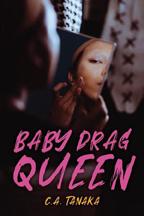
Tanaka, C.A.
Orca (144 pp.)
$10.95 paper | April 11, 2023
9781459835344
A determined Vancouver high school senior steps out of his comfort zone to help his mom.
Seventeen-year-old transgender boy Ichiro hates that his mom refuses to quit her job even though her boss is sexually harassing her. Despite her insistence that he focus on school, Ichiro makes a plan to solve their money problems—he’ll purchase a camper van to save on rent. Throwing himself into his job washing dishes at a cafe, Ichiro struggles in classes and misses hanging out with friends, especially cute new girl Lexie, who might lose interest if he doesn’t make a move soon. Just when Ichiro’s goal starts to feel impossible, he learns about a youth drag competition with a huge cash prize. As Ichiro pursues the contest, he grapples with stirring romantic feelings, sharing his identity with his friends, and a fraught relationship with his mother, who doesn’t accept him as her son or recognize that he is trans (this last point may confuse readers given that she calls him Ichiro, traditionally a boy’s name, throughout). Tanaka establishes concrete goals for Ichiro, but the story suffers from unbalanced pacing, highlighted by the title’s emphasis on drag: Drag performance provides a means to an end for Ichiro, but he’s in it for the money and doesn’t start learning routines until over halfway through the book. Nevertheless, this accessible debut for reluctant readers offers an ethnically diverse cast of queer characters navigating identity and emerging adulthood. Ichiro and Lexie are of Chinese and Japanese descent. Dramatic, optimistic, and emotionally engaging. (Fiction. 13-18)
Tash, Sarvenaz
Disney-Hyperion (304 pp.)
$17.99 | April 4, 2023
978-1-368-07755-2
A drama student falls for her statistics tutor while struggling to balance classes and her first paid acting job.
Persian college freshman Nasrin
Mahdavi lives for musical theater and has been accepted to New York University’s prestigious Tisch School of the Arts. She quickly makes friends with fellow drama student Beckett Banerjee, who is gay and Indian American, and lands a role in a web series. The only problem is that her parents think she’s in business school. Nasrin reasons that it’ll be easier to tell them the truth once she can show them how well she’s doing, and she signs up for a statistics course to help maintain the illusion. However, she struggles with it and, without realizing who is behind the statstutornyu
email address she finds advertised, hires her class’s rude TA to tutor her. But as Nasrin spends more time with handsome White boy Max Fletcher, she realizes there’s more to him than meets the eye. Meanwhile, things become increasingly difficult when her parents surprise her by moving to New York from Indiana. Worse, Minu, Nasrin’s cousin from Tehran, who’s in the States to attend Barnard, starts blackmailing her over her secret. Readers will enjoy following Nasrin’s journey as she grows in maturity both as a friend and daughter and learns to be true to herself. The portrayal of drama school as both exciting and challenging is also appealing.
Fans of relationship-driven stories will adore this sweet novel. (Fiction. 13-18)
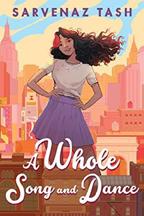

Violet, Jessamyn
Three Rooms Press (298 pp.)
$14.00 paper | April 18, 2023 978-1-953103-29-1
Eighteen-year-old Kyla moves to Los Angeles to pursue her dreams of rock stardom.
Kyla, a White girl from Western Massachusetts, is discovered when a musician hears her playing piano in a local restaurant and asks her to open for his band, which is touring the area and needs a replacement for the original act that had to cancel. Ruby Sky, a Courtney Love–esque singer Kyla loves, sees her performance and asks Kyla to move to LA to join her band. However, Kyla needs rock-star bootcamp before she’s ready. In a matter of days, she is immersed in the nonstop party life of 1990s LA. The nostalgia is on point without being heavy-handed, but the plot feels incomplete, so the magic wears off before long. Readers will spend the whole time waiting for the many Chekhov’s guns to go off, but most never do. Eating disorders, drugs, alcohol, cigarettes, and predatory men simply provide the set dressing. There is a little more development given to Kyla’s discovery of her sexuality; though it remains unlabeled, she does come to accept that she is attracted to women. For all the experiences Kyla goes through, from her barely believable, dream-cometrue discovery to her decision to follow her love of music no matter what it brings, more is needed to take this book from a series of anecdotes to a robust story.
An evocative ’90s vignette without a strong plot to carry it. (Fiction. 14-18)
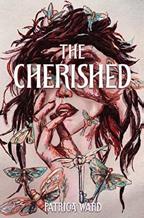
Ward, Patricia
HarperTeen (336 pp.)
$17.99 | April 18, 2023
9780063235113
A slow-building character study about living up to a dangerous, unusual destiny.
Sixteen-year-old Jo inherits a house in Vermont from her estranged paternal grandmother, Gammy Maureen, a place that holds memories of a traumatic past Jo struggles to recall. Although her pregnant mother and stepfather pressure her to sell, Jo remains curious about the possibilities of owning a home despite an ominous letter from Gammy indicating that there is difficult work to be done and that Jo, as a member of the Lavoie family, is responsible for carrying it out. The house’s tenants, Hattie and her guardian, Tom, have been named as beneficiaries of a trust providing them with housing and financial support. As Jo learns more about the weird town where the house is located and her grandmother’s role in it, a child’s disappearance triggers echoes of past events. By the time Jo confronts the otherworldly forces whose stronghold on the town have been a constant threat, Jo’s perspectives on her past, her family, and her future begin to shift. Claustrophobic observations build tension in a story that is slow to reveal secrets and deliver on threats. Unfortunately, insensitive language describing mental illness detracts from the vivid portrayal of how traumatic memories operate. Amid a White default, Jo refers to standing out due to her olive skin and frizzy black hair, inherited from an absent father of Syrian and Italian origin. Strange and intermittently suspenseful. (Horror. 13-18)

Wibberley, Emily & Austin
Siegemund-Broka
Viking (336 pp.)
$18.99 | April 4, 2023
978-0-593-32690-9
A serial dater is forced to go on vacation with her latest ex-boyfriend because their parents are best friends.
Seventeen-year-old Kaylee Jordan is a nationally ranked athlete determined to follow in her mother’s footsteps to Olympic beach volleyball glory. But as committed as Kaylee is to volleyball, the same can’t be said about boyfriends. Her romantic relationships never last, so it’s no surprise when she dumps aspiring filmmaker Dean Freeman-Yu after only two months. But Dean isn’t just a random classmate; he’s her lifelong friend and the son of her parents’ college besties. They’re also about to go on their annual joint summer trip to the Jordans’ Malibu beach house for three weeks. Since it has been less than a month since the breakup, Kaylee decides to coach Dean through the heartbreak she caused using her usual
survival guide tips, like investing in a hobby, saying yes to invitations, and taking fun daytrips. Usually, second-chance romances take place much longer after a couple breaks up, but this story works thanks to Kaylee and Dean’s strong family connection. Kaylee’s family is White; the Freeman-Yus are Jewish and Taiwanese, and Dean is bisexual. A moving subplot about how Kaylee lives in her three-time Olympic gold-medalist mother’s shadow adds depth to her development, and it’s refreshing to read a romance in which it’s the girl who’s the elite jock.
A breezy, beachy teen love story. (Romance. 13-18)
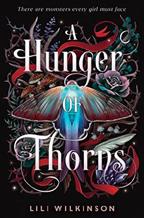
Wilkinson, Lili
Delacorte (432 pp.)
$19.99 | $22.99 PLB | April 18, 2023
978-0-593-56266-6
978-0-593-56267-3 PLB
When her childhood friend goes missing, Maude journeys to an enchanted place to search for her.
As young girls, Maude and Odette were wild and inseparable. Maude spun fairy tales of captured princesses and the handsome princes who would save them, and she promised to always rescue Odette. In the years since, Odette continued to yearn for forbidden, illegal magic, the kind that led to Maude’s mother’s death. Since losing Mam, Maude has lived with Nan and Halmoni, her grandmothers. She tries to be good and nice but has never gotten over the fact that Odette abandoned her four years ago when Maude lost her magic. Now Odette is presumed dead, and Maude is determined to find her. She sets out for Sicklehurst, an abandoned power plant encased in a forgetting spell and full of dangerous magic and eerily familiar creatures. Maude has the gift of storytelling; so too does noted Australian author Wilkinson, who intricately weaves an original world full of magic and wonder that’s both cozy and treacherous. The lush, atmospheric tale slowly builds, and readers are rewarded with surprising reveals and compelling insight into complicated friendships. The story takes the notion of a fairy tale’s clear-cut good versus evil and turns it on its head, diving into the vast gray area in between. Most characters are assumed White; several characters, including Maude, are queer.
A spellbinding, leisurely paced tale with a captivating, imperfect heroine. (Fantasy. 14-18)
“An original world full of magic and wonder that’s both cozy and treacherous.”
a hunger of thorns
that self-same metal

(352 pp.)
$19.99 | April 25, 2023
9781419758645
Series: The Forge & Fracture Saga, 1
Joan Sands is a 16-year-old Black girl blessed by Ogun, the Orisha of iron, with the ability to manipulate metal. Not only can Joan shape metal, but it also speaks to her, sharing its true name and giving her powers and strength that could cause her to hang as a witch in King James’ Protestant England. The year is 1605, and Shakespeare’s Globe Theatre is the mainstage for Joan’s tragic first encounter with powerful Fae, faeries who are wreaking havoc in the mortal realm after almost two millennia of being bound by a pact created by Ogun. With her godfather—the only other living person blessed by Ogun—arrested, it may be up to Joan to find a way to stop the Fae from completely taking over the world. Although the fighting, on stage and off, between Joan and the real-life counterparts of the Fae characters from Shakespeare’s plays is exciting, much of the action jumps around, introducing periphery situations that are hard to connect to the main plot. While it’s clear there’s been diligent research about the time period, politics, and faery folklore, other elements—like compelling love triangles and partnerships and magical tampering with historic events—aren’t fully fleshed out, while other important threads are confusingly dropped midway through the novel. However, interesting characters offering brilliant representations of queerness and set in a glorious foundation will pull readers in.
A promising and original, if uneven, series opener. (map, historical notes) (Fantasy. 13-18)
“Interesting characters offering brilliant representations of queerness will pull readers in.”
These titles earned the Kirkus Star:
BUSTER by Ryan Barnett; illus. by Matthew Tavares
THE GENESIS BACKUP Harwin, Dale Trans. by Kate Oden Self (402 pp.)

$14.99 paper | $2.99 e-book | Nov. 18, 2022
9798363874710
Ed. by Alex, Gary, Mike Chilton & Frederic C. Benson
Peace Corps Writers (370 pp.)
$20.00 paper | Sept. 15, 2022
9781950444526
Former International Voluntary Services workers provide insights into their organization in this detailed historical anthology.
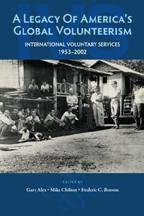
A nonprofit organization founded in 1953, International Voluntary Services, according to former IVS volunteer and United States Ambassador to Pakistan Wendy J. Chamberlin, “occupies a special place as a pioneer for fielding volunteers” that served as a model for the Peace Corps and a host of subsequent NGOs. The anthology, divided into four sections, is a historical overview of IVS’ endeavors from the 1950s through the 2000s. While IVS was an officially nonsectarian organization, the anthology explains that many IVS members came from Mennonite, Quaker, and Christian pacifist backgrounds, and the organization offered an alternative approach to international relations in the wake of World War II and the start of the Cold War. In its half-century of activism, IVS sent volunteers on more than 1,400 assignments in almost 40 countries. Beginning with Section II, the book’s second half transitions from an organizational history to a grassroots exploration of the experiences of IVS volunteers thrust “out of their comfort zone” and into a post-colonial world that included newly independent nations as well as those (such as Vietnam) whose futures were still being fought for on battlefields. Sections III and IV offer reflections on IVS’ partnerships with other organizations, from churches to USAID, and a retrospective analysis on the organization’s legacy and implications for the future of international volunteerism. While edited by former members of the IVS (Alex, Chilton, and Benson), this is no mere organizational hagiography; it includes chapters written by history professors and other experts from academia who have no connection to IVS. Collectively, the book’s 12 chapters are backed by more than 20 pages of endnotes that demonstrate a firm grasp of the scholarly literature and make ample use of primary source material housed at the Mennonite Church USA archives. As in most coauthored anthologies, there is some repeated information across the chapters, but generally the book maintains its cohesiveness. Its readability is enhanced by an ample assortment of maps, charts, text-box vignettes, and useful appendix materials.
A well-written, informative history of a groundbreaking 20th-century volunteer organization.
New York is, of course, the greatest city in the world, as any New Yorker will be happy to tell you—this columnist included. The thriving metropolis is a center of arts, culture, and business, and it’s been the subject of countless books, weighing in on everything that makes New York, New York. Here are three such titles, all recommended by Kirkus Indie.
It’s been said that any conversation about New York will eventually get around to the subject of real estate, as construction of new buildings never seems to stop. In The New Kings of New York (2022), Adam Piore looks at developments such as Manhattan’s Hudson Yards, Columbus Circle, and the site of the former World Trade Center as well as prominent developers, including Steve Ross and Harry Macklowe.

Heart of New York (2022) offers Canada-based author Emil Rem’s third-person account of a family trip to the city during a rough winter: “The whole family had been traipsing the sky-scrapered streets of New York, passing one modern building after another, waging their own war against the scalding wind chapping their faces.” Along the way, our reviewer writes, he provides tales of “antic, detailed escapades” that take place at various landmarks, such as the Upper East Side’s Argosy Book Store.
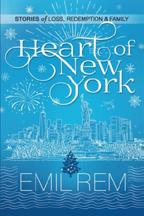
Patricia Faith Polak’s 2018 poetry collection, Manhattan Melody, presents a wonderfully offbeat song of the city. “Mornings at Seven,” plays a tune that any New Yorker will find familiar: “City blocks with donuteries, druggeries, and dry cleaners; / air temperate, as if March had rinsed it, / pounded it against the travertine on skyscrapers / until it was like a favored pair of jeans.” Kirkus’ reviewer notes “the poet’s invested, compelling, and exciting voice” and points out that the “specificity of Polak’s references…provides the text with a gentle veneer of poetic effervescence.”

David Rapp is the senior Indie editor.

Andrews, Amy
Entangled: Amara (368 pp.)
$7.99 paper | $10.99 e-book | Jan. 24, 2023 9781682815632
In this novel, a Los Angeles transplant falls for a small-town Colorado cop on her journey of self-discovery.
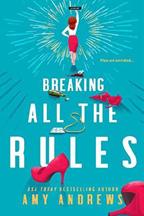
Beatrice Archer is 35 years old and going through a crisis. She quits her LA job as an advertising executive when her overdue promotion for a corner office goes to inexperienced, less competent Kevin Colton. Tired of playing by the rules of corporate drudgery and dealing with her family’s expectations of straight-laced, white-collar feminine perfection, she throws a dart at a map and moves to Credence, Colorado. What follows is a series of rule-breaking behaviors that would shock all of LA: trading in sexy lingerie and elliptical workouts for beer and pie breakfasts, bunny slippers in public, and day-of-theweek underwear. Newly liberated from social expectations, Bea confronts a rising urge to break her personal rules arising from family trauma. Exploring a long-suppressed love for art and striking up a fiery romance with Austin “Junior” Cooper are the two biggest rules she shatters. Austin is a 25-year-old policeman happy with his life on a ranch and on the force. After Bea meets the handsome cop, she notices “the truly fabulous way his broad shoulders filled out his shirt and the seriously effortless length of his stride.” When sparks fly with big city girl Bea, he is just as eager to follow them as she is wary. As they fall into an inevitable dalliance featuring a trifecta of friendship, pie, and carnal pleasure, they must handle uncertainties relating to their age difference and potential life paths. Bea faces a pivotal choice: reenter the corporate jungle for conventional success or traverse the dangerous road her artist mother navigated—and follow her heart. Andrews’ touching, sexy book is a rare gem in the romance genre, balancing both a woman’s relationship with herself and with her lover. Credence is painted vividly as a perhaps slightly too idyllic setting, but the characters are designed with nuances and flaws. The author cleverly subverts romance genre tropes with a messy mid-30s female lead and a realistically naïve yet astute younger man. Social dichotomies of “love or career” and conventional ideas of beauty are dismantled cleverly through the plot structure.
An insightful, steamy, and poignant romance.

Arnold, Carolyn
Hibbert & Stiles Publishing Inc.
(263 pp.)
$4.99 e-book | April 11, 2023
In this cozy mystery, two New York state detectives try to solve a pair of cases while teasing readers about their romantic entanglement.
Sara Cain and Sean McKinley are homicide detectives with the Albany Police Department and work as a team. They are officially assigned the case of Aubrey Southgate, an investment adviser, who has been shot in what looks like a planned hit. But who did it? And why? Meanwhile, professional bowler Cliff Cunningham has been bludgeoned to death. Sara finds the body, but the case is assigned to the notoriously lazy and inept Det. Davenport. When Davenport decides, on little evidence, that Gladys White, Cunningham’s girlfriend and a pal of Sara’s mother’s, is the killer, the protagonists have little choice but to pursue that case off the books. These investigations involve quite silly undercover outfits and even the help of Cliff’s beagle, Magnum. The two detectives are determined to solve both cases. Aubrey’s death is a shocker but perhaps understandable. As to Cunningham’s murder, Sara and Sean attempt to get Gladys off the hook and find the real killer. In this engrossing series opener, Arnold is capable of some arresting phrasings: A police sergeant “gave the sirens life, and they wailed into the night air,” and “Sara peacocked her posture.” An enjoyable underlying story is the relationship between Sara and Sean. Clearly, they are deeply attracted to each other, but for some rather vague reason—having to do with APD policy— they are afraid to act on their feelings. Then Sean inherits a fortune—from a kindly millionaire with no family, a man whom the detective, always the mensch, befriended. Will good things follow? Arnold is a prolific writer and likely will be churning out these Sara and Sean mysteries for a long time. Some readers will wonder whether the appealing pair will become private eyes in a future installment, a Nick and Nora Charles for modern times. An engaging double mystery with a cute couple fans will want to follow.

Atkins, Douglas C.
A15 Publishing (162 pp.)
$12.99 paper | $4.99 e-book | May 27, 2022
9781970155211
A collection of SF stories explores human connection in the near and unpleasant future.
Most of Atkins’ 10 tales in this volume are quite lengthy, leading off with two novelettes: Here We Go Again, in
which a “Human Engineered Intelligence” is placed on trial for murder, and Ascensor Physics, in which a death row inmate is paired with a genetically engineered, “mostly human” woman in a space exploration tale redolent of SF’s golden age. The collection also includes four stories of near-novelette length that feature characters yearning for intimacy in futures turned bad. While none of the tales feels padded, they sometimes exhibit an exuberant laxness of prose (“It was unending, seeming to go on for a long time. He had nothing to tell time”). But such is Atkins’ vigor, readers will likely sweep past such awkward phrasings. The stories’ lengthiness, meanwhile, allows for worldbuilding that encompasses several themes in any given tale. Climate disaster is one motif, seen most prominently in “Lessons From the Breadbasket,” in which an agronomist leaves heat-ravaged Earth to work on an alien planet whose native inhabitants are in danger of repeating humanity’s errors. Climate disaster is also evident in “The Plunge,” in which drastic attempts to counter rising temperatures have sent the planet spiraling toward a new ice age, and “Mirage,” in which a widower and climate refugee must trek for water along with all the women. Atkins writes in the past tense through male characters. “The Plunge” and “Mirage” are narrated by misogynistic protagonists and portray women as the more virtuous, silent partner in humanity’s misfortunes. “Mirage” also depicts rampant wealth disparity, which is explored further in “Squeezing Lemons” and in “Richland,” in which two malcontents attempt to sabotage a town’s digital currency and topple its wealthy elite. Atkins’ arrangement of stories is astute, and the themes tend to flow from one tale to the next. The only extraneous inclusions are the short palate cleansers “That’s Natural” and “The Alien Con” and perhaps the murder mystery “Phobos Phobia,” though these offerings do contribute to a recurrent sense of a dog-eat-dog future. While few of the stories have happy endings, several wrap up with modest twists and small victories. The overall effect is sobering but with a buoyancy of spirit.
Dour in content yet lively in execution; a well-balanced collection of tales.
Barnett, Ryan
Illus. by Matthew Tavares
Knockabout Media (96 pp.)
$20.99 | Dec. 1, 2022
9781778288302
A graphic novel focuses on the life of Hollywood legend Buster Keaton.
Barnett’s book, illustrated by Tavares, opens in Montreal in 1963. Thirty-twoyear-old animation director Gerald Potterton is struck with the inspiration for a new film, the story of a funny “little man who travels across Canada on one of those little rail-speeders” and has lots of misadventures along the way. He brings his idea to the National Film Board of Canada along with his dream: to cast an aging Keaton as the protagonist. Keaton agrees, and Barnett’s
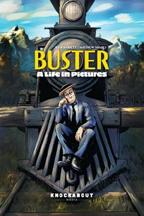
“A nuanced and surprisingly tender depiction of a movie giant and a vanished industry.”
buster
narrative splits between chronicling the day-to-day triumphs and challenges of making The Railrodder and looking back at the celebrity’s long film career. Early on, he writes, directs, and appears in the 1921 silent movie The Playhouse. Keaton’s story progresses, flashback by flashback, through all the triumphs and challenges the star experiences on the path to becoming a cinematic titan, from pausing his career in order to serve in World War I to the making of the films that cemented his reputation as the greatest comic actor of all time. Since many of Keaton’s early movie projects have a spotty preservation record at best, every flashback has the feel of captivating speculation. Barnett has obviously steeped himself in Keaton lore, and the cast of characters, from studio foils and collaborators to the various people the filmmaker has personal relationships with through the years (the author provides a handy list of the players), is intriguing. But the consistent strength of Barnett’s writing is its complex, grounded affection for the older, more disillusioned Keaton, who works with Potterton on The Railrodder. That mature Keaton is also consistently well captured by Tavares’ artwork, particularly when contrasted with the younger, anything-goes, idealistic version of the man seen in flashbacks. Through the illustrator’s artwork and Barnett’s unaffected prose, a bygone Hollywood era beautifully comes to life.
A nuanced and surprisingly tender depiction of a movie giant and a vanished industry.
Beauchemin, Sarah Bowker (374 pp.)

$13.99 paper | $7.99 e-book | Dec. 10, 2022
9798986549910
In this novel, a troubled woman finds a cryptic note and photograph among her deceased mother’s effects and travels to Italy to solve a family mystery.
Juliet Barton’s life is “tanking,” as she bluntly puts it—her husband, Matt, leaves her for another woman; she is laid off from her job; and her mother, Ellen, suddenly dies. Juliet seems to be relying heavily on alcohol and prescription drugs to navigate her emotional distress. While perusing her mother’s possessions, she discovers some things that belonged to her uncle Henry—he was estranged from the family for years and died in a car accident in Italy in 1971. Tucked within an old pack of cigarettes, she finds a photo of what appears to be a mausoleum; on a piece of paper, she finds a name—Giovanni—and an address in Rosanera, Italy. On the back of the photo is an inexplicable note: “If I don’t make it back—third tomb, lower left.” Juliet becomes convinced that the note is a plea from Henry to investigate the circumstances surrounding his death, and she impetuously travels to Rosanera to accomplish precisely this, a mad undertaking made artfully plausible by Beauchemin. The author tells two equally engrossing tales—Juliet’s quest in Italy and Henry’s remarkable life. A talented filmmaker, Henry became best friends with rock star Jim Morrison, suddenly quit film school, and spent more
than three years in Vietnam documenting the war. The plot is brimming with suspense—Juliet comes to suspect that Henry’s death was not accidental. Further, Beauchemin limns a lively account of America in the mid-20th century, a time of political radicalism and artistic experimentation as well as a reflexively traditional rejection of both. Moreover, she adroitly unravels this mesmerizing story, one in which the incredible is made to seem tantalizingly believable. This is a refreshingly original work of fiction, delightfully peculiar and unpredictable.
A bewitchingly dark tale, as emotionally engrossing as it is boldly unconventional.
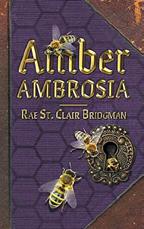
Bridgman, Rae St. Clair
FriesenPress (180 pp.)
$30.99 | $16.99 paper | $3.99 e-book
April 14, 2021
9781525585784
9781525585777 paper
In this middle-grade supernatural sequel, two students of magic experience a summer vacation brimming with mystery and villainy.
Taking a known criminal down has turned Wil Wychwood and Sophie Isidor into heroes. The 10-year-old cousins, having nearly finished their first year at a magic academy, are ready for the summer off. But it’s not long before they’re staving off boredom, even eyeing a beekeeper’s Help Wanted sign—“Besides, what else have we got to do?” Sophie asks. As it turns out, honeybees in the kids’ magical city, MiddleGate, have been getting sick. This seemingly falls in line with Sophie’s catching part of two women’s cryptic conversation in a washroom, something about “magical bees” and a supposedly defunct secret society, the Serpent’s Chain. But there’s a chance the Serpent’s Chain, with ties to the baddie the cousins thwarted, has a revival in the works. Wil and Sophie vow to help the bees; while this may put them in danger in MiddleGate, it also gives them a close-up of the insects’ tiny, fascinating world. This series installment fills the pages with mysteries. Along with the magical bees, Wil’s beloved snake, Esme, disappears, and it looks as if someone is moving into the long-vacant home in the kids’ neighborhood. Bridgman wisely sets this concisely written novel outside of the academy, where much of the preceding book unfolded. It’s fun to watch the likable, sadly friendless cousins bond and later hit it off with a couple of their peers. The memorable supporting cast features the cousins’ endearing, caregiving aunts, including Violet, who’s looking to buy a brand new (or maybe used) crystal ball from a flashy salesman. Although the story centers more on characters than magical feats, the final act takes a spell-induced turn as Wil and Sophie investigate the sickly buzzing insects.
Youthful adventures and magical touches make for an entertaining tale.
the reality meltdown
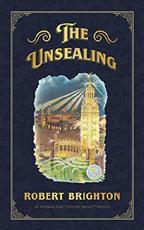
Brighton, Robert Copper Nickel Press (416 pp.)
$28.99 | $18.99 paper | Feb. 28, 2023
9798986517803
9798986517810 paper
Greed, political corruption, and lust propel this dark novel set in Buffalo, New York.
Arthur Pendle and Terence Penrose are roommates and best friends during college and law school in New Haven, Connecticut. After graduation, they travel together to Buffalo, where, in 1889, they open Pendle & Penrose, Attorneys at Law, a flourishing practice that for eight years provides both with a substantial living. Terry is the rainmaker and Arthur is the legal whiz—until 1897, when Terry is offered the position of district attorney for Erie County. As Terry’s star rises, Arthur’s solo law practice dwindles. Then Terry makes an offer Arthur cannot afford to refuse. And as Arthur’s income increases exponentially, his commitment to the righteousness of the legal profession slips into history. Back at home, Arthur’s wife, Cassie, an offspring of one of New England’s wealthiest families, has her own issues. Despite the couple’s high social standing, Cassie is emotionally insecure and uncomfortable with people. Regrettably, she has found a source of comfort—opium and a variety of other drugs of the day. Across town, in an avant-garde community known as Ashwood, are Alicia and Edward Miller. Their fraying marriage contributes to the next phase of Arthur’s ultimate downfall. Once he meets the tempting Alicia at the Ashwood Social Club (“On the dance floor, Alicia Hall Miller’s dainty feet and petite frame made her look like a ballerina, small and strong and lithe”), his enchantment with her becomes obsessive. Brighton’s gritty series opener rips off Buffalo’s elite, shiny facade during the Gilded Age. A skillful storyteller, the author mixes sardonic commentary and well-scripted dialogue to control a plotline in which the primary characters become inexorably trapped by their own greatest weaknesses. Lead protagonist Arthur is the most fully developed. Readers are drawn step by step through the moral deterioration of a man driven to reckless decisions by arrogance, a craving for wealth, and a passion for Alicia. Unfortunately, Cassie, potentially a complex character, is only minimally explored. There are no heroes here, although there are a few survivors. And after all the emotional turmoil, jealously, violence, and broken lives, the riveting narrative ends with a humorous, intriguing wink to readers.
An addictive page-turner with rich historical details and vivid, flawed characters.

$29.99 | $16.99 paper | $8.99 e-book
April 13, 2023
9781940317151
9781940317168 paper
An SF novel explores the infinite possibilities of sentience when an inventor of educational toys realizes that the inanimate objects in his life are talking to him.
Matthew Beren’s difficulties begin with an obsession with his wife Sofia’s latest painting, Outset, which depicts “a world muted into a bleak, powdered void.” His fascination with the artwork leads him to try to interfere with its sale and then to wander dazedly into traffic, causing a chaotic accident. Matthew’s strong reaction to the painting also sparks an even stranger phenomenon—his possessions begin to whisper to him, causing him to muse to Sofia: “What if objects are more than we think they are?” Matthew has achieved success and wealth manufacturing Melds, “caricature figures that turn into stretchable, shapeable slime when you heat them,” but his livelihood is soon at risk when he is caught on videotape talking to his products. Though at first reluctant to confirm his perceptions, Sofia finally concedes what Matthew has begun to suspect—“Our stuff is alive”—stunning him with the extraordinary statement, “Human, object, there’s no difference. They’re just stages of an overall life experience.” Going even further, she confides: “Some of them are trying to kill me.” Matthew quickly learns that he is unwittingly embroiled in an existential struggle in which most matter is working in collaboration with humans, while a small but powerful element, dubbed “Leopards” by Sofia and her relatives, is “fed-up with the way people…act as if elements are an unlimited, unthinking resource” and fighting back. Through Matthew’s amiably dumbfounded perspective, Cray weaves a quirky and engrossing tale centered on no less a theme than the nature of consciousness and the place of humanity in the totality of existence. This cerebral thesis is enlivened with action and suspense to rival any space opera, for example, in scenes such as the one in which Matthew and Sofia race to escape a home crumbling from the Leopards’ ire only to find the very pebbles on the roadway rising up to stop them. The complex realm of the conscious objects is vividly imagined, and the loving relationship between Matthew and Sofia provides a reassuring anchor in a world in turmoil.
A deceptively deep investigation of human entitlement couched in a rollicking supernatural horror story.
“A deceptively deep investigation of human entitlement couched in a rollicking supernatural horror story.”
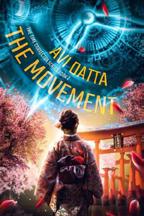
Datta, Avi Bublish (504 pp.)
$14.99 paper | $4.99 e-book | Feb. 1, 2023
9781647046293
A celebrity entrepreneur and inventor in the near future confronts a masked enemy, time-travel paradoxes, and historical rewrites in Datta’s sequel to The Winding (2021).
This series installment begins years after the first, focusing again on 21st-century celebrity Vincent Abajian, a scientific genius whose Quantum World company leads the planet in technological progress. He has a secret, genetic “time corrector” ability that allows him to enter a time/space warp called “the core” and shape the past, present, and future. In the world of the novel, “time turbulence” storms occasionally strike, and one such disaster robbed Vincent of his 1990s boarding school love, musician Akane. In the previous book, Vince rediscovered temporary bliss with an alternate version of Akane named Emika, but the relationship soured; Emika was pregnant, but Vince, whose memory was later wiped, isn’t currently aware of this. The longlost Akane returns to his life, but Vincent’s idyll is interrupted by lingering memories of Emika and her baby. Meanwhile, Quantum World is introducing new mind-data interface helmets that promise a treatment for Alzheimer’s disease and downloadable access to many skills. In addition, masked marauder/hacker Vandal starts launching attacks against Vincent and his loved ones. Datta offers a book that’s most likely to appeal to attentive fans of the first series installment. For example, he further complicates the already complex nonlinear structure of The Winding, with the plot unfolding via multiple first-person perspectives in multiple timelines, sometimes recapping the same incidents from different points of view. Numerous footnotes attempt to clarify points or highlight foreshadowing in the last book, but newcomers may still find this volume very difficult to follow. In a preface, the author explains that a sojourn in Japan heavily influenced the material here, and, indeed, readers will find that the work has a very strong anime flavor, with mecha combat suits, Japanese dialogue (partially translated), unresolvable romantic sentiments, and moments of mysticism (the titan Chronos and his rebellious Greek god-children have stakes in the proceedings). Finally, an open ending offers a revelation of a not-so-surprising master villain.
A highly complex middle-chapter installment of an intricate SF/fantasy that requires sharp attention.
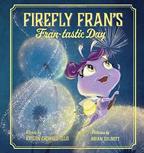
Ellis, Kristin Crowell
Illus. by Brian Talbott
Mascot Kids (48 pp.)
$22.95 | March 7, 2023
9781684018086
Ellis’ charming debut picture book, written in rhyming couplets, tells a story of how fireflies discover their light.
It all begins on a stormy night, during which the first fireflies discover their inner glow after being struck by lightning. As the cloudburst dissipates, their lights begin to fade, but Firefly Fran still shines bright and is delighted at how she “sparkle[s] with pizazz.” She tries to raise her fellow fireflies’ spirits with positivity and uplifting words, but they refuse to listen, which makes her sad. When Fran is captured by human children, her wing tears and she can’t fly. In her jar, Fran meets a spider in despair because her web has been destroyed. Working together, the spider and the firefly help fix each other’s problems. Fran flies to what she thinks is “Thunder Thicket,” but is actually Watts Way, and witnesses an amazing spectacle of light as other fireflies find their inner lights again. They learn that lightning doesn’t give them their light: “It’s JOY that makes us glow!” Over the course of this illustrated book, Ellis presents a delightful tale that will entertain young readers. The rhyming pattern’s predictability will assist lap readers, and the colorful descriptive language will provide new terms (“while lolling in the dusky dark”; “a shimmer over soft green grass”). Talbott’s illustrations are consistently engaging, full of light, and filled with fantasy as they follow Fran on her adventures. The human characters are portrayed with a range of skin tones; the fireflies have big eyes and expressive, cartoonish features. The artist also effectively makes the lightning shine and fireflies sparkle.
An uplifting, well-illustrated adventure full of whimsy and joy.
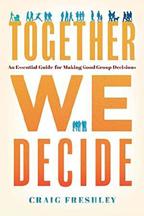
Freshley, Craig
Greenleaf Book Group Press (304 pp.) $22.44 | $9.99 e-book | Sept. 13, 2022 978-1-62634-950-6
A book aimed at leaders, managers, board members, politicians, activists, or anyone in a group who feels frustrated with its decision-making processes.
According to professional meeting facilitator, speaker, and author Freshley, “Big problems are never—and never have been—solved by individuals.” Yet collective decision-making often fails, which, the author asserts, could even put humankind’s future existence in jeopardy, as in the case of climate change. The good news, he asserts, is that facilitating useful
group decisions is a skill that can be learned, and this book aims to teach it. It’s packed with a wealth of inspiring ideas and practical information, taking readers step by step through methods to create good decisions, including five critical attitudes, specific practices and procedures, and ways to surmount disagreements. Relatable real-world examples from the author’s own experiences as a group member and facilitator enhance the discussion, including successes and stumbles in employeemanagement conflict, bridging political differences, and building a cohousing community. Freshley makes a strong case for the value of inclusivity and provides specific actions aimed at fostering a culture in which every group member feels welcome and heard. To that end, he advocates collaboration, consensusbuilding, and establishing clear and transparent procedures, among other strategies. On the other hand, he contends that competition-based decision-making is a bad way to handle disputes and causes “a lot of collateral damage.” The book’s tone is direct and personal, with clear explanations and apt metaphors. Throughout, the author examines group dynamics thoughtfully and considers key ideas from different angles. Charts, sidebars, and boxed “Insight” sections help clarify and amplify core concepts. This book provides know-how that organizations, businesses, and communities may find empowering and offers hope that people can successfully address major challenges of the era by working together: “It’s not us versus them, it’s just us.”
A thorough and friendly guide to why group decisions matter.
Genzano, Jim Self (131 pp.)

$14.14 | $6.10 paper | $3.99 e-book
June 28, 2022
9798827037095
9798361674664 paper
Evil forces close in on a young hero in this fourth installment of a middle-grade fantasy series.
After several adventures using magical Doors, 11-year-old Hunter Wilson needs advice. He explains his far-fetched life outside of school to his classmates Gertrude Clemmons and David Kim. But Hunter presents the scenarios as a story that he’s working on, featuring a hero named Chase. He primarily wants to know if he can trust his companion Murphy, who is a giant growff (dog), in his struggle against the Dark Child. When his friends fail to ease his mind, Hunter contemplates opening another Door. He creates spells to use with the wand that can be summoned from his bag, but his limited magical skills can’t reopen the first Door in the hollow tree near the school. Then, on Thanksgiving at his grandparents’ country home, the opportunity to search for more Doors presents itself. But in another realm, the Puzzle Piece Man watches. He’s been guiding Hunter and manipulating events to suit his own design. Meanwhile, the Dark Child sends Esthuan Thievesbane and her werewolf army to intercept Hunter. Will the hero, whom the Puzzle Piece Man
calls “dangerous and unpredictable,” reach the enigmatic Collector for the next magical item? Genzano’s Stranger World novels deliver an appropriate length and content for middlegrade readers new to fantasies, and the latest is no exception. Fans learn the fate of Murphy and meet the enjoyably odd Aloysius Stentorious Greel, or the Collector, in his mansion. Clever notions abound, including furniture with “drawers that sang” and some “that held different items depending on when or how you opened them.” Once more, the stakes rise incrementally as Hunter learns that the Elder Folk are waging a war over him (“They’ll sit still for millennia, then tumble down all at once like an avalanche!”). Despite the saga’s engaging plot—and the fact that Hunter has saved Esthuan’s life—there’s great emotional potential in matching up characters more creatively, such as Gertrude and David meeting Murphy. Nevertheless, the series continues to flower as a narrative payoff remains on the horizon.
A quirky and compact fantasy saga that will lure new fans to the genre.

(389 pp.)
$15.99 paper | $9.99 e-book | June 25, 2022
9798837056529
In this thriller, a British soldier–turnedoperative finds his world upended when his nephew is killed by a CIA agent’s wife, who flees to escape the consequences.
This series opener begins with two crosscutting events: British secret agent Toby Miller takes out a bomb maker in an unnamed country, and Madyson Lutz, distracted and driving on the wrong side of the road, runs over a teen cyclist. The accident happens near the British base where Madyson’s CIA agent husband has been working. The fates of these characters soon intertwine since the cyclist, who dies from his injuries, is Toby’s nephew. Madyson’s husband hustles his wife back to the United States, angry that she has messed up his career but claiming diplomatic immunity for the incident. Toby is told the news by his bosses, ordered to take a break at his former British army barracks, and watched regarding his mental state and potential for vigilantism (“Miller’s a bloody potent weapon, Her Majesty’s Armed Forces saw to that, and now we’ve given him more training, more responsibility, more deadly skills. He’s capable of a lot”). Lucy Bell, the policewoman who arrived at the accident scene, is part of the team sent to interview Madyson, although officials imply that extradition is unlikely. Once this proves to be the case, Toby, whose sister and brother-in-law are suffering greatly from grief, travels to the U.S. to kill Madyson. But the situation turns out to be not at all what Toby expects. Green’s thriller has an intriguing inciting incident, prompting its core characters to create and rally around a “4DC,” or For Diplomatic Change, movement. The book’s midsection gets bogged down a bit with conversations among various officials who are ultimately minor characters. But overall, the story is a well-paced page-turner
planes, trains, and all the feels
driving readers to its dramatic meeting between Toby and Madyson. Toby is also an appealing series protagonist, with his tough-guy persona leavened by both humorous and emotional interactions with family and others.
An engaging tale highlighting the tensions of diplomatic immunity and introducing a surprisingly endearing hero.
Halleway, Seth Self (322 pp.)
$13.99 paper | $2.99 e-book | Feb. 16, 2022
97918416896027
In this novel, a retiring ruler—searching for a successor—must choose between two candidates from opposing families.
Diyavid Chùto is the 18-year-old heir to an important, legendary family in Shentonia, whose farmlands supply a large portion of produce to the empire. He also has his eye on the throne, aiming to become the successor to a ruler whose reign is coming to an end. His plan for the future of the empire includes an end to injustice and prejudice. His cunning strategy to get ahead of his main competitor is to remind the empire of an old, epic alliance between his family and the fabled Feni warriors, dating back to the Holy Wars. Together, they defeated the old gods by securing the support of one of them: the powerful warrior woman Shàli. Diyavid’s main rival for the throne is Yèmeni Gasadon. Yèmeni’s contribution to the empire is less agrarian and more aggressive: fighting and exterminating the very rebels Diyavid wishes to bring into the fold. As Diyavid and his entourage travel to the seat of power, they are thrown into a hitherto unknown world of political intrigue, assassinations, betrayals, and corruption, and they end up on the run. Halleway’s series opener mixes elements of SF (spaceships, advanced weapons) and fantasy (imaginative worldbuilding, gods) to tell a story about tradition, history, and myth. At one point, a border guard tells Diyavid: “You have to think about how history is going to remember this moment, and the part we played in it.…We’re the ones making the history, boy. We’ll be the ones deciding who the heroes and villains are here.” The details of the world come across beautifully without any dull exposition, with its complexity revealed to readers slowly, rewarding those who patiently sit through bits of an entirely new language that starts to make sense as the story progresses. Unexpected twists and well-developed characters as well as engrossing and often entertaining dialogue make this a worthy read.
A well-rounded and engaging series opener that blends SF and fantasy.
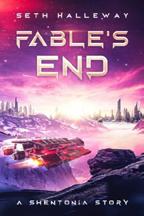
Hart, Livy
Entangled: Amara (352 pp.)
$16.99 paper | $7.99 e-book | May 23, 2023 9781649373922
A series of mishaps unite two unlikely travel companions in this contemporary romance.

Cassidy Bliss is desperate to catch a flight from North Carolina to Los Angeles so she can help her sister, Isabelle, have the wedding of her dreams. The flight schedule is tight, and if Cassidy misses the plane, she risks the disapproval of their mother, Francesca. Just as she reaches the airport, her plan is nearly thwarted by a man who manages to steal her parking place and leave her stranded in the parking garage. That man, Luke Carlisle, works hard to support his unstable mother; his sister, Sophie; and his nieces in Southern California. When Sophie stops answering his questions about their mother, he decides it’s time to visit his family. The last thing he needs is an energetic, redheaded woman accusing him of stealing her parking space. When their plane makes an emergency landing in Joplin, Missouri, and Luke gets the last rental car, he impulsively asks Cassidy to share the drive. As they experience a car fire, train delays, and a drive through the desert, a connection develops between the pair that slowly turns romantic. As they approach their destination and more difficulties pile up, Cassidy and Luke wonder if it may be time to pursue their own happiness. Hart’s latest romance is a spirited, romantic update on the classic John Hughes–penned comedy film Planes, Trains and Automobiles (1987), featuring endearing protagonists, humorous detours, and plenty of heat. Luke and Cassidy are amiable characters whose rapport and romantic chemistry are consistently believable. In chapters that alternate between Cassidy’s and Luke’s perspectives, Hart deftly lays the foundation for their attraction and limns the family complications that keep them from acting on their feelings. Luke is revealed to be an avid cosplayer, and Hart frequently references his genre-fiction fandom (“Her insistence on getting closer to a burning, explosion-risk of a car is about to become my villain origin story”). Isabelle, Cassidy’s sister who has serious reservations about her pending nuptials, is also a well-drawn character.
A fun and heartfelt riff on an endearing ’80s comedy plot.
 Harwin, Dale
Trans. by Kate Oden Self (402 pp.)
Harwin, Dale
Trans. by Kate Oden Self (402 pp.)
$14.99 paper | $2.99 e-book | Nov. 18, 2022 9798363874710
A globe-hopping SF novel chronicles the unforeseen consequences of the creation of a unique artificial intelligence. Set largely in the present day, the narrative revolves around William Ell, an unassuming mathematics professor who just lost his father in a tragic hit-and-run accident in Hamburg, Germany. Ell, who had never been close to his high-tech entrepreneur father, discovers that he knew very little about the man’s business dealings. Not only did his father oversee a top-secret research facility in Southwest Arizona that housed a supercomputer and controlled a multimillion-dollar satellite system, he also left Ell a “gold pocket watch, a little black book containing some sort of numerical code, and an unbelievably large green diamond” in a safe-deposit box in Zurich. When Ell tries to find connections between the massive gem and the supercomputer, he learns that his father was, in fact, murdered and that he has now become a target. The gem, it seems, contains advanced tech that—once fully utilized—could either save the world or destroy it, depending on whose hands it winds up in. With the FBI and an unknown international crime organization after both him and the “big as hell” diamond, Ell sets out to find his father’s killer and uncover the mystery inside the gem. But what he and his misfit crew of colleagues discover shatters the very foundations of reality. In this series opener translated from the German by Oden, Harwin’s insightful exploration of various science-based speculations is an obvious strength. They include quantum-based AI and interfaces between the human brain and the computational core of an AI. But the real power here is in how the pseudonymous author twists together mind-boggling scientific theories with deeply developed and emotionally captivating characters. Ell, senior programmer Trina Shaw, London auction house appraiser Chang Feng Zhao, and FBI agent Gray all have compelling story arcs that make for an undeniably page-turning read.
Razor-sharp writing and mind-blowing scientific conceptualization make this a top-notch, Crichton-esque thriller.
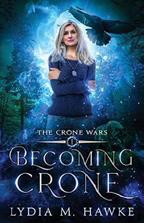
Hawke, Lydia M. Michem Publishing (244 pp.)
$12.99 paper | June 17, 2021
9781989457085
Hawke offers an urban fantasy tale told from the uncommon perspective of a divorced grandmother.
On her 60th birthday, Claire Emerson receives a seemingly innocuous gift
from her grandchild: a magnifying pendant that turns out to have magical powers. In the year since her husband left her for a younger woman, Claire’s life has stagnated, much to the chagrin of her best friend and neighbor, Edie James. Her other neighbors, Jeanne and Gilbert, and her son, Paul; daughter-in-law, Natalie; and grandson, Braden, are the only other people in her life. At Claire’s birthday party, she wishes only for a purpose—and the next day, she learns that she’s the latest in a line of elemental witches called Crone who are allied with the goddess Morrigan in an endless battle with the demon god Morok. In order to stop Morok from ending the world, Claire must learn to use her magic, fight Morok’s shades and gnomes, and find all the other Crones. Along the way, she meets her allies in the fight: a gargoyle named Keven; an immortal wolf-shifter, Lucan; and a group of “midwitches,” including police officer Kate Abraham. The enthusiasm with which this novel embraces urban fantasy tropes works well, as it adapts it to fit a protagonist who’s quite a bit older than most in the genre. It adheres to urban-fantasy norms but also pokes some fun at them. For example, the stoic, gray-haired, and muscular protector’s age offers an amusing counterpoint to the typical love interests in the genre; although he looks younger than Claire, he’s hundreds of years older than her. The writing is clever throughout, occasionally making use of extended similes: “My mind skipped from one thing to another like a little metal ball in a pinball machine, changing direction with dizzying speed and careening off metaphorical barriers and bumpers as it set off lights and bells and—I exhaled a long, slow, shaky breath.”
A genre-savvy adventure with excitingly unusual age representation.
Horvitz, Lori
New Meridian Arts (230 pp.)
Feb. 15, 2023
9798985965926
Chilly family dynamics, giddy lesbian romances, and plangent regrets animate these heartfelt essays.
Horvitz, a University of North Carolina English professor, follows up The Girls of Usually (2015) with another set of short memoiristic pieces. Undergirding it are several glimpses of her mysteriously distant mother; in the title piece, Horvitz tells of traveling through Europe in her early 20s and calling home collect to Long Island from Norway only to have her mother brusquely refuse to accept the call. Things improve only slightly in “Unlimited Minutes,” in which Horvitz’s stepmother responded to a Mother’s Day call with brief thanks and then immediately hung up. Other essays recount Horvitz’s fitful exploration of her lesbian identity. In one, her encounter with a picture of kidnapped heir and bank robber Patty Hearst sporting a beret and a rifle

inspired inchoate desires; in another, she recalls a grad school tutorial with Beat poet Allen Ginsberg, eulogizing his bravery as a pioneering champion of queer sexuality and his encouragement of her own journey. Many pieces are devoted to Horvitz’s difficult affairs, often with women who weren’t fully available because of geography, age, politics, or commitment issues, such as a veterinarian with three kids who lived across the country and refused to stop seeing other lovers. (The author eventually recognizes her own role in seeking out impossible liaisons and sets her sights on a more promising relationship.) Over the course of this book, Horvitz’s writing mixes sly humor with pathos and an eye for the nuances and pitfalls of human connection. Her prose is always precise, concrete, and evocative, whether she’s hymning the thrill of love with a younger woman—“it felt like porn when she flipped her leg onto mine, and we shared an apple cider froufrou drink”—or elegizing its wistful end: “She put her car in drive, waved one last time, and stepped back into her life, and I into mine, a chorus of leaf blowers blasting in the distance.” The result is a consistently beguiling read.
A scintillating collection, full of subtle wit and passionate yearning.
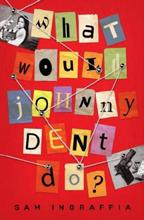
Ingraffia, Sam Blue Telescope Publishing (245 pp.)
$6.99 paper | $2.99 e-book | Oct. 25, 2022
9798359140836
In this novel, an author-turnedscreenwriter’s search for a missing actor is one for the books.
Not for nothing does Charlie McGinley love the Preston Sturges comedy Sullivan’s Travels. Like the film’s fictional director who no longer wishes to make frivolous comedies, McGinley wants to wash his hands of Johnny Dent, the phenomenally popular literary detective he created and on whose book sales he relies to take care of three ex-wives. Does he have the Great American Novel in him? The jury is out. Until then, he is racked with writer’s block on his seventh Dent mystery, which his publisher eagerly awaits. But life imitates art when McGinley, hired to adapt his recent book for the movies, is drawn into a mystery that sounds like the plot of one of his novels. The film’s star has vanished after clashing with the director. The star’s wife, a beautiful but faded actor who just happens to be McGinley’s former fiancee, is a prime suspect. She wants his help, much to the increasing displeasure of McGinley’s current wife. He assures his wife that he is only going to ask a few questions. “You know how people usually react when you ask questions?” she responds. “They have a tendency to pull guns and try to shoot you.” Indeed, Ben, the ghost of a Navajo shaman with whom McGinley commiserates, warns him: “Bad things are about to start happening, and you’re gonna be right in the middle of ’em.”
Ingraffia’s second McGinley mystery is a brisk and breezy read. It could be sharper in its wit and menace, but McGinley is an eminently likable protagonist with a lot of baggage, including his Native American mother, an 18-year-old runaway who abandoned him when he was young (“He would have loved to talk to her about her decision, but she died of a drug overdose when she was nineteen”). Still, Ben may be a bridge too far for readers who resist digressions into magical realism.
An amusing mystery with enough genuine peril to keep readers intrigued.
King, Michael P.
Blurred Lines Press (178 pp.)
$10.99 paper | $4.99 e-book | Nov. 1, 2022 9781952711138
In this novel, a National Defense Agency operative races to pull the plug on a team of hackers extorting power plants.

“Computer geek” Ronny Wolstein is in deep debt to Presser, who finances his scams. That means he’s got a problem. But he also has a solution: installing ransomware in several hydroelectric power plants, which will cause catastrophic destruction until the powers that be meet his payment demands. He works with two former high school “besties” who are in as dire financial straits as he is. Engineering guru David Owens’ daughter requires expensive medical treatments. Shirley Chen, providing security, is a “horribly disfigured” veteran. The money from Wolstein’s plan will pay for her plastic surgery. The trio preys on unwilling accomplices who are as vulnerable as they are, such as Kenneth Cramer, a plant worker with a gambling problem that causes him to be delinquent on his child support payments, threatening his visitation privileges. After two devastating ransomware attacks, Capt. KD Thorne of the National Defense Agency and her partner, Warrant Officer Jeffrey Blunt, are brought in to stop the hackers. Thorne carries baggage of a different type, but it’s no less burdensome. She struggles to reconcile “the stupid things she’d done after her husband had left her.” Though the two appear to be in “a good place,” they are still divorced. This is the third Thorne procedural (as in the grand Columbo tradition, readers are clued in to Wolstein and company’s doings and follow anxiously as Thorne and Blunt get ever closer to him and Presser). Generic title aside, this novel is a briskly enjoyable read. Chen’s character is particularly well written and psychologically attuned. She is desperate to “fit in” and not be “a freak show who could only attract pervs who wanted to kiss her scars while they fucked her or take her from behind so they wouldn’t have to look at her.” Series fans invested in Thorne’s fraught relationship with her ex-husband will welcome progress on that front. In addition, King deftly builds anticipation for a fourth volume.
The author ups the ante in this entertaining thriller series outing starring a troubled hero.
“A briskly enjoyable read.”
the hunt for the ransomware hackers
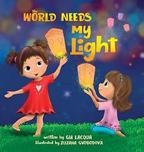 by Zuzana Svobodová
Elivate (34 pp.)
by Zuzana Svobodová
Elivate (34 pp.)
$18.99 | $6.99 e-book | Dec. 10, 2022
9798218099985
A collection of poetry for children explores self-worth.
This picture book featuring eight poems takes a kid’s-eye view of the world, emphasizing the importance of making mistakes as part of the growing process, being kind, and facing life with bravery and enthusiasm. Beginning with a poem about believing in yourself, the collection continues with ideas about getting better each day, sharing kindness and embracing differences, listening to your feelings, leading by knowing when to ask for help, standing up for what’s right and aiding others, and embracing your uniqueness. The overwhelming positivity of each poem makes this volume a good choice for young readers to speak aloud, instilling self-confidence with phrases like “Wherever I go, I blaze a new trail. / I believe in possibilities, even if I might fail.” The author and the illustrator use characters from previous entries in the Limitless Little Leaders series, including Lovey Livy Lu (2022) and Coco Courageous (2022). Though the names are never given here, the pictured characters serve as a nice connection to the earlier books and may intrigue readers new to the series to look up those adventures. Svobodová’s soft-edged digital art is full of bright colors and kid-friendly action, with a cast of diverse children. Lacqua’s rhymes are solid throughout, and though some phrases in the scansion are shorter than others, each poem lends itself well to sharing with parents.
Positive, inviting, and encouraging poems for young readers.
Lombardi, Chris

Mumblers Press (508 pp.)
$22.95 paper | $7.99 e-book | Dec. 14, 2022
9781736244470
A graduate student descends into madness while contemplating the relationship between the celebrated novelist James Joyce and his daughter in this labyrinthine literary mystery.
Lombardi’s novel centers on a woman who lands in a Baltimore mental hospital in 1993, where she responds to questions with enigmatic quotations from Shakespeare, T.S. Eliot, Virginia Woolf, and Joyce. She is diagnosed with schizophrenia and identified as Molly O’Donnell, a graduate student at Johns Hopkins University—hence the compulsive literary allusions—and the daughter of deceased Joyce scholar Will O’Donnell. Family, friends, and staffers try to coax her out of her psychosis but with little success. When she’s not in a medicated stupor, she’s acting out by starting fires or trying to seduce a male nurse. Interspersed with Molly’s travails
in the psych ward are diary entries she wrote before her psychotic break. These cover her affairs with a married professor and a concert violinist; her vexed relationships with her alcoholic mother, domineering brother, and fragile sister; and her dissertation on the similarities between Joyce’s famously incoherent novel Finnegans Wake and the language used by schizophrenics. Her research zeroes in on Joyce’s daughter, Lucia, a schizophrenic whose symptoms mirror those Molly will display in the hospital. She theorizes that the woman’s disjointed utterances inspired Finnegans Wake and starts seeing apparitions of a derelict Lucia. Molly eventually plunges into sinister conjectures about Joyce’s relationship with his daughter, which start to color her memories of Will. Lombardi’s sprawling novel is an intense, well-observed portrait of a psychiatric patient and the obsessions that slowly undermine her sanity; an engrossing picture of literary sleuthing; a cri de coeur against intimate predations; and a moving depiction of a family torn by ugly secrets. The author’s prose has a vivid immediacy, whether she’s registering intense emotion—“How can you breathe when your lungs keep collapsing on you, like the emphysema of some fivepack-a-day smoker?” wonders Molly after a lover blithely dumps her—or a reflective lyricism. (A patient “walked alongside Molly, speaking softly to her; as they passed under the weeping willow trees Molly’s face was childlike, upturned, her slow movements for once acquiring something resembling grace.”) The result is a very Joycean exploration of a troubled psyche revealed in evocative prose.
A richly textured and deeply felt tale of life and tragedy turned into art.
Dotty Morgan Supernatural
Sleuth: Book 1
Martin, Erik Christopher
In A Bind Books (232 pp.)
$0.99 e-book | March 17, 2023
In this middle-grade supernatural novel, a tween vows to pull the plug on a ghostly thief’s crime spree in her North Carolina town.
Eleven-year-old Dotty Morgan is a self-proclaimed “supernatural sleuth.” Two years ago, she spotted but failed to catch a gnome stealing fabric from her mom’s sewing room. Now, Dotty investigates any crime with a hint of the supernatural. And when she determines there’s no tangible explanation for why french fries vanished from her oven at home, she’s on the hunt for a spectral larcenist. Sure enough, potato products disappear from stores and restaurants all over town. Dotty has her alarm clock–turned-Arcanometer to detect phantoms, along with helpful pals—her fashion-savvy best friend, Parker Pose, and the new girl at school, wrestler Hannah Matson. Well-read Dotty puts together some spells to draw in and banish the phantom so that she can once again savor her cherished french fries. But she may be after a human suspect as well—a nefarious,
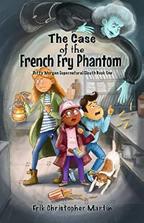
formidable individual who summoned this ghostly burglar in the first place. Martin’s adolescent protagonist is endearingly odd. She dons a baseball cap lined with tinfoil (protection from mind control) and webcasts her detective exploits (“I’m staking out Mr. Tanner’s yard, investigating reoccurring instances of mysterious vandalism”). Dotty often finds herself immersed in absorbing, more realistic subplots, from school bullies to her mom’s new health kick subjecting her to such atrocities as sugar-, gluten-, and dairy-free pancakes that taste like Styrofoam. A supernatural element slowly creeps into the swiftly paced, enjoyable narrative, which includes a gratifying finalact payoff and an understated romance between Dotty and Hannah. Sadly, there’s not much sleuthing. Dotty relies on her Arcanometer to track down the apparition and doesn’t gather many clues, designating suspects based on a general wariness. Still, as this book launches a series, there should be copious future opportunities for her to shine.
An engaging paranormal romp with a quirky and witty young hero.
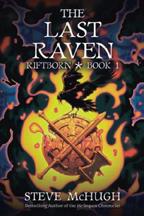
McHugh, Steve
Podium Publishing (280 pp.)
$16.99 paper | $4.99 e-book | Oct. 24, 2022
9781039415010
A man with superpowers hunts the people killing others of his kind in this series-launching urban fantasy novel.
Lucas Rurik is one of the riftborn. A tear between Earth’s dimension and another called the rift emanates energy that healed a great many people who were near death and granted them extraordinary abilities. Lucas, however, is unable to use his at the moment due to the fact that he hasn’t done so in months. While keeping a low profile in New York City, he gets news from his friend Isaac Gordon of the Rift-Crime Unit, where Lucas had once consulted. Evidently, “fiends” (animals touched by the rift’s energy) have slaughtered several RCU and FBI agents. Isaac asks Lucas to look into it, and he discovers that vicious creatures likely killed the agents under someone’s orders. This situation has ties to Lucas’ past; he’s the only surviving member of the ambushed Raven Guild—one of a handful of Guilds that hunted the most powerful people who are “rift-fused” like him. His investigation in New York stirs up terrible memories once it involves Dr. Callie Mitchell; Lucas witnessed firsthand her horrid experiments on rift-fused people at a prison-turned-asylum near Newfoundland. He fights to bring down the killers while keeping himself and his friends alive. McHugh packs this opening installment with plenty of exposition. There are, for example, extended scenes at the asylum and in the embers (a “personal pocket dimension” that riftborn can access to heal) along with glimpses of Lucas’ delightfully complex history. This has the effect of sidelining the easily resolved murder mystery, but the novel still delivers unpredictable turns as well as a full-bodied cast of
likable allies and savage villains. These include several different kinds of revenants, who are akin to riftborn but were dead before the rift’s power revived them; one can grow “huge spines all over his body and [use] them for both defensive and offensive purposes.” McHugh’s pithy prose energizes the narrative, even when there’s no superpower on display, and builds intrigue with gradual reveals of Lucas’ rift-derived skills and backstory. This slick introductory supernatural tale will leave readers eager for a sequel.

Meierz, Christie Self (307 pp.)
$13.99 paper | $3.99 e-book | Jan. 5, 2023 9798357741530
A trade officer navigates the tensions between his remote outpost and the rest of the galaxy in Meierz’s second SF novel in a series.
Albert St. John Rembrandt, Bertie to his friends, is the youngest son of the Duke of New Norfolk and scion to a pharmaceutical fortune back on his home planet of Britannia. He’s also the stationmaster at the orbital trade station above the planet Tolar—a world that recently emerged from millennia of isolation to sell its red dye and opals to merchants from the Interstellar Trade Alliance. He’s already made friends with the ruler of the planet’s equatorial Monralar province, a nameless man known only as the Monral. When two emissaries from Earth arrive, requesting to visit Monralar, Bertie sees it as an opportunity to get away from his station for a few days and visit with the Monral and his 5-yearold daughter, Farryneth. He soon realizes, however, that the emissaries are members of the Di Fata Johnson family—longtime rivals of the Rembrandts who’ve come looking for Laura, a relative who defected to Tolar decades ago (she happens to be someone whom Bertie knows well). It also turns out that the Johnsons are interested in acquiring and replicating a rejuvenating Tolari elixir, known as “Jorann’s blessing,” which prolongs youth and grants empathetic powers. Every human who lives on Tolar has taken it except for Bertie, who fears bonding himself to the Tolari. He’s torn between his wish to protect Tolar from outside exploitation and his desire to get in the good graces of his family, who also wish to profit off the blessing.
Over the course of this outer-space tale, Meierz offers readers vividly descriptive prose; it’s a fun mix of futuristic invention and digs at aspects of Earth society, as when Bertie considers the two Johnson guests from his home world: “He stifled a grin at the thought of these gentlemen living for several days with the crew of the Kekrax trade ship they’d taken to get here. As citizens of the Commonwealth of Boston, a bastion of Earth prudery, they had likely been utterly mortified by the indignities and embarrassments inflicted on them by the inquisitive little reptilians.” The multilingual, tea-loving Bertie proves to be a pleasantly idiosyncratic protagonist, and readers will find that getting to know the ways in which
“An immersive, layered, and extensively developed space opera.”
rembrandt’s station
he operates is one of the novel’s greatest pleasures. There is also plenty of Dune -style space diplomacy—rival houses, trade disputes, and so on—to please diehard SF/fantasy fans, but beneath this veneer, the author tells a simple story of exile, the meaning of home, and the creation of a chosen family. The book is the fifth that Meierz has set in this fictional world and the second in the Exiles of the Drift series, and as a result, there’s a lot of mythology to catch up on. However, readers who are already familiar with this milieu will appreciate this thoughtful, often emotional contribution. An immersive, layered, and extensively developed space opera.
Ellie & Co Book Series: Book 2
Miao, Lee Y. Clear Fork Publishing (276 pp.)
$13.99 paper | $7.99 e-book | Feb. 21, 2023
9781950169849
A sixth grader investigates her mysterious connection to a 16th-century painting.
In this appealing, well-crafted novel for middle school readers, 12-year-old Caterina, living in Los Angeles, is an ace softball player and self-proclaimed history nerd of Italian descent. On a museum visit, Cat is intrigued by the Italian Renaissance painting Portrait of a Lady With a Unicorn by Raphael, on loan from Rome’s Borghese Gallery. Relating to what she sees in the unknown Lady’s eyes, “gazing straight at me like she’s got something to say,” Cat finds that her curiosity is kindled further by museum visitors’ stares because of her resemblance to the work’s subject. Cat’s determination to uncover all she can about the painting and her enigmatic link to the work eventually takes her to Rome. There, through her great-aunt, she learns of a family legend that just might solve the mystery. Miao deftly weaves together historical facts about the painting and the experiences of women of the period into a narrative about a sixth grade girl’s life at school and at home that will resonate with many readers. Cat’s love for history comes through with credible enthusiasm, as much a part of her as her prowess in softball, empathy for others, public speaking shyness, feelings for a secret crush, and antipathy toward a perceived rival. She also remains exasperated by her annoying older sister, her mother’s absence due to work, and her father’s obsession with healthy eating and his SUV. The author creates a believable path for Cat to pursue her interest in the painting by putting her research in the context of the maternal Italian side of her family and a school “Renaissance History and Art Project.” That’s RHAP for short, according to Cat’s best friend, Ellie, featured in the author’s debut middle-grade novel, Wei To Go! (2022), the first installment of Miao’s Ellie & Co series. But the author has more in mind than the answer to a mystery in this sequel, tracing Cat’s growth naturally through her art and Rome experiences as she learns things about herself and connects with her own family. This captivating tale delivers a relatable tween hero, suspense, and an infectious sense of discovery.
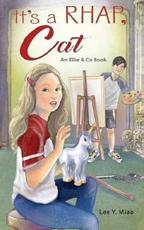
Morris, Victor R.
Illus. by Marcie Caddell
Tactical 16 (42 pp.)
$17.99 paper | June 27, 2022
9781943226665
With help from her science class and big sister, a girl experiences a vivid dream about Mars colonization in this debut SF picture book.

Marsi really likes Mars, but the biracial girl is not sure that she wants to live there. She certainly wouldn’t want to leave her dog, Marshmallow, behind. While her parents assure her that canines have ventured into space before, Marsi’s not convinced. Her older sister, Marsha, is eager to talk more about the planets, creating a model of the solar system from balls in the backyard. That night, Marsha tells her sister a story, which leads to a dream in which Marsi wakes up on Mars. Though she’s scared at first, Marsi soon realizes that exploring the planet is her chance to be brave and try something new. After encountering a helicopter modeled after the Mars helicopter Ingenuity, Marsi discovers she’s not the only human on Mars after all. There’s a domed city, where Marsha and all of Marsi’s science class friends await. Through Marsi’s dream and her exploration of the red planet, Morris introduces facts about Mars as well as ideas about what it might be like for scientists and astronauts who travel there. In her dream, Marsi sees vegetables growing from the regolith soil. After she wakes up, she discusses the need for safe structures to protect against radiation and the cold so crops can grow. Alongside Marsi’s story, the author includes small text boxes of facts about Mars, sometimes lengthy but occasionally as short as “One Martian day is called a ‘sol.’ ” The text introduces new science words, which makes this well suited for independent readers at the second grade level or higher. But the shift from past tense in the beginning to present tense may irk language students. Because the amount of text fluctuates on each page, the font frequently varies as well. This may introduce designbased reading challenges, especially on the pages where the font is dramatically smaller. Caddell’s realistic cartoon illustrations, featuring painted landscape backgrounds and strong lines around the characters, represent real science advancements and ideas as well as showing a diverse group of young Mars settlers in various skin tones and abilities (one uses a wheelchair).
Despite a few flaws, this tale’s exploration theme and Mars facts are wondrous.
Mr. Jay Illus. by Erin
WozniakNew Paige Press (32 pp.)
$18.95 | March 1, 2023
9781958514061
In this illustrated children’s book, a young rock believes he cannot rhyme—but he underestimates his own prowess.
Ricky, a rock wrapped in vines who wears a rainbow feather on his head, attends a school populated exclusively by other irregularly shaped gray stones that come in an intriguing range of sizes. Ricky loves school—until his reading and writing teacher introduces rhyming. She does this by calling up several imaginary scenarios—“oodles of poodles and noodles,” a bear eating an eclair—which confuse Ricky and leave the fundamental concept fuzzy. Ricky’s friend Tess follows him as they roll home through farmland, trying to coax her pal into experimenting with verse—which he does, albeit accidentally: “Can you think of a word that would rhyme with that Cow?” / “I don’t want to right now.” After several explosions of accidental rhyme, Ricky figures out that he can, in fact, compose verse (“Ricky then realized not trying was wrong— / He had no idea he could rhyme all along!”). He presents a tale of his own journey to his teacher the following day (“I’ve finished my story, and it’s really sublime, / Called ‘Ricky, the Rock That Just Couldn’t Rhyme’ ”). Young readers will find Mr. Jay’s rhythmic pattern of couplets comforting, and the narrative neatly gives beginning students of rhyme plenty of examples to work with. An ending stanza that cuts off without resolving its rhyme invites readers to finish the piece. Wozniak’s sharp-lined pictures are mostly black and white, except for gray rocks, Ricky’s feather, and all rhyming items in the characters’ surroundings—for example, the duck on a truck that is stuck in the muck.

A little absurd, a little breezy, this rhyming story helps make rhyming easy.
Rogers Jr., David Atmosphere Press (170 pp.)
$16.99 paper | $7.99 e-book | Dec. 1, 2022
9781639886104
In Rogers’ debut novel, a group of former co-workers moves into a dilapidated house together.

Doug Omnel has just been laid off for the fourth time—via a letter dropped in his cubicle’s inbox. He isn’t too upset about it—it seemed like only a matter of time—and he’s looking forward to a bit of R&R. “The only question was the ‘when’ of the next job, and why worry about that today?” he thinks. “No recruiters would call today, as he sat on his creaking couch in the quiet sun of a weekday winter mid-morning when the house
did not expect him to be home, so there was no reason to worry about such things.” Doug spends his free time day drinking and fixing up his roomy but run-down old Victorian in suburban Chicago, at least until he gets an unexpected phone call from Tyler, one of his fellow laid-off former co-workers. It turns out Tyler needs a place to live. Then, a few weeks later, Polly, another castaway, needs one too. Then Malcolm and his family. Doug soon finds himself a landlord to an ever increasing household of people in flux, and their ideas about how to start anew—as individuals and as a community—start bubbling to the surface. But will this new sense of possibility liberate Doug or send him running back to the recruiter’s office? Rogers’ prose is simple yet highly controlled, creating a muted, slightly dreamy atmosphere for his characters. Here they attempt to plant vegetables in the house’s yard: “The rows were slightly crooked…. There were rocks buried in the mud, ancient glacial outflows that had lain hidden under the land since before the house was built, before Illinois was a state. He guessed it had never been farmland, not this close to the town center.” The novel shifts among the perspectives of the various well-constructed characters, sometimes in the first person and sometimes in the third. It offers a panoramic view of joblessness and underemployment, asking the reader to think about the reasons why people work and how they form communities.
A sly, endearing group portrait of a family forged by necessity.
Schabner Jr., Dean Atmosphere Press (80 pp.)
$15.99 paper | $7.99 e-book | Sept. 30, 2022 9781639885282
Schabner offers an avian-themed book of poetry.
These poems are steeped in appreciation for all things avian and, to a lesser degree, address desire. The poet opens with an egret, “head rising on neck erect / firm long yet supple.” He watches as a black crowned night heron flies over the bay shore “unhurried unconcerned.” A bufflehead emerges from the water, “feathers waterjeweled / lit as by sun by stars by moon.” “Shrieking gulls” and “blackheaded darkwinged” brants each make appearances. The “tender call” and “feathered embrace” of geese are the focus of one poem, and a blue jay, “her very blue / deeper even / than the blue / beyond,” appears in another. Sparrows, grackles, kinglets, and redwing blackbirds make cameos in these works, as well. Yearning and a mysterious muse also infiltrate these poems; one speaker invites someone to walk together after a spring storm, promising them “our steps will make almost no sound.” The memory of a tea shared with a partner prompts a speaker to declare “your hand is a bird I hold / gentle as blue morning sky.” On the surface, these poems appear to be about birds and landscape, but beneath the bucolic scenes is human longing. Sensuality is Schabner’s strongest suit, as in the poem

“just a pear,” in which the speaker eats a piece of fruit given to her: “Emboldened / I bit in / Juice overflowed my lips / soaked my fingers.” The poet deftly juxtaposes the exterior world with interior thoughts and feelings, toggling between the blackness of a beloved’s hair and an owl’s song, or a jay’s call in the city and how “walking with you a call / even more wild sings in me.” Unfortunately, the author often preempts his works with notes about the context in which he wrote them, which feels as distracting as a voice-over in a film.
A seductive set of poems for bird lovers and lovers in general.
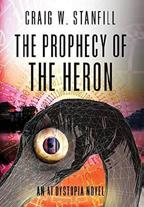
An AI Dystopia Novel
Stanfill, Craig W. (402 pp.)
$35.95 | $18.99 paper | $4.95 e-book
Nov. 19, 2022
9781638778370
9781638778387 paper
An ex–office worker, banished to a treacherous apartment district, fights to survive thugs and a rogue artificial intelligence in this SF sequel.
Kim once worked at the Artificial Intelligence Company in an AI–run dystopian city. But after drones caught her making love to a woman named Shan, she was branded a criminal in a future world that rejects any kind of individuality. The punishment was exile in one of the crime-ridden outer districts. Her new apartment and assigned manual-labor job aren’t great, and Kim has never before lived without constant AI assistance or a bot brewing her coffee. She isn’t in District 33 for long before danger tracks her down: A couple of hooligans accost her and continually threaten her in later run-ins. They seem to know too much about her, which makes Kim suspect that someone— or something—is pointing them in her direction. The telltale buzzing sound of a drone overhead indicates it’s likely Kimberly, the AI that Kim created for her old company and that’s since turned against her. Luckily, Kim makes some new friends and scores a side gig as a “pedicabbie,” at which the skilled bicyclist excels. Things take a significant turn when she agrees to a pickup in the elite District 2 and a drop-off somewhere on “the outside”—the ungoverned land just beyond reinforced concrete walls. This ultimately precipitates Kim’s deep dive into virtual reality, which she frequented in her old life. There, she may find a way to fix Kimberly and take a stance against her former employer and the authoritarian Hierarchy.
Stanfill delivers a faster-paced follow-up to series opener Terms of Service (2021)—one in which Kim’s fight briskly moves back and forth between real life and VR. The protagonist also faces more urgent predicaments than she did in the first novel. She’s determined to find Shan, who’s now hiding as a “Blank,” having successfully ditched her ID chip with Kim’s assistance. Moreover, the perpetually hostile thugs keep popping up, and some in Kim’s group of allies think that she may be a traitor. Despite Kim’s reliance on AIs, she manages to roll with life’s
punches and adjust to her new circumstances with relative ease. She doesn’t want to kill anyone, but she won’t hesitate to flash her switchblade to ward off a threat. Meanwhile, a fascinating cast surrounds her. Their local language, Panglobal, doesn’t recognize gender, so this “translated” narrative uses only she/her/ hers for all characters. Stanfill, as in his earlier book, animates the pages with lucid details, as when Kim visits a nightclub (in the real world): “Spins, lunges, leaps, surges, all the usual moves but stronger, more intense, more vital. She danced as if all the devils of Hell were nipping at her heels. She had nothing left to lose, no future, no past, only the present.” Scenes in VR, however, are equally vibrant all the way until the tale’s ending, which offers surprising resolution.
A smashing, energetic installment in this futuristic series that keeps getting better.
Stevenson, Deborah
Illus. by Stella Mongodi
Ethicool Books (32 pp.)
$18.24 | Oct. 11, 2022
9780648872399
Stevenson’s lushly illustrated children’s book tells the constellations’ stories.
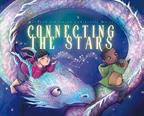
In short, catchy rhyming couplets, Stevenson shares the tales of the constellations based on Greek myths of gods, heroes, and monsters—like that of Corvus, named after Apollo’s punishment of the crow of bad tidings; Pavo conjures Hera’s peacock with spying eyes littered throughout its feathers; and Hydra evokes the myth of Heracles’ slaying of the sea serpent—as well as other triumphs and tragedies written in the stars. (“Not only did this horse have wings, / but he created magic springs!”) Mongodi’s illustrations bring these stories to life in a cool palette of mostly blues, violets, and greens, a perfect contrast to the book’s use of bright yellows and soft whites to draw out the stars. This is not to say the book is overly dark. Jupiter and the little fox Vulpecula are rendered in bright orange, and the Phoenixes fly in a fiery and bright-pink glow, never obscuring their celestial patterns. Maps of the actual constellations are laid over the figures they represent, so readers might recognize them in the night sky if they know where to look. Each constellation contains a compass within the illustration with a “hidden” direction that indicates the constellation’s hemisphere and gives kids another way to engage with the work. The children stargazing are depicted diversely, each of a different race or culture. The entries balance astronomy and poetic storytelling, from the unrivaled size of the Hydra (“the largest in the sky”) to the existence of the Phoenix in Egyptian legend as well. Kids who like magical creatures and monsters will find a few here, though parents worried about frightening or inappropriate imagery given the nature of Greek mythology have nothing to fear. Cerebus is depicted as a threeheaded purple puppy, while the reasons for Hera’s jealousy concerning Zeus are kept child friendly.
Vibrant illustrations and simple poetry converge into a great introduction to mythology and astronomy.
“A smashing, energetic installment in this futuristic series that keeps getting better.”
the prophecy of the heron
Stoltz, Susan R. & Melissa Bailey
Illus. by Melissa Bailey
Pygmy Giraffe Publishing (32 pp.)
March 15, 2022
9798985195347
In this illustrated children’s book, a young girl wants to study a giraffe but the animal has other ideas.
Naomi is a curious 8-year-old Black girl with a scientific mind who sets out to learn about giraffes. But what she doesn’t expect is that her chosen subject, Imara, will be just as inquisitive about her. As she takes notes in her blue zoology notebook with her fluffy pink pen, Naomi tries to make worthwhile observations even though she can’t find Imara. She doesn’t know that Imara is actually right behind her the entire time. Parallel to Naomi’s purple-tinted narration are Imara’s own orange-hued thoughts. But the giraffe doesn’t have science on her mind: She’s focused solely on the blue-and-pink heart-shaped tiara Naomi wears, a gift from her grandmother. Imara waits until the perfect moment to snatch it, only to fail and to finally meet Naomi face to face. Naomi then goes home to try to figure out what Imara wants from her.
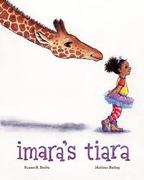
This Issue’s Contributors #
ADULT
Colleen Abel • Stephanie Anderson • Mark Athitakis • Diego Báez • Colette Bancroft • Amy
Boaz • Jeffrey Burke • Catherine Cardno • Tobias Carroll • K.W. Colyard • Coeur de Lion • Dave
DeChristopher • Amanda Diehl • Melanie Dragger • Lisa Elliott • Lily Emerick • Chelsea Ennen
Rosalind Faires • Jenna Friebel • Glenn Gamboa • Geoff Hamilton • Bridey Heing • Katrina Niidas
Holm • Natalia Holtzman • Matt Jakubowski • Jessica Jernigan • Carly Lane • Brandi Larsen • Tom
Lavoie • Judith Leitch • Angela Leroux-Lindsey • Georgia Lowe • Zoe McLaughlin • Don McLeese
Gregory McNamee • Carrigan Miller • Karen Montgomery Moore
• Sarah Morgan • Jennifer Nabers
Christopher Navratil • Liza Nelson • Mike Newirth • Therese Purcell Nielsen • Connie Ogle • Mike
Oppenheim • Derek Parker • Ashley Patrick • Elizabeth Paulson • Jim Piechota • Margaret Quamme
Carolyn Quimby • Stephanie Reents • Lloyd Sachs • Bob Sanchez
• Gene Seymour • Leah Silvieus
Linda Simon • Wendy Smith • Margot E. Spangenberg • Mathangi Subramanian • Francesca Vultaggio
Mark Wadley • Grace L. Williams • Kerry Winfrey • Marion Winik •
CHILDREN’S & TEEN
Nada Abdelrahim • Sandie Angulo Chen • Jenny Arch • Elizabeth Bird • Ariel Birdoff • Christopher
A. Biss-Brown • Jessica Brown • Abby Bussen
Tamar Cimenian
• Jeannie Coutant
• Timothy Capehart
• Dave DeChristopher
This charming, lively book models for readers the process of making scientific observations and collecting facts. It tells its story quickly and could use fleshing out. Still, the work is able to convey a substantial amount of giraffe-related trivia, both in the text and in the aftermatter depicting Naomi’s notebook. Stoltz and Bailey’s text dances around the illustrations playfully, as when they bend around Imara’s ear, and the sound effects of her chewing appear by her mouth on a page. Bailey’s pictures are simple but expressive, just like the tale itself. Their warm earth tones set readers in a friendly and natural environment, while the colors in Naomi’s outfit bring sparkle to the setting. This story may appeal to preschool fans of television shows such as The Wild Kratts and books like A Sick Day for Amos McGee (2010) by Philip Stead.
A cute zoological tale that’s perfect for preschoolers.

The Wild Rose Press (292 pp.)
$4.99 e-book | Feb. 20, 2023
In this middle-grade sequel, a teenager must follow her stepbrother through a space-time portal and rescue him from an alien world.
• Ann Childs
• Elise DeGuiseppi
Brooke Faulkner • Eiyana Favers • Amy Seto Forrester • Ayn Reyes Frazee
Gardner • Maura Gaven
• Carol Goldman
• Melinda Greenblatt
Vicky Gudelot • Tobi Haberstroh • Abigail Hsu
Danielle Jones
• Betsy Judkins
Lambert • Patricia Lothrop
Malewitz • Gabriela Martins
• Amanda Chuong
• Heidi Estrada
• Jenna Friebel • Laurel
• Ana Grilo
• Julie Hubble
• Deborah Kaplan
• Wendy Lukehart
• Christine Gross-Loh
• Kathleen T. Isaacs
• Akifa Khan
• Kyle Lukoff
• J. Alejandro Mazariegos
McDermott • Sierra McKenzie
J. Elizabeth Mills
Perez
Riel
• Stephanie Klose
• Leanne Ly
• Kirby McCurtis
• Kathie Meizner
• Lisa Moore • Mya Nunnally
• John Edward Peters
• Amy Robinson
Soltan • Allie Stevens
Jenna Varden
Alana Abbott
Jacob Edwards
Hall
• Kristy Raffensberger
• Hadeal Salamah
• Jennifer Sweeney
• Christina Vortia
• Paul Allen
• Darlene Ivy
• Megan Dowd
• Kaia MacLeod
• Breanna McDaniel
• Mary Margaret Mercado
• Katrina Nye
• Julia Reffner
• Meredith Schorr
• Hal Patnott
• Joan
• Jeanne
• Susan Messina
• Deb Paulson
• Nancy Thalia Reynolds
• E.F. Schraeder
• Deborah D. Taylor
• Yung Hsin
• Kent Armstrong
• Gina Elbert
• Lynne Heffley
Malone
• Alea
• Jasmine
• Laura Simeon
• Wendy Thomas
• Angela Wiley
• Charles Cassady
• Joshua Farrington
• Justin Hickey
• Randall Nichols
• Jean Gazis
• Ivan Kenneally
• Rita
• Bijal Vachharajani
• S.D. Winston
• Michael Deagler
• Tina Gianoulis
• Donald Liebenson
• Bean Yogi
• Steve Donoghue
• Ana Grilo
• Barbara London
• Dakota
• Mandy
• Judy Quinn
• Diya Radhakrishna
• Jerome Shea
• Sharon Strock
• Matt Rauscher
• Alana West
• Erica Rivera
• Hal Schrieve
As the result of her previous escapade, 14-year-old Winnie Harris owns a Framascope—a telescopelike device that allows her to locate and widen existing tears in the space-time fabric. When her 6-year-old stepbrother, Mikey, vanishes through a tear, Winnie and 15-year-old Kip Skyler (her annoying magician friend and maybe crush) jump through after him. They find themselves on Hutra, a planet where portals arise periodically but seem to accommodate only oneway travel. Mikey is nowhere to be seen. Instead, Winnie and Kip encounter Nor, a 15-year-old noble, who is searching for a 6-year-old portal castaway (his friend’s brother Kinny). Nor and Kinny come from the Reserve, a walled-off, tightly policed area of Hutra. Nor is an “animal communicator,” which means he can enter animals’ thoughts, speak with them, “and become part of their inner worlds.” Nor is talented, but his scruples put him at odds with the Portal Authority, a powerful agency charged with investigating the portals—and probing any being unfortunate enough to come through. Mikey and Kinny, it transpires, have changed places. Winnie, Kip, and Nor team up, but can they evade the Portal Authority and restore both boys to their homes? Supplee employs an omniscient, past-tense narrative, mostly from Winnie’s or Nor’s points of view. The easily digestible prose moves at an effective pace, lingering overtly on character moments but never to the adventure’s detriment. Winnie and Kip come to the story fresh from their Frama-12 (2022) exploits and aren’t afforded much development beyond their bickering relationship that sometimes seems at odds with their predicament. But Nor starts with a fresh slate and shines as a protagonist—privileged but principled, rebellious but deeply affectionate. His Uncle Trey provides likable support
without undermining the teens’ independence. Supplee shows a deft hand at worldbuilding, and Hutra’s intriguing mix of SF and fantasy elements suggests a setting that could sustain additional stories beyond Winnie and Kip’s involvement. Indeed, Nor’s coming-of-age and associated troubles seem more likely to stoke readers’ interest than Winnie and Kip’s straightforward rescue mission. That said, the combined storylines work well together and will keep young readers engrossed to the end.
A safe but sophisticated teen quest fantasy brimming with magical ideas.
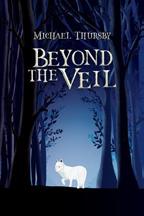
Thursby, Michael Self (240 pp.)
$2.99 e-book | March 14, 2023
A fantasy adventure debut aimed at young readers about a 15-year-old boy who discovers that he’s much more than just his school’s loner “freak.”
Cael Collins’ life isn’t like that of most teenagers. Instead of having free time to hang with friends, Cael has to take care of his three younger brothers, mainly because his foster mother, Ida, isn’t responsible enough to care for children, let alone herself. But other aspects differentiate him from kids his age: For some inexplicable reason, he can see in the dark, run incredibly fast, and has almost supernatural healing abilities. When monstrous black dogs destroy his home, Cael is saved when a mysterious woman pulls him through a magical rift into another dimension. Cael soon realizes that he is the only person who can protect the Veil, a magical barrier that has enabled the Fae to conceal themselves from humans for thousands of years. If the deteriorating Veil falls, countless lives on both sides will be lost. With an emotionally fragile boy named Brendon as his guide on a seemingly impossible quest, the two set out to save both Fae and human realms. The novel’s fantasy world is wholly believable; creatures from many mythologies are featured—barghests, gnomes, dryads, kelpies, sprites, selkies, etc. And the author keeps his foot on the narrative gas, as the action and adventure are relentless throughout. A line from the novel describes this story fittingly: “It’s not the destination that matters in life; it’s the journey.” But while young reader themes are explored with compassion and insight—including finding one’s place in the world, how to handle bullying, and the power of family—Brendon and his melodramatic outbursts get old quickly. That minor criticism notwithstanding, young readers should enjoy the first installment of this action-packed series, particularly the ending’s bombshell plot revelations.
A rollicking beginning to what will no doubt be an entertaining YA saga.

Turner, Susan C.
Harry Douglas Press (282 pp.)
$16.99 paper | $9.99 e-book | Oct. 5, 2022 9780984723256
An American woman in London after World War II unravels the suspicious circumstances of her husband’s death in this novel.
Texas native Eve Battersby has been wed three times, but her last marriage lasted just a short while. Otis Battersby, the owner of a successful clothing company on London’s Savile Row, collapsed and died at his athletic club from sudden cardiac arrest at the age of 42. Eve stands to inherit a fortune from his death but is puzzled by the unexpected event. She begins to notice that inconsequential items are disappearing from her home, and she thinks she’s being followed. She also finds some curious things that seemingly belonged to Otis: Spanish passports, Swiss bonds, and portrait photographs. Needing to get away from the perceived threat, Eve fills her coat with cash, packs a suitcase, and boards a train to Edinburgh, Scotland. In her compartment, she meets Harry Douglas, a dashing Canadian who used to work in wartime British intelligence but is now a gambler. Eve likes what she sees in Harry (“Tall, lean, eyes as blue as a Texas sky, and remarkably warm hands”). In Edinburgh, Eve learns more about Otis’ true self and realizes the city isn’t the safe haven she had hoped for. As sordid tales from the past emerge, Harry and Eve face mounting threats to their safety as they search for the truth. Turner’s sleek postwar mystery is fast-moving and highly polished, but it does not skimp on historical details. Real historical figures are convincingly woven into the plot as Eve and Harry dig up some of the shadier stories from the period when Nazis were absconding to Spain and Argentina. The suspense runs high in this novel, which has a strong cast, an unrelenting energy, and a consistent devotion to the truth. Some points are repeated, and there isn’t much here about Eve’s background, but there is a promised sequel.
A highly stylized, quick-witted mystery with attractive characters and an effective postwar plot.
HOP LOLA HOP
Urban, Kathy
Illus.by
Siski KallaLittle Steps/Trafalgar (30 pp.)
$11.85 paper | $3.25 e-book | June 1, 2022
9781912678587
Debut author Urban presents an illustrated children’s tale about a lost toy, the emotions that come with separation, and solving problems.
A young girl named Ella, like many other kids, has an especially beloved toy: a stuffed bunny named Lola. The animal, in the child’s imagination, hops around, plays with her, and can

“Turner’s sleek postwar mystery is fast-moving and highly polished, but it does not skimp on historical details.” the truth about otis battersby
talk. While on an outing with Ella’s mom—apparently somewhere in England—Lola hops out of the stroller in which Ella is riding and decides to go on an adventure of her own. As a result, Ella and Lola become separated. The little girl looks for Lola for hours, and right before giving up, she enters a park with a pond in which Lola is swimming. She spies her friend, and they finally reunite. Ella gives Lola a bath to clean her up, and the two best friends discuss the adventures they each had over the course of the day and reaffirm how much they mean to each other. Over the course of Urban’s story, the author presents a relatable situation that many children will recognize from their own lives; young readers may very well use this book to help them feel better about losing their own toys. Kalla’s painterly, multimedia full-color illustrations are beautifully executed and fit perfectly with the tone and feeling of the story. The narrative itself is consistently engaging, clearly following the main character’s adventures without being overly long or complex. This book is clearly intended for very young children and is a fine pick for caregivers looking for a meaningful, visually compelling work that may help youngsters deal with a difficult situation.
A sweet, charming story that could have practical applications.
Vogdt, Anne
Illus. by Joana Paz
Self (100 pp.)
$7.99 paper | Dec. 21, 2021
978-9895344901
An extrovert takes her homebody sister on a jampacked tour of the outside world in this illustrated children’s chapter book.
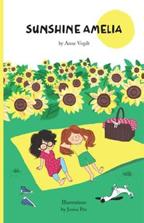
Polar opposites Sophie and Amelia live in “a giant treehouse near the woods,” apparently without adult supervision. Sophie stays almost completely indoors at all times, perusing books on an e-reader and “studying to become the perfect grown up.” Amelia likes to explore, dance, and make friends alongside her large-nosed dog, Columbus. On Amelia’s birthday, she asks Sophie to accompany her on an escapade, and her sister reluctantly agrees. They dance without music in a sunflower patch, climb a mountain, visit New York City, take a helicopter to an island, and are picked up by a friendly ex-pirate. Along the way, Amelia consistently pleads with Sophie to give each new activity a chance. Sophie grumblingly obliges while fretting all the while about inefficiency, the violation of social norms, and her transformation into a frivolous girl unprepared for adulthood. The sisters’ unrealistically packed day is stuffed with parables for lackluster children and feels a little preachy— can kids be made to embrace whimsy? But Vogdt’s celebration of rambunctiousness and curiosity is a nice counterweight to the pressures on youngsters to succeed only in quantitative terms. The most touching moment comes when Amelia tells Sophie to scream into the empty island air: “Just don’t tell me you never feel angry,” she says when her sister hesitates. Paz’s black-andwhite illustrations pepper the text, enlivening the narrative with detailed pictures of Sophie’s increasing relaxation. Amelia has a slight Pippi Longstocking–ish charm, though her antics never veer into the mischievous or absurd. A dusting of intriguing magical happenings toward the end of the story adds a little verve and mystique. Both girls are White. A Black Lives Matter sign appears in Times Square behind them and they pass a climate justice protest, though the subject matter of both political images is not discussed in the text.
A frolicking adventure light on plot but delightfully interested in the importance of play.
RELUCTANT WARRIORS
Gwen Mansfield
A strong series finale that celebrates the growth of both indi- viduals and societies.

BRAHMA’S WEAPON
Ashapurna Debi
Trans. by Prasenjit Gupta
A beautifulhypnoticallycollection of stories by a literary master.
STEALING GOD AND OTHER STORIES

Bruce McAllister
The author’s fantastically dark imagi- nation makes this unnerving collection difficult to put down.


Kendra Preston Leonard
A clever, illuminating feminist take on Greek mythology.
BEGINNING OF ARROGANCE

Bryan Cole
This outstanding series opener feels like the beginning of an epic Dungeons & Dragons campaign.
ABUELA’S FIDEO
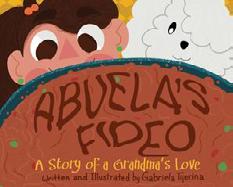
Gabriela Tijerina
A tender tale of love and food triumphing over loss.

Adam Silvera’s They Both Die at the End is headed to the small screen, with rapper Bad Bunny lending a hand, Deadline reports.
Silvera’s young adult novel, published by HarperTeen in 2017, tells the story of Mateo and Rufus, two teenagers who meet and fall in love after learning from a company called Death-Cast that they will die at the end of the day. In a starred review, a critic for Kirkus called the book “engrossing, contemplative, and as heart-wrenching as the title promises.”
The novel was a phenomenon on TikTok and a bestseller; Silvera released a prequel, The First To Die at the End, last October.
Netflix is developing the adaptation, which will kick off with a pilot written by Chris Van Dusen, the creator of the show Bridgerton Bad Bunny, known for his singles “Mia” and “Moscow Mule,” will serve as an executive producer of the series alongside Van Dusen and Silvera.
Lucky Hank, the television series based on Richard Russo’s 1997 novel, Straight Man, will premiere in March, Deadline reports.
The show, which stars Mr. Show and Better Call Saul star Bob Odenkirk, will air its first episode on March 19 on the network AMC and its streaming service, AMC+.
The novel and series follow author and professor William Henry Hank Devereaux Jr., played by Odenkirk, whose life is thrown into disarray by a series of disappointing developments. A critic for Kirkus gave the novel a starred review, writing that the main character’s voice is “the perfect vehicle for another of Russo’s irresistible revelations of the agreeable craziness of everyday life.”
According to IMDb, other cast members include Mireille Enos (World War Z), Hayley Sales (Deadpool 2), Olivia Scott Welch (Fear Street), Chris Gethard (Broad City), and Jackson Kelly (Portrait of a Young Man). Deadline reports that Oscar Nunez (The Office) and Kyle MacLachlan (Twin Peaks) will guest-star.
Peter Farrelly (Green Book) is directing, with Paul Lieberstein and Aaron Zelman writing. Farrelly, Odenkirk, and Russo are among the show’s executive producers.
AMC dropped a short trailer for the series. It’s a long shot of a bearded, stern-looking Odenkirk, with the actor saying in a voice-over, “I’ve always been a difficult man. I specialize in minor strife and insignificant irritation. That’s my lane.”
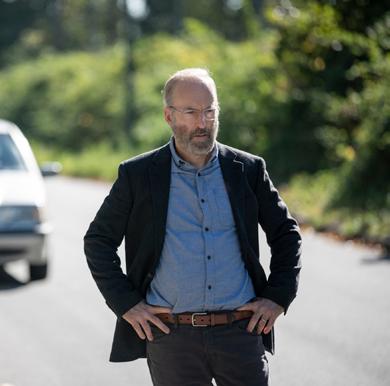
Called a “beautifully wrought work” by Kirkus, Javier Zamora’s memoir, Solito (Random House Audio, 17 hours and 8 minutes), follows his harrowing journey as a timid 9-year-old from El Salvador through Guatemala and Mexico to a new life in the United States, where his parents had already immigrated. The trip—by bus, by boat, and on foot through the deadly Sonoran Desert—is undertaken via a coyote known to his family, but when the man disappears, Javier is left to travel with strangers.

Zamora, a poet, narrates his audiobook, and his deliberately slow, careful reading echoes the uncertainty of the child he once was. It’s almost as though the adult Zamora is setting out on this journey all over again—and in a way, he is. He uses Spanish throughout the book, and much of what he says is repetitive, serving to remind the reader that this journey isn’t only frightening, but often dull, especially for a child too young to fathom the worst that could happen.
Zamora reflects his younger self’s shifting emotions, from embarrassment to wonder, as his travels become more dangerous. This is a book written and read by someone who understands the peril and beauty in relying on the kindness of strangers.
Jennette McCurdy’s provocatively titled memoir exists in a different world, but she too narrates a rocky journey with candor and heart. In I’m Glad My Mom Died (Simon & Schuster Audio, 6 hours and 26 minutes), the star of Nickelodeon’s iCarly examines her swift rise to childstar fame and her troubled relationship with her domineering mother, Debra, who pushed her daughter into acting, manipulated her emotions, and drove her to eating disorders, addictions, and toxic relationships.
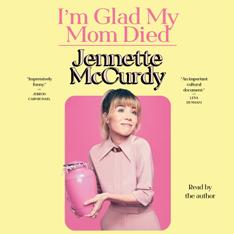
McCurdy keeps her stories short: Her family belongs to the Church of Jesus Christ of Latter-day Saints but is not particularly devout; money problems pile up; and everyone must bend to the whims of Debra McCurdy, even if it means Jennette must shower with her mother until she’s 16.
Kirkus calls the memoir “heartbreaking,” and in many ways it is, but McCurdy displays a surprising dark sense of humor in both the writing and reading of this book, a sign that her healing has begun.
You might think hearing Elizabeth McCracken read her latest book would help clarify its provenance. Is The Hero of This Book (HarperAudio, 4 hours and 33 minutes) truly a novel? Or is it more of a memoir?

The story, in which an unnamed writer wanders through London remembering her recently deceased mother, feels autobiographical, but McCracken is quick to assure us she loathes memoirs and wouldn’t write one. (She’s toying with us here; she once wrote a memoir, and it was wonderful). Her voice work is more complex than you may realize on first listen, her narration taking on a wry, almost neutral tone that belies the frustration, guilt, love, and admiration this character has for her mercurial mother. She’s able to draw us close with a shattering intimacy, then push us back to arm’s length with a dry aside, reminding us that this is fiction.
However you choose to define this book, listening to it is a bracing experience. In the words of the Kirkus reviewer, it’s an “homage to the art of great storytelling.”
Insights against a Backdrop of the Conflicts of the Late Twentieth and Early Twenty-First Centuries


Nancy C. Russell
Offering a unique way of viewing life, this personal narrative shares unexpected insights from youthful and adult loves, addictions, and adventures.
$17.99 paperback
978-1-6657-1799-1
also available in ebook & audiobook www.archwaypublishing.com
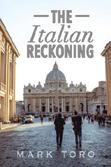
Mark Toro
Join professional photographer and designer Mark Toro as he chronicles his first trip to Italy, where he found an unexpected treasure beyond the prized photographs he made.
$13.99 paperback
978-1-6655-5783-2
also available in hardcover & ebook www.authorhouse.com
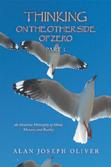
Amour Toujours

Diane Coia-Ramsay
In this exciting conclusion of the Loving Leopold trilogy, the summer of 1904 brings turbulence and unexpected intrigue to Leopold and Amalie.
$18.99 paperback
978-1-6657-2272-8
also available in hardcover & ebook www.archwaypublishing.com
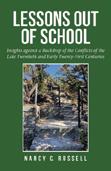

Fiction
Mzuvukile Maqetuka
A man classified ‘colored’ according to apartheid race classification laws, although erased from statutes in the new post-1994 democratic dispensation in South Africa, sets himself a journey of recovering his roots.
$23.44 paperback
978-1-5437-6719-3
also available in hardcover & ebook www.partridgepublishing.com/Singapore
An Intuitive Philosophy of Mind, Memory and Reality

Alan Joseph Oliver
How does science measure a mind?
Author Alan Joseph Oliver presents an alternative view of mind and memory, and of consciousness itself.
$10.96 paperback
978-1-6698-8803-1
also available in hardcover & ebook www.xlibris.com.au
Glacier Highway
Donna V Batt
Fate brings a military veteran and Homeland Security Agent together to take down a human trafficking ring and potentially find a happilyever-after in the process.

$14.99 paperback
978-1-4897-3983-4
also available in hardcover & ebook www.liferichpublishing.com
When the Impossible Happens
Stephen Bennett
This is a true story based on the 20-year journey of Stephen and Somjeen Bennett. A memoir turned into a story form, it is about hope amidst darkness.
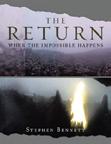
$20.44 paperback
978-1-6698-8716-4
also available in hardcover & ebook www.xlibris.com.au

Angus McColl
There is an easy and proven way to really impress your family — prepare simple and delicious old-time desserts by hand. This collection of desert recipes will teach you how!
$24.99 paperback
978-1-6698-8785-0
also available in hardcover & ebook www.xlibris.com.au